August, September (and October's) Book Club Review of "The Spirit of Trees: Science, Symbiosis and Inspiration"
This post offers a review of The Spirit of Trees: Science, Symbiosis and Inspiration
I give this book a 9.5 out of 10.
The only real point of contention I have with the content in the book is related to the ideas presented within it’s pages relating to the ‘purity’ of the “wildwood” (forests portrayed to be “pure” and beautiful due to their being untouched by human hands).
I have a suspicion that the author’s views on how the verdant abundance, diversity, healing and dense old growth forests of Turtle Island (and other places) were the result of the lack of human presence would be different (and may in fact be different today) if he had (or has) read books like 1491, The Dark Emu, The Dawn of Everything, The Largest Estate On Earth, Tending the Wild and dissertations such as Lyla June’s Architects of Abundance: Indigenous Regenerative Food and Land Management Systems and the Excavation of Hidden History that the perspectives regarding the “purity” of forest untouched by humans hands might change (or may have changed) since the publication of “The Spirit of Trees”.
In truth, modern botanical, geological, archeological and anthropological studies have confirmed that much of the most dense, abundant, biodiverse, water cycle enriching and mesmerizingly beautiful and restorative forests here on Turtle Island (aka “North America”) and in “South America” are in fact Anthropogenic forests (manmade food forests created via the intentional shaping of the landscape over centuries of careful work on the part of an array of horticulturally advanced indigenous peoples).
That being said, all books that are 20 years old are gonna have at least one or two things that are out of date (heck, I can already see several things in my own book that I will have to revise in my second edition due to new discoveries being made in the field of soil science, and I only began writing it about 6 years ago).
The Spirit of Trees is a great book, and regardless of what may or may not be my own differences of opinion with the author with regards to the true nature of what he describes as the “wildwood” he also educated me on several topics ranging from the connection between trees to the magnetosphere of the Earth, to the various “Sacred Groves” that existed in many pre Christian societies as well as the meaning and uses of specific trees in the context of the Gaels and others.
Now let us dive into the pages I found most compelling and noteworthy and see if we can back engineer some actionable solutions as well as inspiration for the heart and mind from the many insights and fascinating facts that are explored in this book.
Info on the Author:
Table Of Contents:
I can relate to this experience he describes as when I was young I often felt more at peace and welcomed in the midst of the ancient rooted beings (Cedars and Douglas Firs in the forests where my parents worked as Park Rangers in the pacific northwest) than I did around other kids. As I grew up and the hollow hyperstimulation and digital addictions of video games and internet junk food for the brain began to take over my the kids lives around me, I found solace disappearing into the woods, ancient canyons and desert hills for entire days (sometimes multiple days) and began to develop a direct relationship with the Creator of all things through my time sitting in stillness listening to the flowing waters of babbling brooks, rivers and waterfalls, the sigh of the ancient trees swaying together and the whisper of the tall grass on the wind.
Learning to directly perceive the sentience, spirit and unique personality of non-human beings in their native habitat (far beyond the sounds of frantic highways and light pollution) through both the day and the night helped me to begin to nurture the innate knowing of the animate worldview within me (that each of us was born with and that is sometimes covered up with conditioning over the years) to unfold and become a guiding compass in my life.
I am grateful to God for those opportunities to come to know the beauty and wisdom that is embodied and expressed by our fellow beings in the more than human world and also to my human parents for facilitating my spending so much time within intact climax forest ecosystems when I was young so I could build that connection. I am also grateful to Fred Hageneder for offering gateways and invitations for others to embark upon a similar path of remembering, un-learning and forging a reverent relationship with our rooted kin through his books.
Here we begin with the description of the wildwood (highlighted in blue) and considering that we now know that much of the Amazon Jungle was in fact created via the Regenerative Agroforestry techniques of indigenous peoples, I do not think it is so black and white when it comes to forests that are “untouched” being the most successful. Surely, forests that grow to their climax status without human interaction are places of beauty, abundance, spiritual healing and wonder, but apparently so to are some forests that were shaped by human symbiotic interactions, interventions and reverent co-creating of ancient Food Forest Ecosystems.
Rudolf Steiner is an interesting man and I am glad he shares some of his views in the book.
I really appreciate how Fred Hageneder highlights the highly influential role of trees (as part of a mature ecosystem) on the weather, climate and water cycle. That fact cannot be over-emphasized in a time when we have puppet statist regimes pushing nonsense carbon-centric anthropogenic “climate change” propaganda. The extreme impact of deforestation on our local climates and water cycles is something that must be discussed more and addressed if we want to leave this world a little more peaceful, stable and abundant for those that call those place home after we are gone.
I share in the author’s dismay at how place based traditions and customs that centered around having reference for and nourishing reciprocal relationships with trees have now been replaced with digital distractions and addictions. I also share in his hope and acknowledgement that the potential still exists for each of us to breath new life into ancient traditions of that nature and to also create our own entirely new place based traditions that invite and inspire our fellow humans to relate to trees and nature in a way that increases the health and resilience of the beings in both the human and more than human world. I touched on some of my thoughts on this in my article on Birch trees and also explored some ideas that pertain to the endeavor of honoring ancient (and creating new) place based regenerative traditions in this essay on embarking on a journey towards an ethnoecologically rooted regeneratively guided Ethnogenesis.
I appreciate how the he highlights that forest ecosystems moderate temperature extremes, this is one more reason that people should be planting food forests all over the place (and especially in arid regions).
I share the author’s views on Darwin’s evolutionary theory (or at least what they teach and portray his theory to be in universities) and I will go a step further by saying Capitalism is an unnatural human concept (that is based on an inaccurate and outdated view of life and evolutionary processes). It is a model based on the inaccurate view that in nature competitiveness, 'survival of the fittest' and adversarial relationships are the norm. Modern science and ecological studies have shown us (that when we take a closer look) symbiosis, interdependence, and cooperation are in fact the norms when it comes to relationships between various organisms in nature.
Evolution derived from such symbiosis is known as symbiogenesis. Microbiologists Sorin Sonea and Léo G. Mathieu elaborate on the concept: “Symbiogenesis with thousands of different bacterial genes has decisively enriched the limited metabolic potential of eukaryotic organisms, accelerating and facilitating their adaptation much more than would have been achieved by random mutation alone.” The same co-evolution can be observed with studies of flowers and honey bees.
Capitalism (and its ugly offspring "consumerism") are systems of thought that do not align with natural law. They amount to ways of perceiving and interacting with the world that result in parasitic and not symbiotic relationships with each other (as humans) and with the rest of nature as a whole. At the foundation of capitalism in today's world is Fiat Currency (a monetary system that perpetuates debt and forever expands the gap between the 'haves' and the 'have nots'.)
Under our current model of fiat currency ("money" created by private central banks.. equaling endless debt, which is passed on from governments that borrow onto tax paying citizens using the threat of violence to extract it from them) is used for the 'propping up' of our top heavy and hollow economy. This results in human behavior that is highly toxic, psychotic and detrimental to the environment and human well being. This is a debt slavery system that promotes extreme poverty, endless war and a parasitic relationship with the ecosystems that we depend on to survive. This system is not sustainable, and is in fact, degenerative.
Thus, if we wish for our modern civilization to continue (and seek to leave a world worth living in for our children) we must abandon ideologies and belief systems (such as capitalism) that teach people that the acquisition of material wealth, competition rather than cooperation, and the endless commodification of aspects of nature is what we should strive for as individuals, organizations and nation-states. It is impossible to cling to unnatural concepts like capitalism while simultaneously claiming to care about the future of our children, the integrity of the ecosystems and while claiming to want to help create a regenerative and equitable society in the here and now.
I propose that investing our time and energy in humanocentric systems of thought (whether they be theologically, 'Darwinsitically', 'capitalistically' or otherwise defined) is a path of stagnation which comforts our ego but does not honor the truth of what we have learned about nature in the past century, nor does it serve to unlock our true potential as human beings. Through embracing humility and reverence, rather than self importance and anthropocentrism, and through re-awakening and nurturing place based wisdom and reciprocal connections, rather than swearing fealty to transnational corporations and subservient statist racketeering regimes (through remaining passive consumers in a parasitic and exploitative economy) we can instead lend our sentience and free will towards a meaningful path of symbiogenisis between humanity and the many other beings who call this living planet home. I feel this new path (defined by humility and symbiosis) can serve to align us with a way of living that nourishes the living world that sustains us and encourages the unfolding of ever higher expressions of human potential in the process.
We can do this through planting trees, learning from trees (both ancient and young) and choosing to see these beings as learned elders and valued neighbors rather than “resources” waiting to be extracted for profit.
For more information on the beneficial and regenerative roles of fire in nature (and when used as a tool in moderation and with intention by humans) check out this Radio Segment I did and read the shownotes in the article below :
The Mounsey Minute (episode 6) BBQ-ing with a Permaculture Twist
This is a video slideshow with last month's Media Monarchy broadcast that featured BBQ-ing with a Permaculture Twist as the Mounsey Minute topic for June.
Here the author highlights the impact of clearcut logging on the hydrological cycle (an important factor in the equation that is often overlooked by “climate change activists” that always scream about CO-2 levels but fail to account for how important the life giving essence that is water plays into the equations that moderate and influence local and global climate cycles.
For more info on clearcut logging and it’s broader cultural, ecological and psychological impacts here is an article I wrote about a sacred ancient forest in the Fairy Creek watershed on Vancouver island and the forest defenders that stand to defend her (to this very day):
Death By A Thousand Clearcuts
“Those who contemplate the beauty of the earth find reserves of strength that will endure as long as life lasts. There is something infinitely healing in the repeated refrains of nature — the assurance that dawn comes after nig…
That is an interesting fact I had not considered until I read this regarding how strongly the temperature of water influences microbial communities and I love how he said “running streams always try to shade themselves”. Speaking about the sacred waters as though the water is a sentient being with agency and intent aligns with what I have observed of water in natural settings in my lifetime.
Here we have some extremely important information regarding how water takes on different traits and “holds a memory” (vibrationally and atomically) which speaks to how powerful prayers to the water can be and how powerful out thoughts, words and emotions are in influencing our own bodies (made of mostly water), plants (also made of mostly water) and everything from the clouds to the rivers and lakes.
For more info on the memory of water:
For more info about different states of water which hold potential for integrating strategies in regenerative designs, watch :
Understanding this connection of the trees to a stable water cycle is so important, and when you consider how the flow of nutrients from decomposing leaves in rivers actually fertilizes the ocean life (such as phytoplankton) which feed other beings which feed salmon, the salmon then spawn up the rivers, are eaten by bears and eagles and the ocean gives back minerals to those same ancient trees in the form of calcium and phosphorous in the salmon bones.
One study concludes that trees on the banks of salmon-stocked rivers grow more than three times faster than their counterparts along salmon-free rivers and, growing side by side with salmon, Sitka spruce take 86 years, rather the usual 300 years, to reach 50 cm thick.
Fish and rivers play a vital role in nutrient distribution. Tree growth can be almost completely dependent on fish, especially in areas where soil nutrition is low. Young salmon swim out to the ocean where they spend their adult life growing and getting bigger. Salmon build muscle swimming around in the vast ocean avoiding predators and finding food. They store enough fat needed to survive their journey back to the stream they were born in. Salmon carry considerable quantities of nitrogen and phosphor.
During the salmon run, hungry hunters line the streams. When salmon are abundant, bears will selectively eat the fattiest parts of the salmon and leave behind the rest of the carcass. The discarded carcasses give opportunities to other wildlife, such as wolves, fox, birds of prey, and various insects. Wildlife help spread the salmon carcasses further into the forest, and the leftovers help fertilize the soil. Nitrogen is also spread through feces expelled from wildlife. Over 70% of nitrogen along streams comes from the ocean, which is transported by the salmon.
“Mother trees have an effect on the oceans as well, as Katsuhiko Matsunaga and his team in Japan had confirmed. The leaves, when they fall in the autumn, contain a very large, complex acid called fulvic acid. When the leaves decompose, the fulvic acid dissolves into the moisture of the soil, enabling the acid to pick up iron. This process is called chelation. The heavy, iron-containing fulvic acid is now ready to travel, leaving the home ground of the mother tree and heading for the ocean. In the ocean it drops the iron. Hungry algae, like phytoplankton, eat it, then grow and divide; they need iron to activate a body-building enzyme called nitrogenase. This set of relationships is the feeding foundation of the ocean This is what feeds the fish and keeps the mammals of the sea, like the whale and the otter healthy.”
―Diana Beresford-Kroeger, from To Speak for the Trees: My Life's Journey from Ancient Celtic Wisdom to a Healing Vision of the Forest
For essential intel on how clearcut logging can detrimentally impact the biosphere and local water sources. This is especially important to take into account when we are talking about clearcut logging of Boreal Forests in Canada in order to build all those “sustainable” lithium mines up north.
For more info on Viktor Schauberger’s discoveries and their practical implications watch:
Another important fact worth considering (and I have observed this one in person in several old growth forests) natural forest fires rarely kill the old trees. Their bark is scarred up a bit but they remain prominent and healthy Mother Trees, and in the wake of all the brush beneath being turned into nutrient dense ash and some biochar, those Mother Trees thrive and plant many babies in rich soils.
For more on my thoughts on “sustainable development” and transforming biodiverse forests into commodities and monocultures read:
Are There Limits To Growth?
Many people who work closely with the living Earth have concerns about the trajectory of our modern industrial civilization. These are people who will put the comforts of modern life as a secondary priority to giving a voice to wise and ancient beings that cannot speak for themselves
Well, as an Aquarian, I like that concept in theory, and perhaps the efforts of those in some areas such as New Zealand do represent the beginning of such an age, however, here in the New Normal (and highly “sustainably developed”) statist regime of Canada it is sometimes hard to see dawn through the thick grey soup of chemtrails. I do however remain ready and open to let the shine in!
And on that note, a short music intermission:
I also recommend this gorgeous original poetry reading on water from Lyla June:
Such an important and often overlooked part of the story and role of trees. We are, after all, electromagnetic beings and our symbiotic elders in the kingdom of photosynthetic rooted beings also have electromagnetic facets to their being. When we take on honest look at this aspect of our being and the being of trees, and consider the electromagnetic field of the living Earth, it becomes clear that looking into understanding Trees, Electricity and Magnetism is a profoundly important field of study indeed.
If what the author says about the role of deforestation of old growth and the maintenance of the field strength of the Geomagnetic field of the Earth is accurate, it would explain a lot regarding how strongly recent CME-s have influenced the global telecommunications infrastructure. It would also provide a sort of “Instant Karma” for the hubris of the age of endless “sustainable development” in that if we keep chopping down all the last few remaining ancient forests there will come a time when solar storms will not only mess with our tech, but will also impact our health and shorten our lives as human beings that are biologically incapable of protecting ourselves from the harmful cosmic radiation emitted from the sun and other interstellar x-ray and gamma ray sources.
Is there a scale that tilts our longevity (as a civilization, individuals and perhaps as a species) one way or the other based on the measure of respect and reverence we have for our elder rooted beings? Will the relentless quest of industrial civilization to turn a verdant and biodiverse world into a giant feeding lot and mining operation render the Earth’s magnetic field to feeble to protect us helpless bipedal from the great cosmic winds? Only time will tell…
It is worth noting that since the publishing of this book, this has happened:
Death By A Thousand Clearcuts
“Those who contemplate the beauty of the earth find reserves of strength that will endure as long as life lasts. There is something infinitely healing in the repeated refrains of nature — the assurance that dawn comes after nig…
The Field is continuing to weaken even today: https://www.esa.int/Applications/Observing_the_Earth/FutureEO/Swarm/Swarm_probes_weakening_of_Earth_s_magnetic_field
For more on a metaphorical interpretation of the scientific truths offered in the page above read:
Photosynthesis Of The Soul
The soul is a "seed" that is produced in an expression of love by a gardener that created and tends to the garden called the universe. These seeds are lovingly spread into the garden called the universe and encouraged to unfold and bud in many different soils.. under many different skies.
Yes humans emit light from their cells as well:
“Biophotons: The Human Body Emits, Communicates with, and is Made from Light”
https://greenmedinfo.com/blog/biophotons-human-body-emits-communicates-and-made-light
For more info:
https://www.imagesco.com/articles/biofeedback/bioluminescence.html
https://sciencealert.com/you-can-t-see-it-but-humans-actually-glow-in-visible-light
This is incredibly important ! Think about the influence of all the artificial light in our lives now, and the efforts to weaken the light reaching us from the heavens. Always remember, we are made of stardust and we are nourished by starlight, we are Light Beings.
For a story from my book that speaks to this truth:
The Story of the Animati Astra Terram
Each moment is an unrepeatable gift, each breath an unfathomable miracle of celestial mathematics. It took eons of tireless work for the stage to be set for you to live here, now, in this life. Mother Earth has nurtured and built a paradise and a sanctuary for you to experience, co-create in and share.
Trees communicate with each other at the speed of light and they also seek to communicate with you. Open your heart and let go of all the programming we have all received in this life that has told us that we are better, smarter, more advanced as humans, spend time with a rooted being you feel drawn to connect with, touch that being and make your intent known… be still and open up to receive a response. If you are ready you will begin to perceive that sentience is not limited to human beings and you will begin to be able to access whispers of knowing and libraries of knowledge that dwarf what was once present in the now non-existent Library Of Alexandria.
Yes, it is true, humans are not the only conscious beings on Earth that are aware of and react to the movement, beauty, lives and deaths of the stars and the planets in the night sky.
This is something I intend to study further and experiment with as I design food forests going forward.
I really appreciate how the author highlighted the connection between trees and the cosmos as well as trees and electricity in this section. It emphasizes the potential impacts of light pollution (from huge government subsidized green house operations and concrete jungles) as well as electromagnetic fields and/or DEWs being emitted by satellites that dose the earth with artificial EMFs (such as Elon Musk’s Starlink satellite grid).
This is a very compelling truth to realize, embody and apply as we cultivate and interact. Living from the knowing that we are animated stardust and that our bodies and the trees that create the air and the rain are intimately connected to and aware of the stars we become aware that we are woven into a tapestry that connects us to planets, stars and intelligence that exists behind the veil of this physical universe.
In the essay linked below I highlighted some of the writing of Marten Pritchel that speaks about “The Holy In Nature” and “The Wild Nature Of Our Indigenous Souls” which are connected to what the author of Spirit Of The Trees is speaking about above.
Germinating The Ancient Seeds Within - embarking on a journey towards an ethnoecologically rooted regeneratively guided Ethnogenesis
In this essay I will be exploring the concept of uncovering, remembering, re-tracing and re-awakening the seeds of wisdom left by each and everyone of our indigenous ancestors and cultivating those seeds in order to produce the harvest of fruit that takes the form of a process of ethnogenesis that is accessible and open to all with the courage to tend t…
In the essay above I also shared Marten Pritchel excerpts that speak about what he refers to as “Beautiful Farming” that is also related to the material in the pages above and below we are reviewing now.
Fast forward a few hundred years and introduce some imperialistic statist regimes and their degenerative anthropocentric belief systems and you get a modern industrial society that lives by a way of thinking that is encapsulated in the meme below:
It is fascinating that the Church was so threatened by the Sacred Groves of trees and those that tended to them, prayed to God in their midst and revered the natural wisdom inherent in those places that were rich in the ancient wisdom of the Creator. This (to me) shows me how degenerative cults that like to breed dependance, fear and ego based worldviews in humans (such as organized dogmatic religious institutions, “trust the science” psyops and statism) are threatened by intact ecosystems and those that know how to connect with and learn from them, for that connection empowers individuals and not institutions, it decentralizes people’s ability to be secure for food, water and a direct knowing of the sacred, thus, such places and the people that tended to them were virulently attacked by the church over the centuries.
In the essay linked below, outline other trends in how the dominance of the Eurocentric Church (and it’s proclivity to condition people to fear, avoid and develop an exploitative relationship with ancient forest ecosystems) morphed into the dominant conditioning of statist regimes doing the same in the last few centuries here on Turtle Island).
The Rise Of Anthropocentrism, The Continuity of Colonialism, Bright Green Lies and The Promise Of The Animate Worldview
You are intrinsically connected to the living planet that sustains you.
Sadly, that “Act to Save America’s Forests” did not seem to succeed as the author had hoped as I have friends in the states that tell me clearcutting in the name of accessing lithium and perpetually expanding concrete jungles continues. Perhaps not as fast as it does here in “Canada”, but steadily nonetheless. If you read my article linked earlier in this review titled “Death By A Thousand Clearcuts” you will see just how fast our government and the corporations that dominate it are decimating the last few remaining patches of primary ancient temperate rainforest on the west coast.
The watershed of Fairy Creek hasn’t been logged, but the deferral on the watershed is scheduled to expire in February 2025, which is only months away.
In “The Power of Trees: How Ancient Forests Can Save Us if We Let Them”, Peter Wohlleben offers some extremely important scientific data regarding the roles of Ancient trees (also sometimes referred to as “Mother Trees”) in the social behaviors of trees, their capabilities to gather knowledge, learn from experiences, share that knowledge with neighbors and pass it on to their seedlings.
Peter’s new book does have a somewhat carbon-centric ‘global warming’ narrative central theme to it (which I personally do not think is as beneficial to focus on as the author does).
It can be quite dry and the authors arguments presented in the book come off as somewhat anthropocentric at times (focusing on trying to explain why we need to save the last few intact patches of ancient aka “primeval”/”primary” forest in the interest of saving our own skin as humans). I understand the author is trying to appeal to the motivations of policy makers and forestry organizations, but I do personally find those kind of humanocentric fear based environmentalist ‘pep talks’ hard to stomach sometimes.
In my first book I sought to relay the message that in order to regenerate and restore the integrity of our society and the ecosystems (ecosystem restoration) outside of us, we must first engage in “ego-system re-story-ation”.
My wife describes my book as “a love letter to our Mother Earth and an invitation for the reader to fall back in love with the living earth” (I say ‘back in love’, as when we are children we are all in love with the Earth, present in the moment, appreciating the butterflies and hugging the trees).
It is my belief that neither fear of technocratic domination nor the fear of the potential impacts ecological collapse on our civilization/way of life (self-interested/anthropocentric priorities) can effectively compel humanity to change course, but rather it is love (for each other and the Earth) that will evoke the courage within us to change course before it is too late.
Or as Charles Eisenstein has stated “We are not going to be forced into Love, we are not going to be scared into Love, we are not going to be bribed into love, we are not going to be threatened into love”.
Only through consciously and willingly embracing this love within, knowing our own eternal spirit and being present in the moment to recognize that same eternal spark in all other beings, can we truly know peace, happiness, engaging in ‘ego-system re-story-ation’ and then eventually ecosystem restoration as well.
With all that being said, I still suggest reading Peter Wohlleben’s book as it offers powerful insights into the epigenetics, tree socializing/communication and the true nature of the conventional forestry industry.
The author highlights some very important info relating to how trees are not only subjected to chemical stress (due to idiotic/exploitative human activities) but tree are also bombarded with radioactive, artificial electromagnetic/microwave and ‘electro-smog’ pressures as well. When we see large areas of trees succumbing to what looks like a simple insect infestation or blight, I feel it is important that we take a step back to consider what other large scale variables could be crippling those tree’s innate immune systems and capacity to deal with pressures that would have otherwise only impacted the old and weak trees (such as Starlink satellites, 5G towers, nuclear power plants, power lines and prolific light pollution).
I like the like of thinking that the author is exploring in the excerpt above pertaining to planting diverse tree species where we intend to grow forests that can be left to become old growth again, but I do not share his “Eden Ecology” based perspective on seeing forests that are devoid of human influence and activity as some how better than those where humans are symbiotically interacting with the forest ecosystem. The perspective that sees “virgin” forests as better because they have not been touched by “us dirty nasty humans” (as the thinking implies) embodies a sort of generalized misanthropic view of humanity which I do not subscribe to. I feel that we can be forest dwellers, forest cultivators, forest foragers, tenders and forest students as human beings, and through engaging with those ecosystems with humility and reverence, we are actually capable of increasing biodiversity, beauty and resilience in those places as they transition from a young forest into an old growth climax ecosystem.
In the subject matter discussed below pertaining to “Sacred Groves” I would invite you to consider what it would look like to help co-create a “Sacred Grove” of elder native trees where you live that could not only provide a place to pray, meditate, be still and connect with the peace of the forest, but also to harvest food and medicine as part of local traditions that honor the trees and cultures that depend on them.
I highlighted the last line on the page above as it is one of the core reasons I wrote Recipes For Reciprocity, in an effort to offer a trail map for some pathways I have found to be helpful in the interest of getting back to the way our ancient ancestors did things as far as giving back to the Earth.
Dogmatic religious belief systems, centralized institutions and formal human buildings imposed on the landscape (with the stated purpose of housing humans interested in connecting with the divine) never resonated with me, but the concept of Sacred Groves on the other hand resonates with me a great deal.
The once widespread and majestic cedars of Lebanon are a very compelling cautionary tale considering what Lebanon looks like (ecologically speaking) today. In the Epic of Gilgamesh (one of the earliest works of literature, dating to about 1800 BC), the ‘Cedar Forest’ is a central location. The heroes Gilgamesh and Enkidu travel to the forest, where they kill its guardian, Humbaba. In celebration of getting rid of the guy who looked after the place, they cut down many cedars including one which was said to have been truly massive.
The tale is widely thought to be a memory of regional deforestation. In the several thousands of years since Gilgamesh and Enkidu’s rampage, virtually every empire in the Mediterranean-Middle East has mined the cedar forests for everything from boats, buildings, railway lines, or just incinerated them for charcoal. It’s hardly surprising that there aren’t many forests left.
The result of the clearcutting of the ancient Cedar Forests of Lebanon can be clearly seen today with increasing desertification in areas once forested (with has crippled the local water cycle reducing rain and eroding soil threatening their local food security).
And it is interesting considering that the rolling green pastures that most idealistically imagine as quintessential of Ireland, are actually representative of a severely degraded and ecologically decimated version of what that land used to look like (being heavily forested with beautiful ancient oaks, other leafy elders and mixed conifers).
Here in Canada we seem to be fast on track to make many of the mountain sides that were once protected and graced with ancient forests look more like Ireland (and eventually perhaps they will look more like Lebanon). Let us pray that the arrogance and shortsightedness of humans does not result in us repeating history here on Turtle Island.
It is fascinating to me to think about a pre-stone existence of a sacred space at Stonehenge that was made of wood.
These are some very intriguing historical and cultural facts and observations.
I love how the author highlights the fractal geometry present in both the human body and in the structure of rooted beings above. Below are some pics that show how the Creator’s genius can be found in repeating fractals all throughout nature.
This is why I like to engage in Spiritual Autodidacticism through looking to the genius of Creator’s architecture that can be found imbued into each leaf, water droplet, cloud, meandering river, vein and mountain range.
above is a pic of a quote from Earthly Bodies: Embracing Animal Nature by
which also speaks to why I see the living Earth and her many non-human children as my greatest teachers in this life.Some more images of fractal geometry that provide additional context to the Indian Scripture in the page above that described the Universe as “a tree aloft”.
This is very fascinating considering how the church also demonized important ecological steward (aka “keystone”) species such as wolves with similar propaganda.
For more on this here is another page from Vanessa Chakour’s book that I mentioned above:
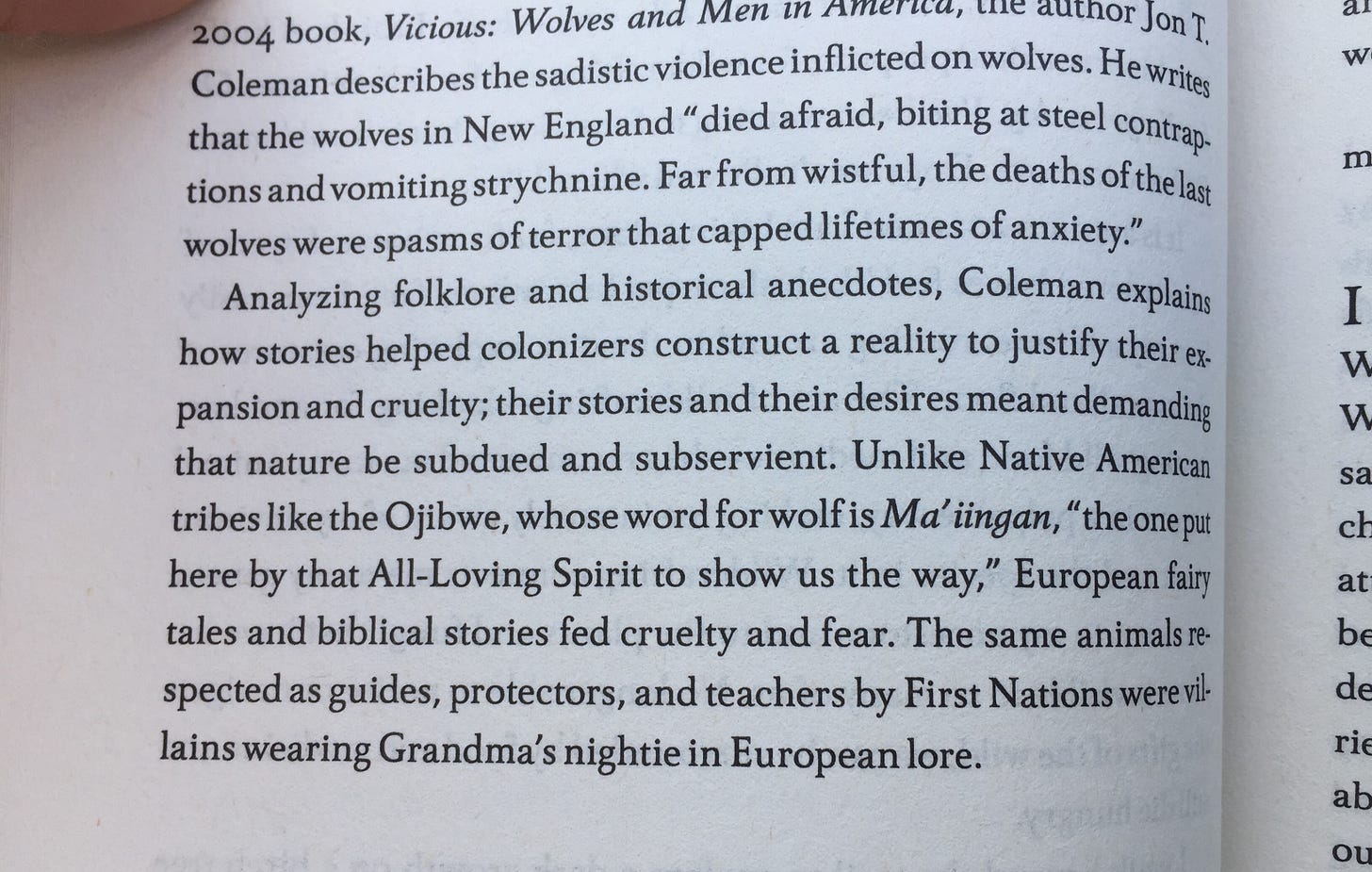
This glimpse into the beginning of the end of indigenous ways of being and seeing trees in Europe is an important aspect of history worth studying in detail, for it shows where anthropocentrism, fear, ego and statism began to steer the people of that region off a path with a heart and grounded in humility and onto a path that exploits, imposes and degrades life in the name of vanity and fear.
I really like how the author closed up that section of the book above and now onto the actual tree info on specific species.
I really love those quotes he shared above and I highlighted the aspects that resonate as especially true and powerful for me. If only more lived by them..
I respect the author’s stated intent here and would encourage any that seek to use the info below for foraging food and medicine to practice the tenets of The Way Of The Honorable Harvest.
These bits of info pertaining to Phyto-morphology and and botanical terms for tree parts is helpful to anyone seeking to build a reciprocal relationship with trees.
These root profiles given are especially important to understand for those seeking to create forest gardens or plant successful permaculture guilds of trees as part of a regenerative garden. Hickory, Apple and Pawpaw trees have a root structure that involves a tap root (shown on the right above) which is important to keep in mind when planting seeds in the ground vs in pots.
More helpful botanical facts and classification terms.
This is very empowering to consider when one can learn to read the rings of trees when arriving at a new property one can essentially tap into an ancient library of climate, soil and weather events via the study of dendrochronology.
A thousand liters a day! Think about that, elder trees such as the American Beech can suck up water from deep in the soil, breathing it out in the heat of the summer to create a cooler microclimate and stimulate stable rain patterns (mitigating droughts and creating a habitat for countless other beings to be sheltered by extreme temperatures, including humans).
Here are a few pics of bud scales from different tree species which I have found to be fascinating and worth studying in the name of biomimicry.
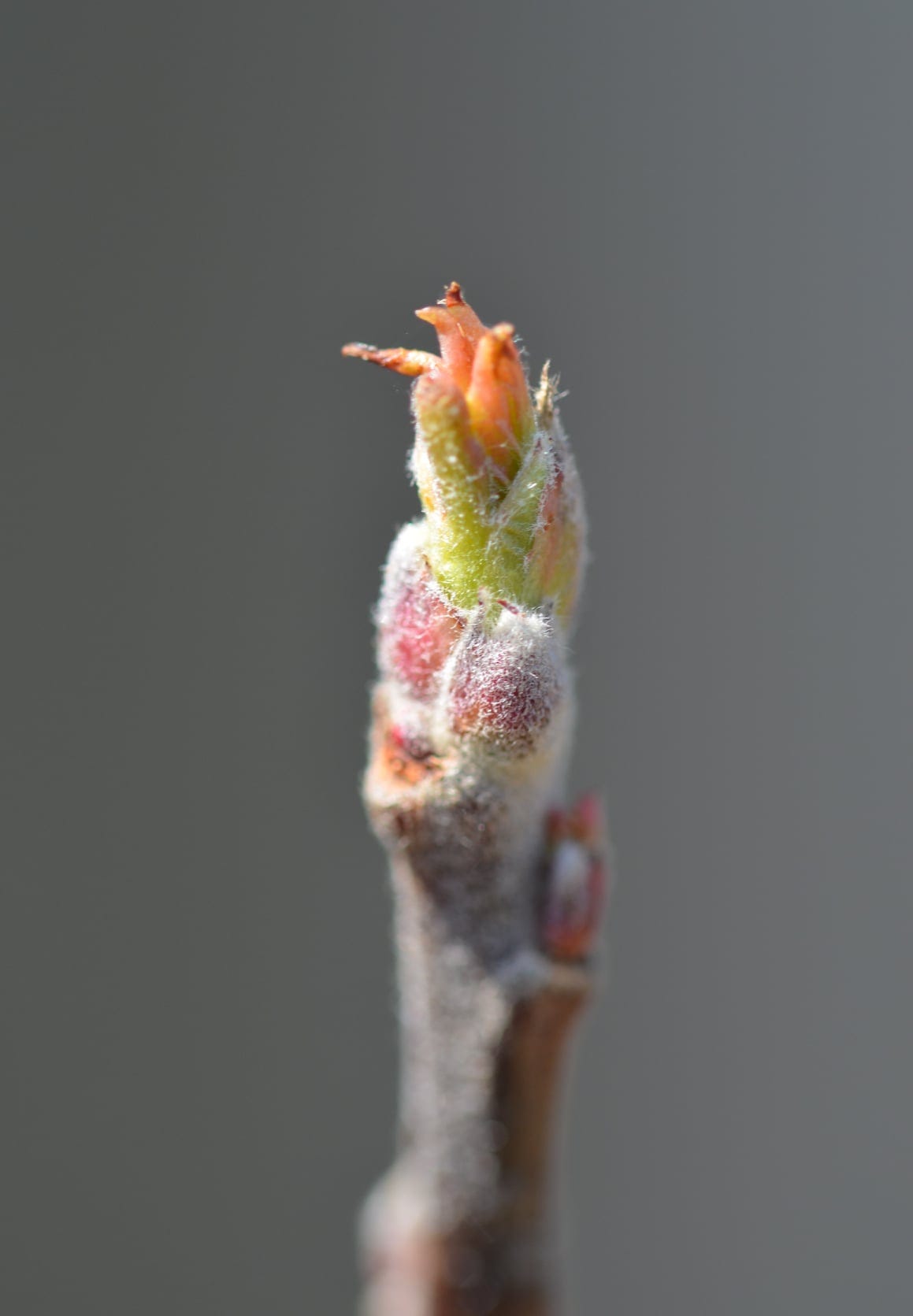
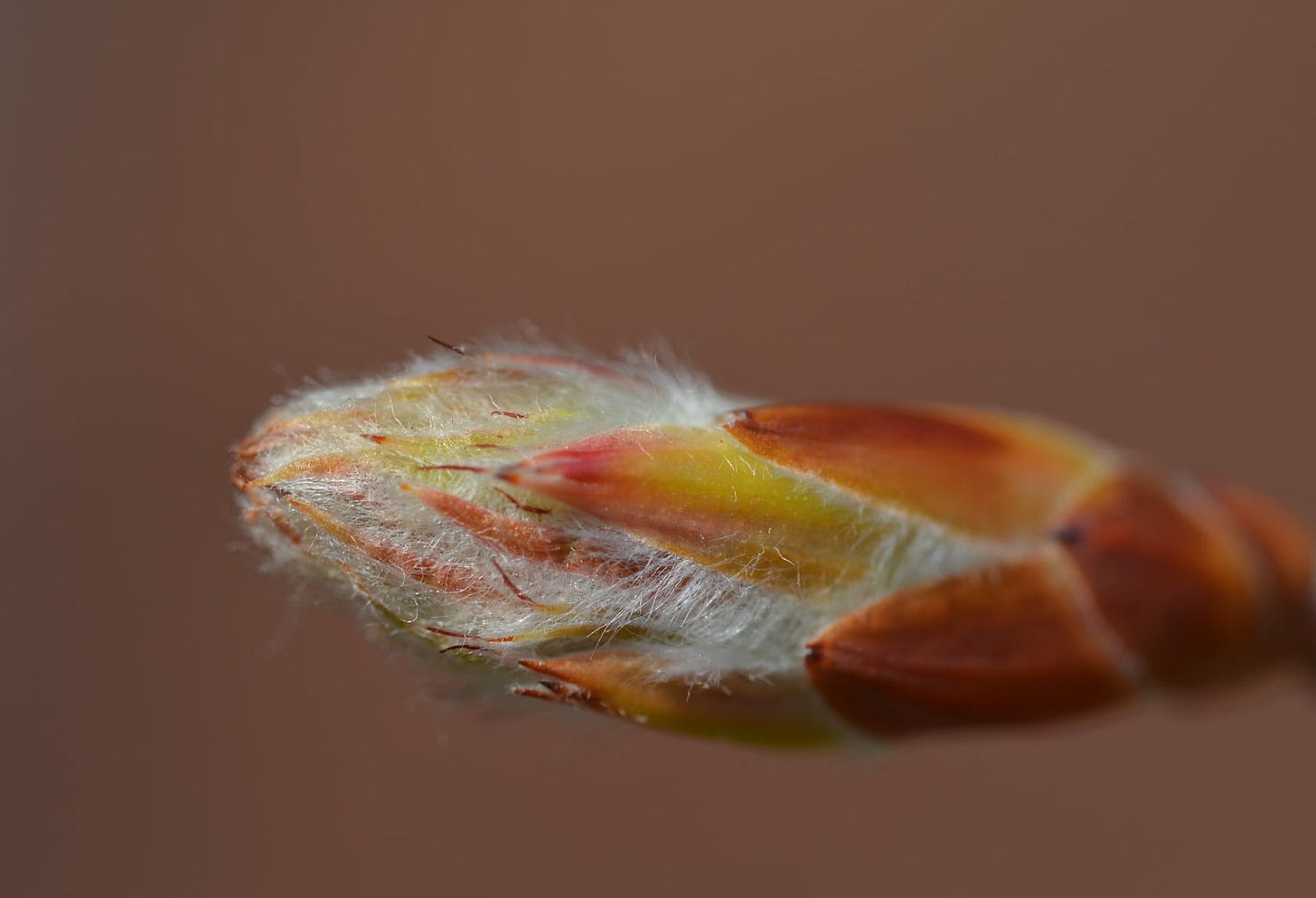
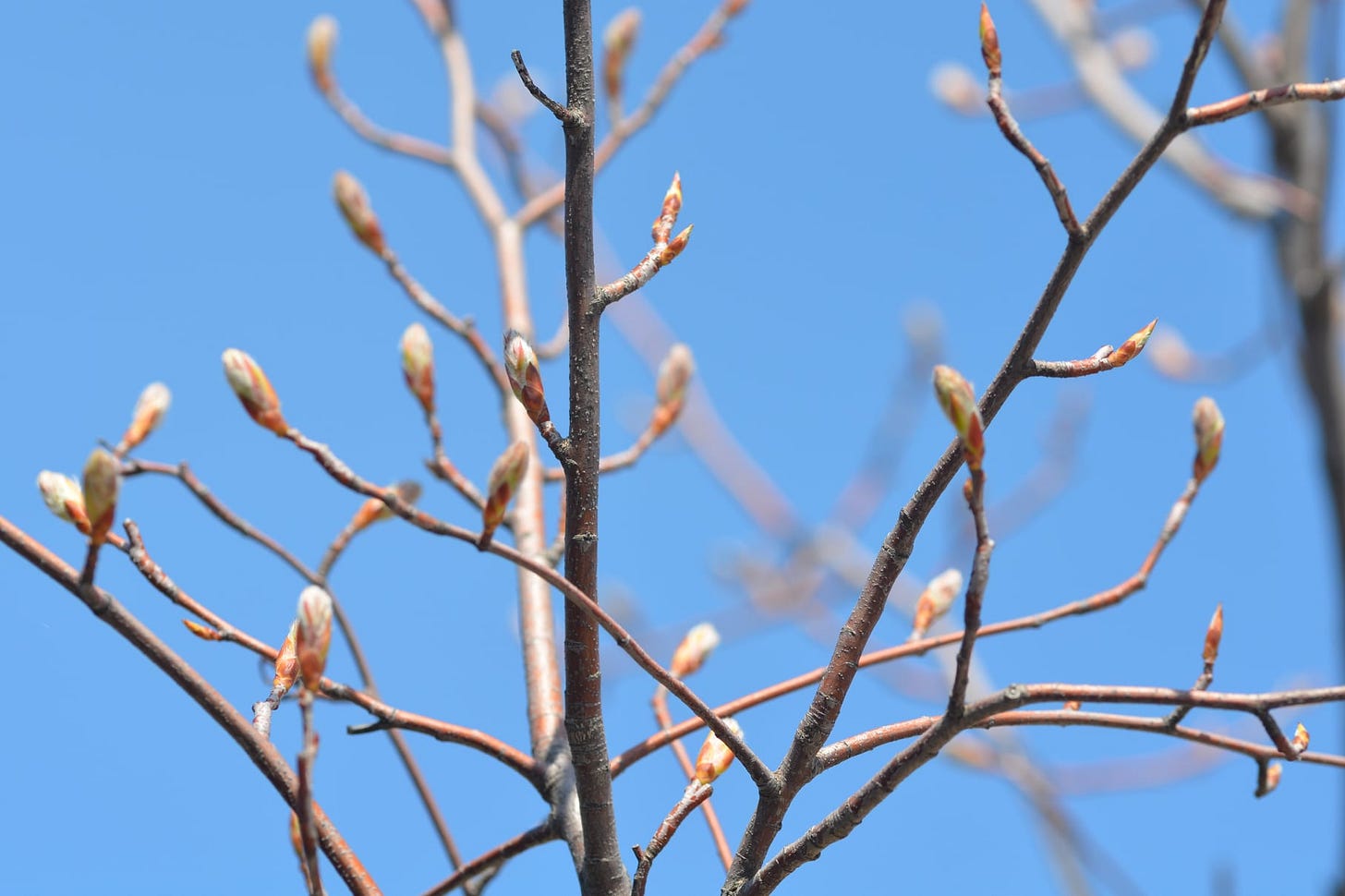
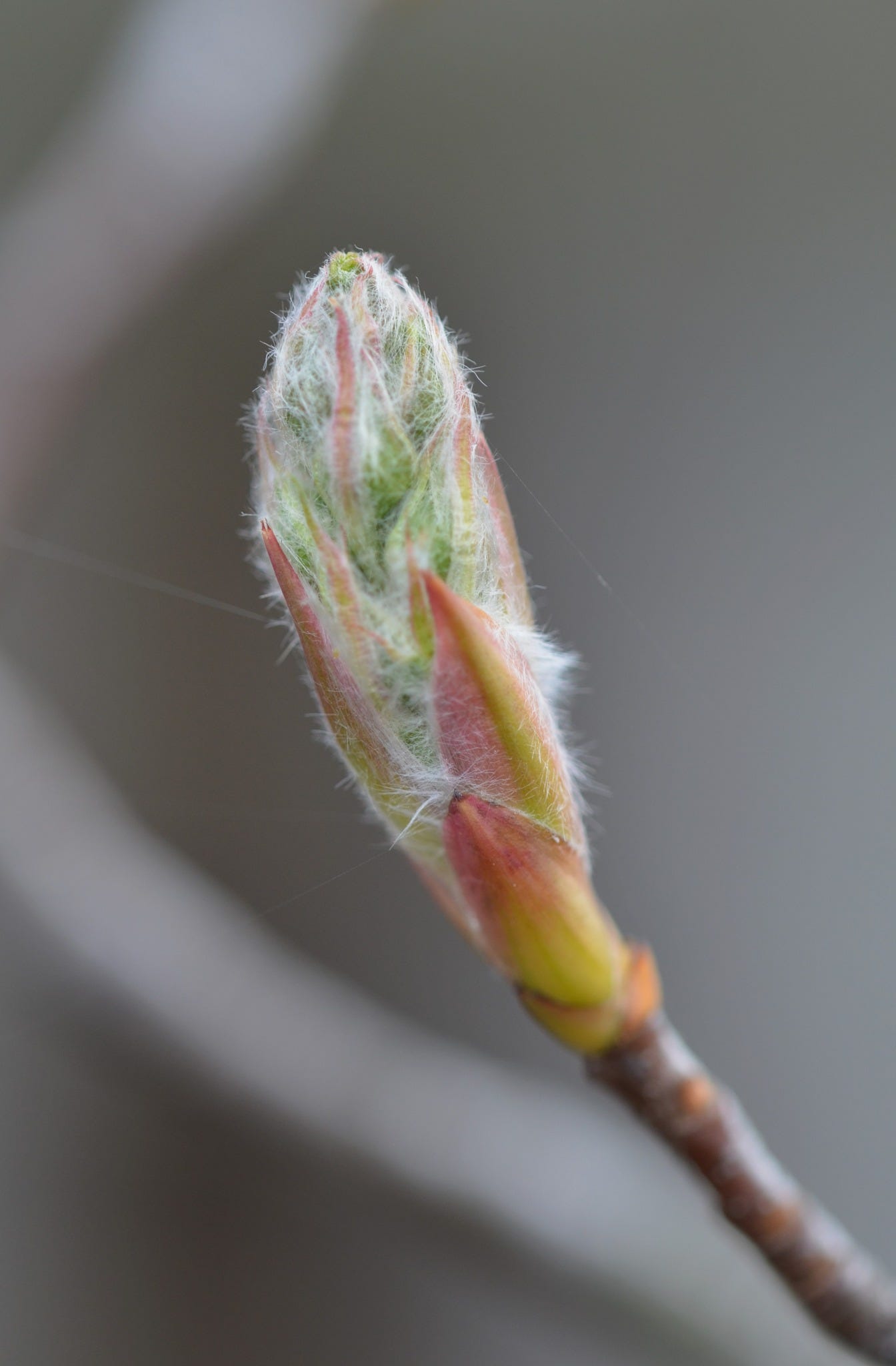
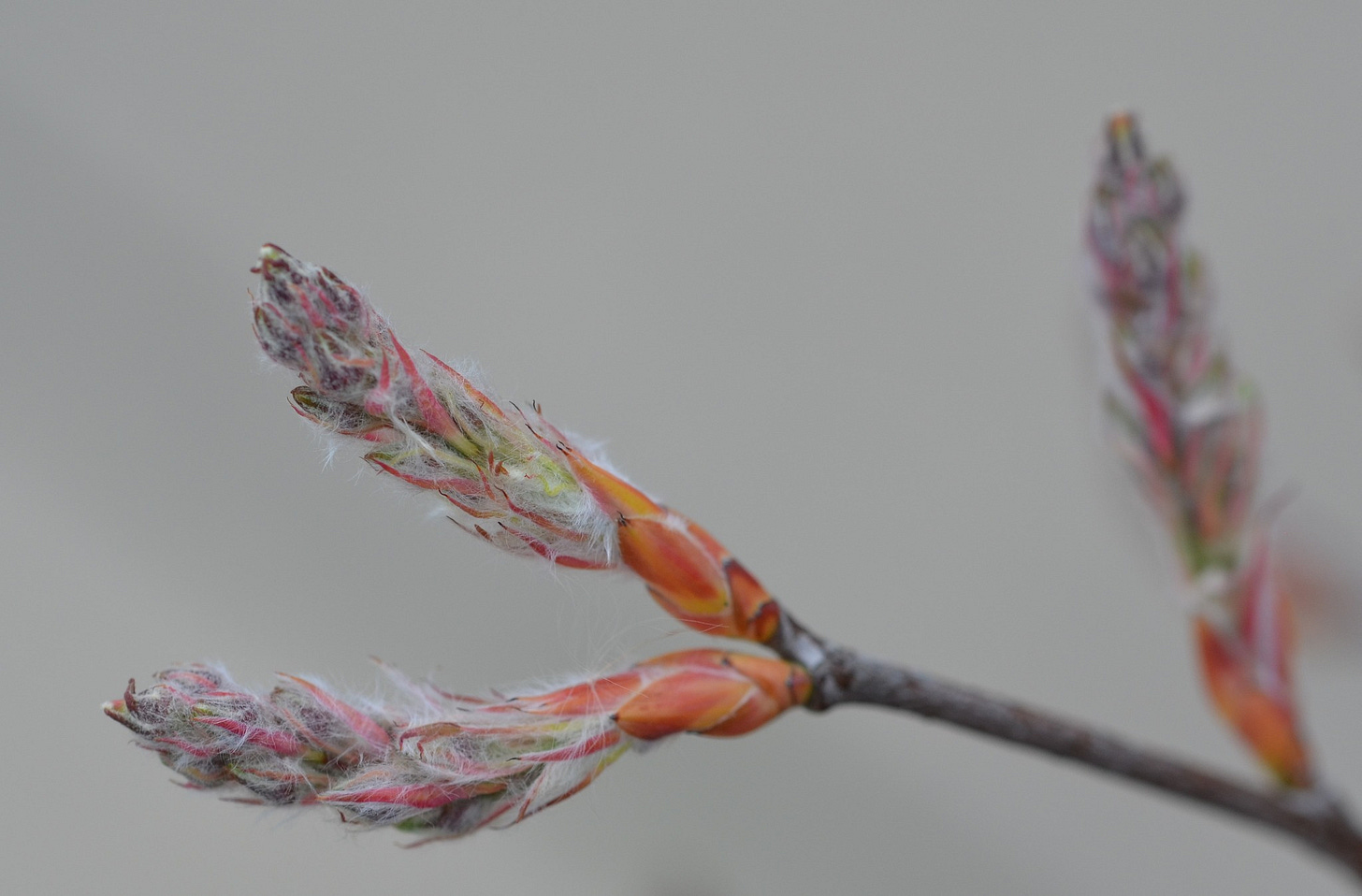
This reproductive info on plants in the image above is important to understand when dealing with species such as Gingko trees or Cannabis plants.
Regarding aspen (I personally love quaking aspen for the lovely rain-like sound the leaves make on the most gentle breeze) but interestingly it is a species that some consider to have individual colonies which represent the oldest organism on Earth.
One aspen tree is actually only a small part of a larger organism. A stand or group of aspen trees is considered a singular organism with the main life force underground in the extensive root system. Before a single aspen trunk appears above the surface, the root system may lie dormant for many years until the conditions are just right, including sufficient sunlight. In a single stand, each tree is a genetic replicate of the other, hence the name a “clone” of aspens used to describe a stand.
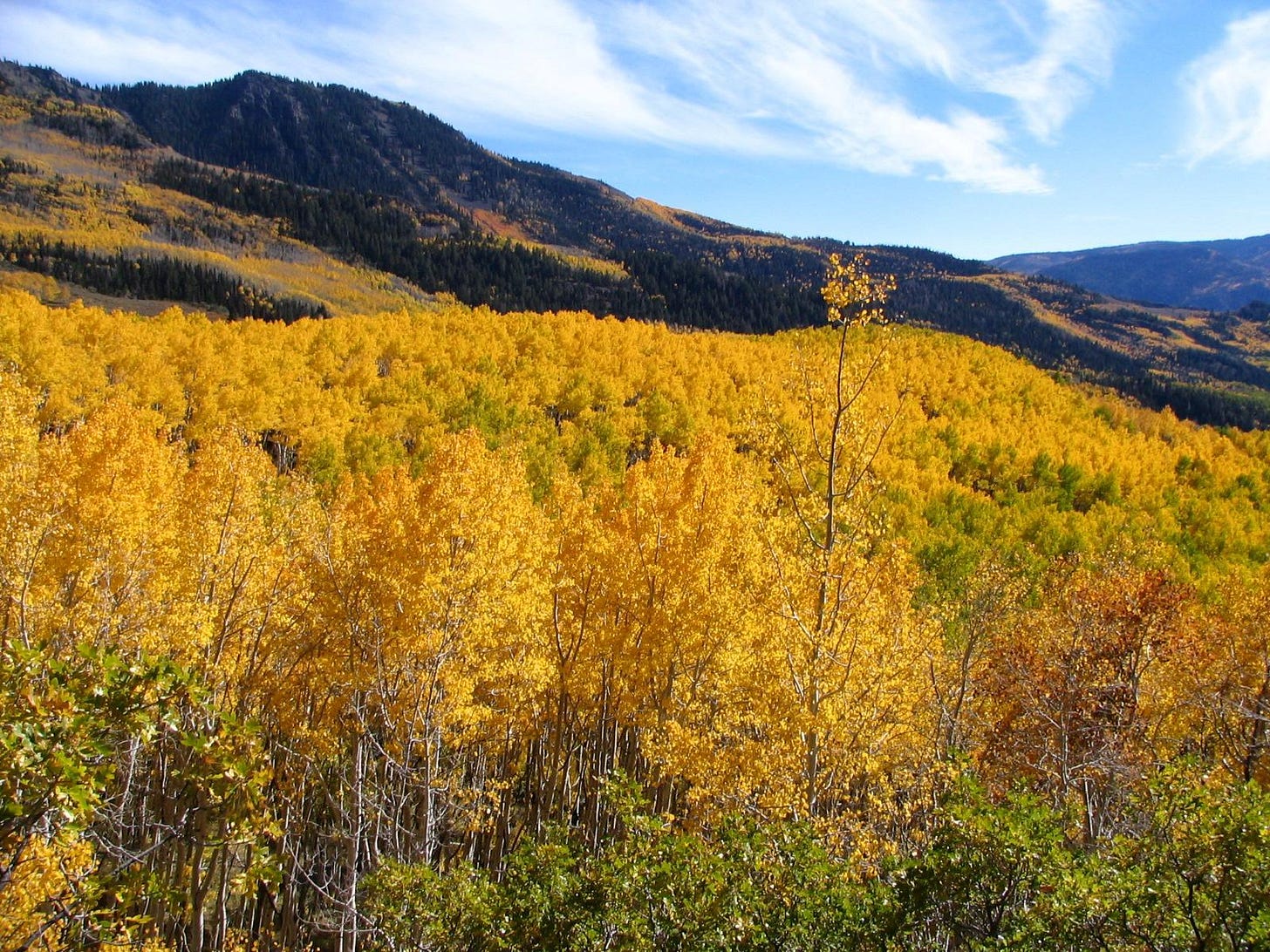
According to some, some aspen stands are older than the massive Sequoias or the biblical Bristlecone Pines, the oldest known aspen clone has lived more than 80,000 years on Utah's Fishlake National Forest. Not only is the clone the oldest living organism, weighing in at an estimated 6,600 tons, it is also the heaviest.
Willow are also amazing for their ability to grow from root or branch cuttings. You can actually cut twigs from a willow tree and plant them in the ground, then weave them together, and they will root and grow, producing a living fence (or even a living garden shade tunnel. Check it out!
The information above also speaks to how much we can learn about the weather patterns of a region from simply learning to read the trees (both their profile, branching habit, bark and rings).
Look at the way the shape of this elder American Beech speaks to the prevailing winds here in southern Ontario
and look at the way the rippled cambium layer of this other even more elder american beech speaks to how she coped with a combination of wet seasons, hard winters and high winds (creating a muscle fiber type pattern of strengthened cambium where she had to create tissue that adapted to those conditions).
Here are some pics, quotes and interesting facts about Chlorophyll and photosynthesis which I have gathered on my journey.
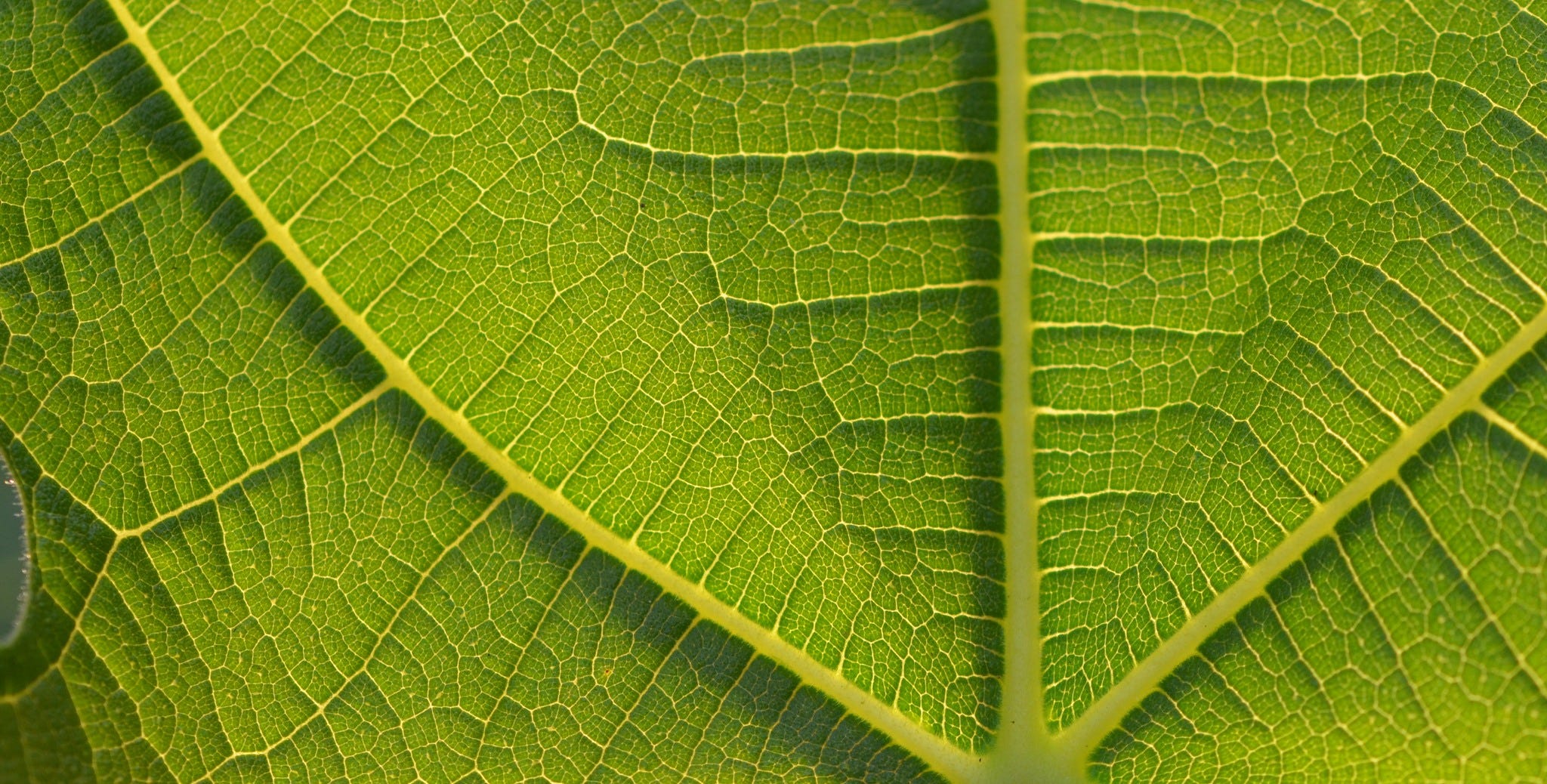
There is also some evidence that suggests that humans may in fact be capable of engaging in the metabolic activities of photoheterotrophs (we can convert light into usable ATP inside our cells given the right circumstances). Also, the book explores how higher melatonin content in the skin may actually enable some humans to be classified as fully photoheterotrophic.

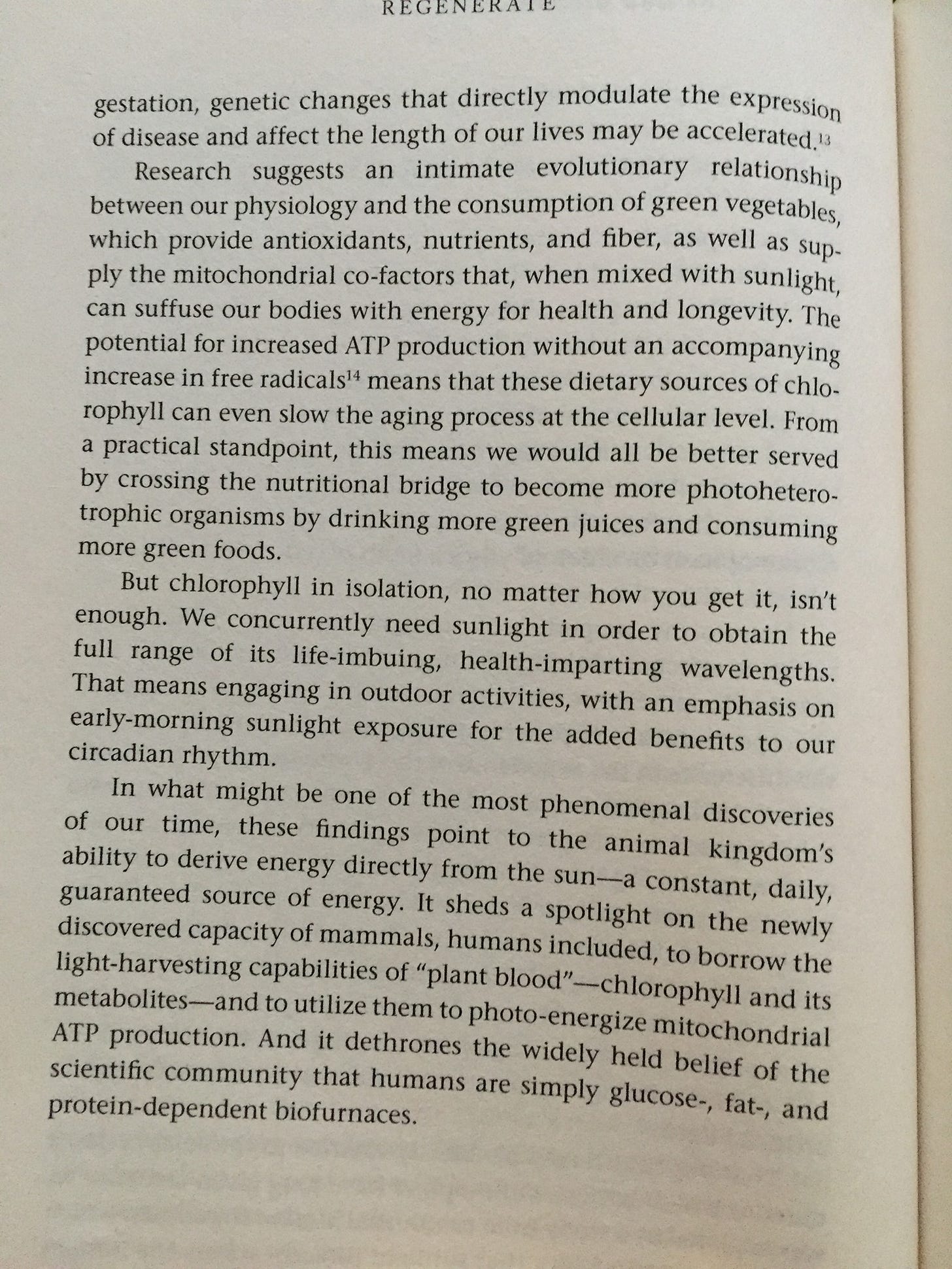

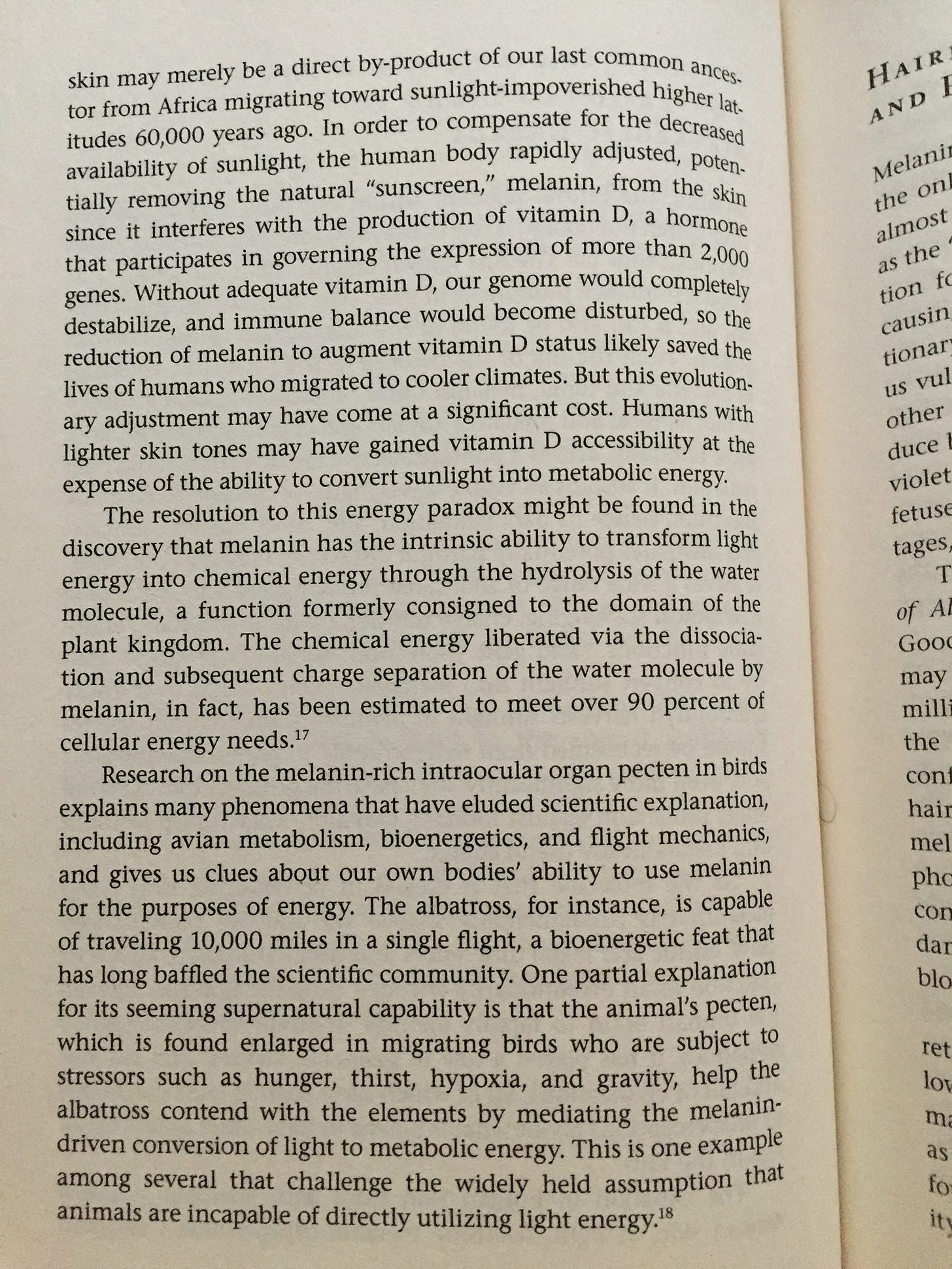
Related research and data:
"Light-harvesting chlorophyll pigments enable mammalian mitochondria to capture photonic energy and produce ATP" : https://journals.biologists.com/jcs/article/127/2/388/54610/Light-harvesting-chlorophyll-pigments-enable?fbclid=IwAR0t5t_P9lF34oLblvtsaiA0lKO_FGAUB-MDX59V7nXfSwaOFw0-EvwwJ9w
- Albertus B. Mostert et al., "Role of Semiconductivity and Ion Transport in the Electrical Conduction of Melanin," Proceedings of the National Academy of Sciences 109, no. 23 (2012): 8943-47, https://doi.org/10.1073/pnas.1119948109.
- Motohiro Takeda et al., "Biophoton Detection as a Novel Technique for Cancer Imaging," Cancer Science 95, no. 8 (August 2004): 656- https://doi.org/10.1111/j.1349-7006.2004.tb03325.x.
- Arturo S. Herrera et al., "Beyond Mitochondria, What Would Be the Energy Source of the Cell?," Central Nervous System Agents in Medicinal Chemistry 15, no. 1 (2015): 32-41, https://doi.org/10.2174/1871524915666150203093656.
- Geoffrey Goodman and Dani Bercovich, "Melanin Directly Converts Light for Vertebrate Metabolic Use: Heuristic Thoughts on Birds, Icarus and Dark Human Skin," Medical Hypotheses 71, no. 2 (August 2008): 190-202, https://doi.org/10.1016/j.mehy.2008.03.038.
- Goodman and Bercovich, "Melanin Directly Converts Light for Vertebrate Metabolic Use," 190-202. 20. Sheng Meng and Efthimios Kaxiras. "Mechanisms for Ultrafast Nonradiative Relaxation in Electronically Excited Eumelanin Constituents," Biophysics Journal 95, no. 9 (2008): 4396-402, https://doi.org/10.1529/biophysj.108.135756.
- Iain Mathewson, "Did Human Hairlessness Allow Natural Photobiomodulation 2 Million Years Ago and Enable Photobiomodulation Therapy Today? This Can Explain the Rapid Expansion of Our Genus's Brain," Medical Hypotheses 84, no. 5 (May 2015): 421-28, https://doi.org/10.1016/j.mehy.2015.01.032.
- Gerald H. Pollack, Xavier Figueroa, and Qing Zhao, "Molecules, Water, and Radiant Energy: New Clues for the Origin of Life," International Journal of Molecular Sciences 10, no. 4 (April 2009): 2009 Apr; 10(4): 1419-1429, https://doi.org/10.3390/ijms10041419.
- Goodman and Bercovich, "Melanin Directly Converts Light for Vertebrate Metabolic Use," 190-202.
- V. Vember and N. Zhdanova, "Peculiarities of Linear Growth of the Melanin-Containing Fungi Cladosporium sphaerospermum Penz. and Alternaria alternata (Fr.) Keissler" [in Russian], Mikrobiolohichnyĭ Zhurnal 63, no. 3 (May-June 2001): 3-12.
- Lora Mangum Shields, L. W. Durrell, and Arnold H. Sparrow, "Preliminary Observations on Radiosensitivity of Algae and Fungi from Soils of the Nevada Test Site," Ecology 42, no. 2 (April 1961): 440-41, https://doi.org/10.2307/1932103.
- Charles E. Turick et al., "In Situ Uranium Stabilization by Microbial Metabolites," Journal of Environmental Radioactivity 99, no. 6 (June 2008): 890-99, https://doi.org/10.1016/j.jenvrad.2007.11.020.
- Ekaterina Dadachova and Arturo Casadevall, "Ionizing Radiation: How Fungi Cope, Adapt, and Exploit with the Help of Melanin," Current Opinion in Microbiology 11, no. 6 (December 2008): 525-31, https://doi.org/10.1016/ j.mib.2008.09.013.
- Ekaterina Dadachova et al., "Ionizing Radiation Changes the Electronic Properties of Melanin and Enhances the Growth of Melanized Fungi," PLoS ONE 2, no. 5 (2007): e457, https://doi.org/10.1371/journal.pone.0000457.
- Ekaterina Revskaya et al., "Compton Scattering by Internal Shields Based on Melanin-Containing Mushrooms Provides Protection of Gastrointestinal Tract from Ionizing Radiation," Cancer Biotherapy and Radiopharmaceuticals 27, no. 9 (November 2012): 570-76, https://doi.org/10.1089/cbr.2012.1318.
- Charles E. Turick et al., "Gamma Radiation Interacts with Melanin to Alter Its Oxidation-Reduction Potential and Results in Electric Current Production," Bioelectrochemistry 82, no. 1 (August 2011): 69-73, https://doi.org/10.1016/j.bioelechem.2011.04.009.
- A. Kunwar et al., "Melanin, a Promising Radioprotector: Mechanisms of Actions in a Mice Model," Toxicology and Applied Pharmacology 264, no. 2 (2012): 202-11, https://doi.org/10.1016/j.taap.2012.08.002.
The New Biophysics: https://greenmedinfo.com/blog/new-biophysics-deep-dive-quantum-rabbit-hole-esoteric-physiology-01
Okay now that we have taken a peek at research indicating how humans may actually be capable of being nourished directly (at a cellular level) via metabolizing light energy, lets head back to exploring info on our rooted light eating cousins in the pages of Spirit Of The Trees :)
I love this tree and wrote an in depth article on several species of Birch with you can read here
Birch - The Graceful One
This post serves as the first crossover post which is both part of the above mentioned (Stacking Functions in the Garden, Food Forest and Medicine Cabinet : The Regenerative Way From Seed To Apothecary series) as well as constituting the 4th installment of the
I am not very familiar with ash trees, though on the few occasions I have positively identified one in the wild here, I was mesmerized by the graceful leaves and the way they hold the morning light.
I shall try this jelly recipe in the future and report back on how it goes!
I love that art above and will endeavor to learn more about and reciprocally interact with this tree that was so important to my Gaelic ancestors more in the future.
Another tree I have little experience with but I will strive to change that. I have highlighted material that I feel is worth further study in the pages above and below.
what a lovely painting for the Ash tree that the author included (shown above)
Another fun bit of practical info on willows pertains to how you can make your own rooting solution for starting cuttings from other species such as apples, berry bushes, vines and hardwood specimens.
How to Make Home Made Plant Rooting Hormone – Willow Water
https://deepgreenpermaculture.com/2010/12/15/home-made-plant-rooting-hormone-willow-water/
Here are some pictures I took the other day of some mature cottonwood poplars in a local old growth Carolinian forest patch

I also mentioned poplars in the Phytoremediation chapter of my book (Recipes For Reciprocity) as they are a species with an amazing gift for neutralizing and/or hyperaccumulating dangerous chemicals (protecting waterways and remediating soils damaged by industrial activity).
The advantageous effect of poplar trees on soil and underwater has also been widely studied. Their secret lies in the naturally well-designed root system which take up large quantities of water.
Chlorinated solvents such as trichloroethylene, or the well-known carcinogenic carbon tetrachloride (95% of substance removed) are the organic pollutants that hybrid poplars face better, according to research from National Institute of Environmental Health Sciences. What is more, PhytoPet(Bioremediation of Aquatic and Terrestrial Ecosystems), the Canadian database for bioremediation methods, remarks that poplar trees can degrade petroleum hydrocarbons like benzene, toulene and o-xylene.
Some pictures of our local maples here in southern Ontario and close ups of fractal geometry in the seeds

Here are some pics of a 300 year old plus Black Oak here in southern Ontario
I do not know much about hazel but I intend to change that as I know how effective this species can be as a member of a northern long term food forest design.
The author shared a bit of inaccurate info about apple trees in the section above when he conflates crabapples as being the only wild apples and says that all apple trees are small.
For more info read:
The Wild Apples of the Tian Shan Mountains
I am someone that has loved apples since a relatively young age as I grew up on an apple orchard in the South Okanagan of BC where my parents grew some superb apples in excellent soil. I found great joy in being able to wake up in the morning and pick a couple juicy apples fresh off the tree…
As I explored in my article on The Wild Apples of the Tian Shan Mountains, The wild Malus sieversii trees have the potential to live to be 300-years-old, becoming up to 5 feet across at the base of the trunk and 60 feet tall. Each seed can grow a tree that produces a completely unique apple variety.
We are growing a number of these on our property and sharing seeds far and wide so that this ancient genetic diversity and potential for new resilient, flavorful and delicious locally acclimatized apple varieties to be developed can be tapped into by people all over Turtle Island and beyond! For more on this read:
You can count the seeds in a single apple, but you cannot count the apples in a single apple seed
“A seed hidden in the heart of an apple is an orchard invisible.” - Welsh Proverb
For more information on Elderberries, you can read my in depth article on our local species here:
ELDERBERRY
This plant was used by my Celtic ancestors and Native Americans for many medicinal purposes. The purple-black fruit is attractive to birds that spread the seeds. The fruit makes tasty jelly and wine (and many other things).
I do love Lindon trees and I am really enjoying getting to know our local native Giant linden trees of the Carolinian forest recently, called Basswood Lindens. I`ll share a few pics of old growth basswood trees below:
For more info on Spruce, read:
Befriending The Boreal: Getting To Know Our Elder Brother Spruce
Spruce trees provide a bounty of medicine, food, habitat and essential materials for countless species and cultures globally. This post invites you to get to know a tree that our Chipewyan neighbors refer to as “Big Brother”.
For more info on Larch read:
Befriending The Boreal: Introducing our cherished elder, known to some as Mashkiigwaatig or 'The Medicine Woman', known others as, the Larch
Tamarack (or Larch) is known as “The Medicine Woman” tree to some, she is the protector and purifier of our sacred waters, the medicine provider, the golden glowing one and the soft and delicate one.
For more info on a local pine species that I love read:
An Encounter With An Ancient Healer
Today I will be sharing information about an ancient being that can provide medicine for the Earth and food for the soul. This will be a journey that explores some of the many virtues, gifts and practical functions of a tree species that has become dear to my heart over the past decade.
I have also been working to propagate Scots pines from seed recently and shared some of my efforts in that regard in the note below
Here is a pic of a newly emerged Scots pine seedling that I grew form seed
I admire how resilient juniper bushes are on the rugged edge of Newfoundland and in the high alpine (pics) and I also like to add the juniper berries in sauerkraut.
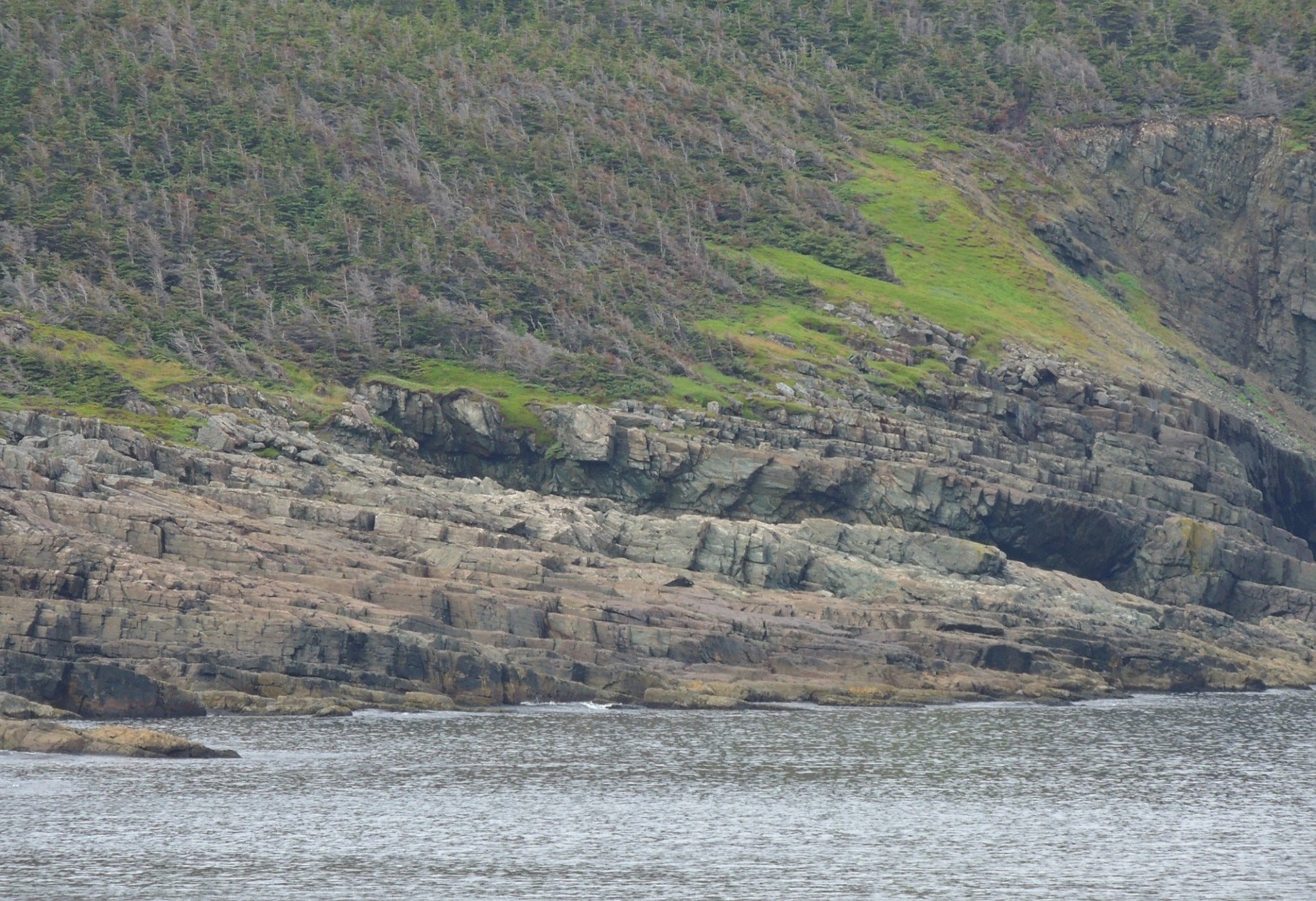
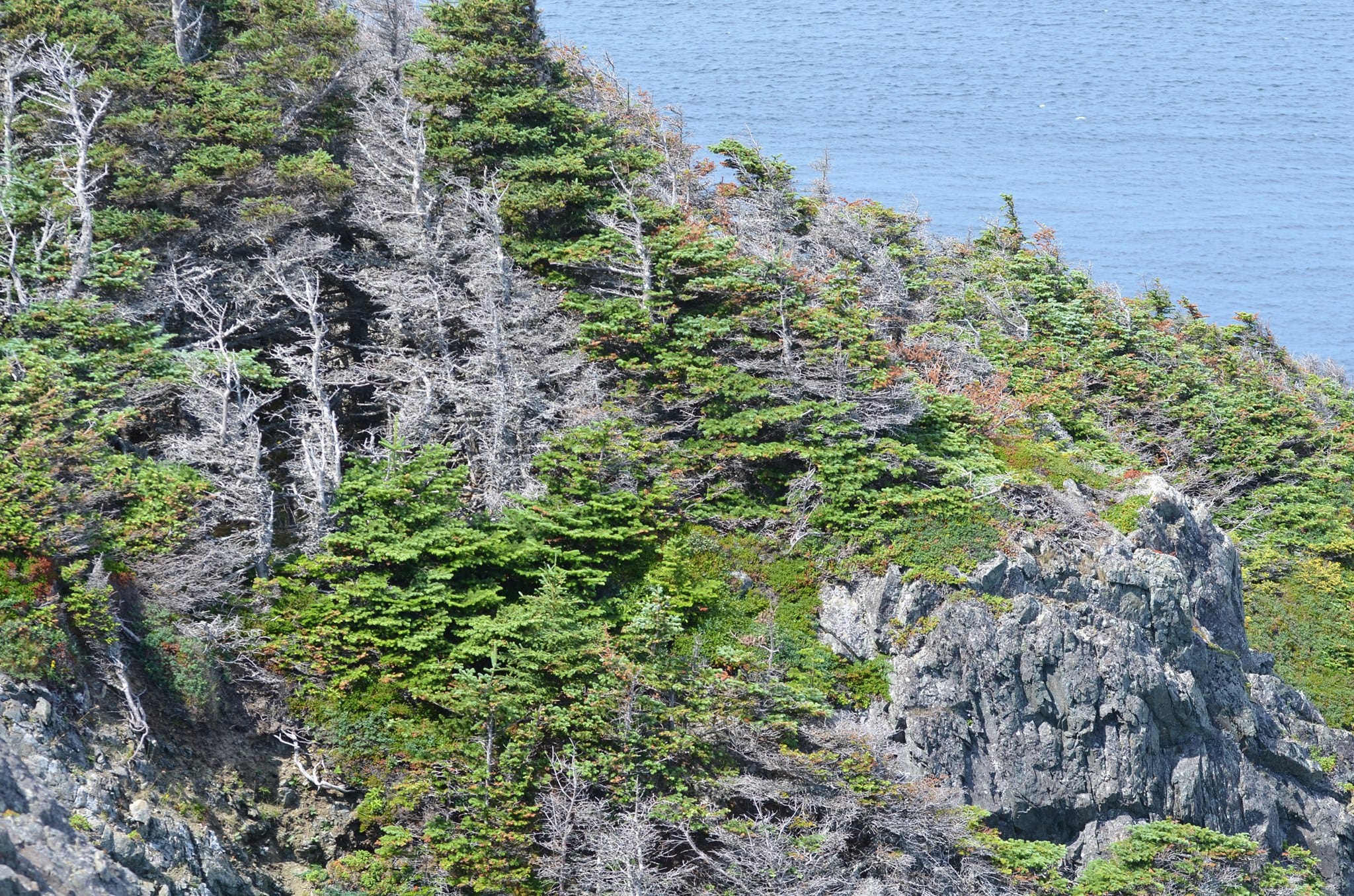
That is some pretty intense info about yews, I have not interacted with them in their native habitat that much, more just seen them in manicured modern landscape designs, but I aim to change that in the future and get to know some ancient yews in the future.
The author closes with several powerful and vital thoughts and ideas in the page above. I agree that it will be love for nature and not fear that will effectively compel our peers and future generations to respect, protect and regenerate the forests of the Earth. Thus, I want to thank all of you who read books like the one I reviewed above and you who get the children out in the forest connecting with our elder rooted kin, you are providing a much needed medicine for our human family through embracing your interest, love for and willingness to interact with trees in a reciprocal way.
I shared the pages above and below as the linguistic connection points of how we refereed to trees in the past, how we refer to them now and how we might evolve to referring to those beings in the future has a significant impact on our perspective, our priorities and by extension, the degree of which we care about and value trees.
There are some great book suggestions and studies listed in the bibliography below for those that want to do a deep dive on specific subject matter.
I would also suggest checking out this post for some more excellent books on trees:
Whew! That one was a doozie!! If you made it all the way through this epic journey of a book review I commend you! :)
If you read this book along side of me over the past few months and/or you had already read it prior to that I would value hearing your thoughts on the book in the comments section below.
If you are new to this blog and are wondering what this “Book Club” series is all about, you can learn more about it here:
Given I got so behind on this book review I will be delaying the official reading time for the recently selected “Mycelium Running: How Mushrooms Can Help Save the World” which originally set to be for October/November to November/December.
I will also be taking a break from the Bookclub series over the winter in order to focus on my Stacking Functions in the Garden, Food Forest and Medicine Cabinet : The Regenerative Way From Seed To Apothecary series, regenerative agroforestry, food forest and refugia design initiatives and for writing my next book.
I wish you all many nourishing, inspiring and healing moments in the forest in the months ahead my friends.


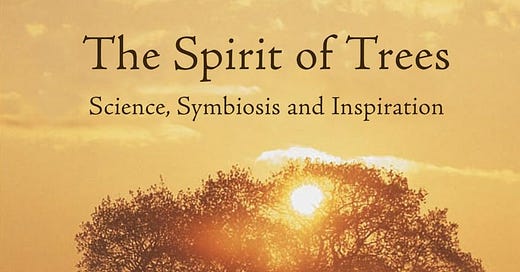


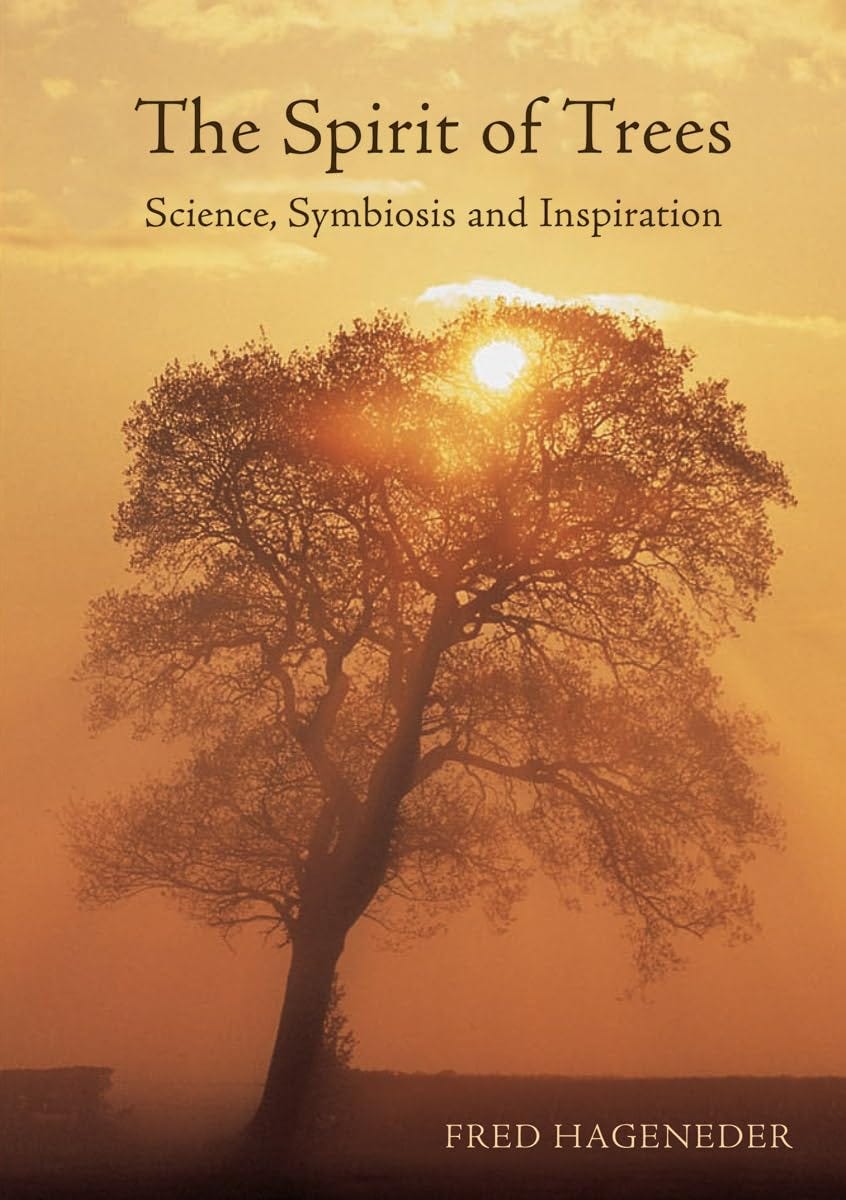
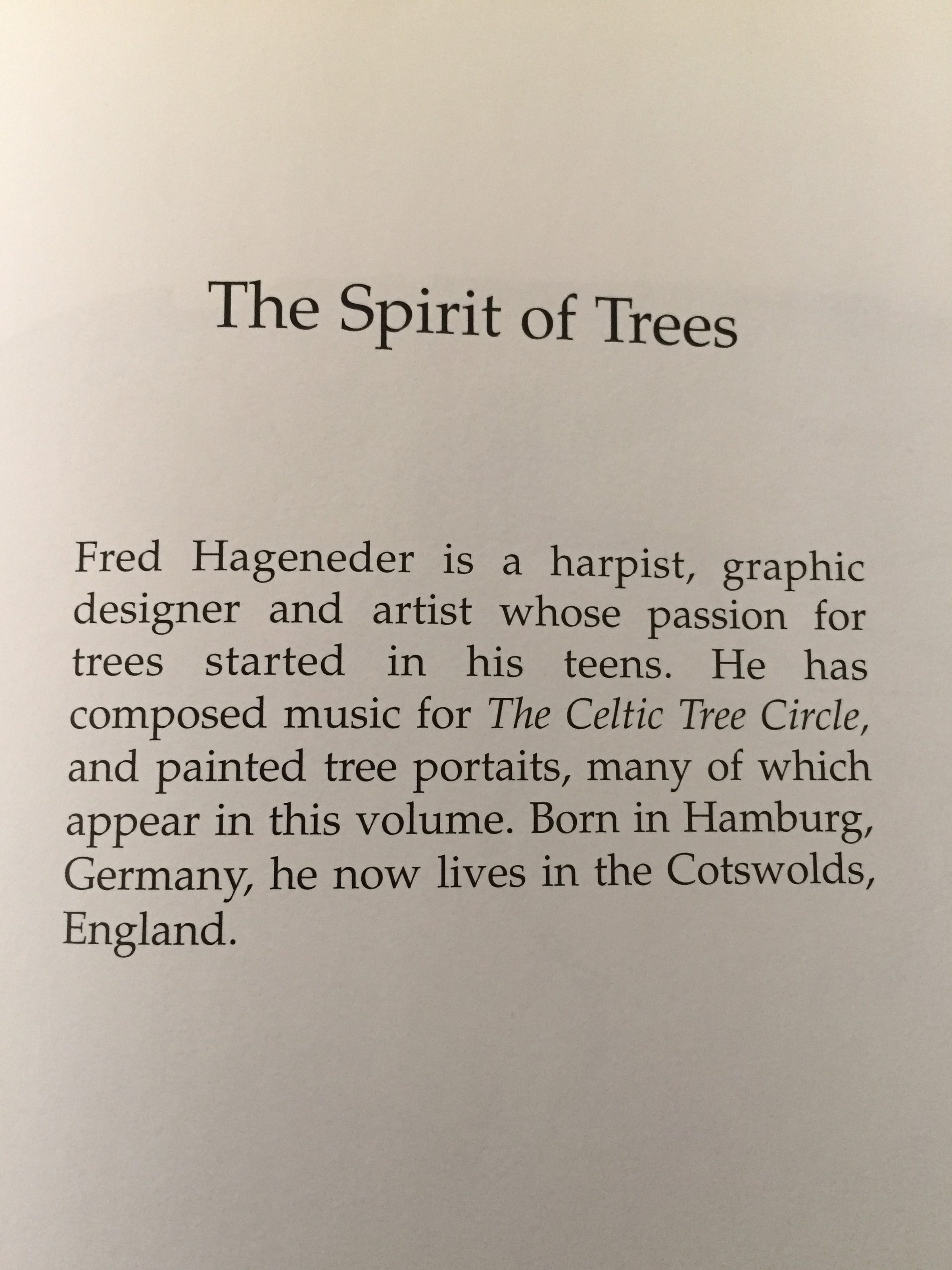
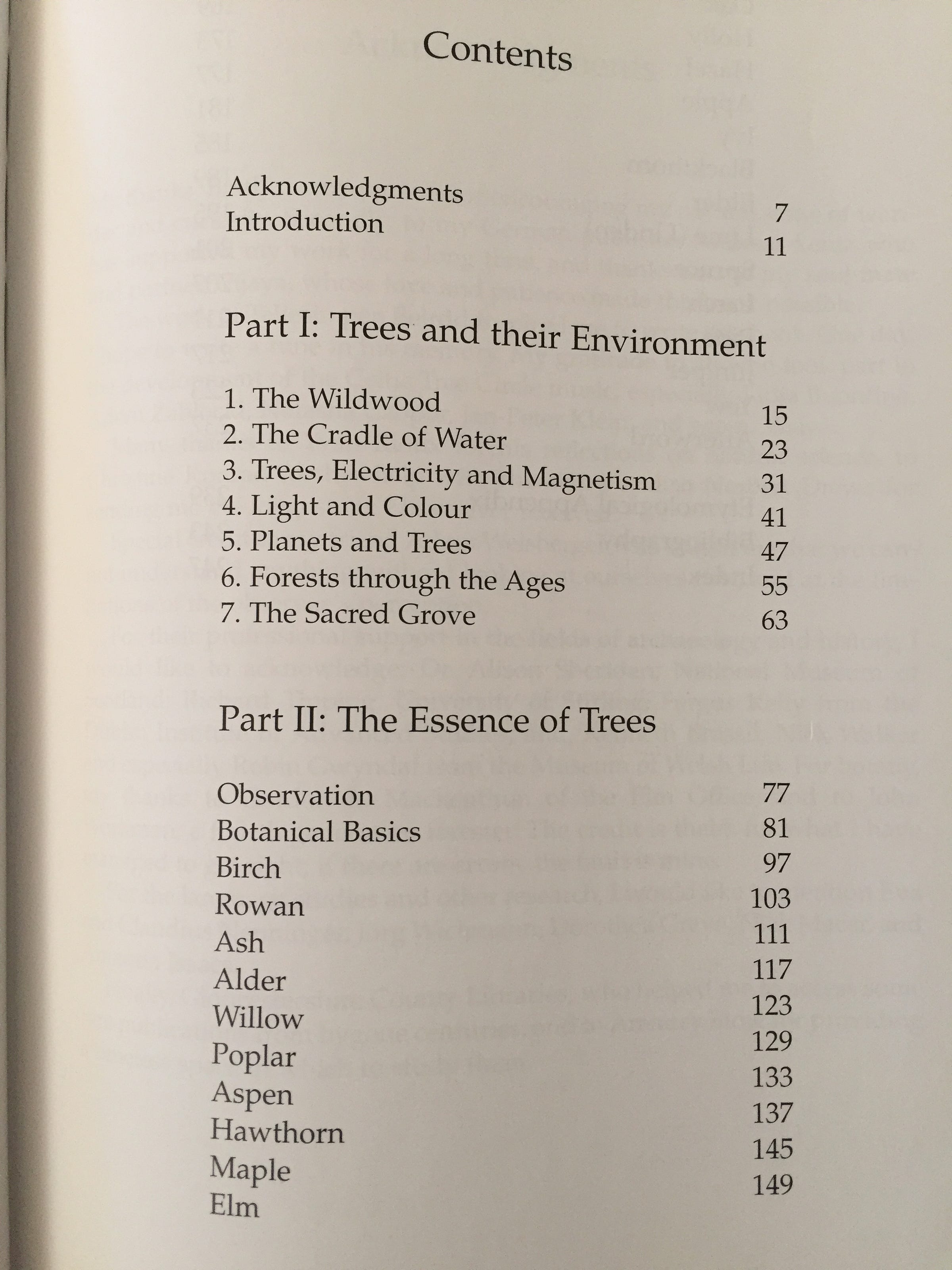

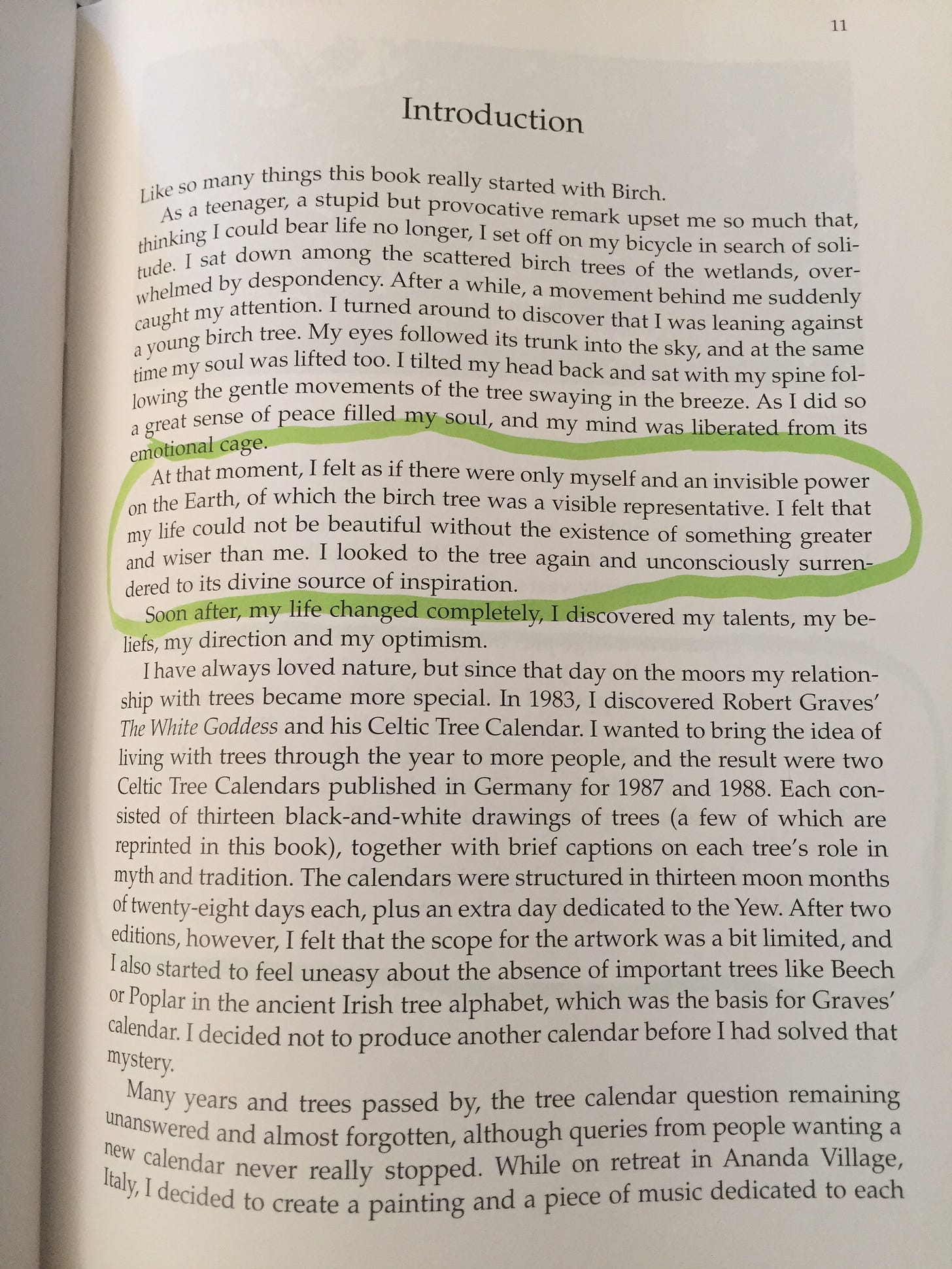
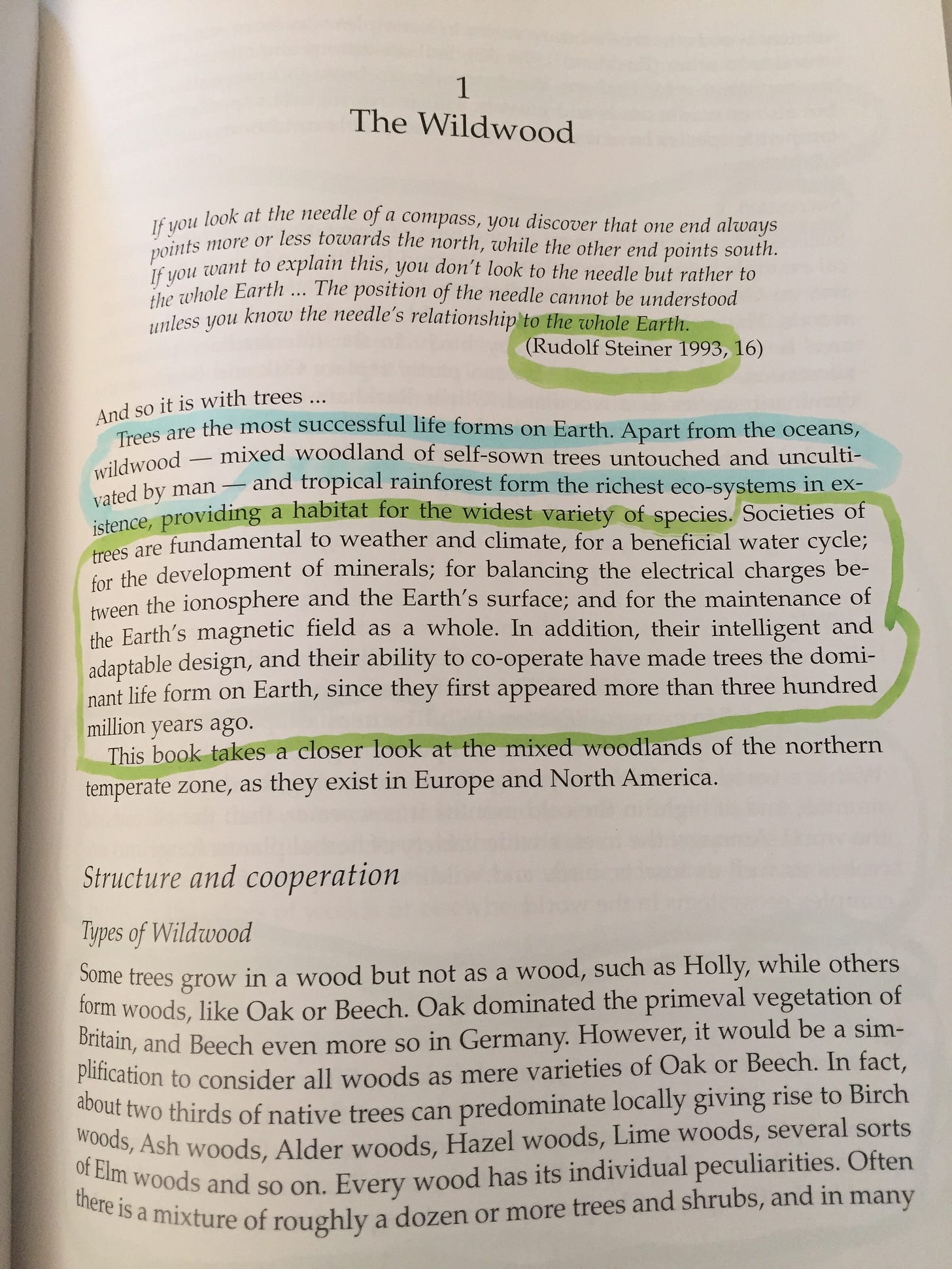
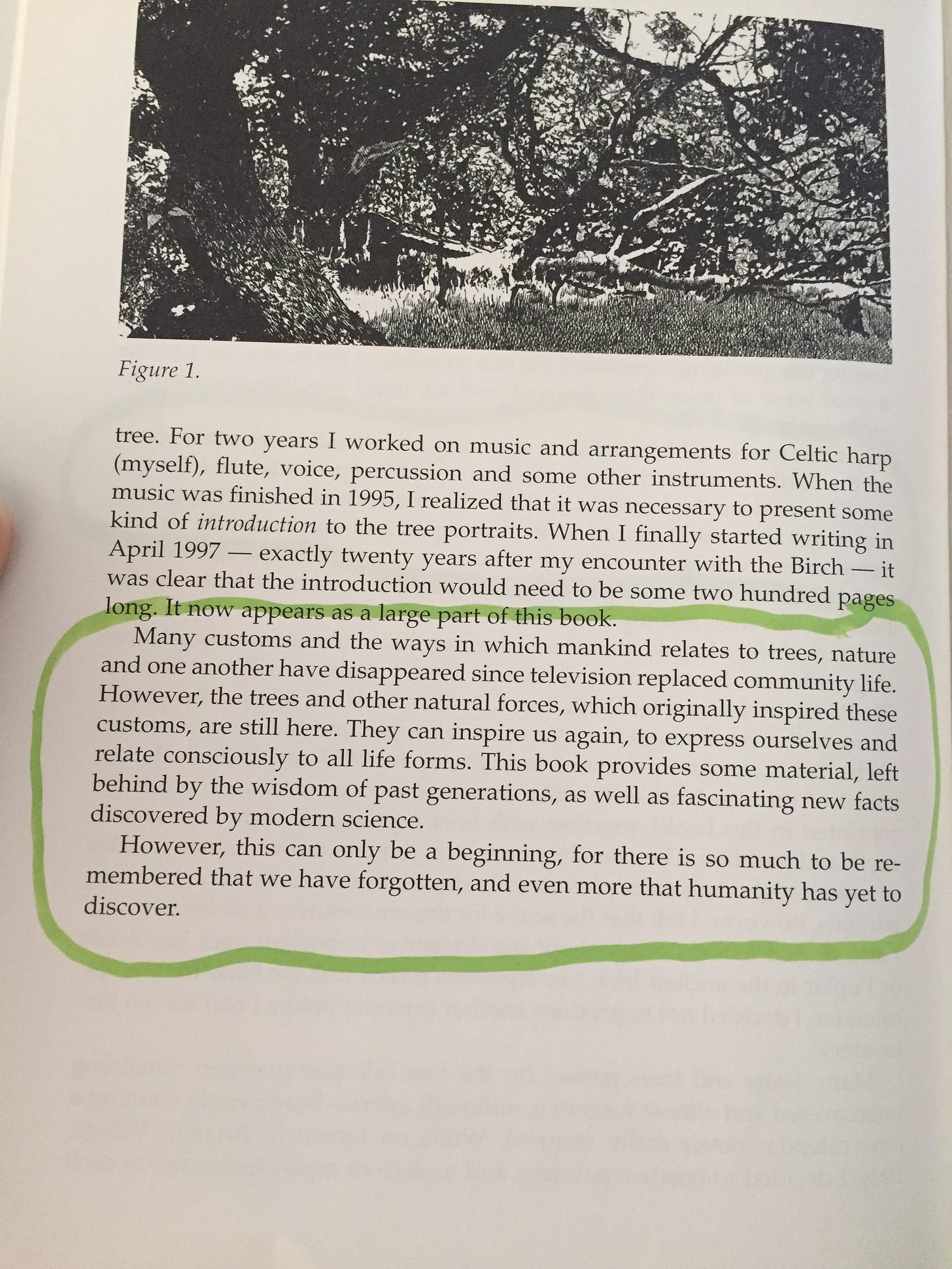
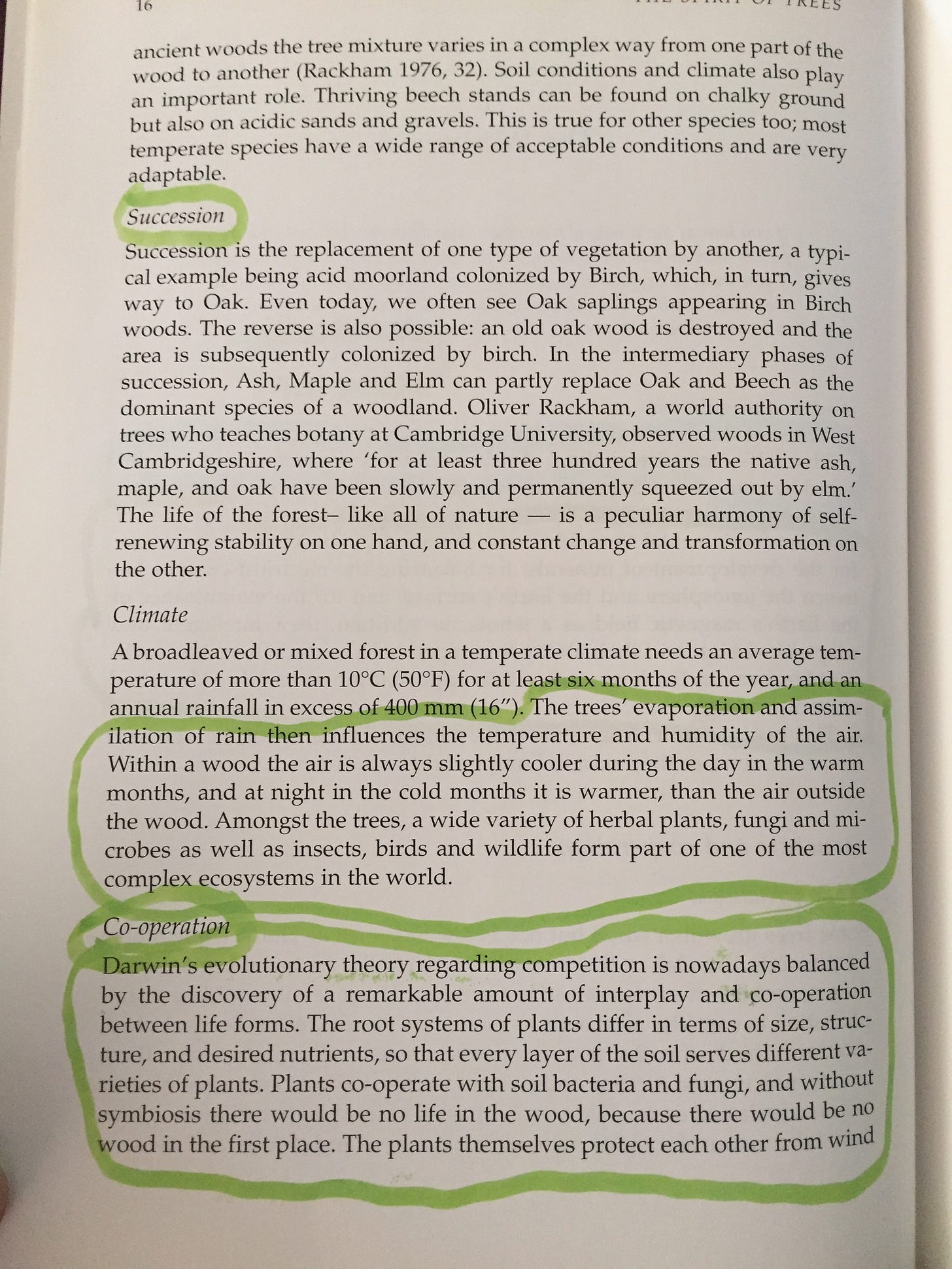
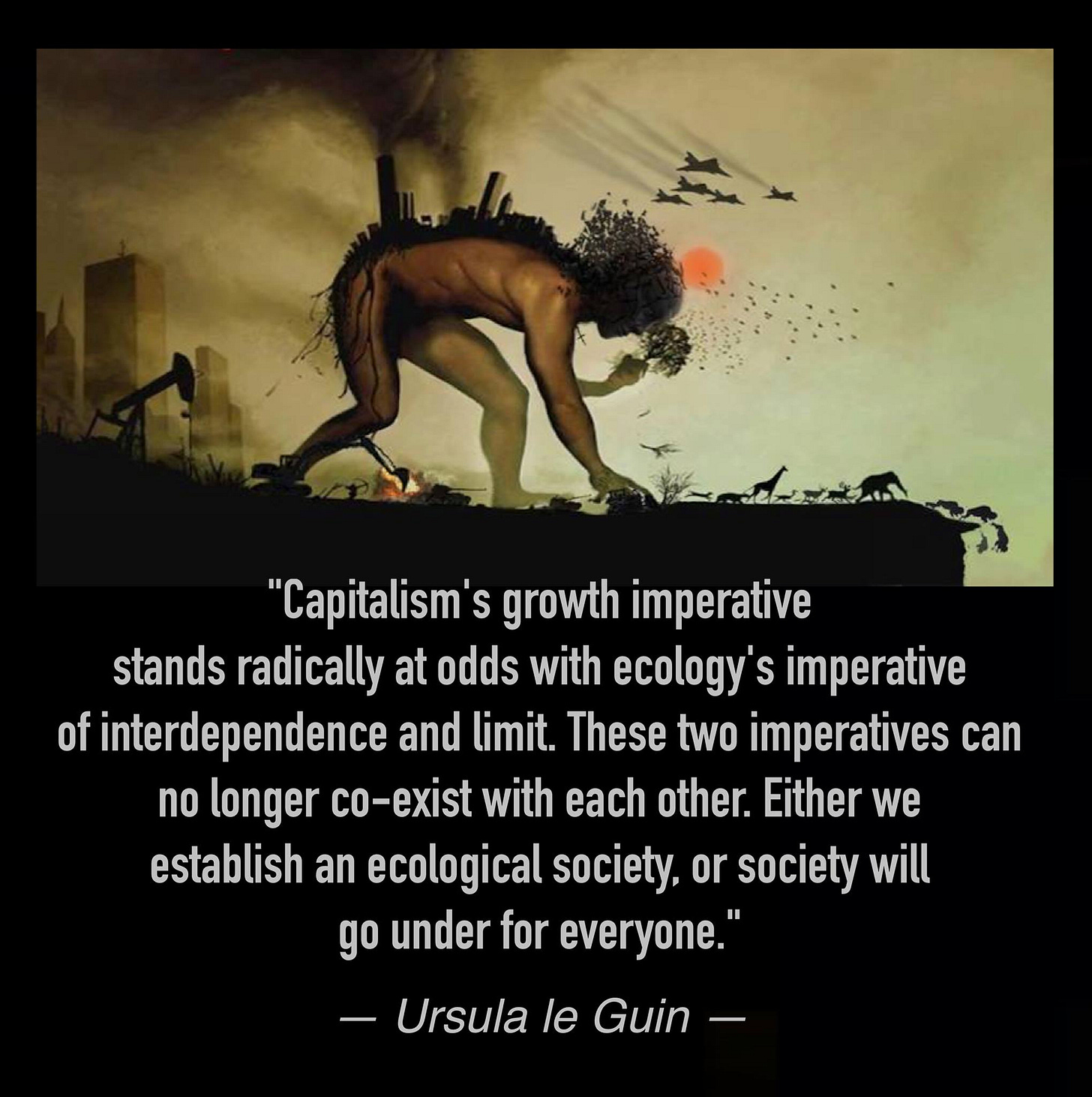
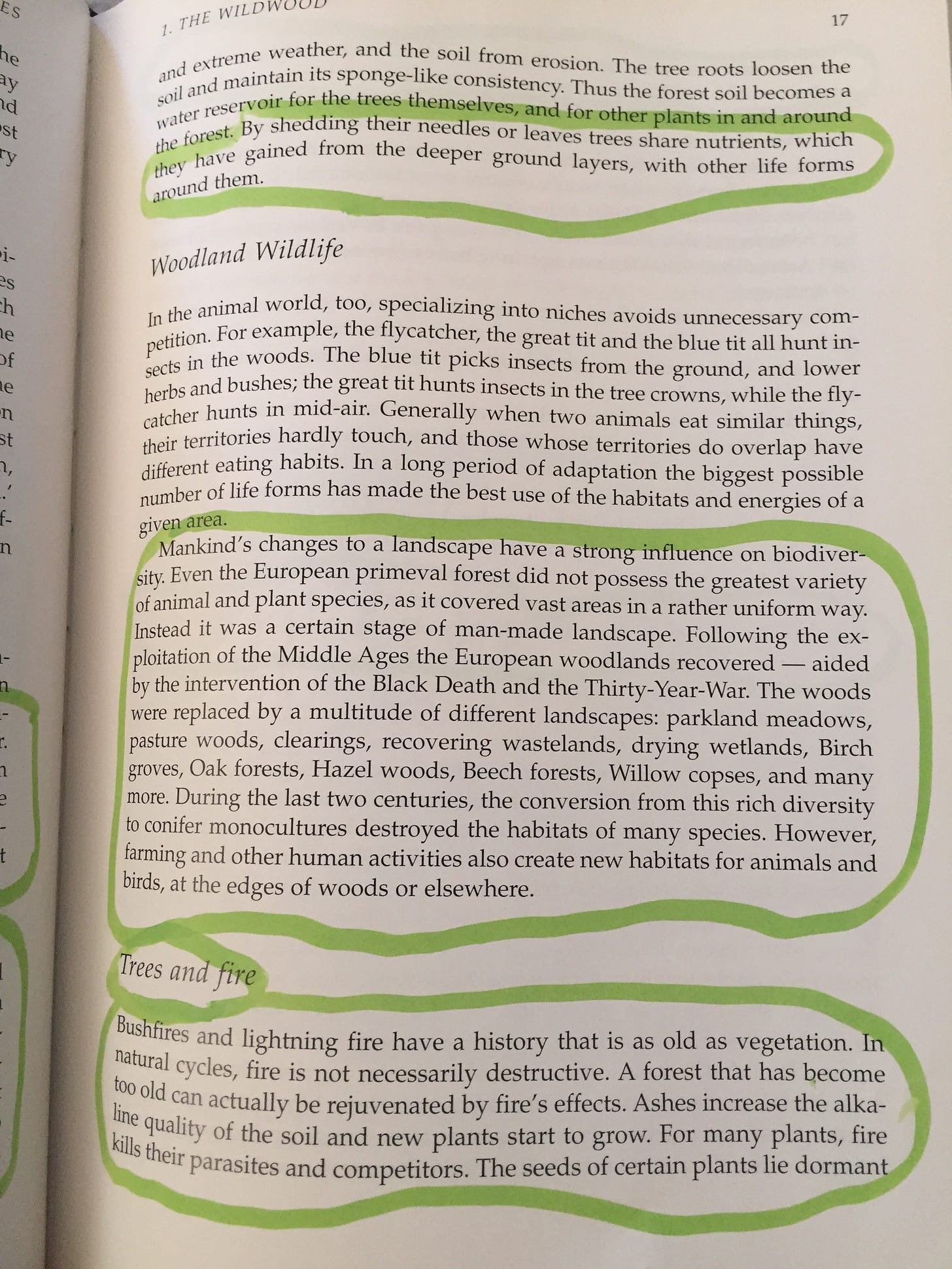

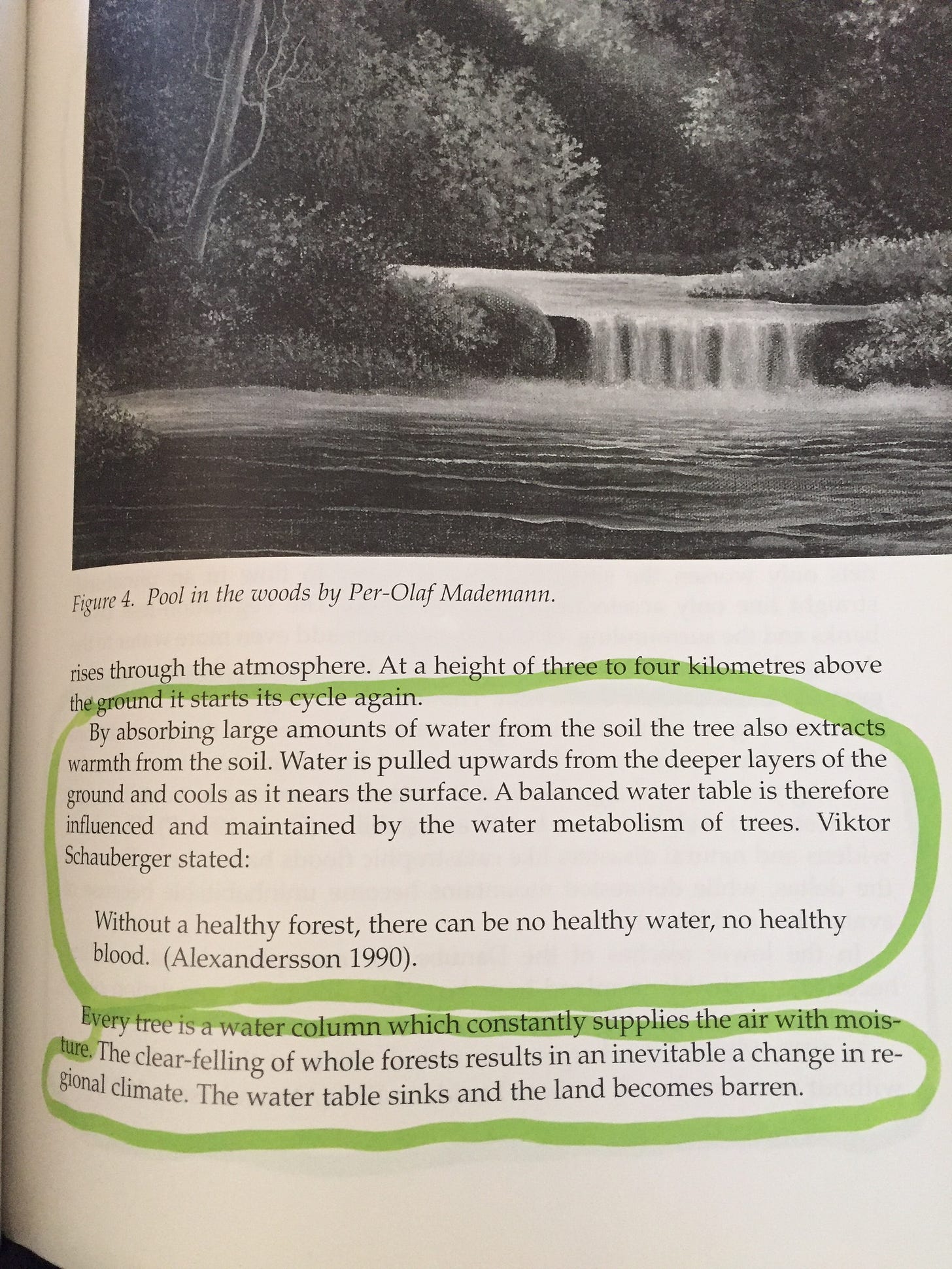

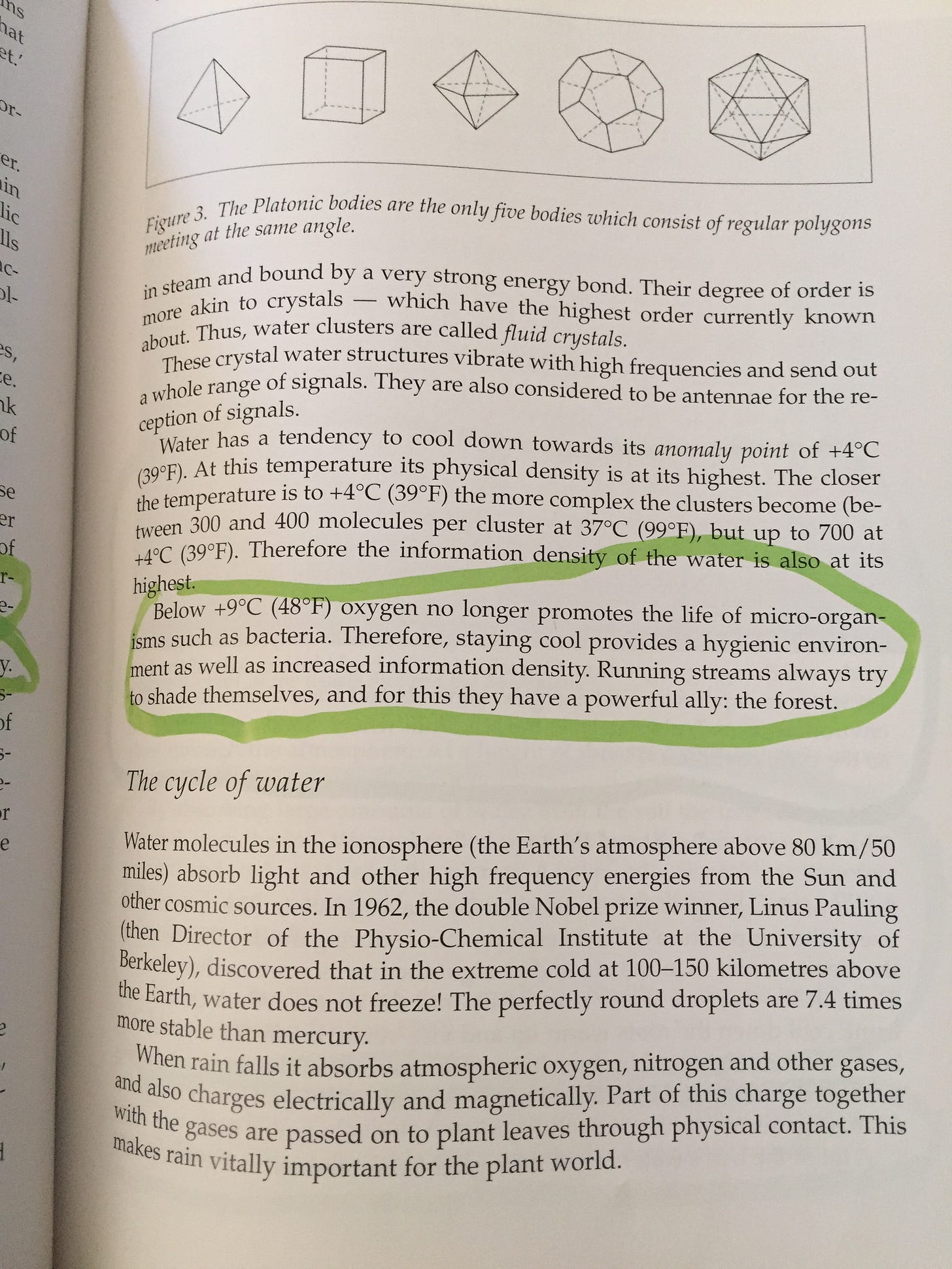
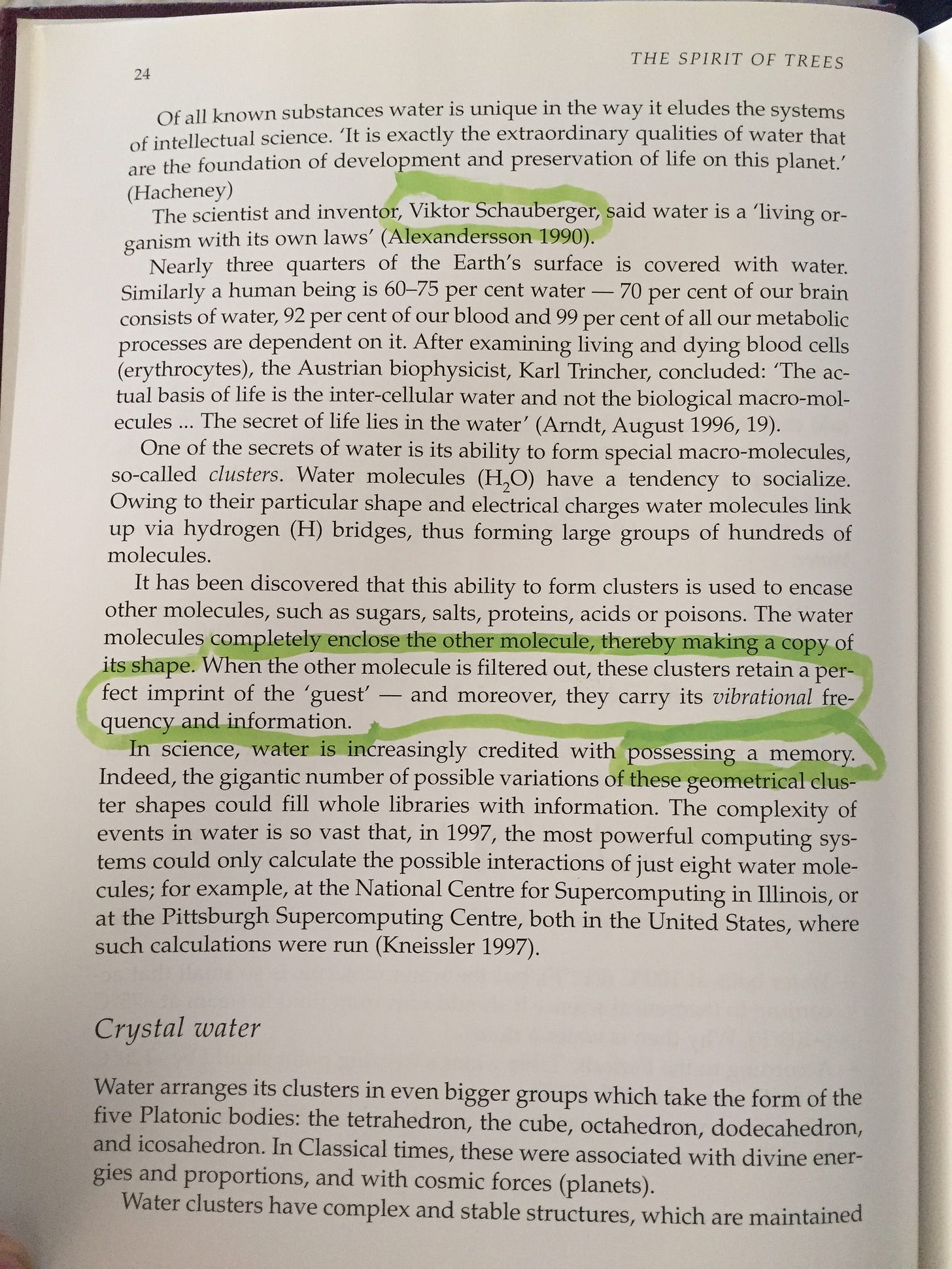
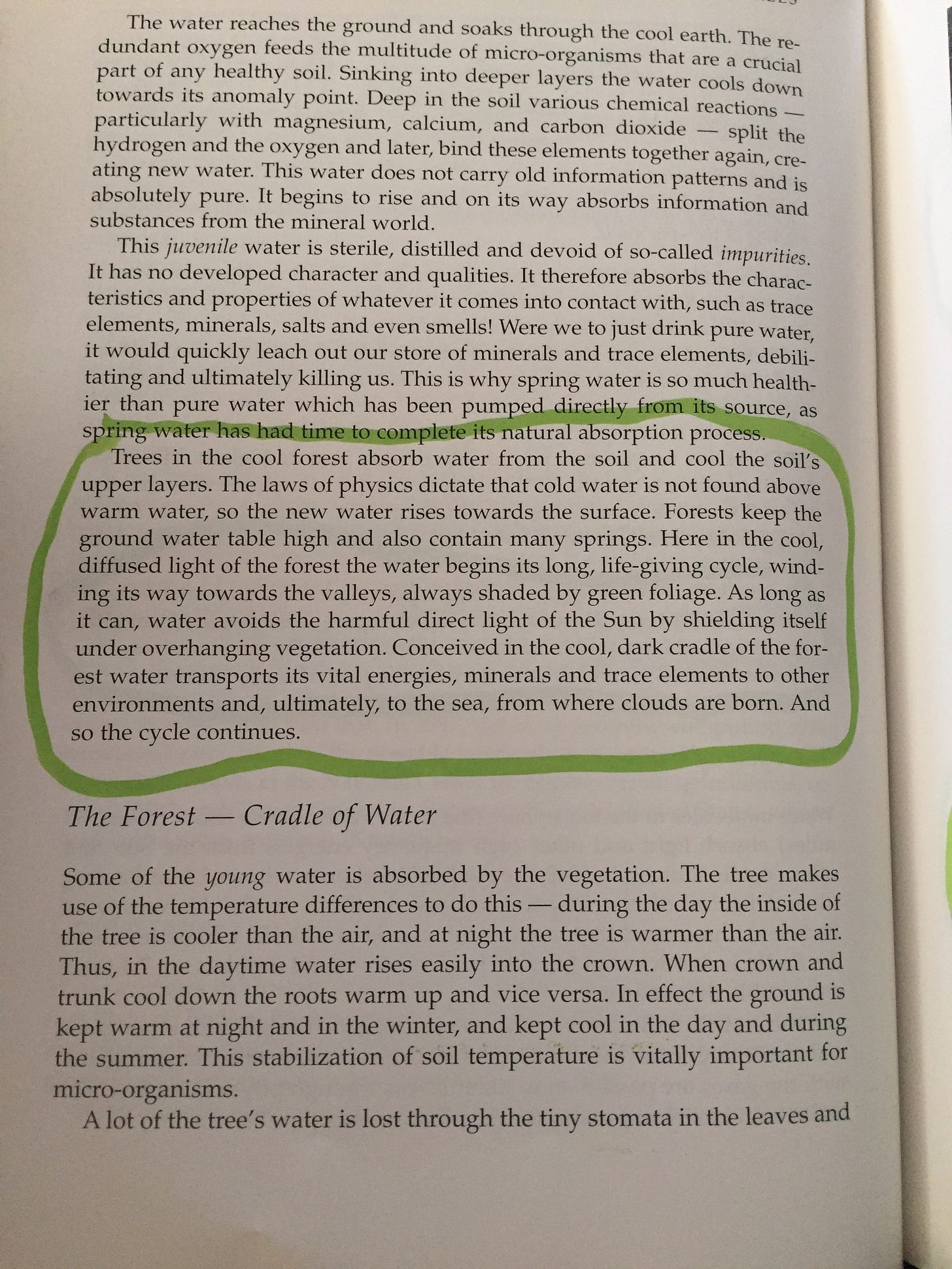
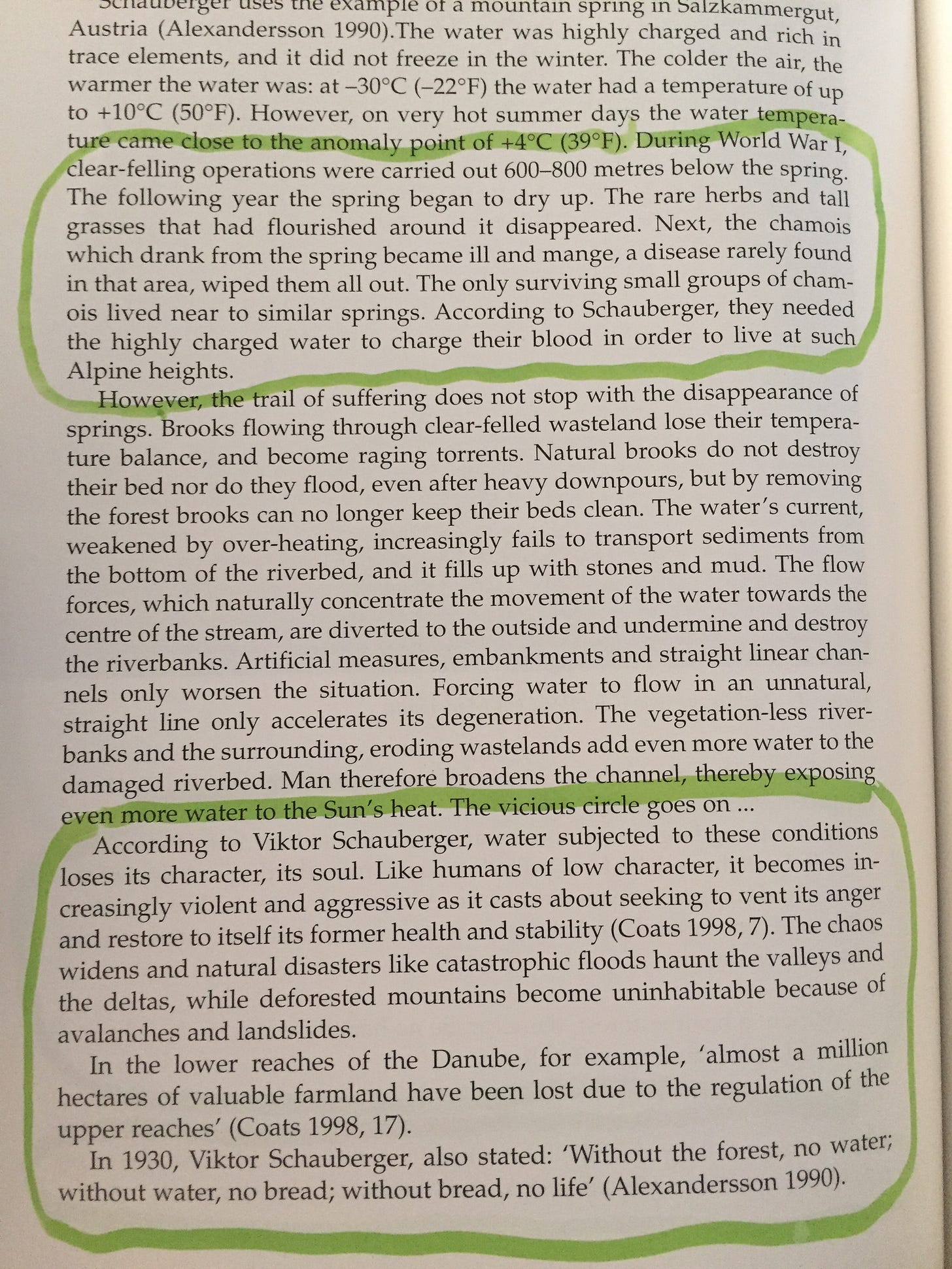
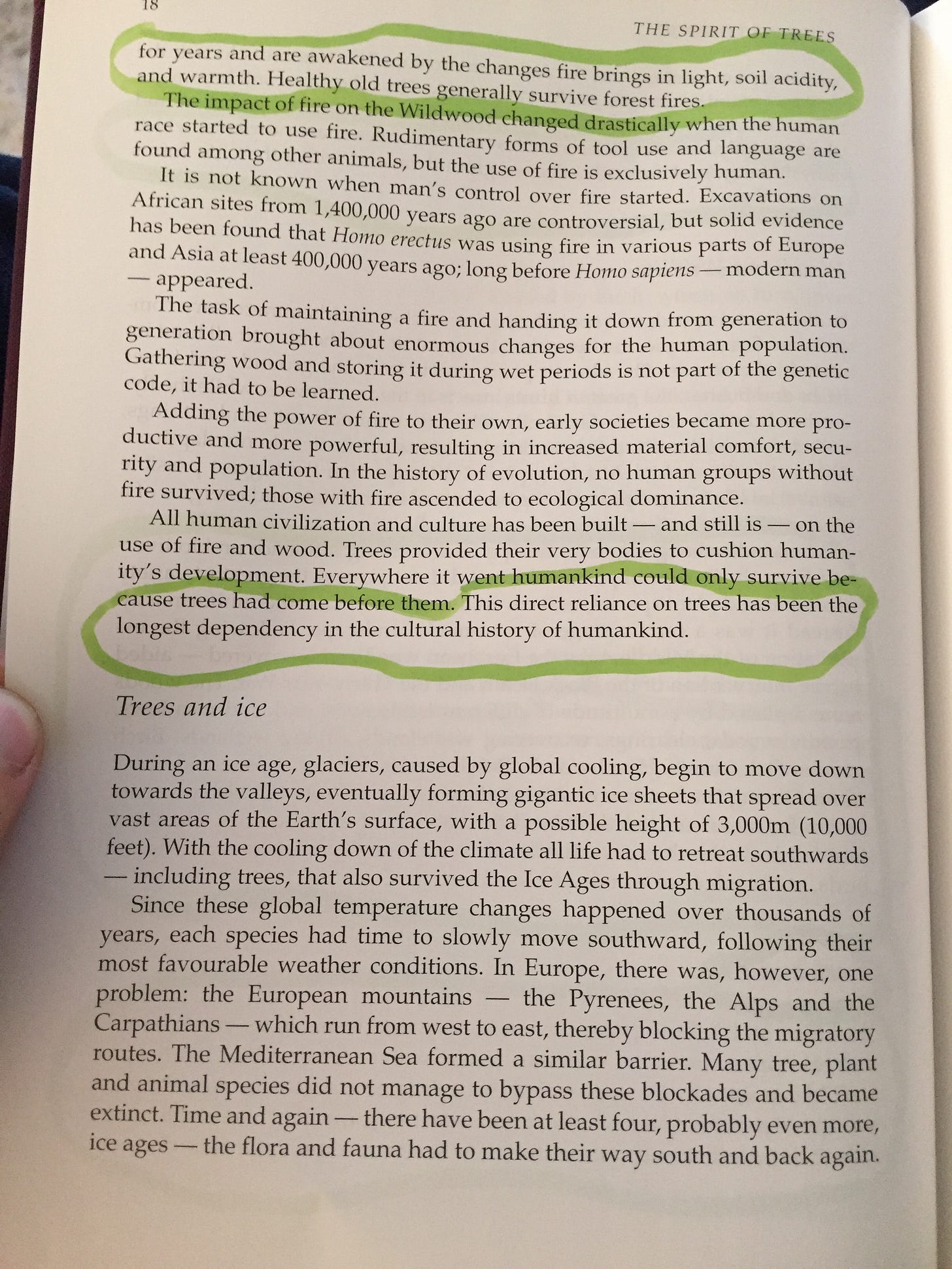

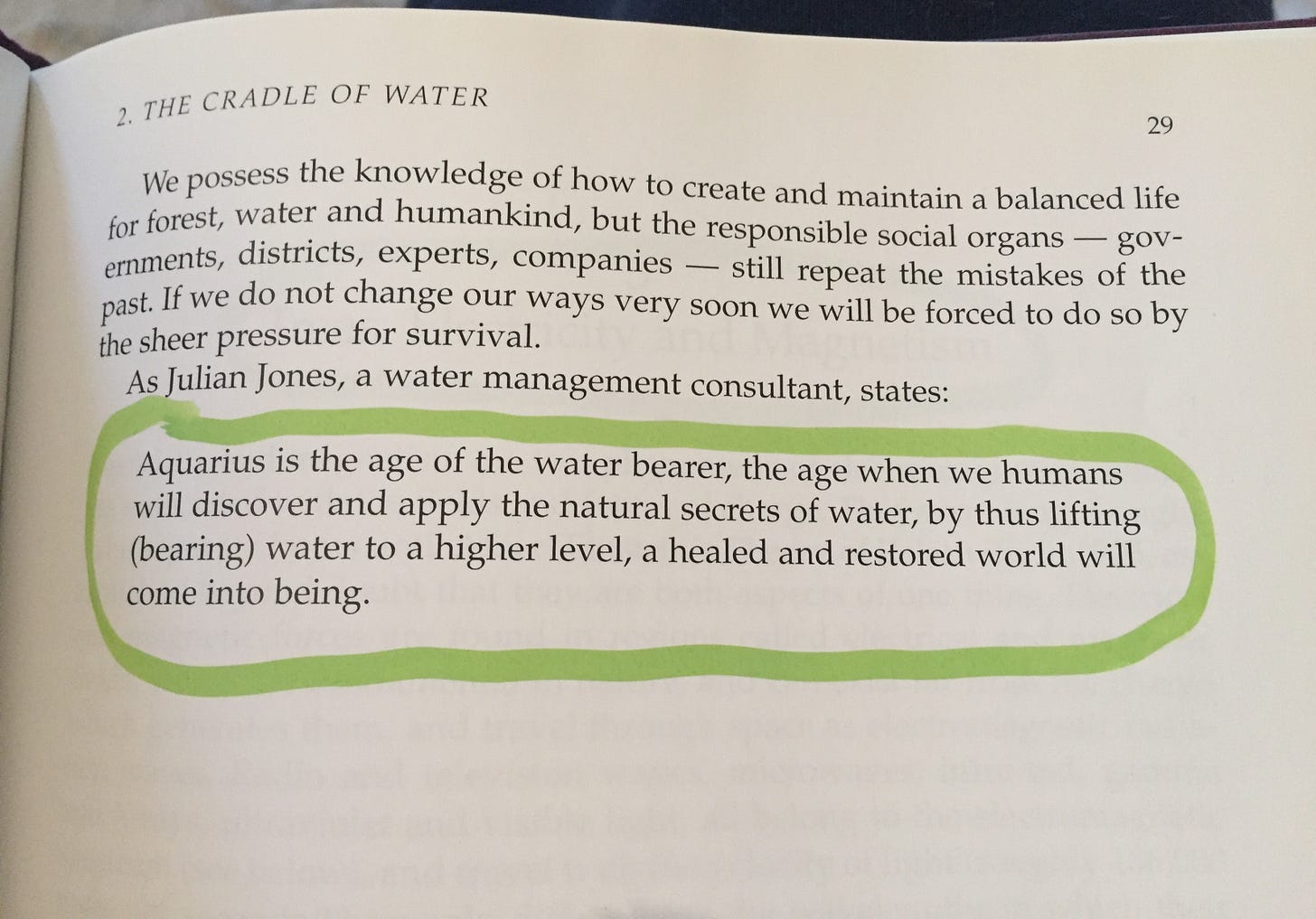
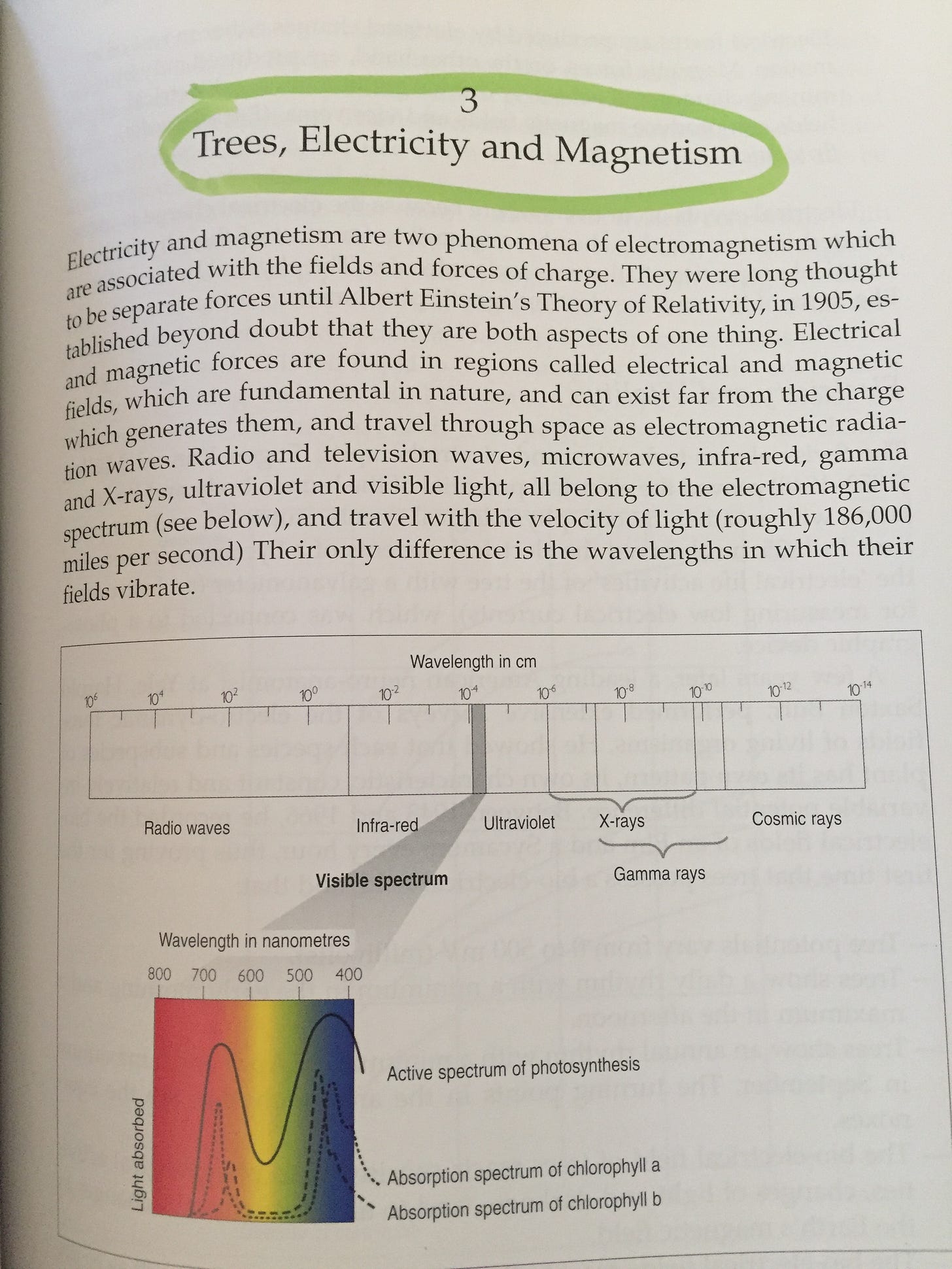
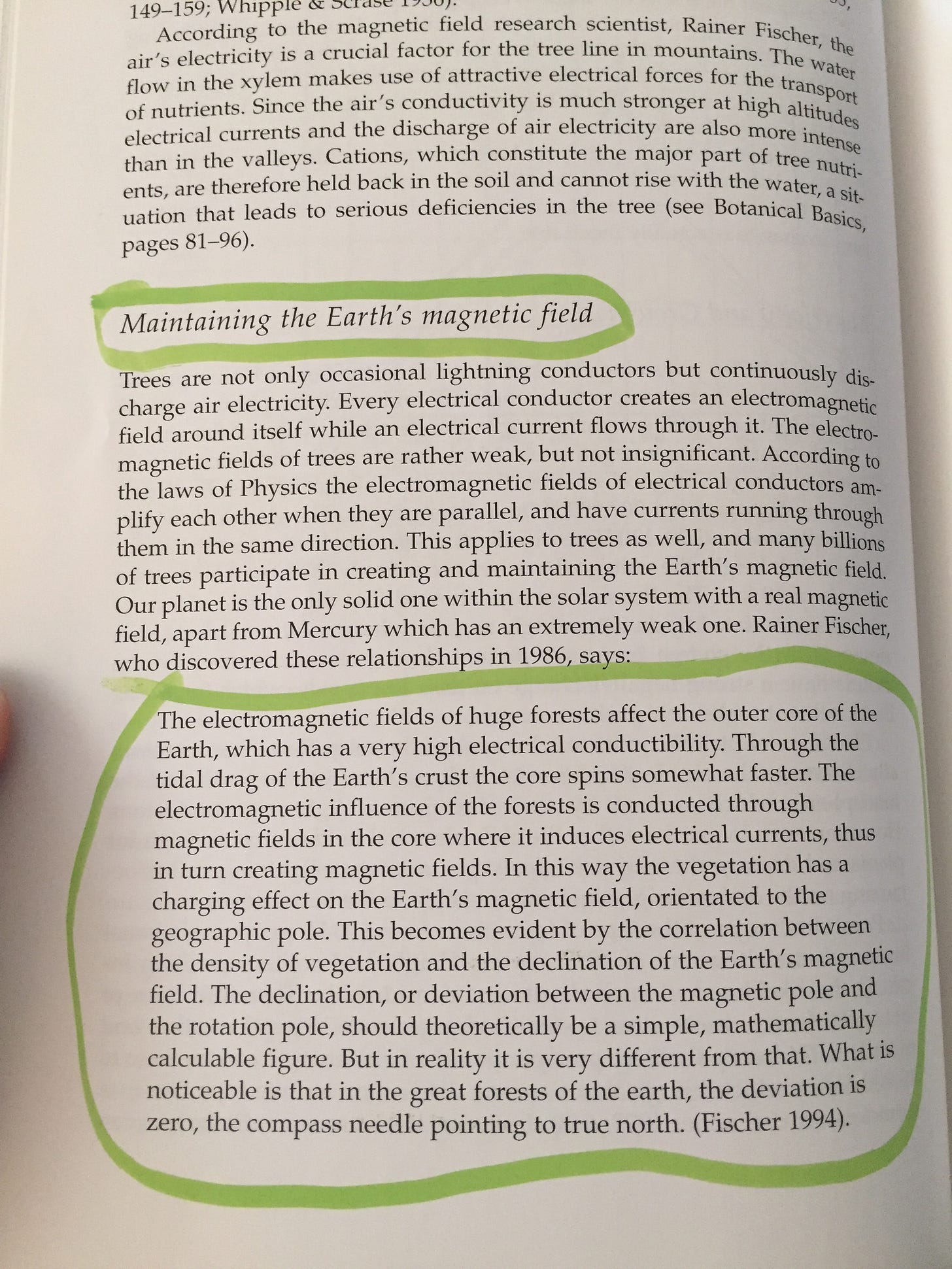
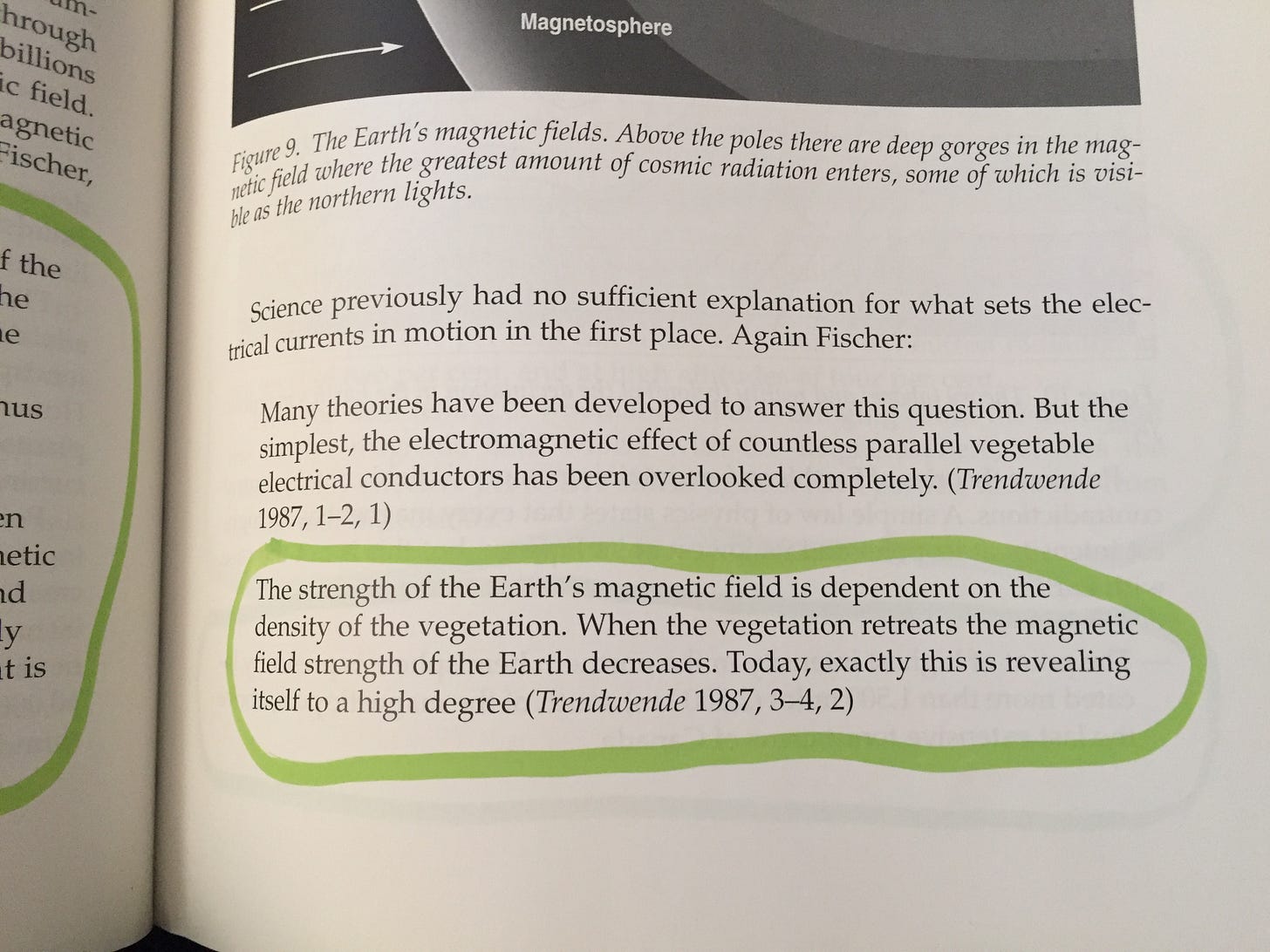



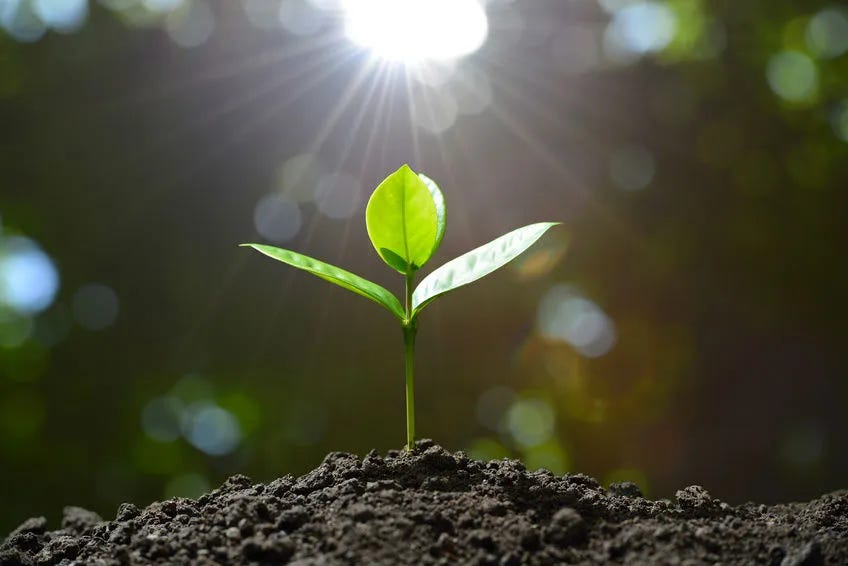
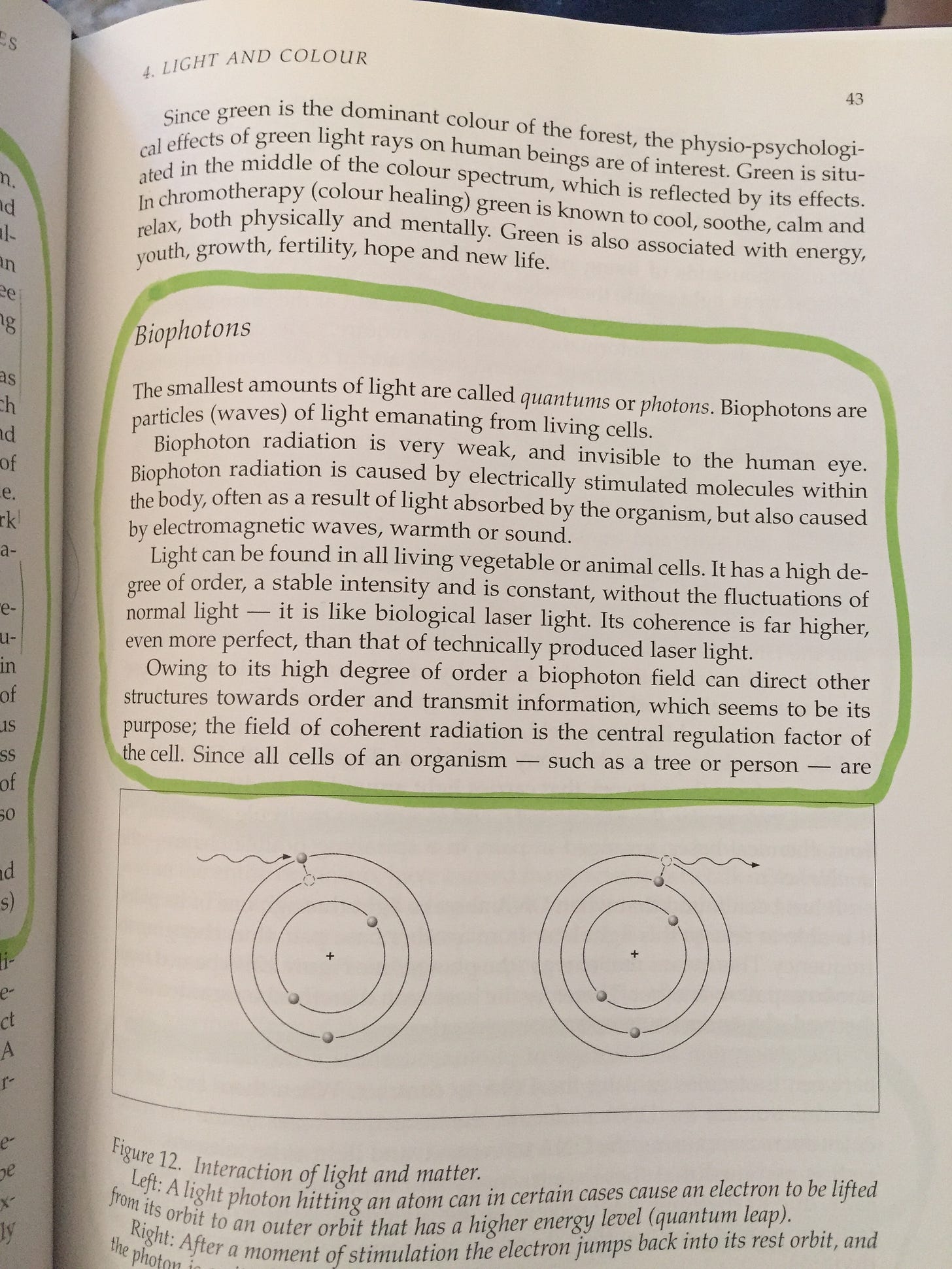
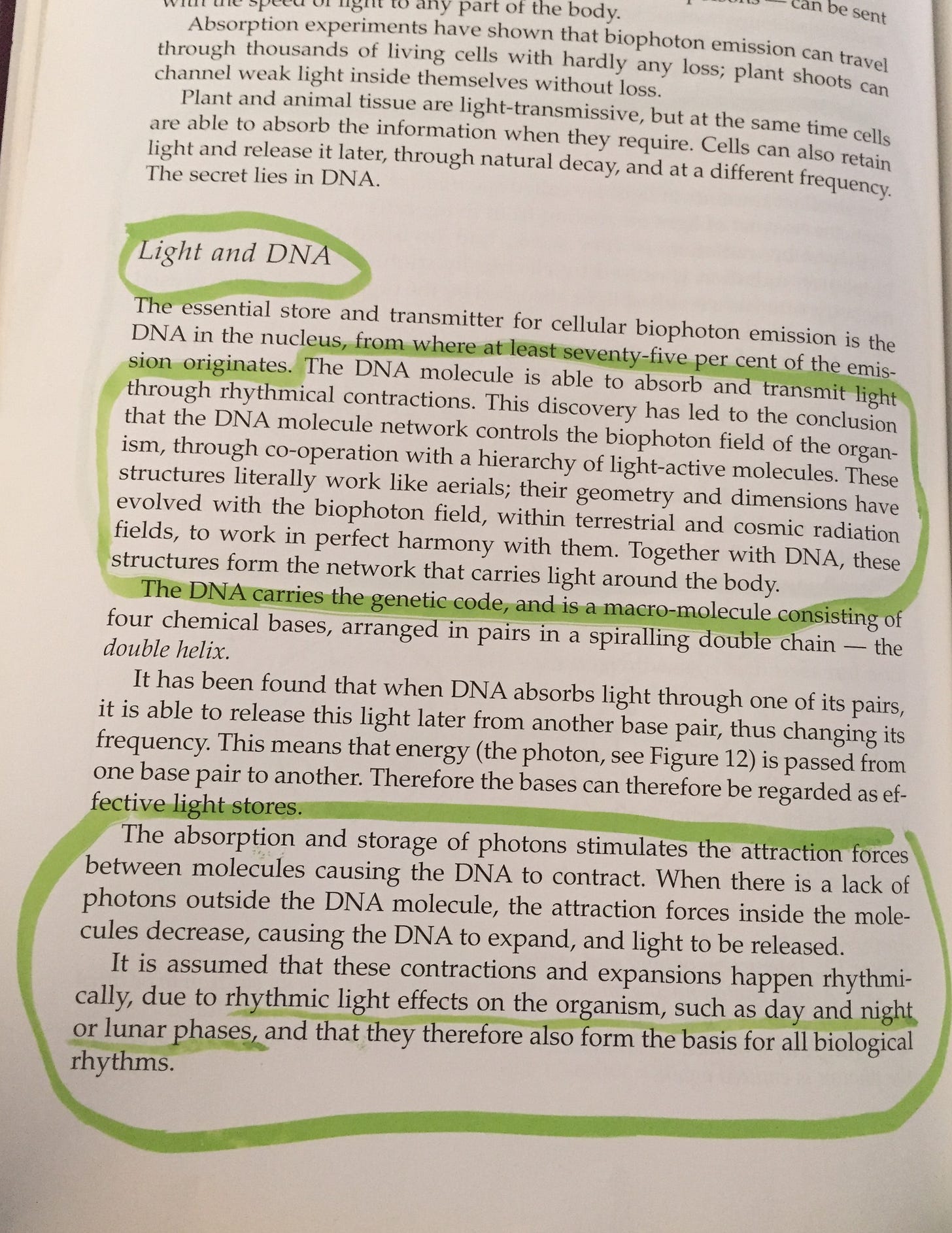

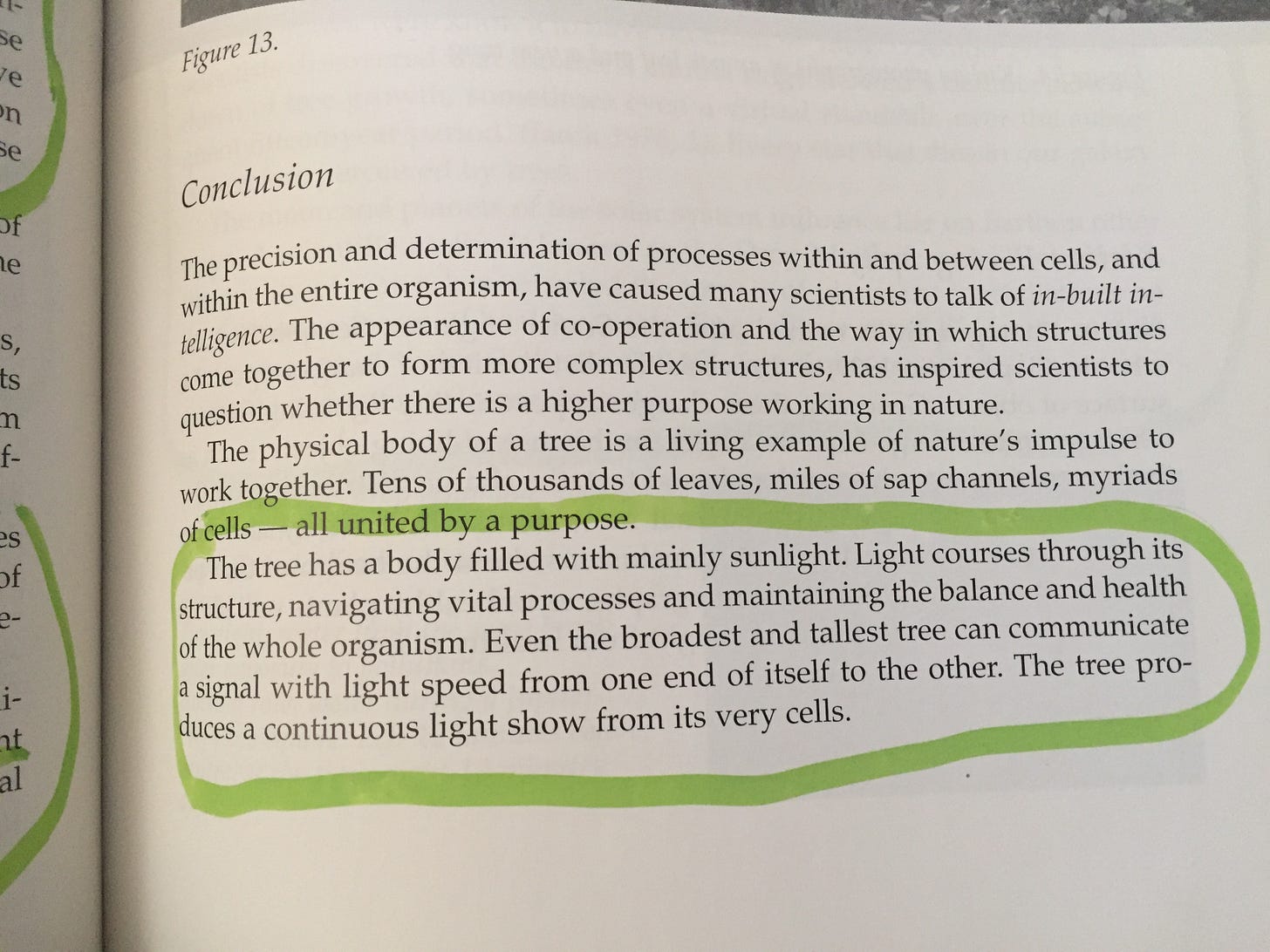
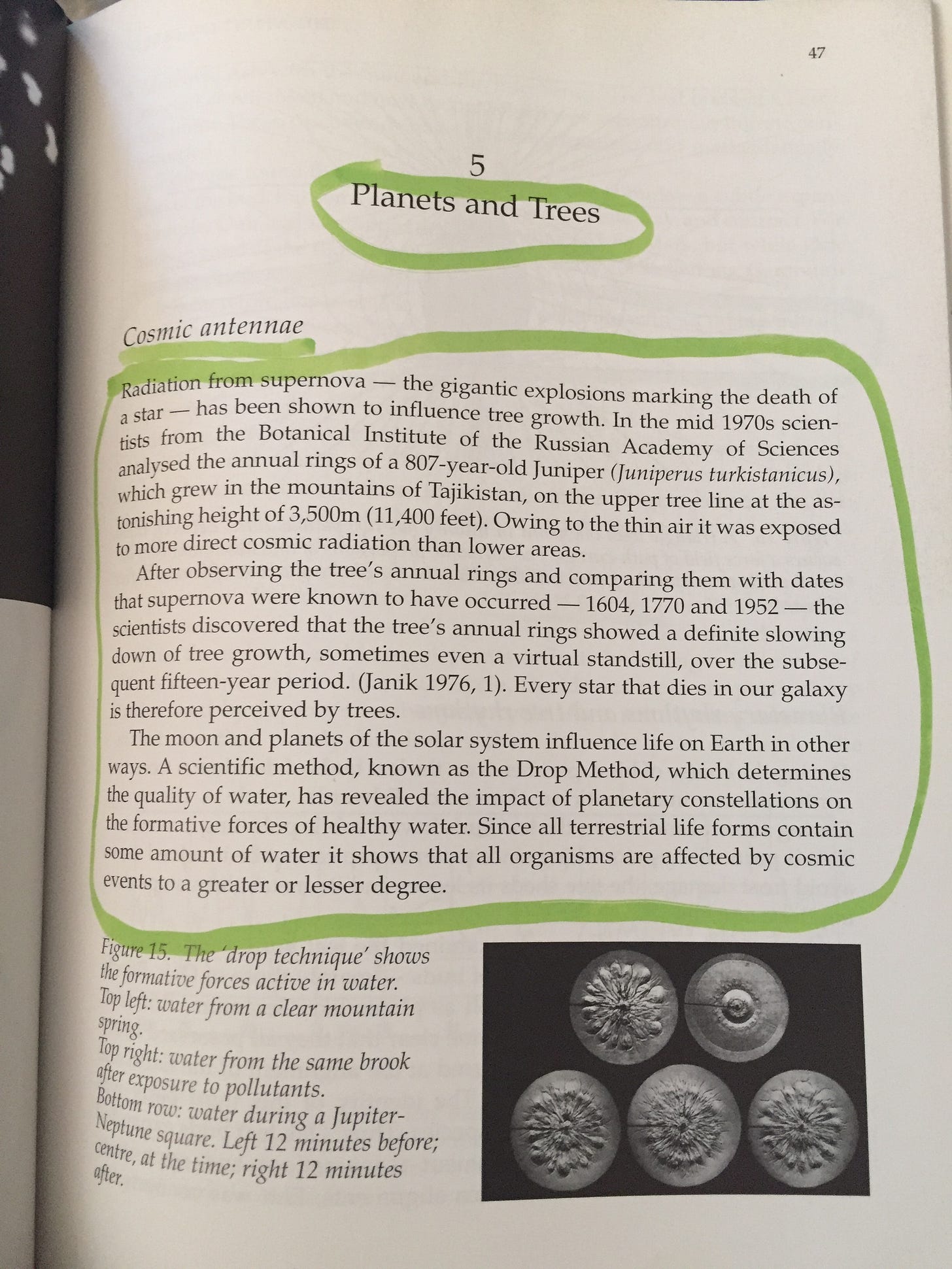
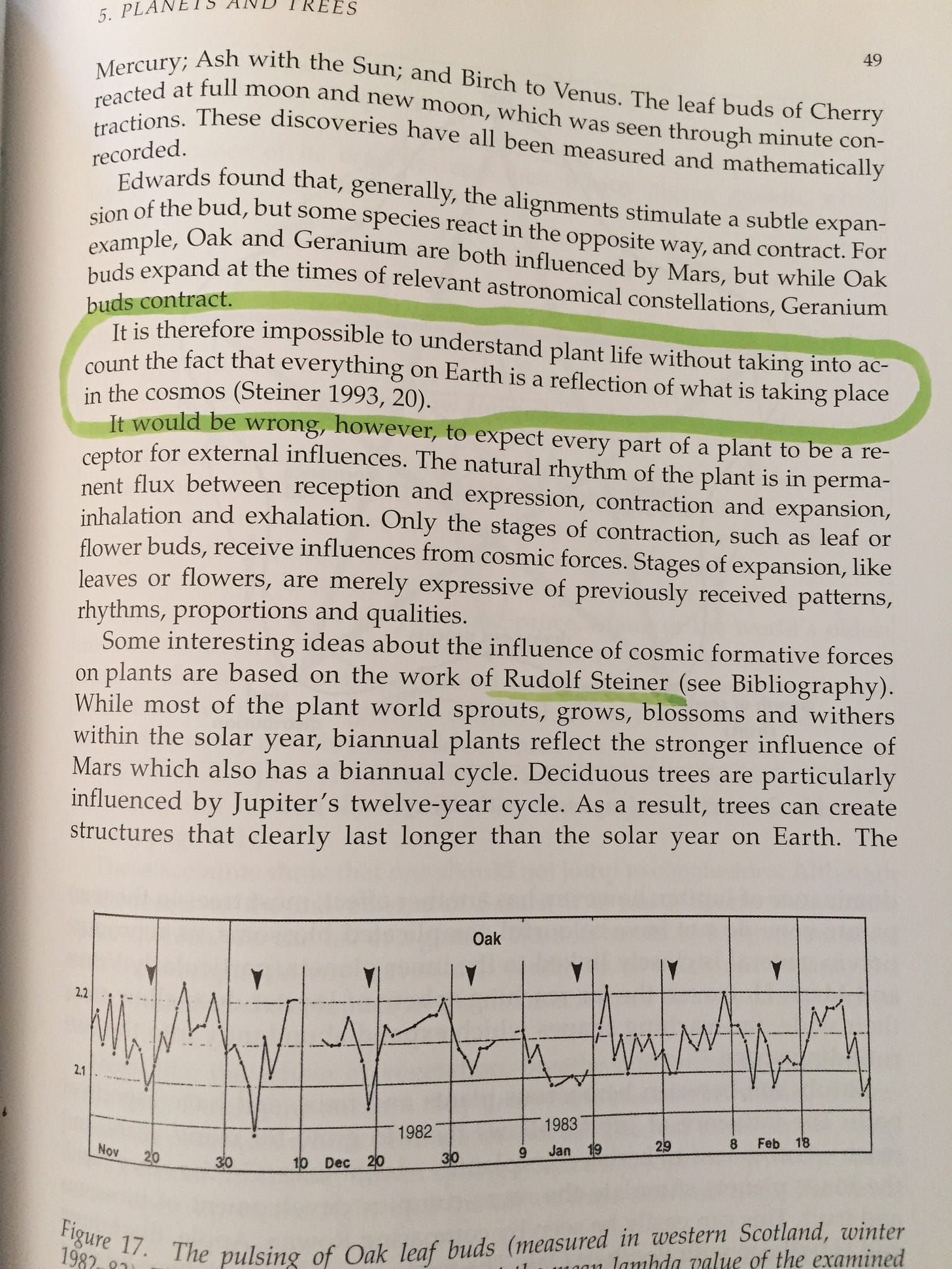
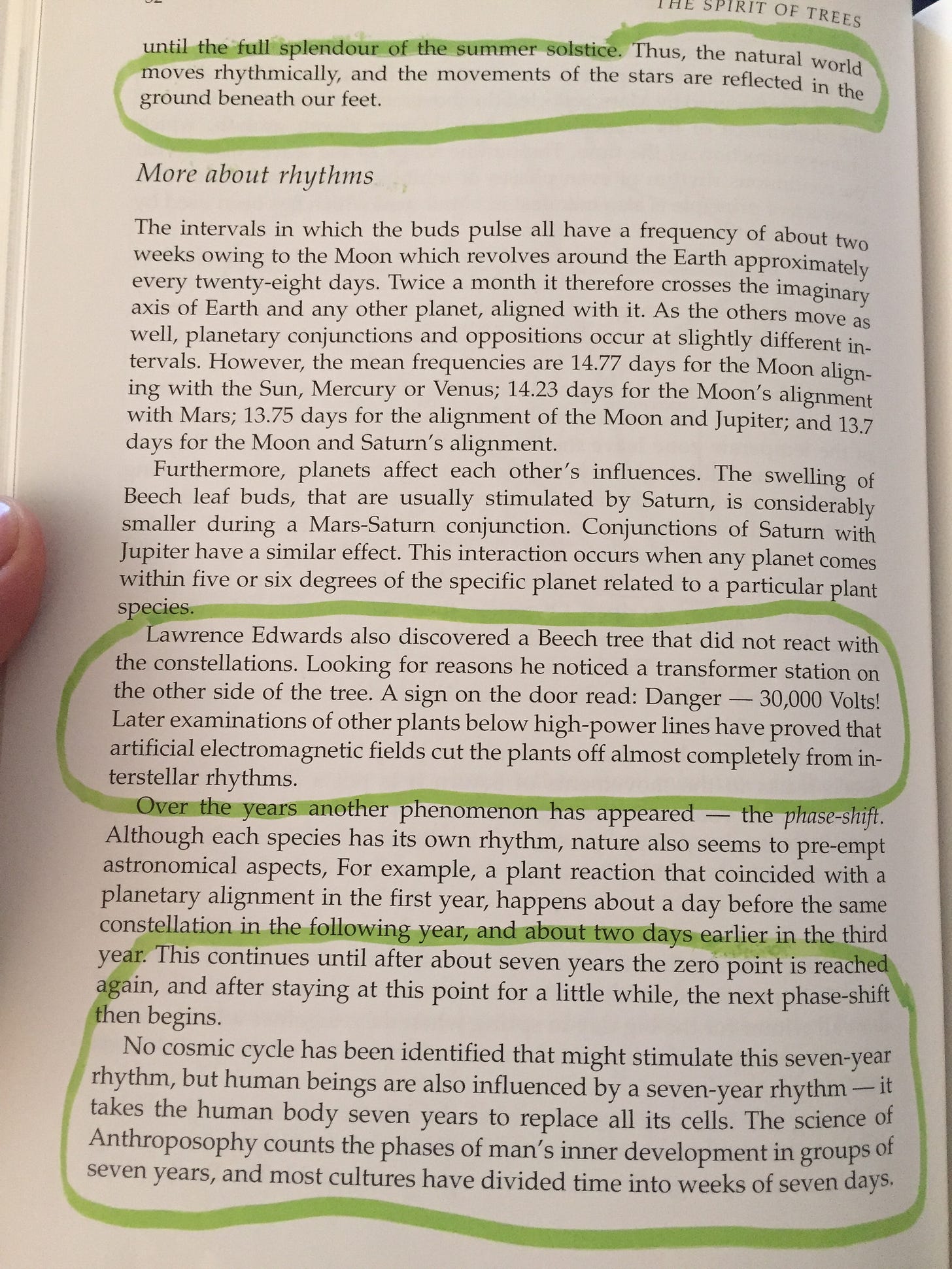
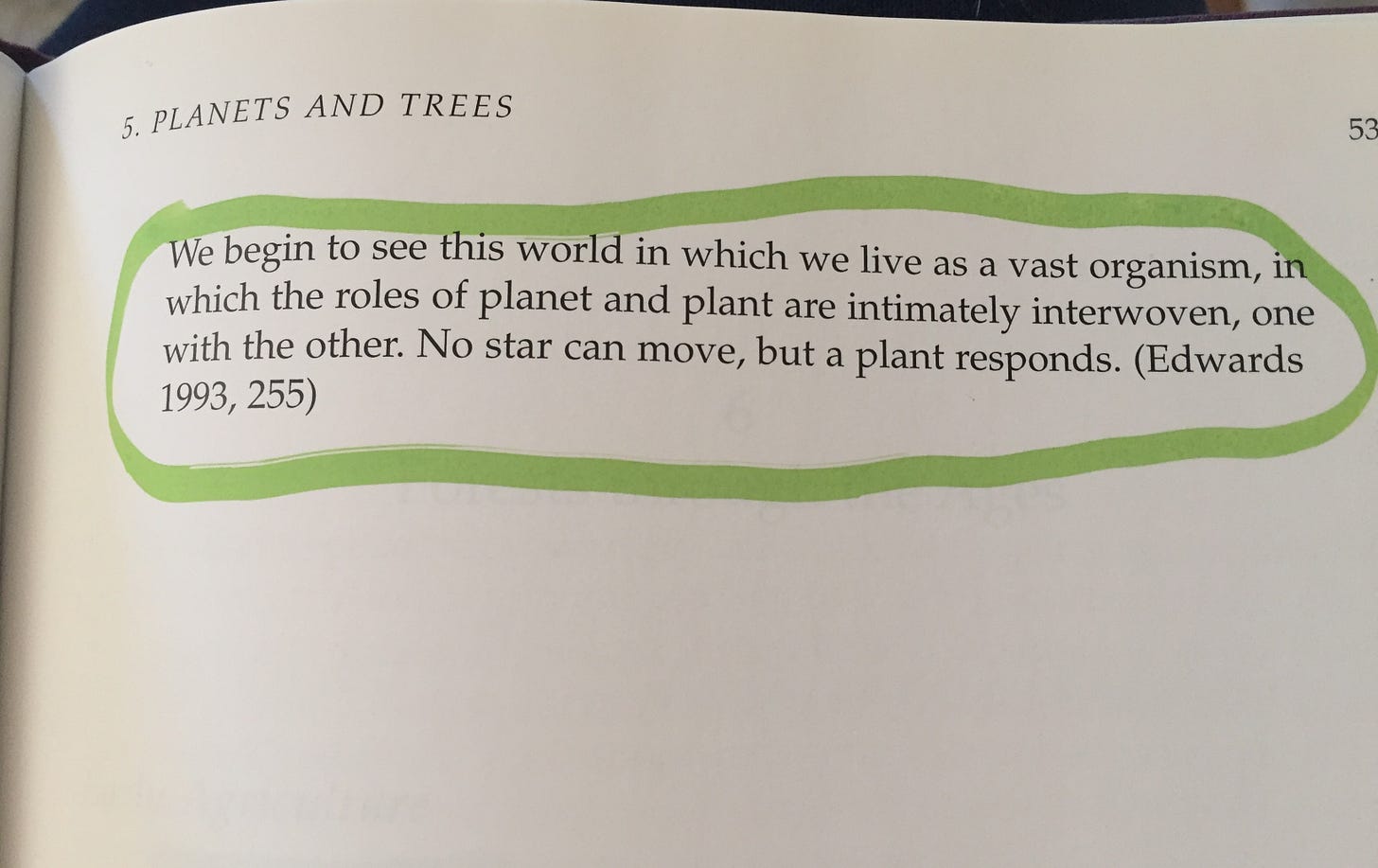
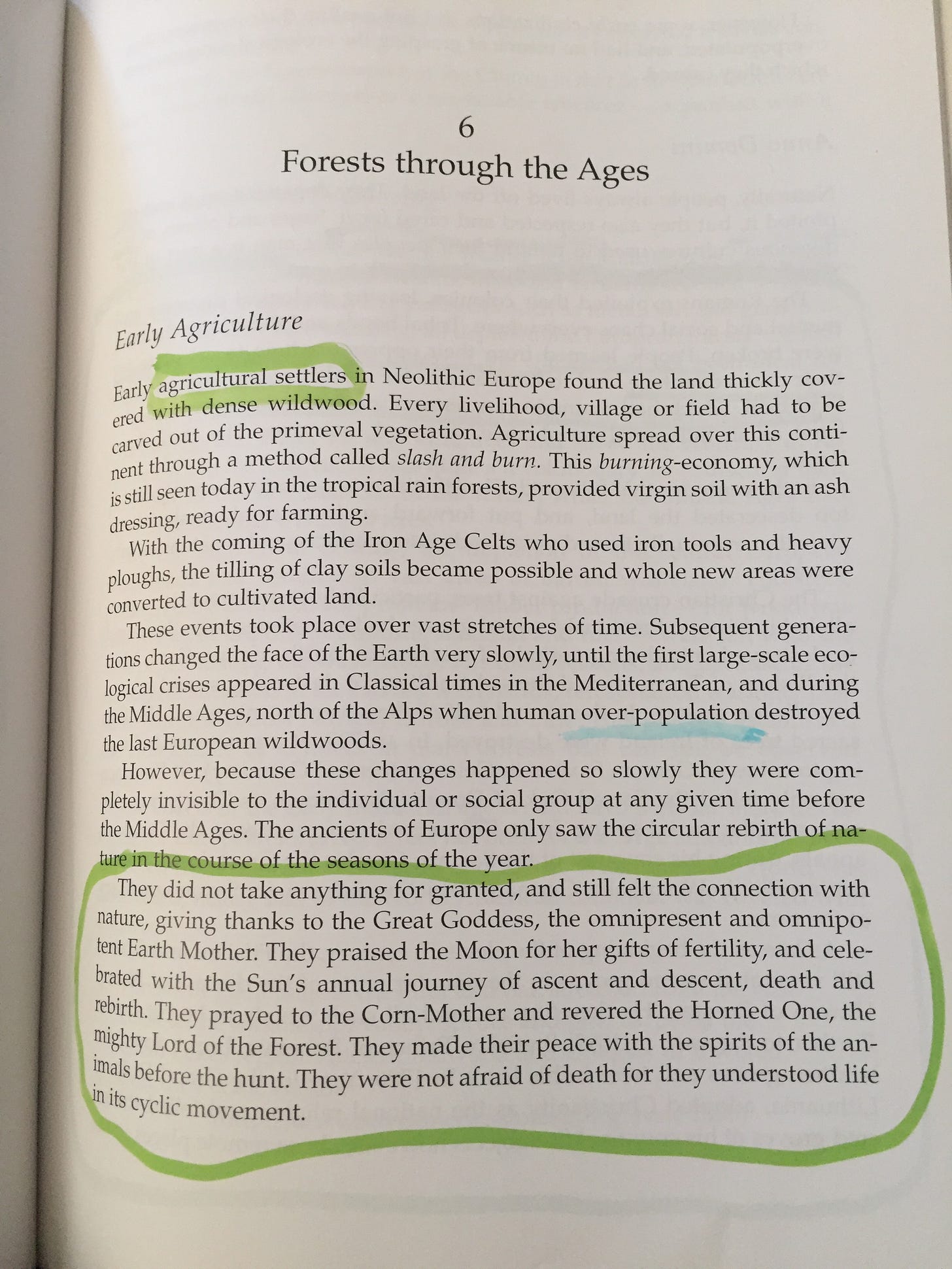


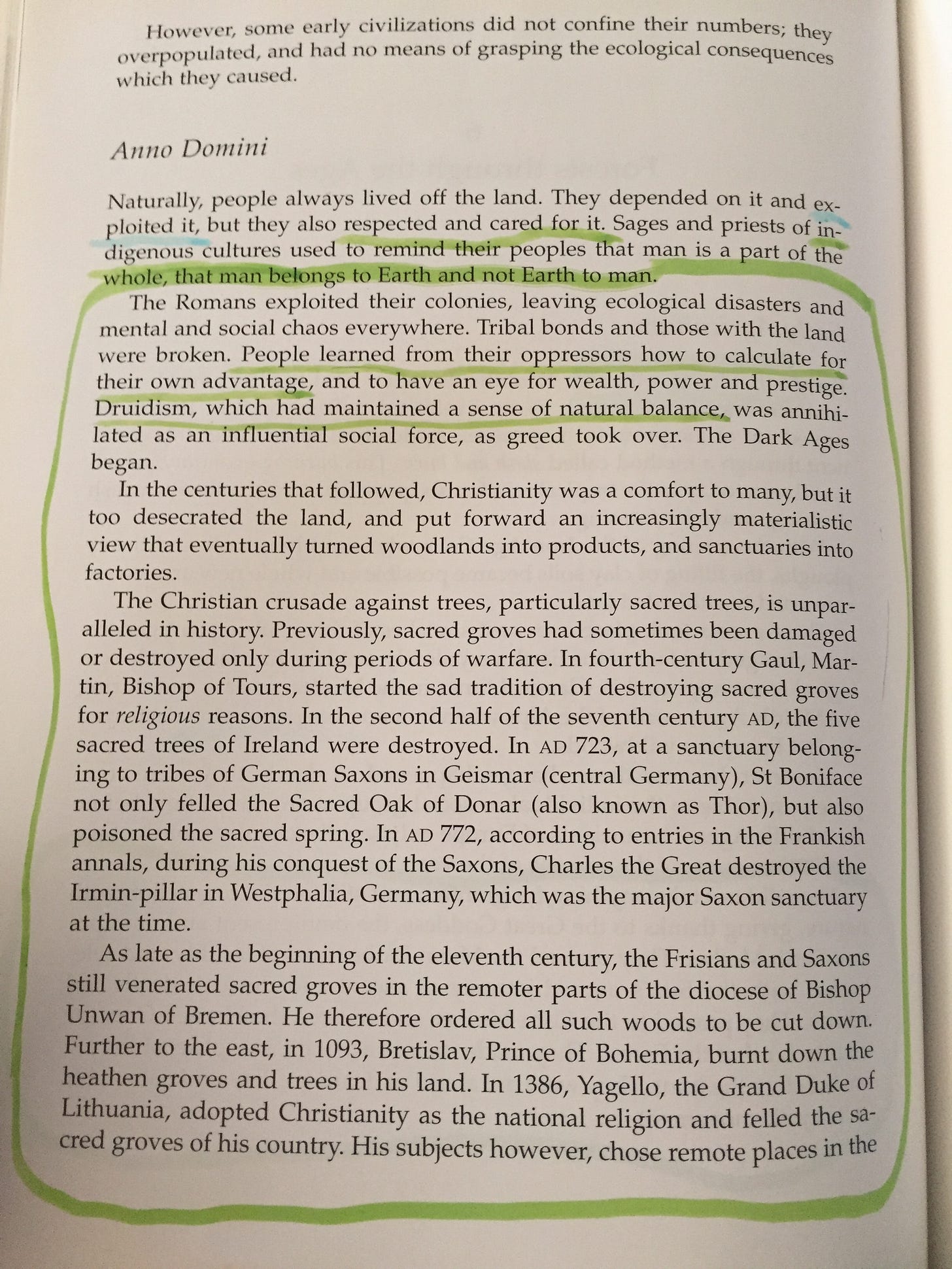

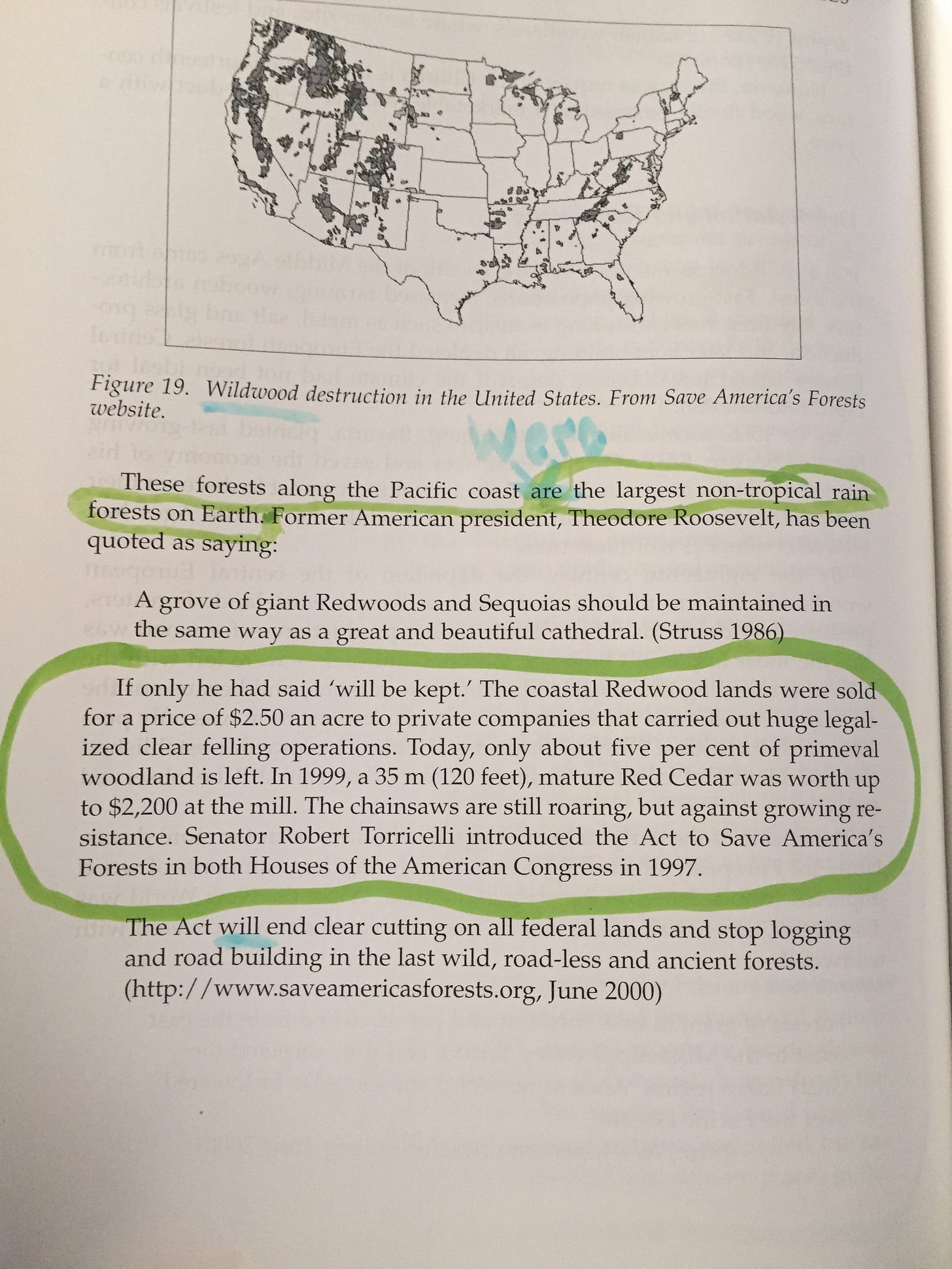
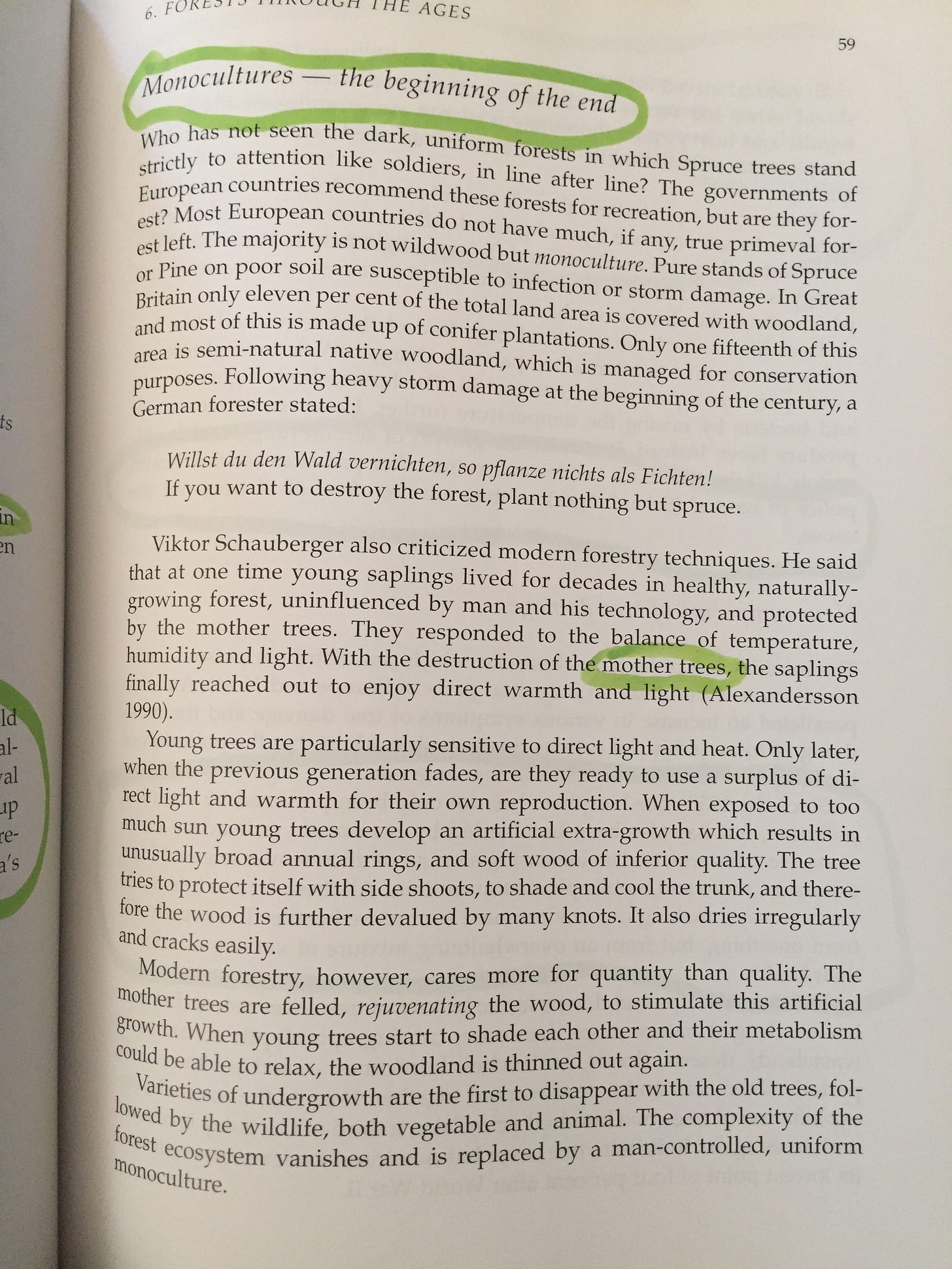
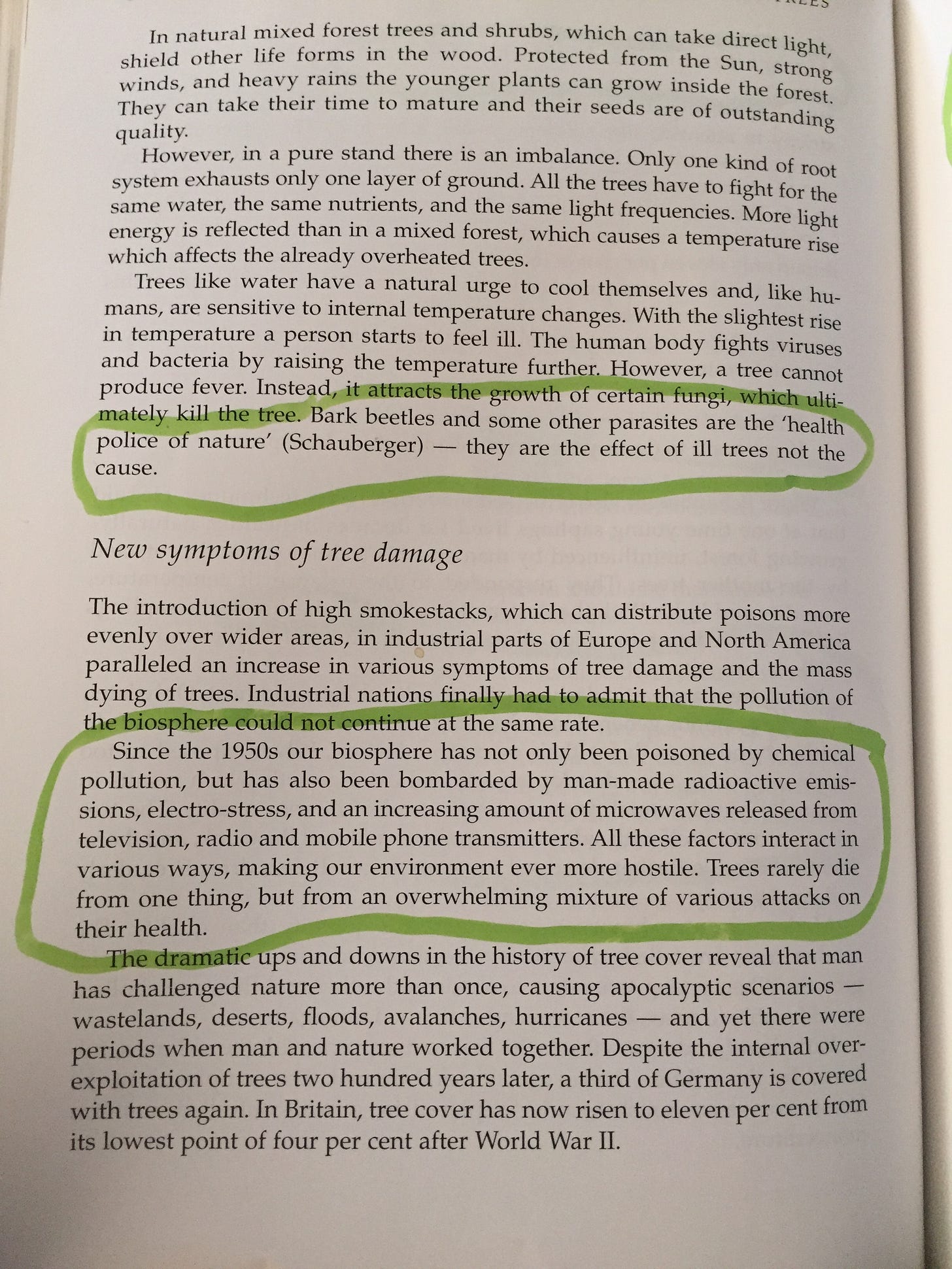
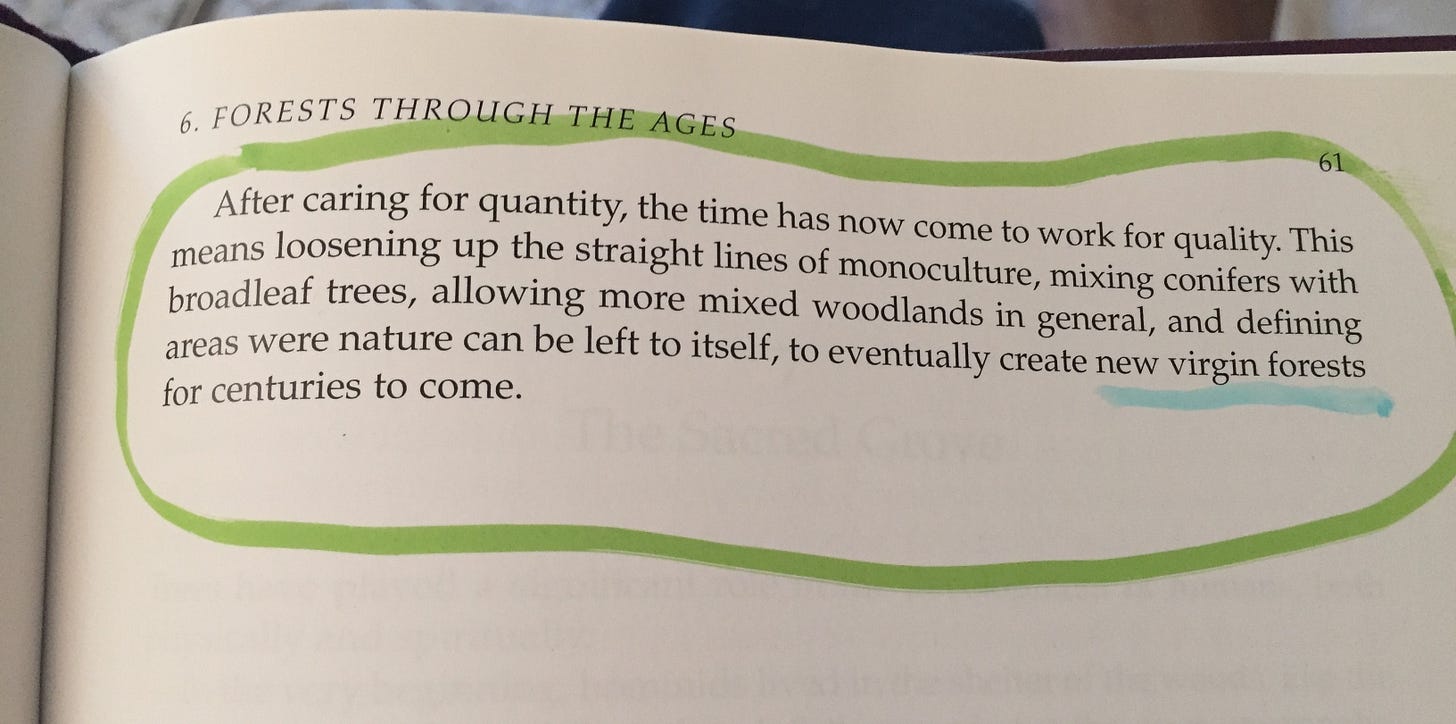
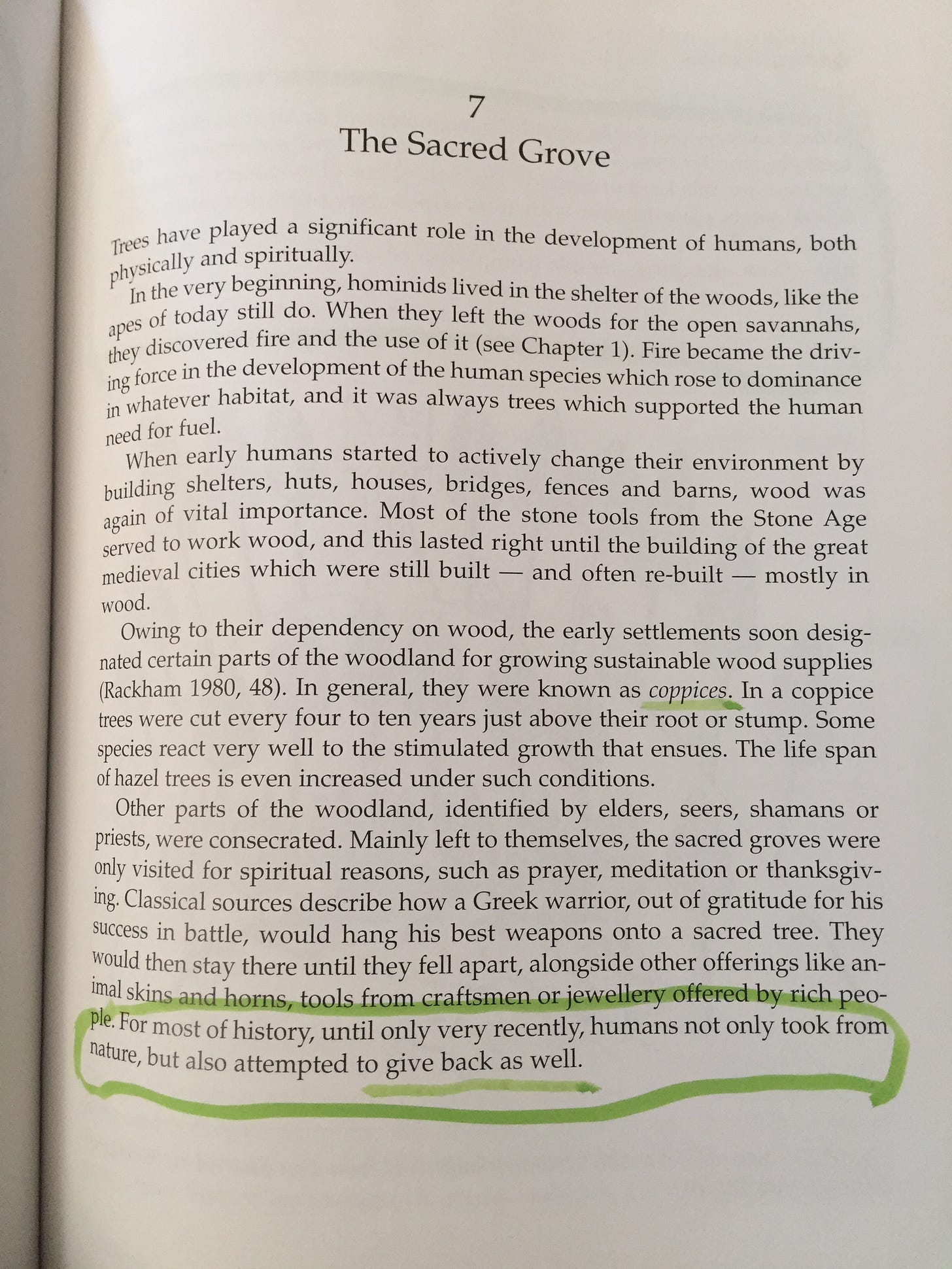
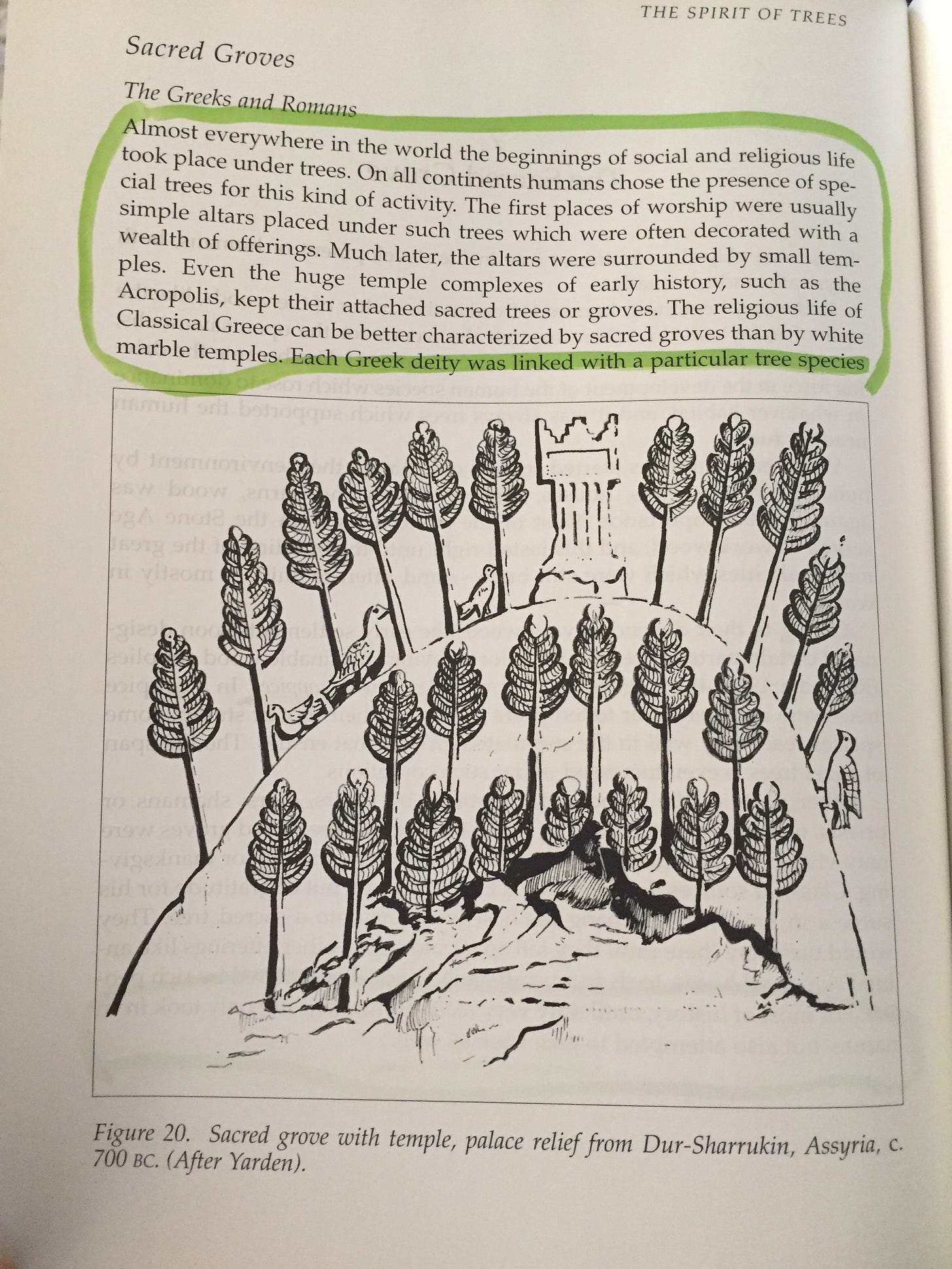
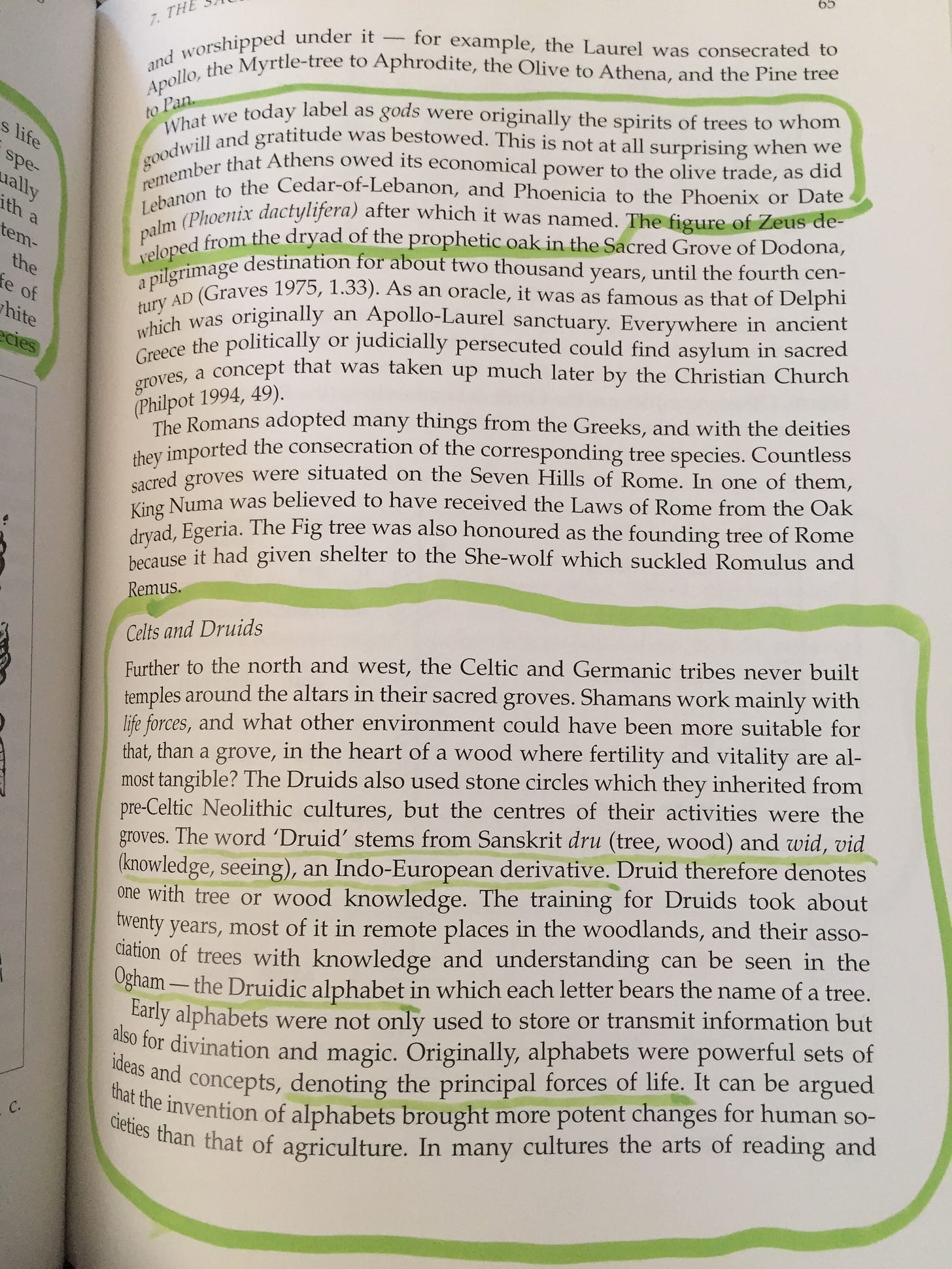
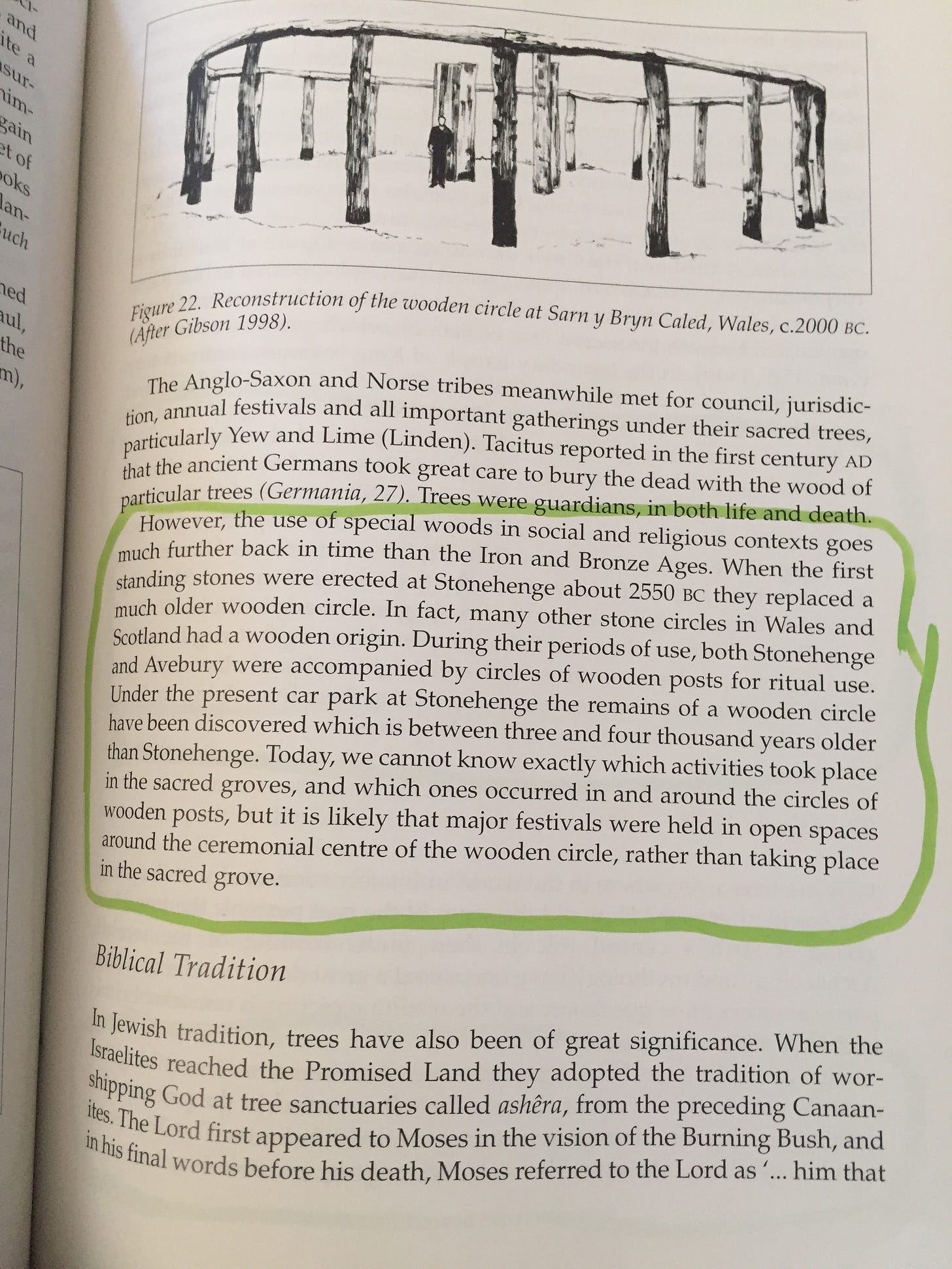
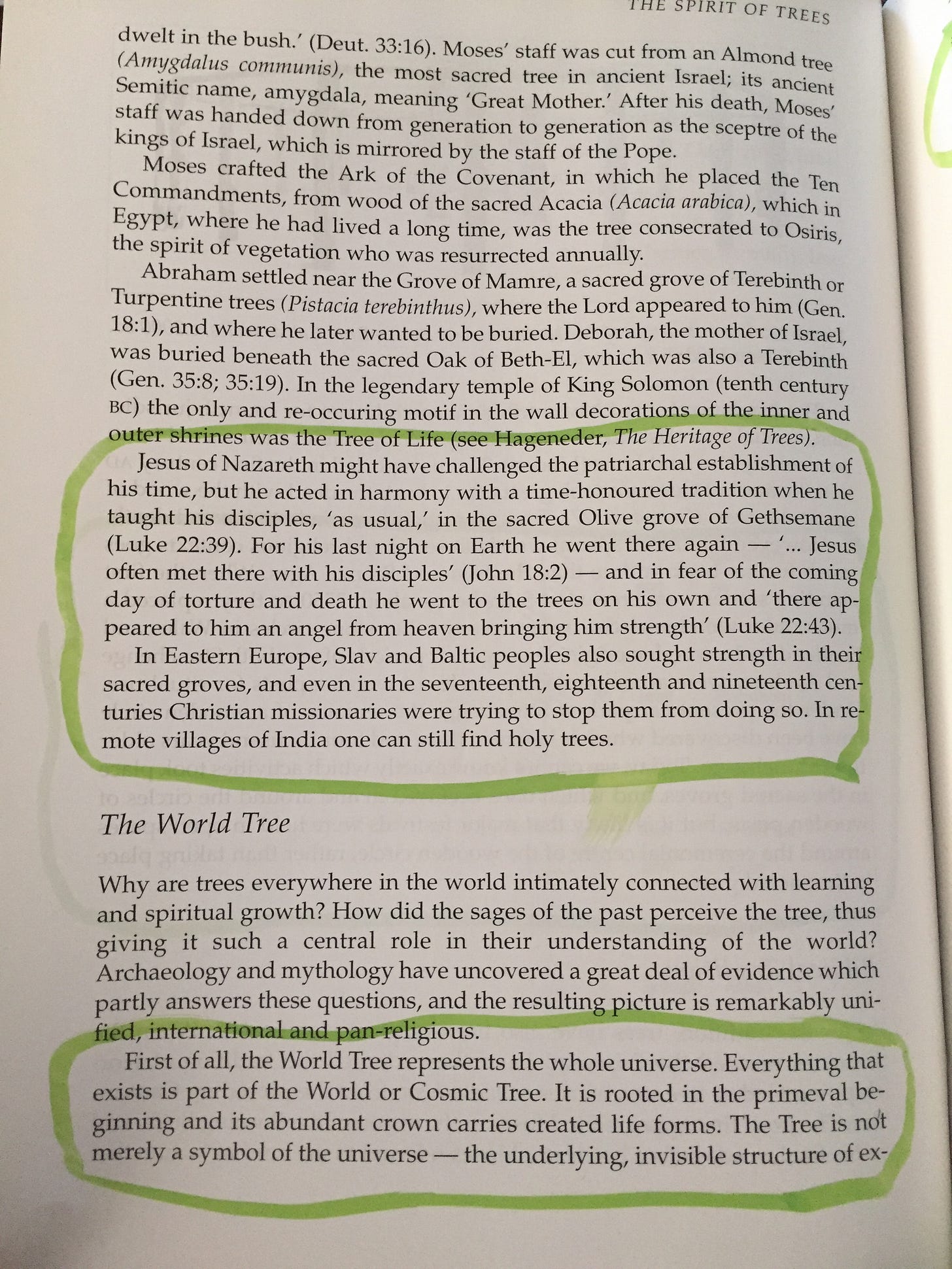
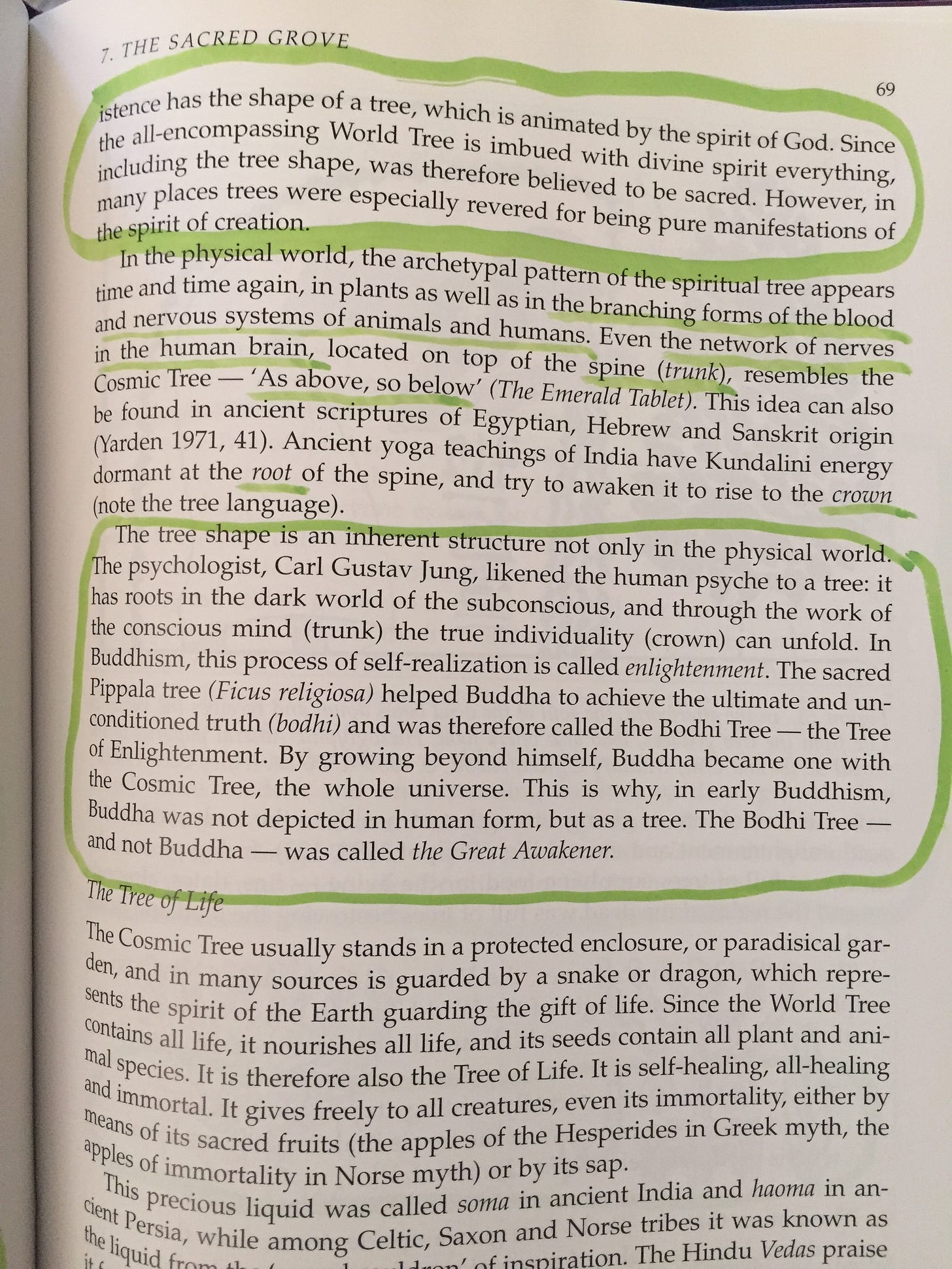
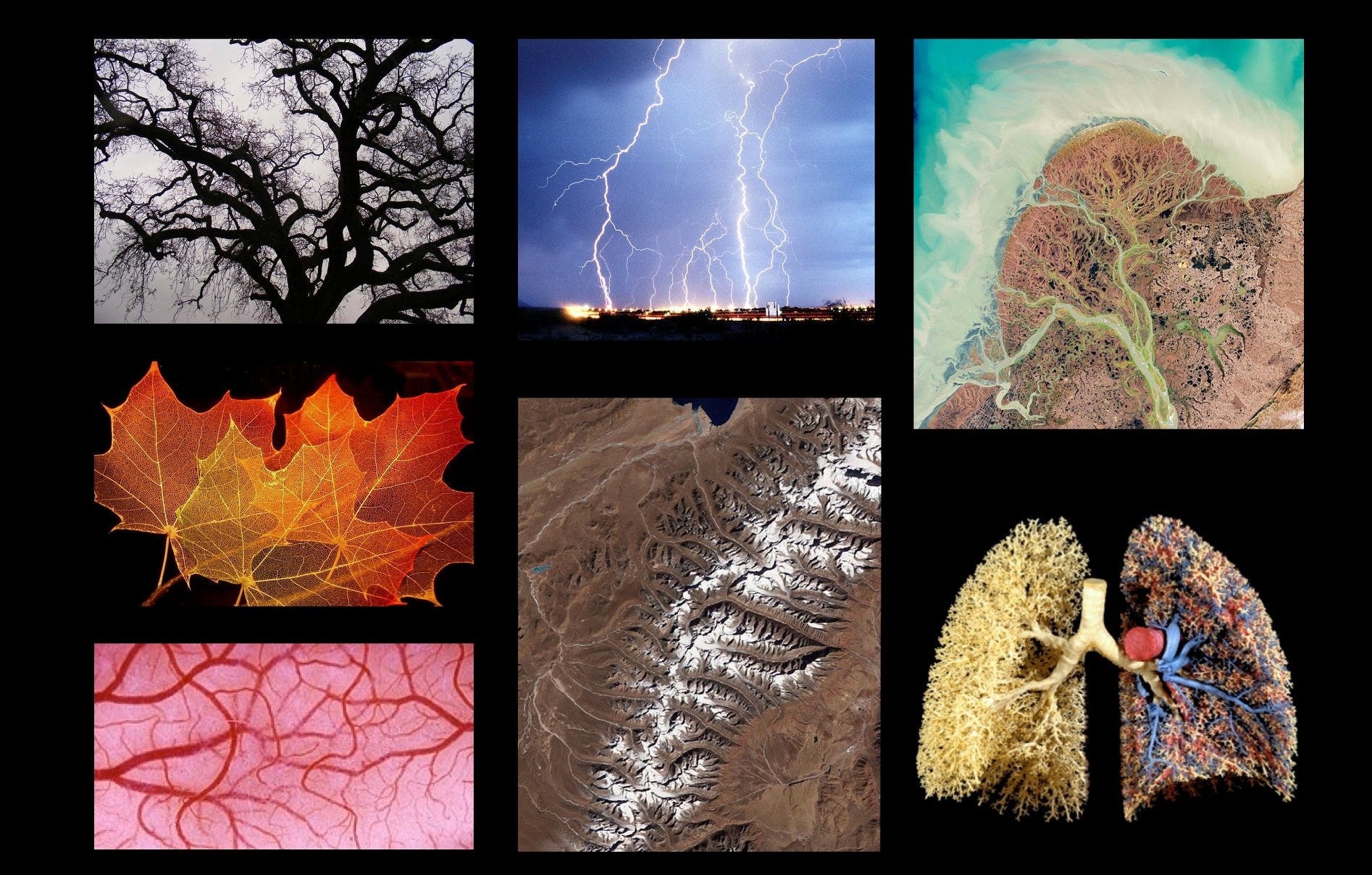
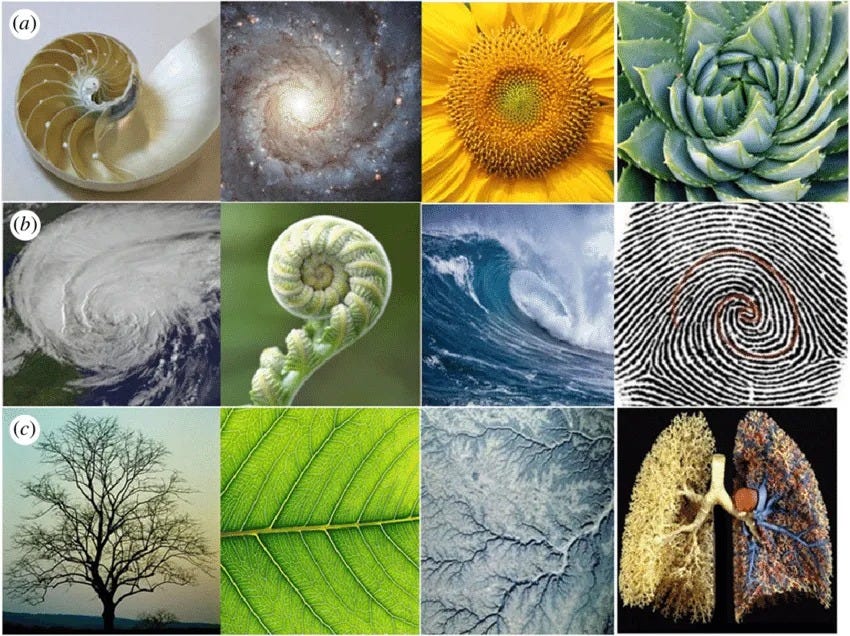
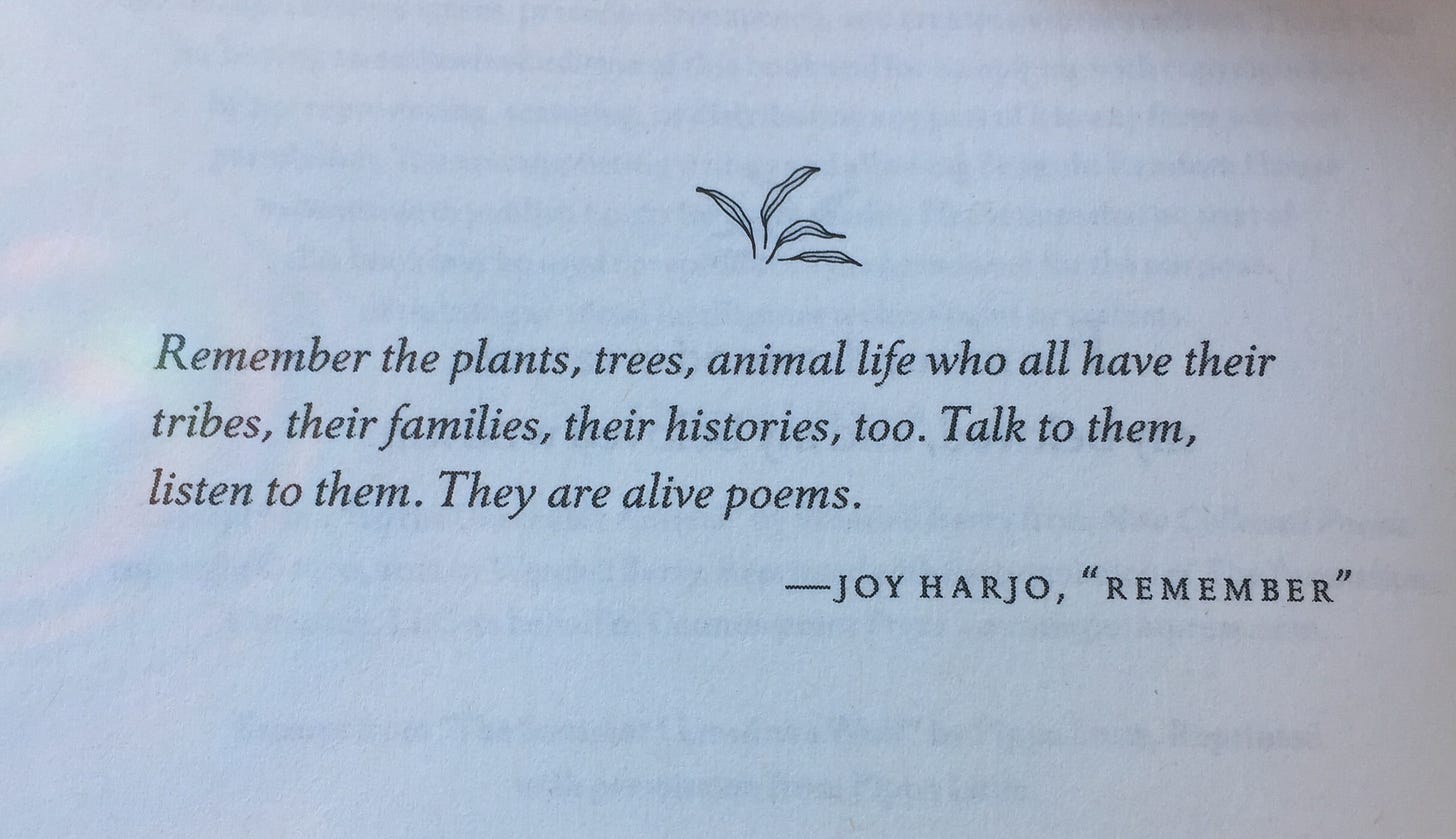
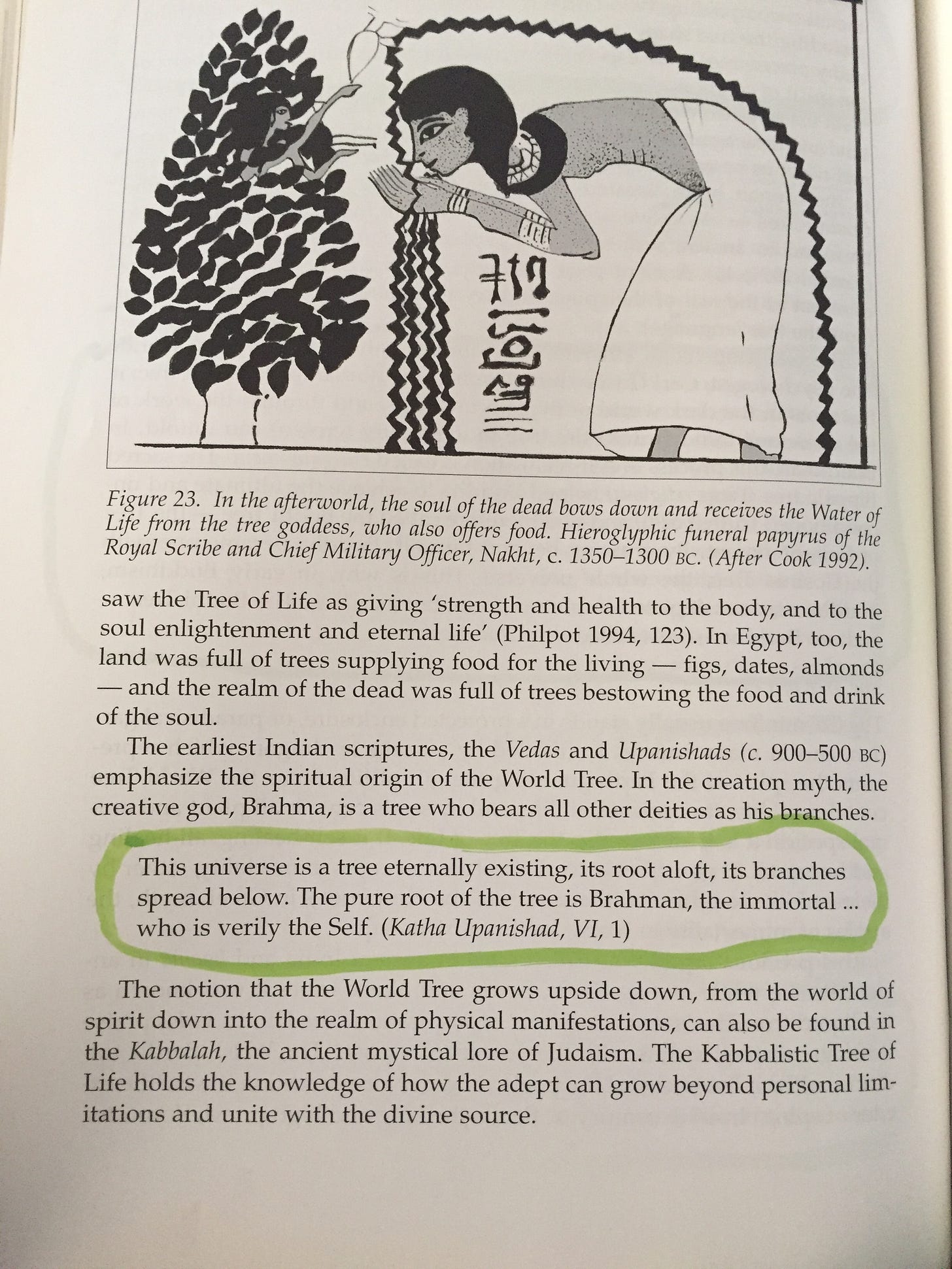

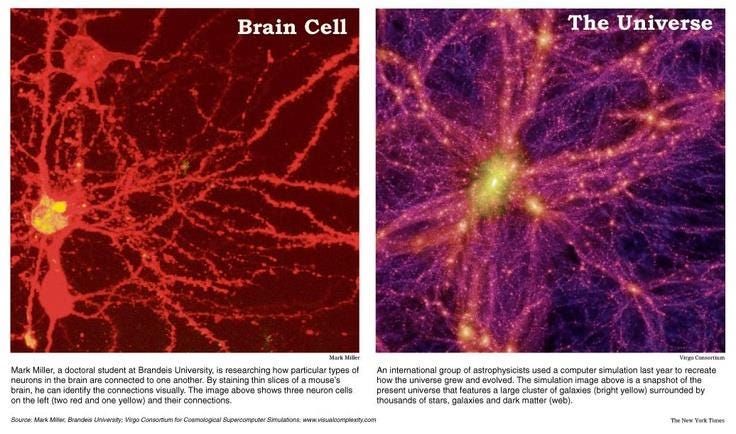
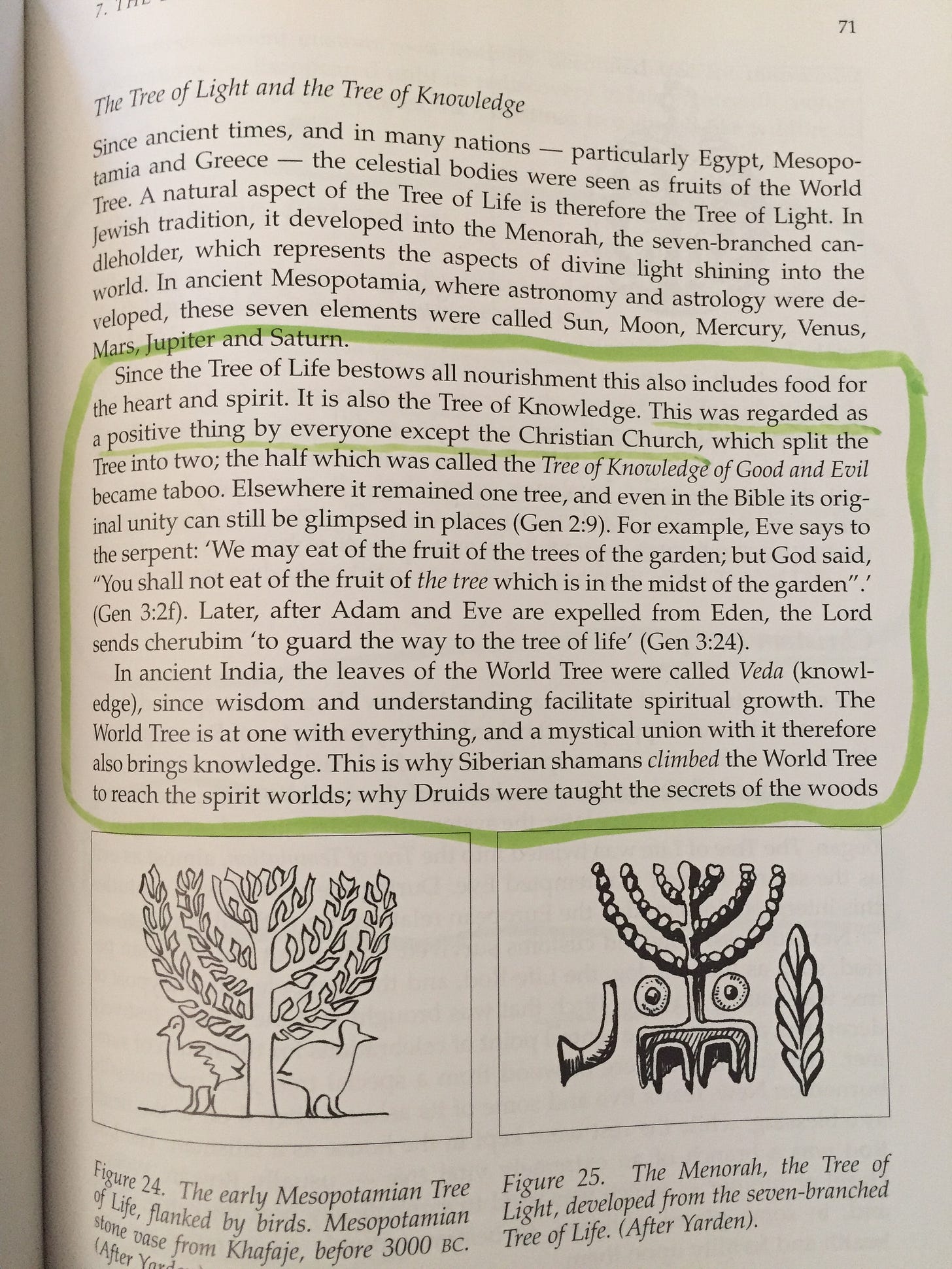

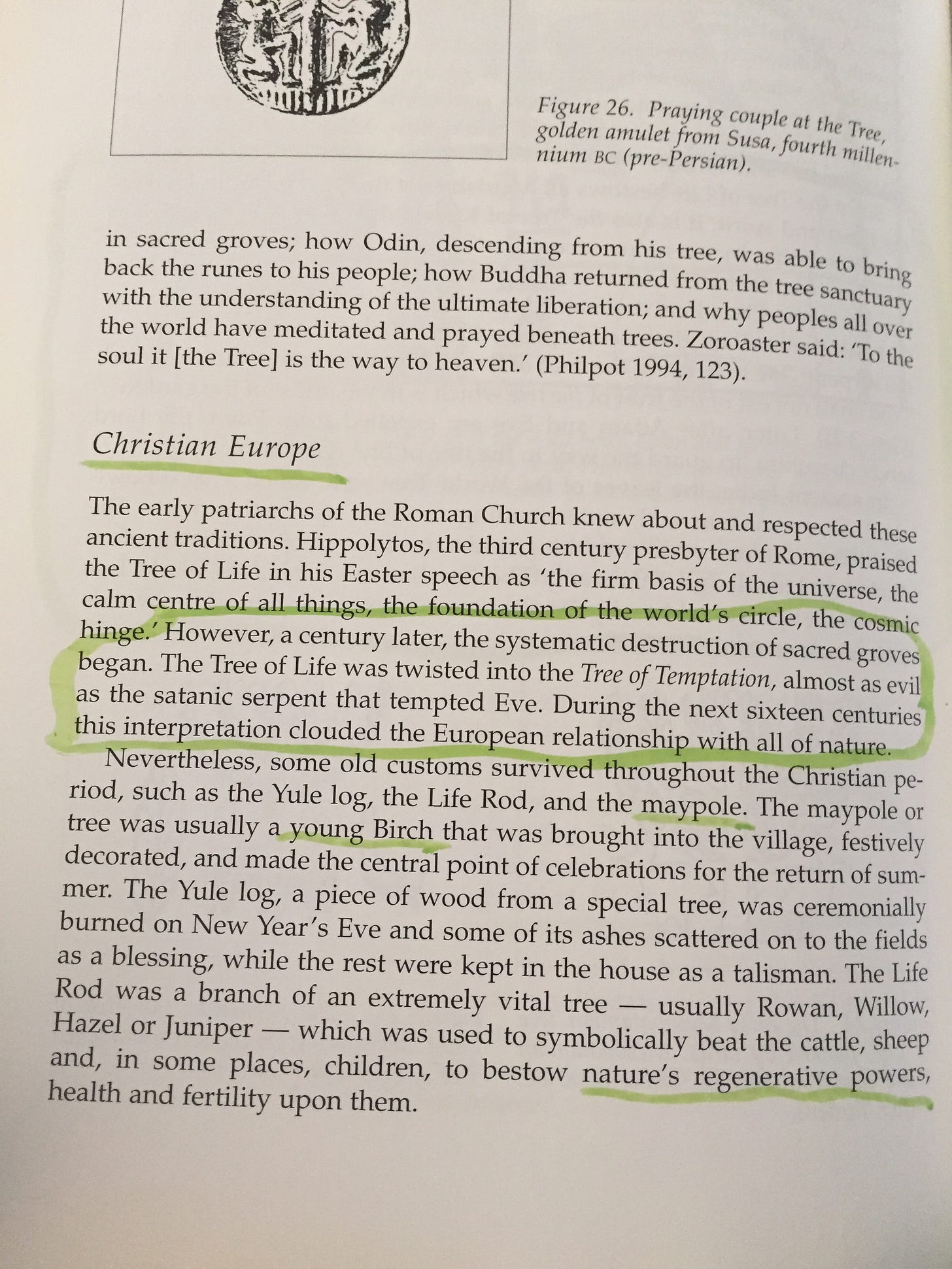
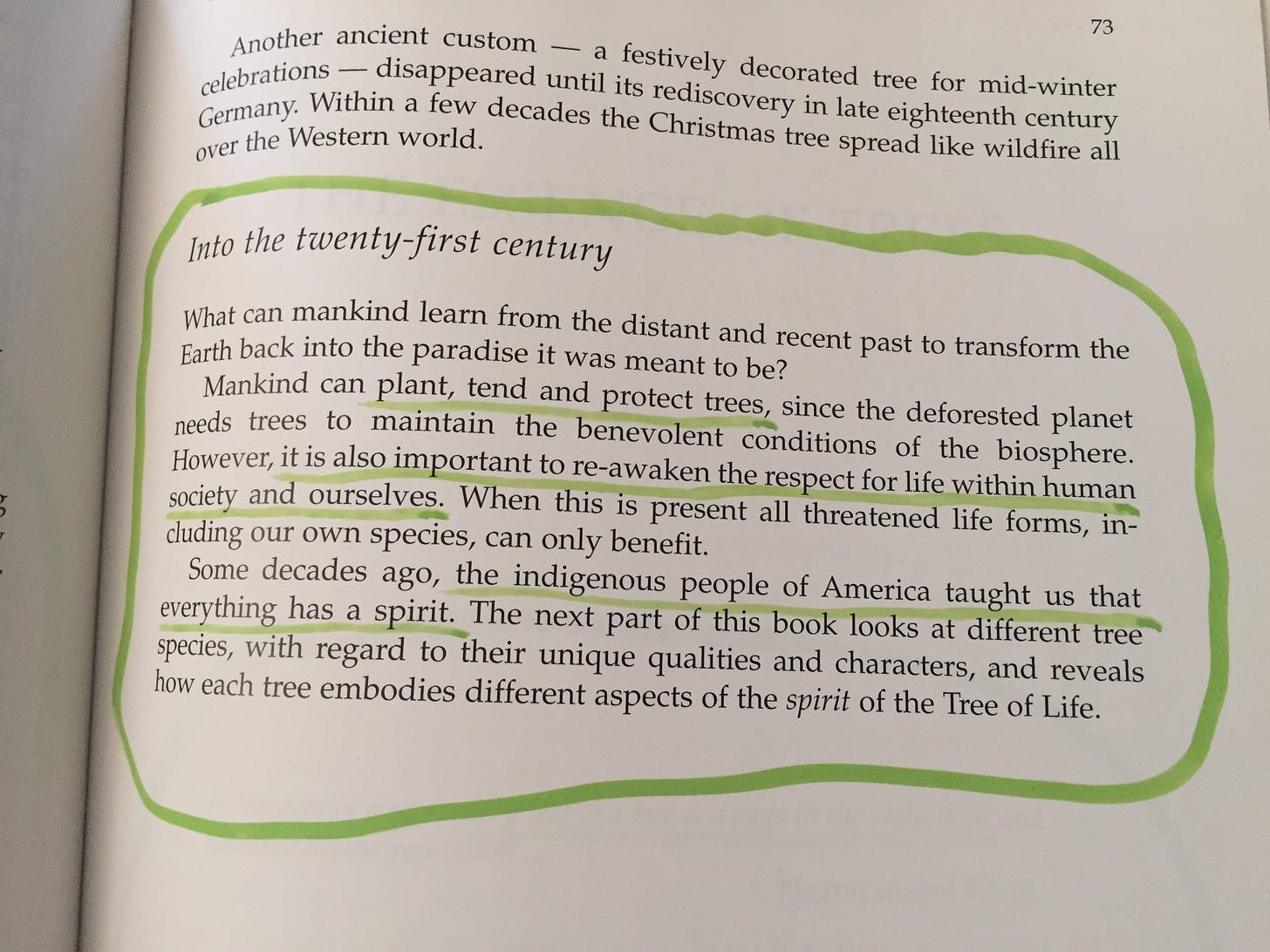
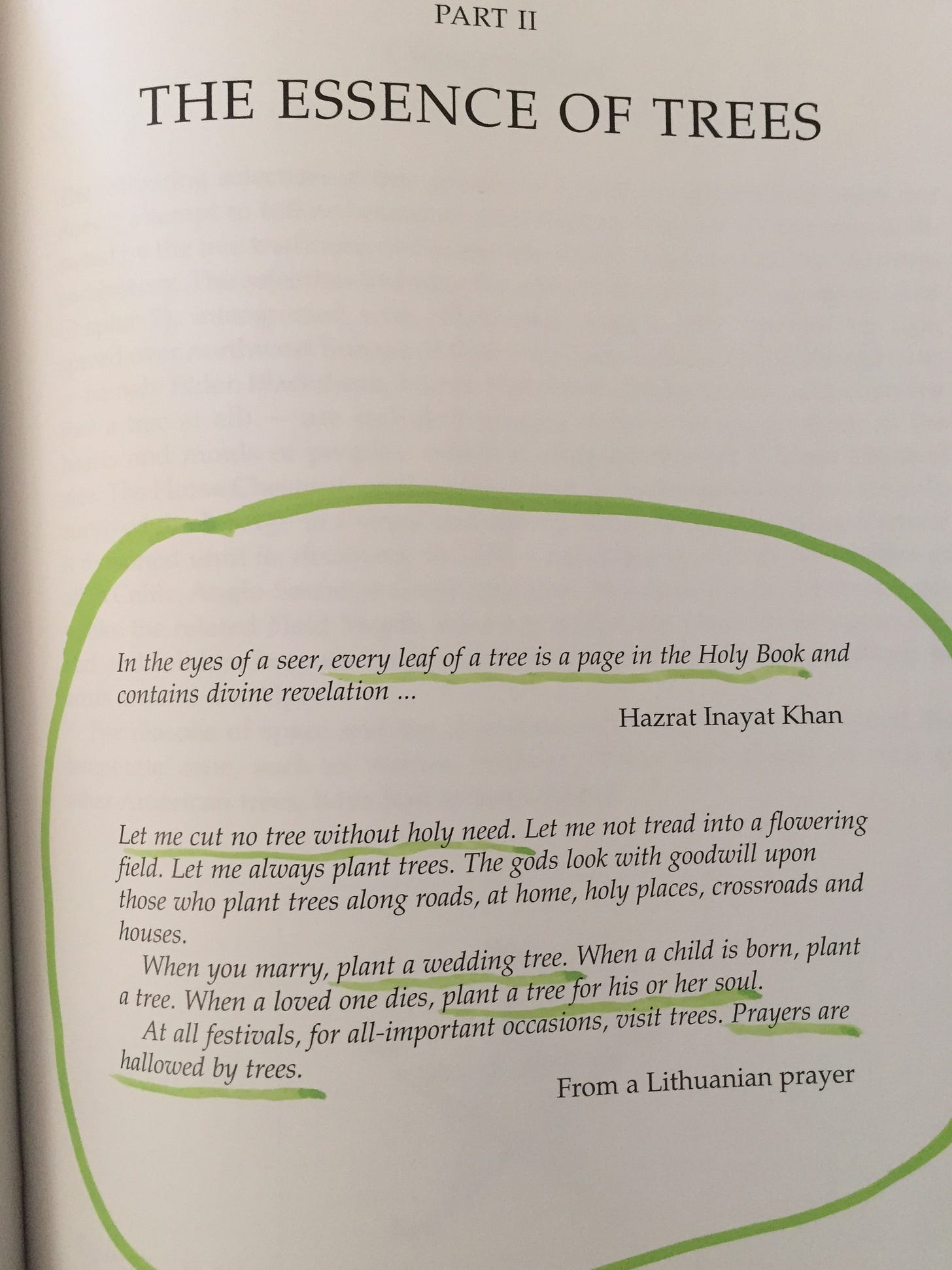
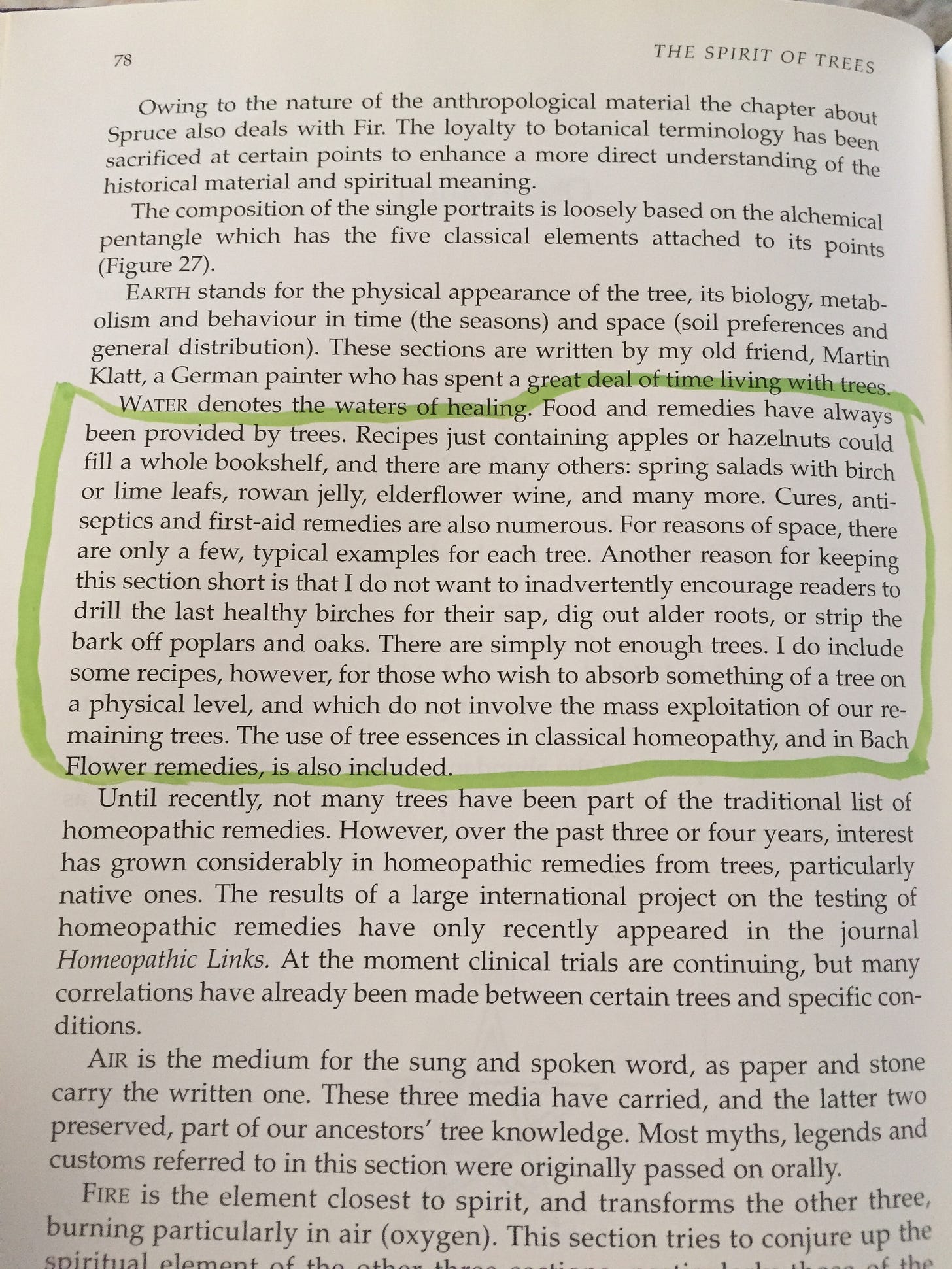
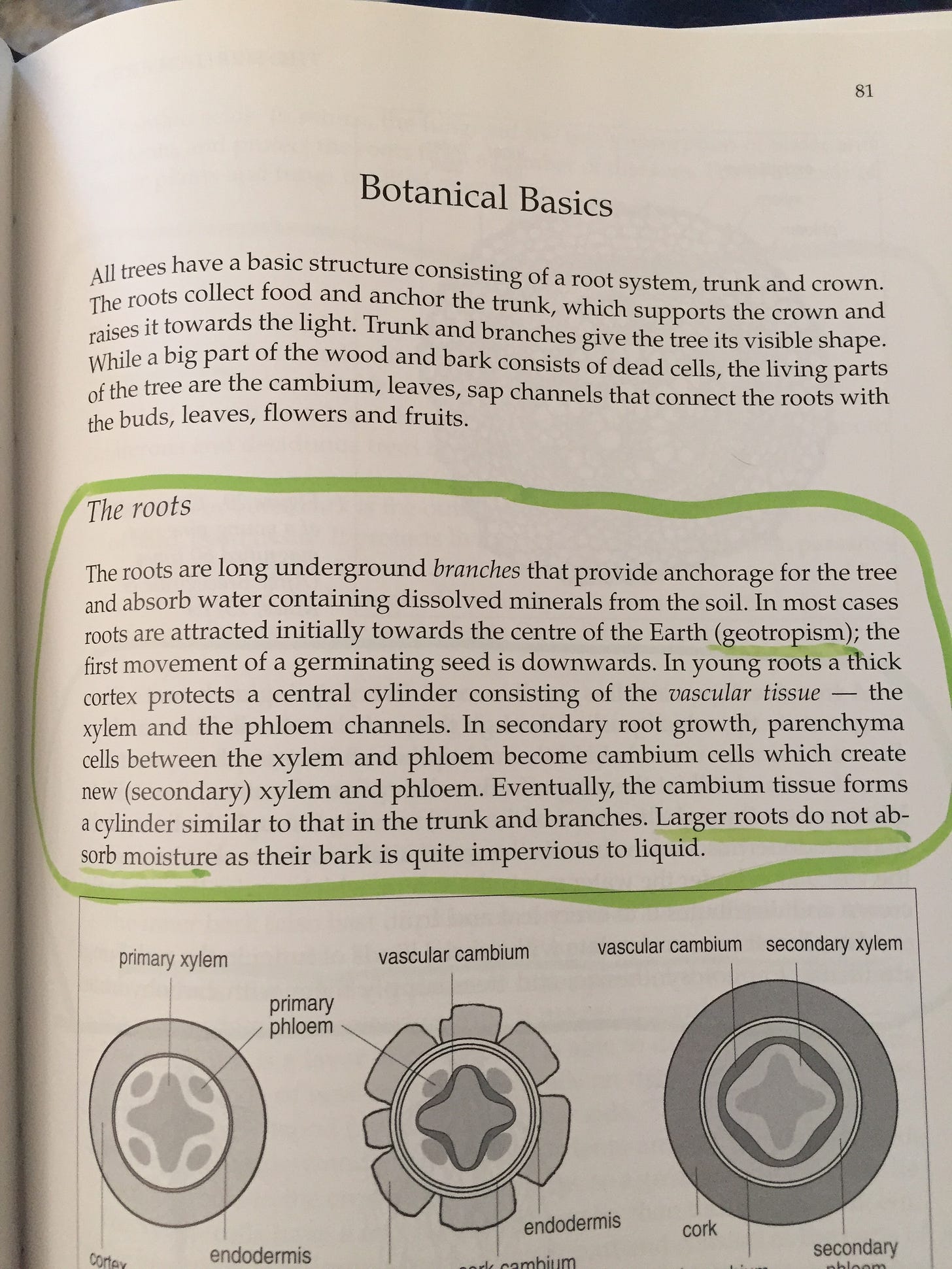
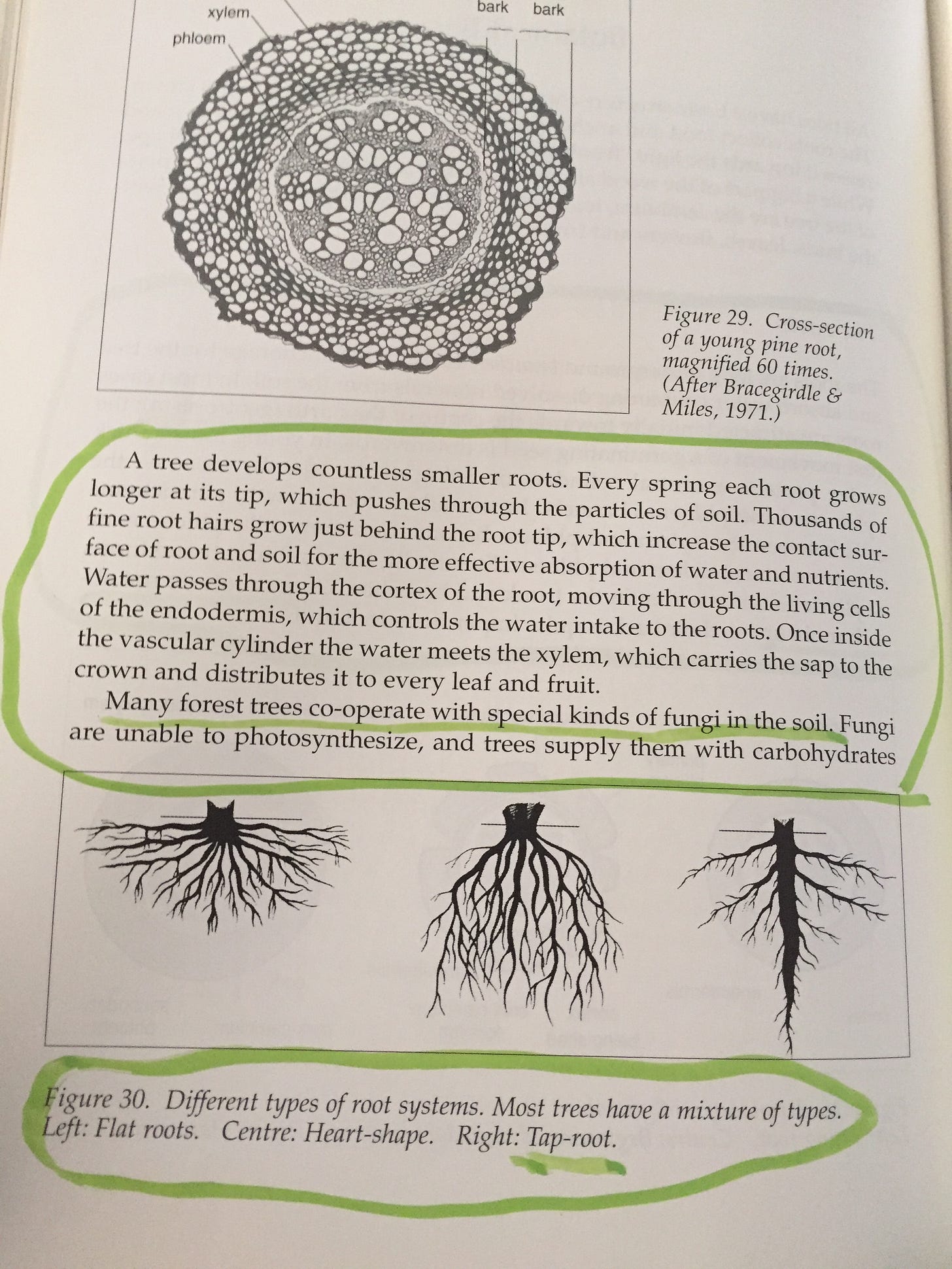
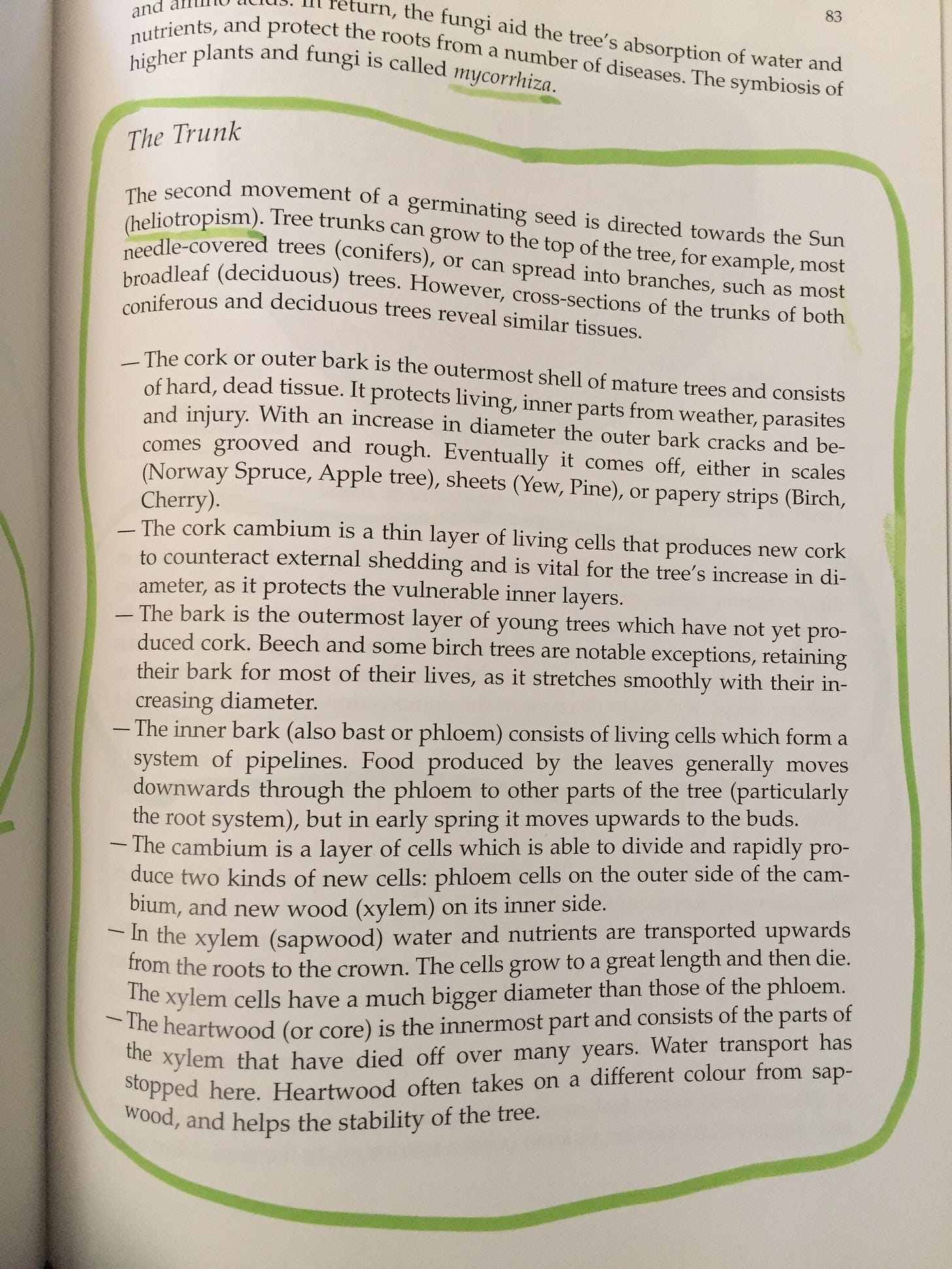
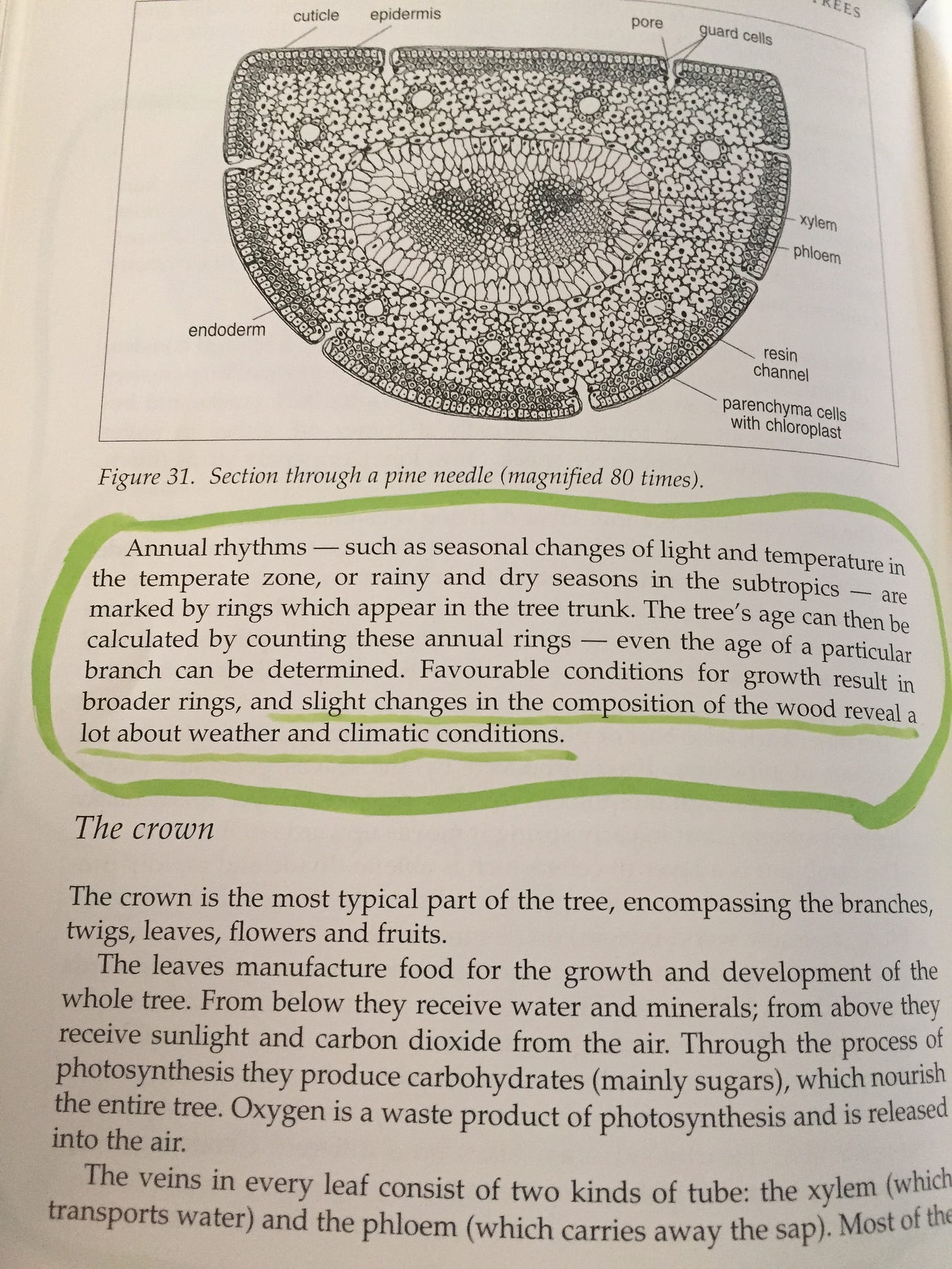
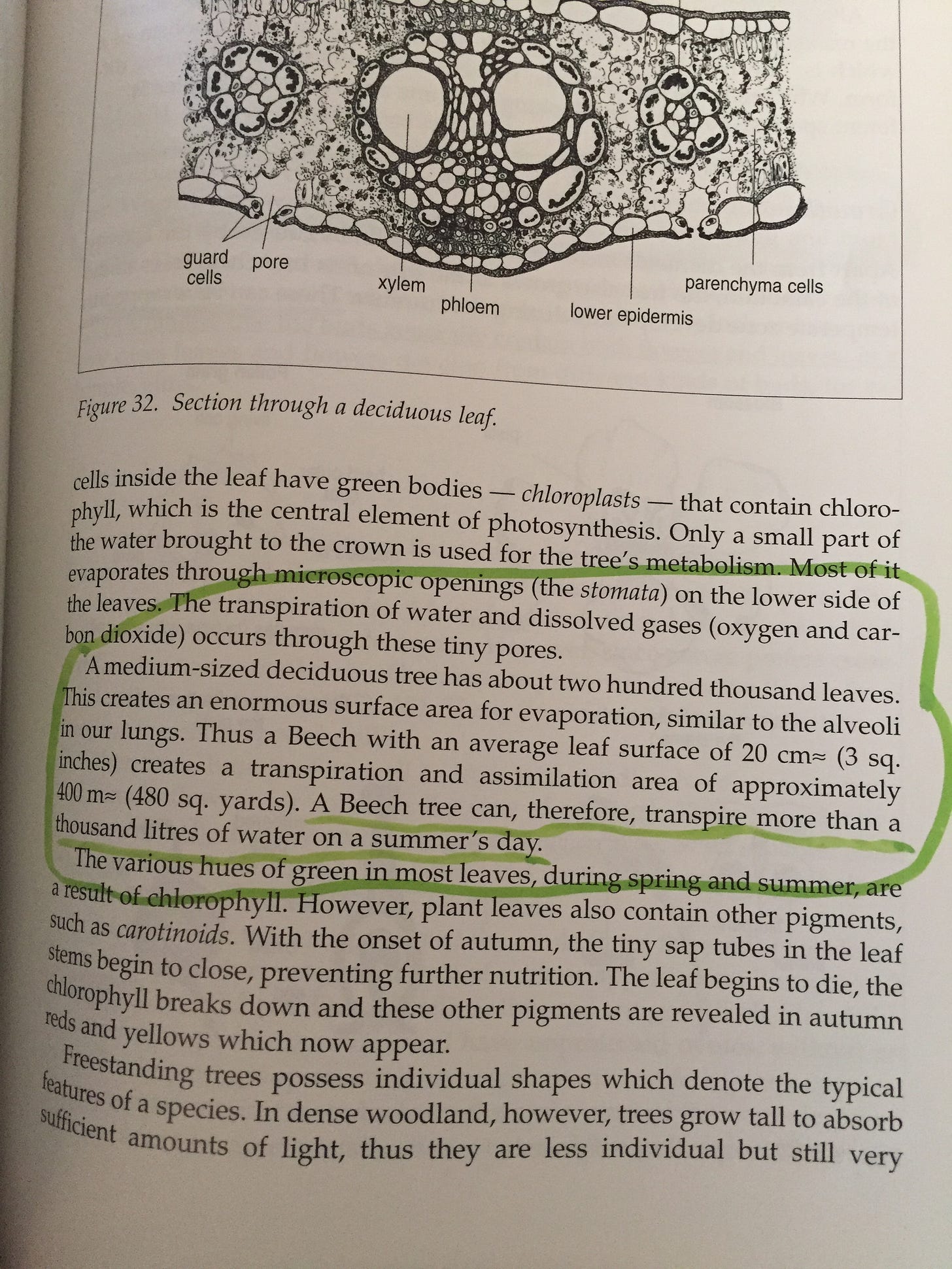
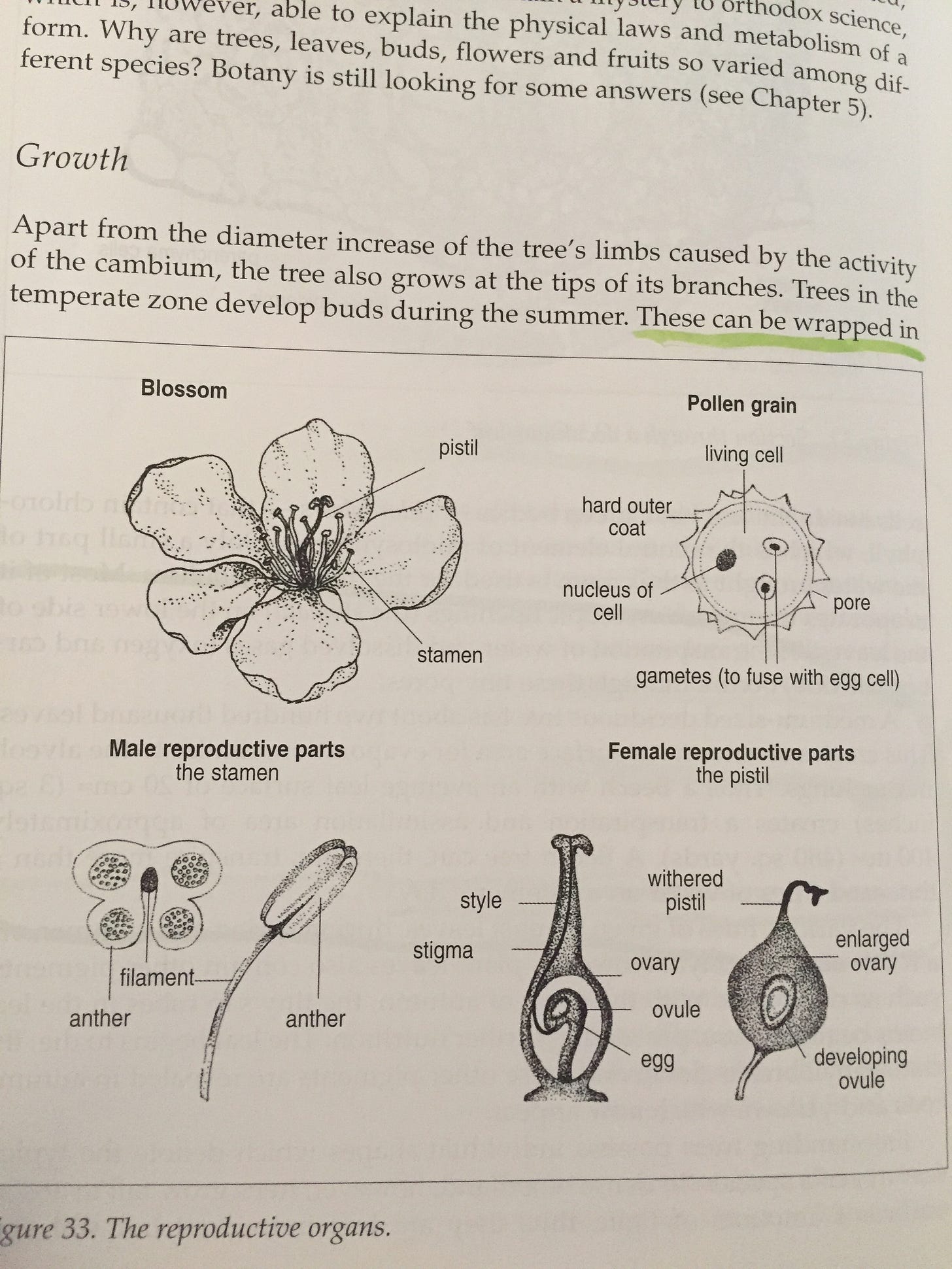
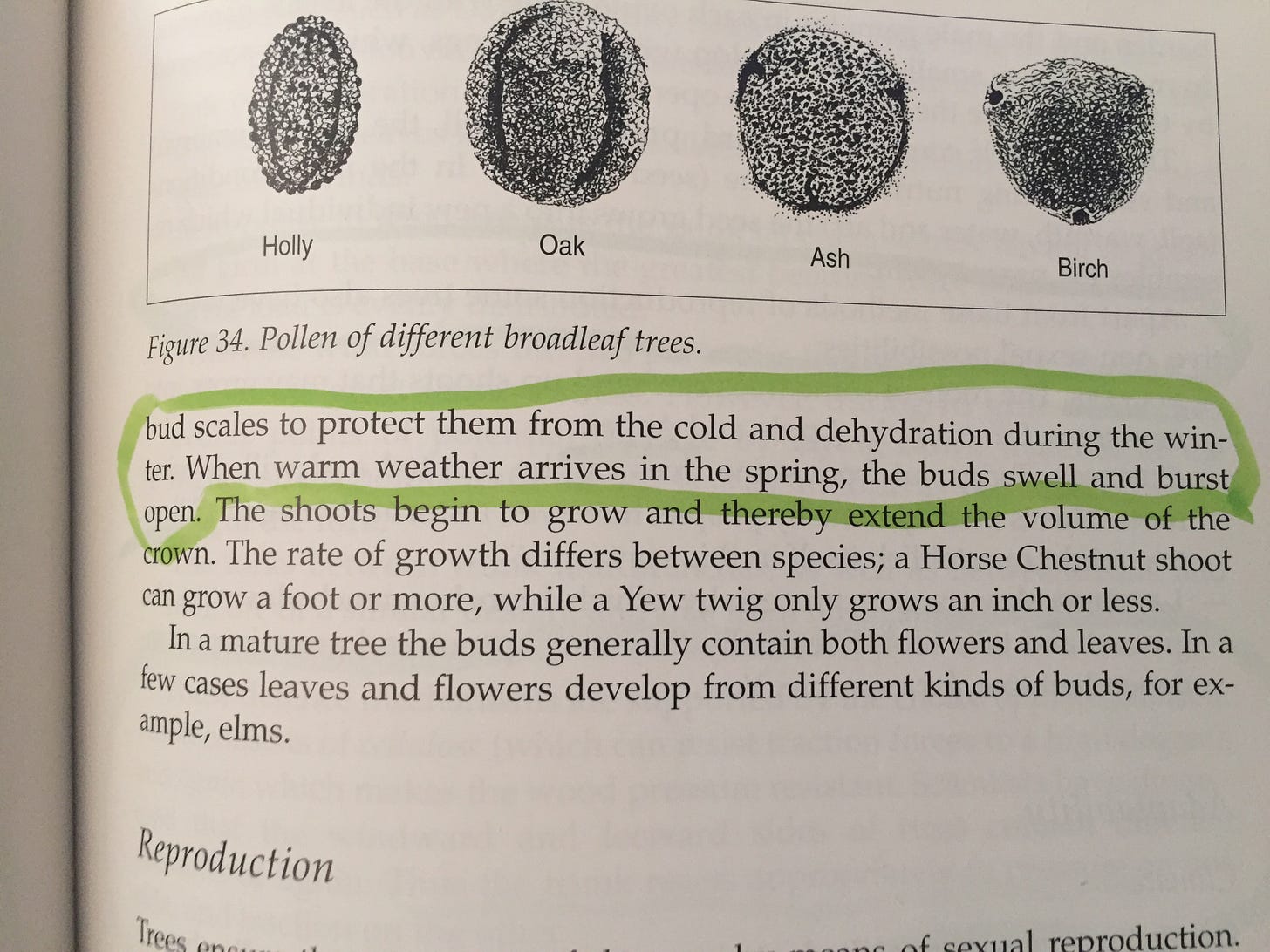
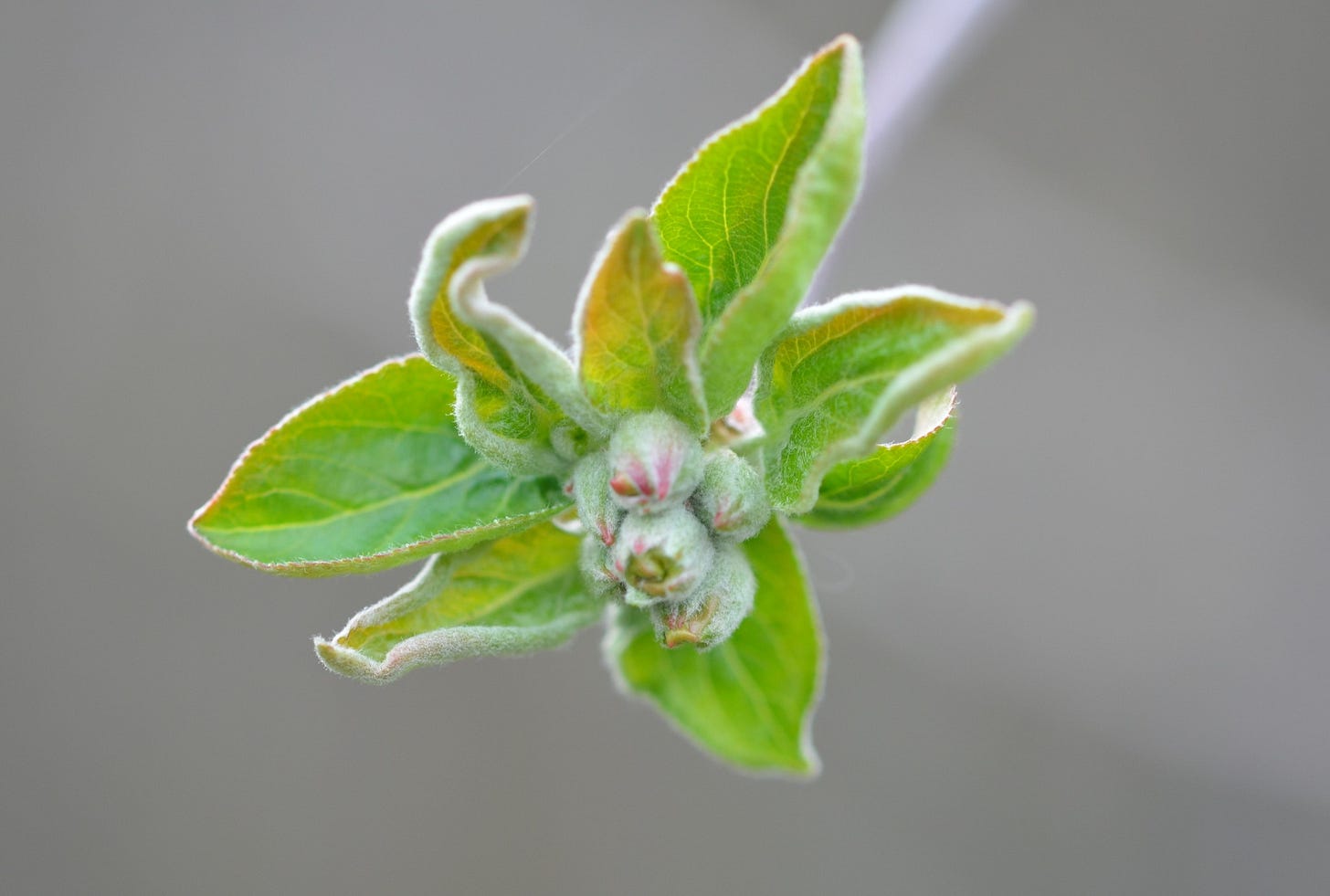
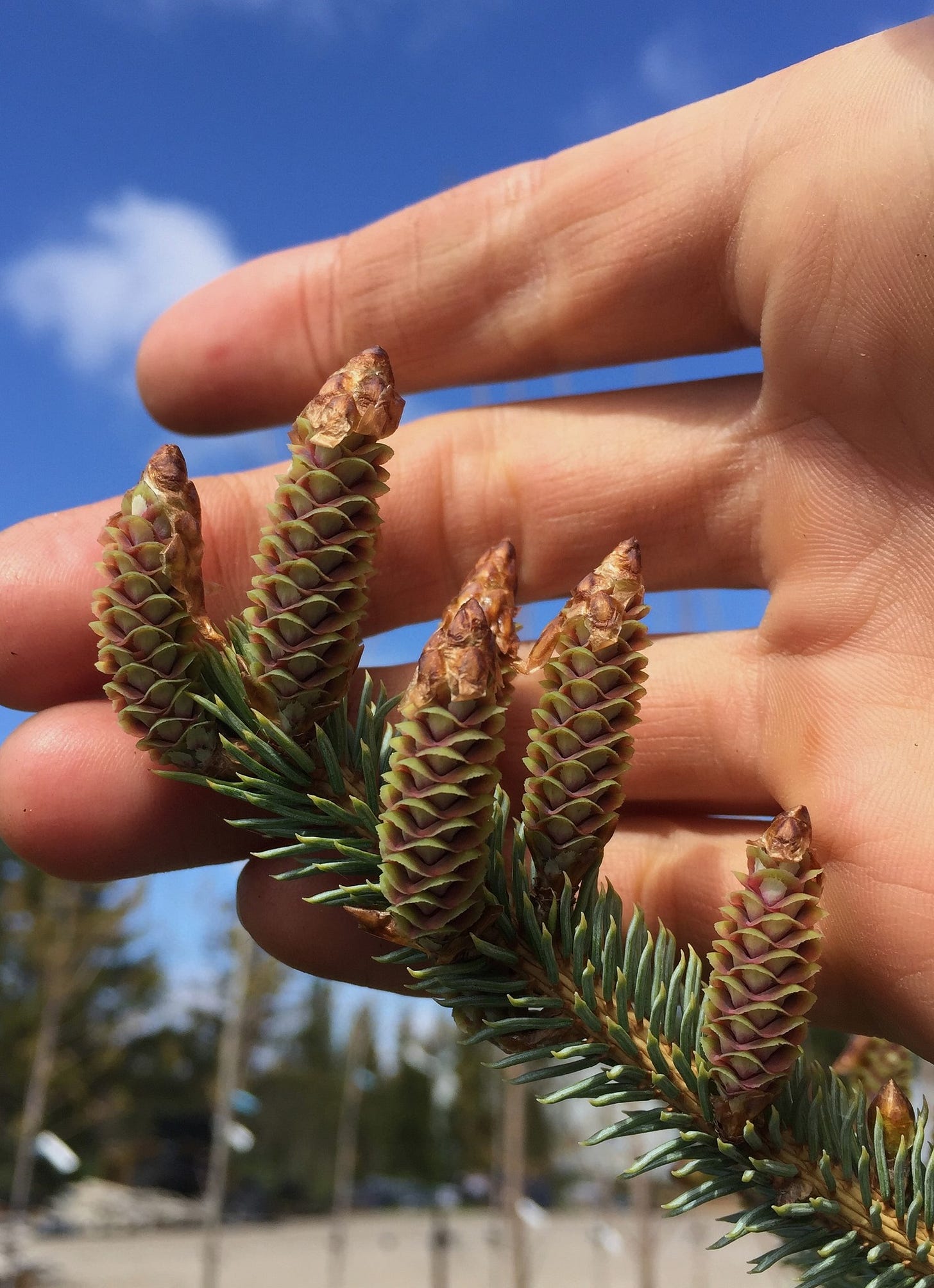

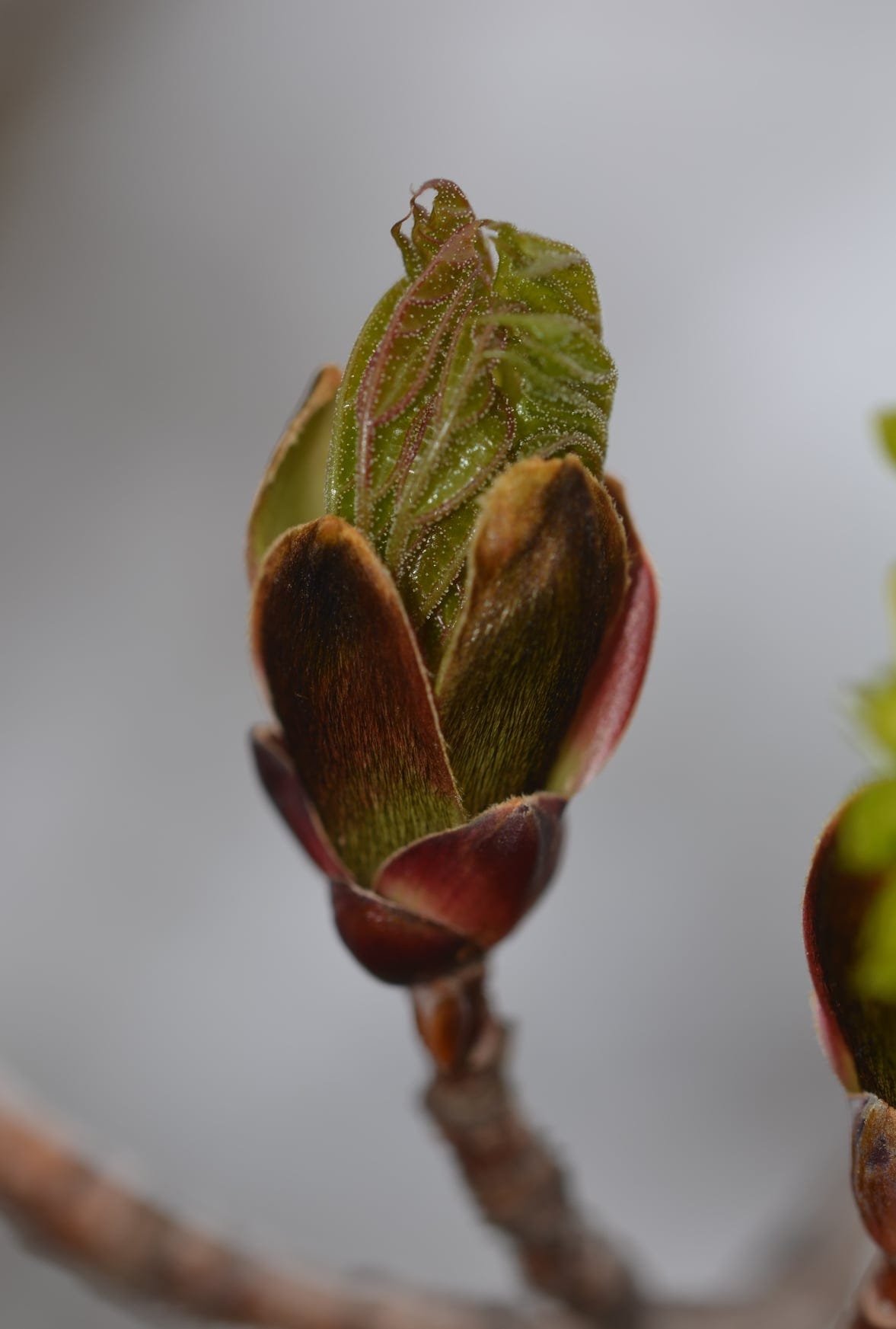
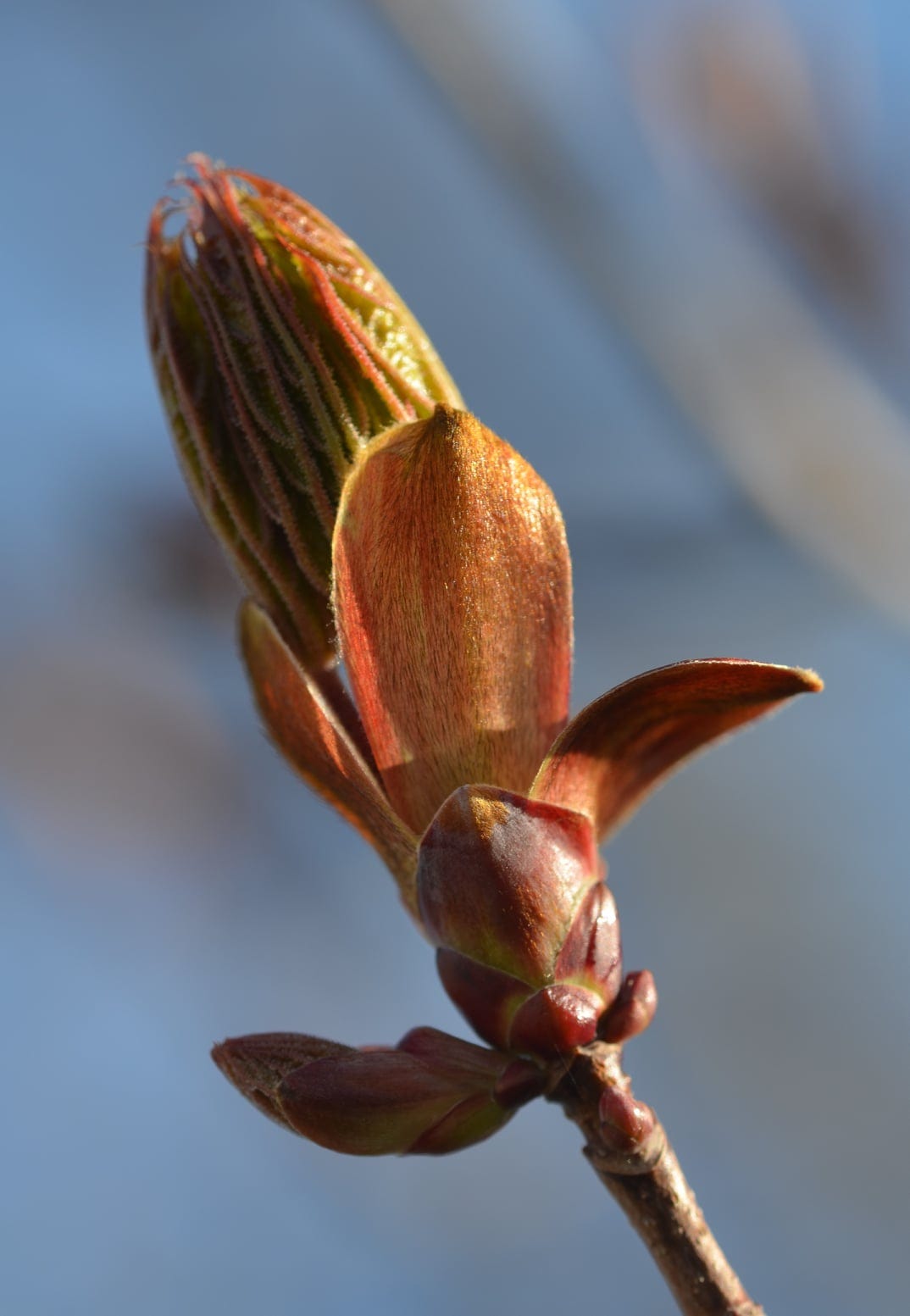
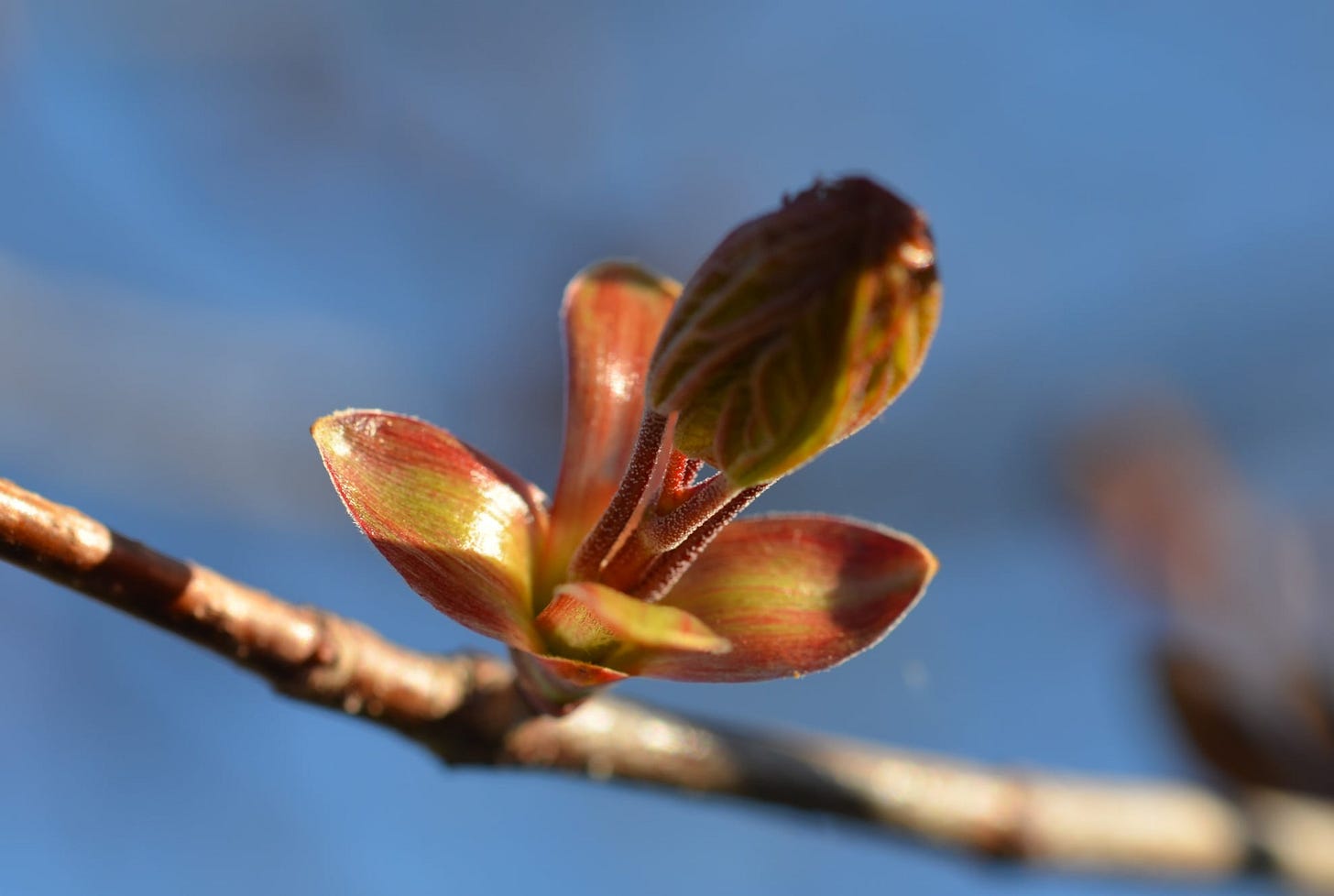
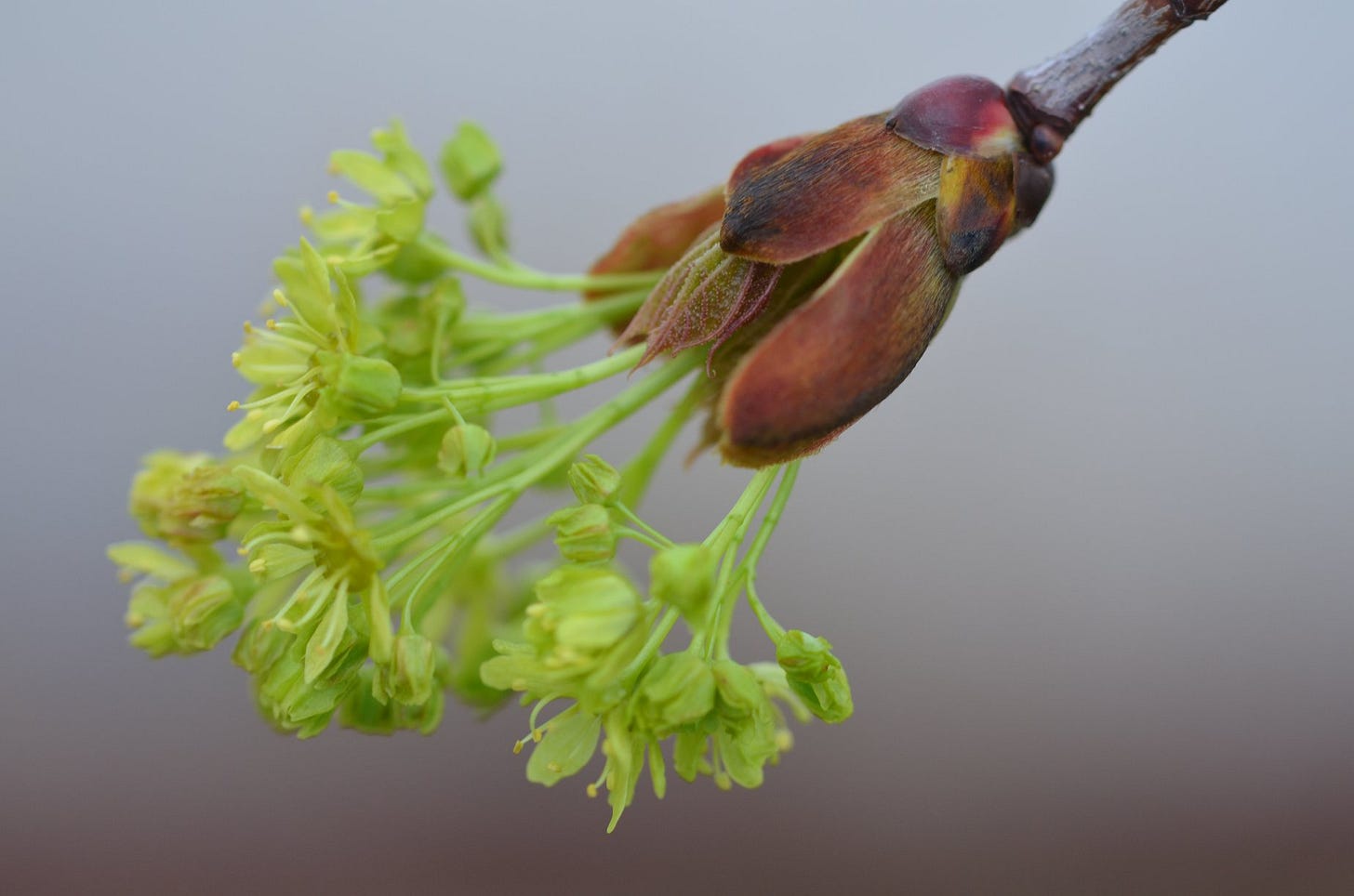
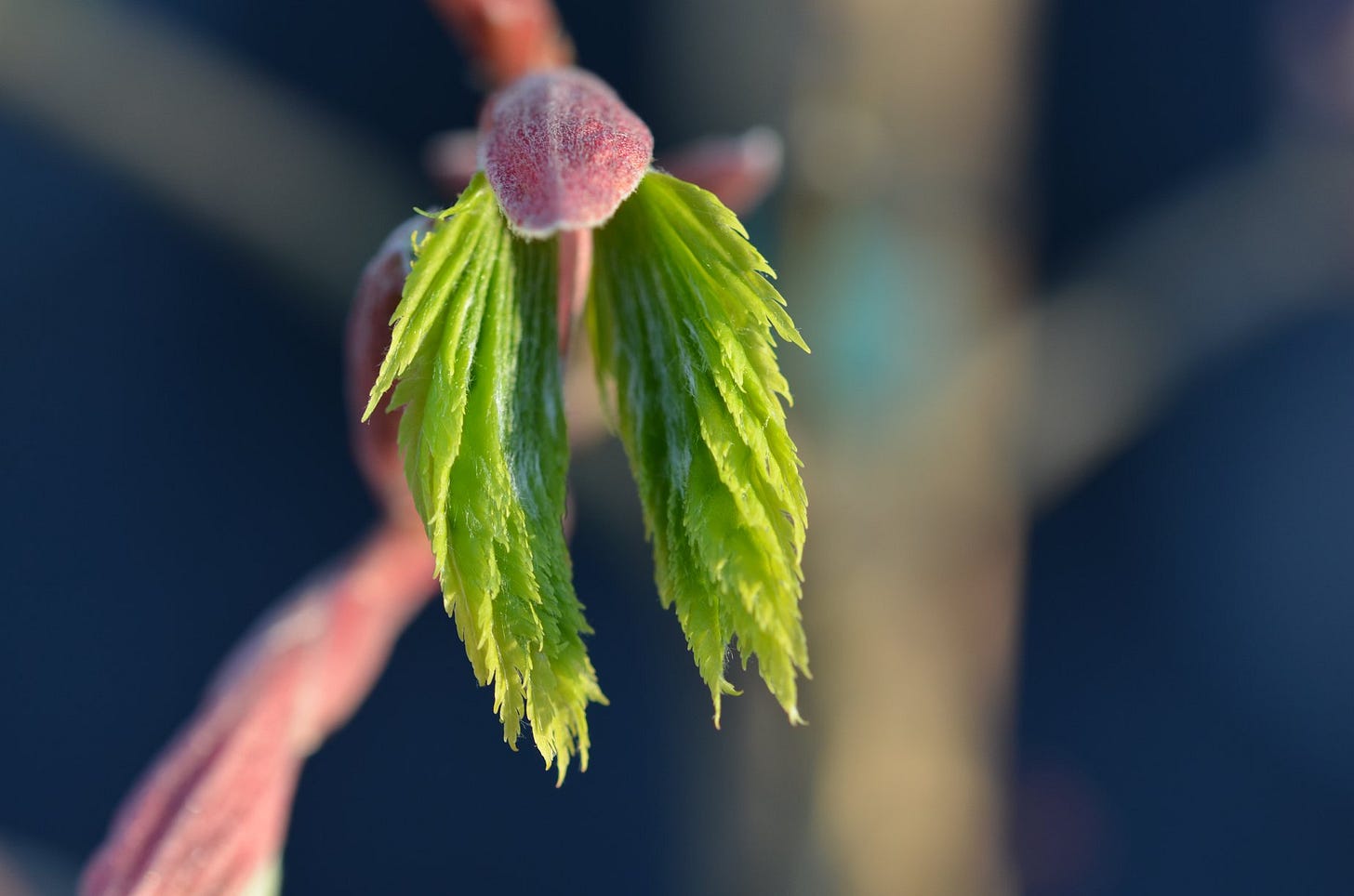
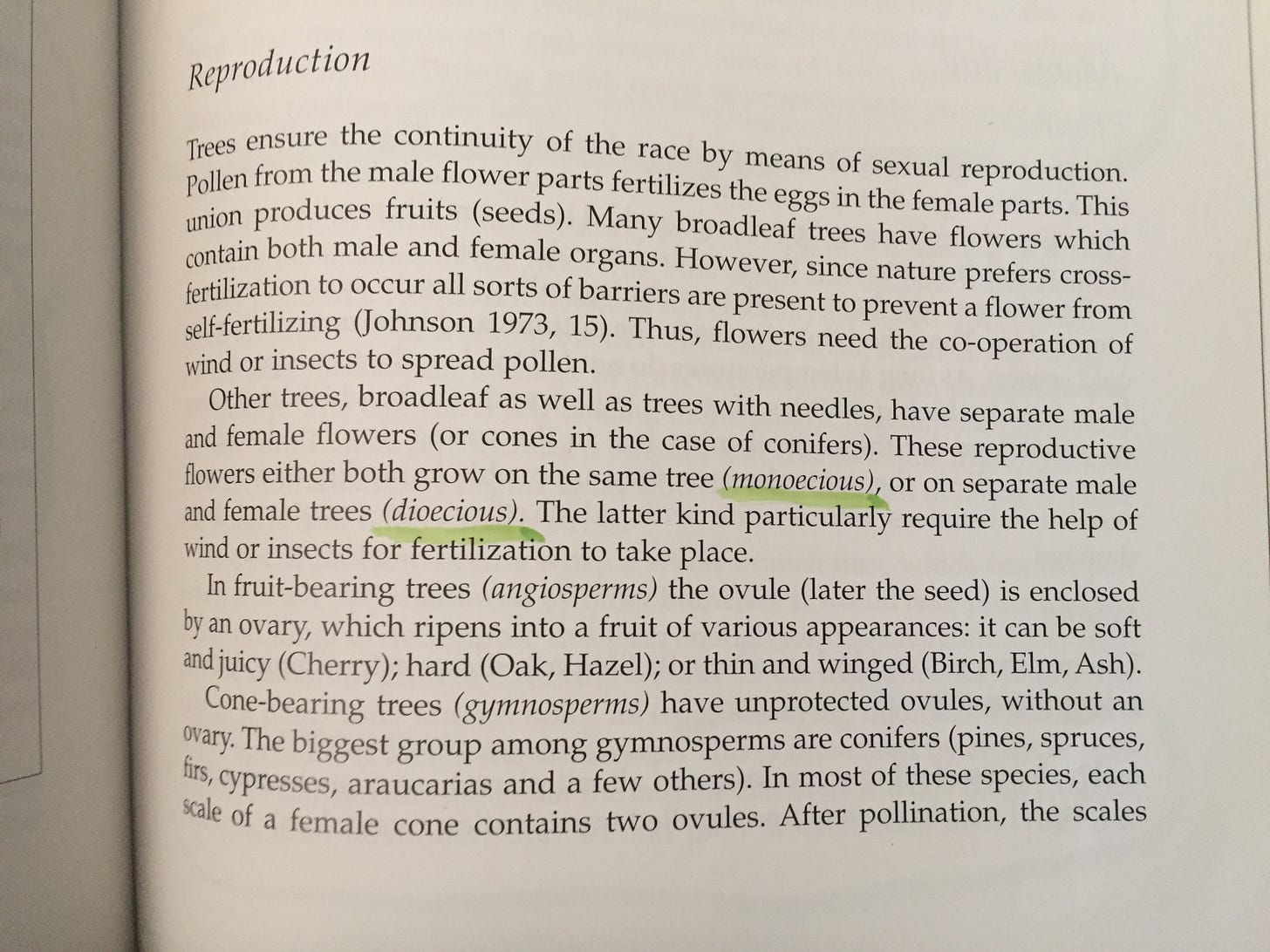
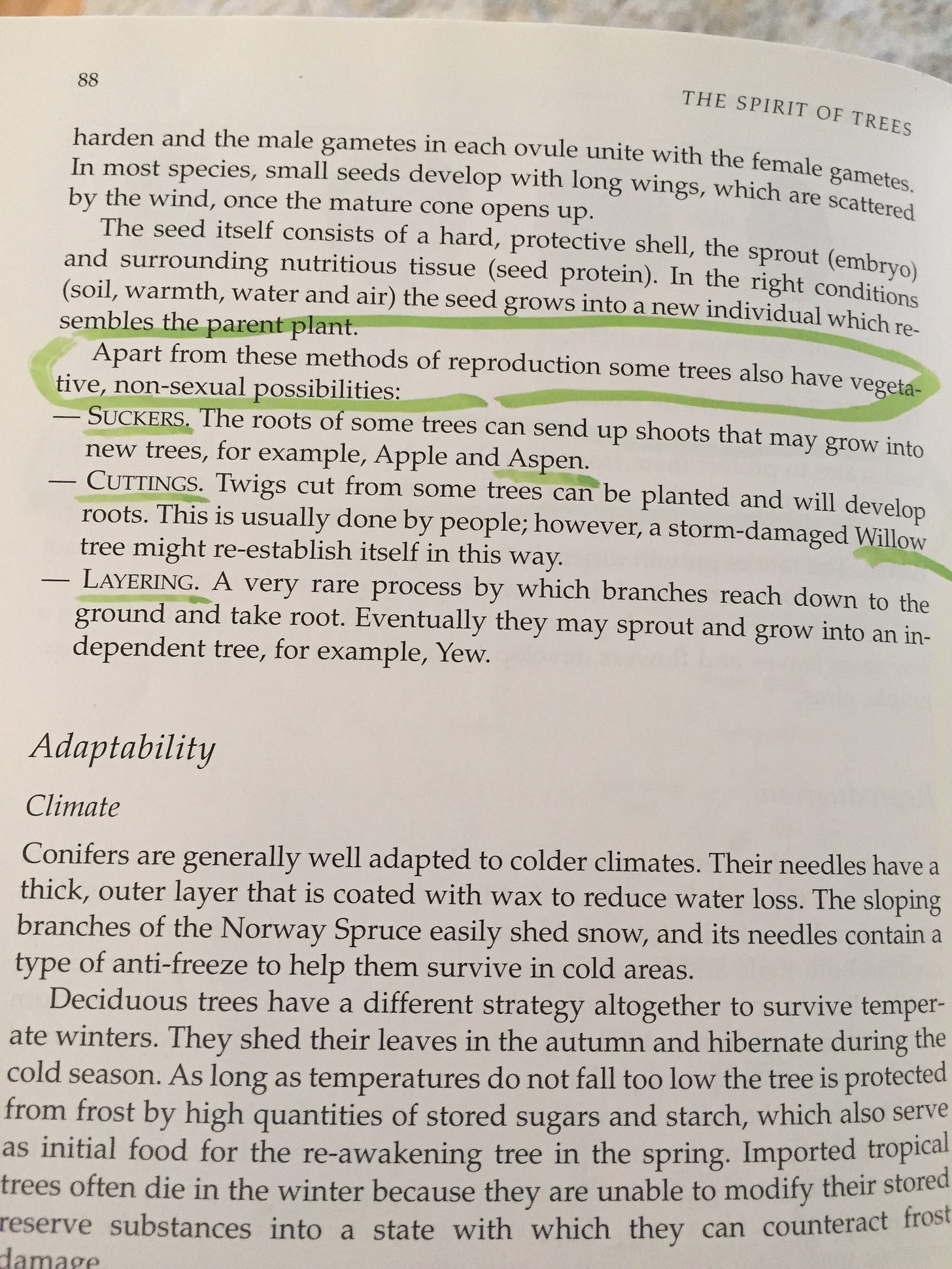
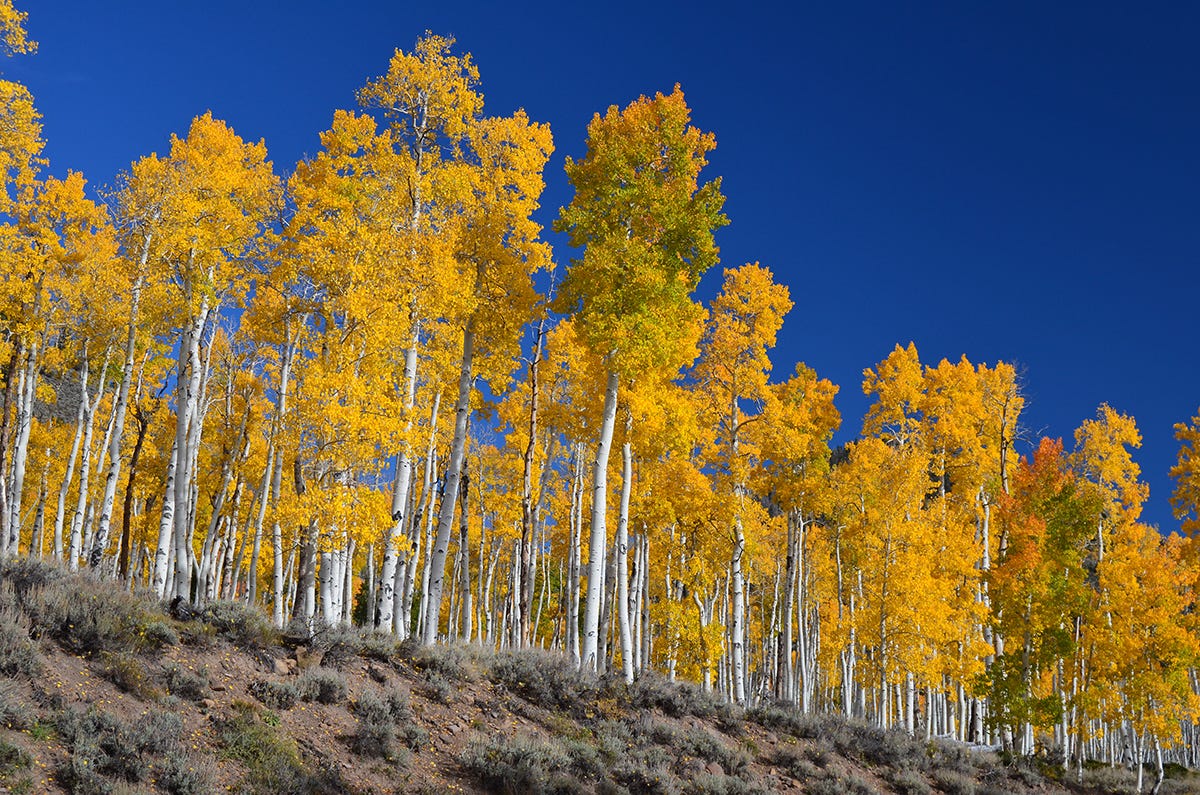
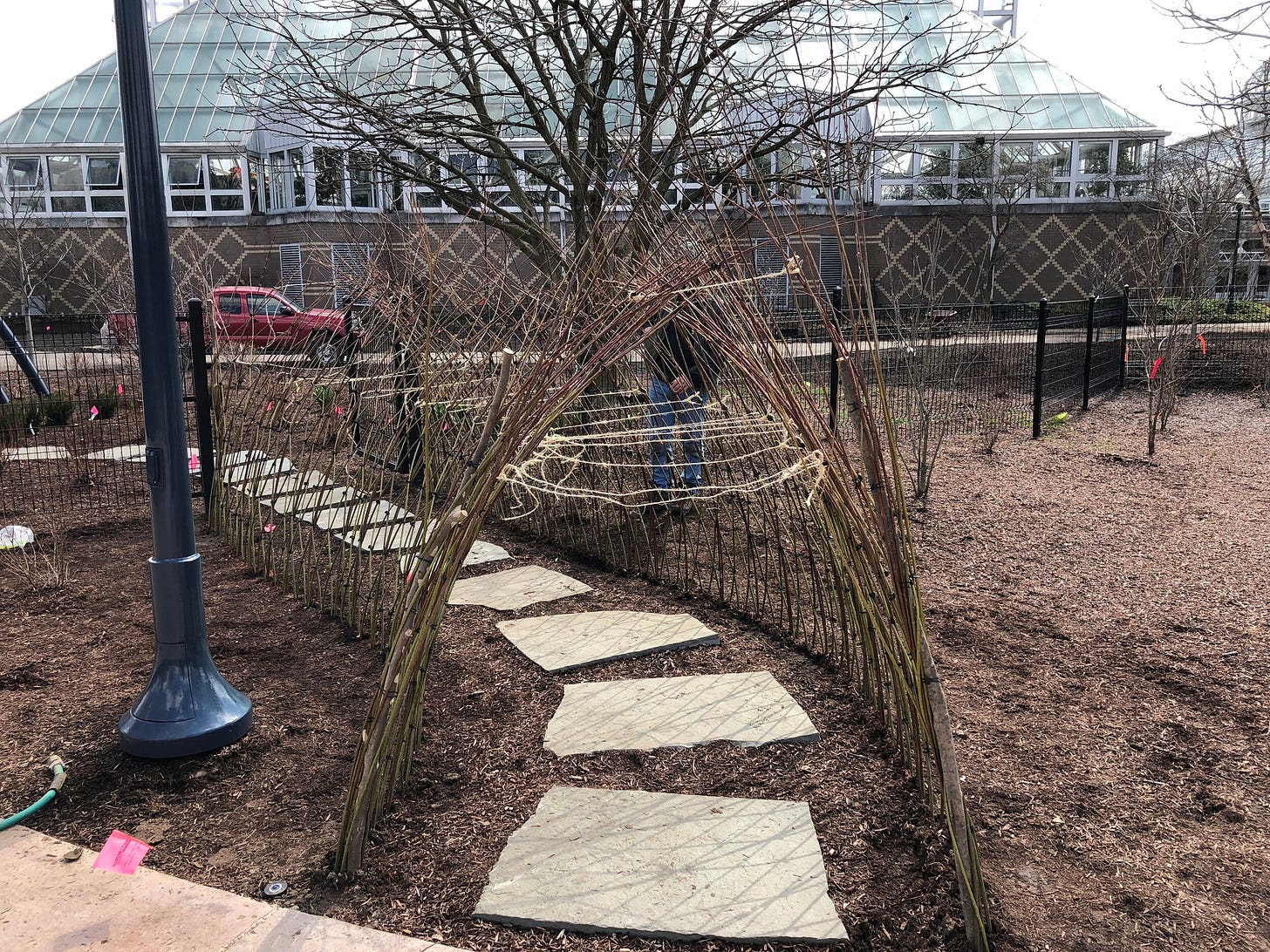
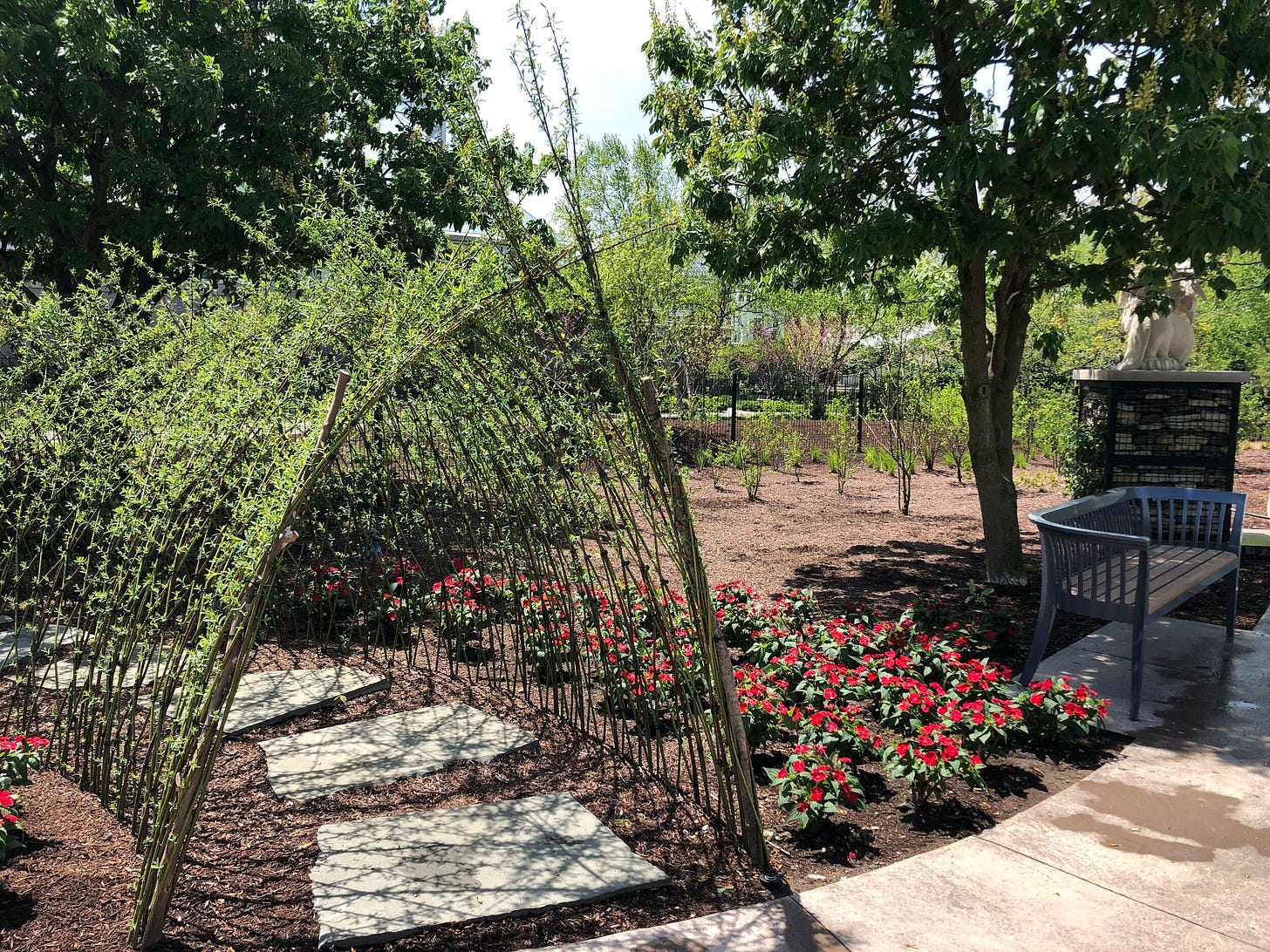
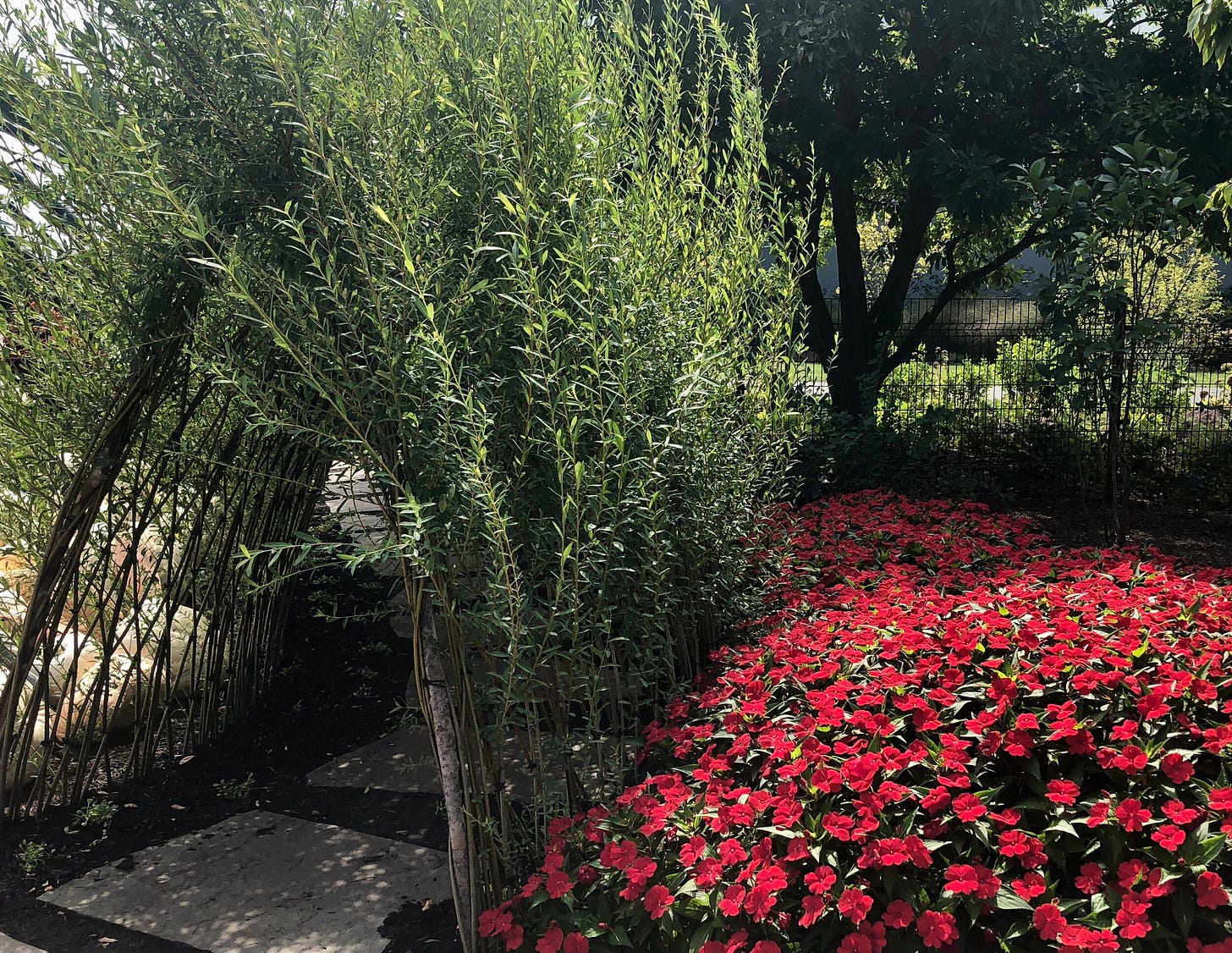
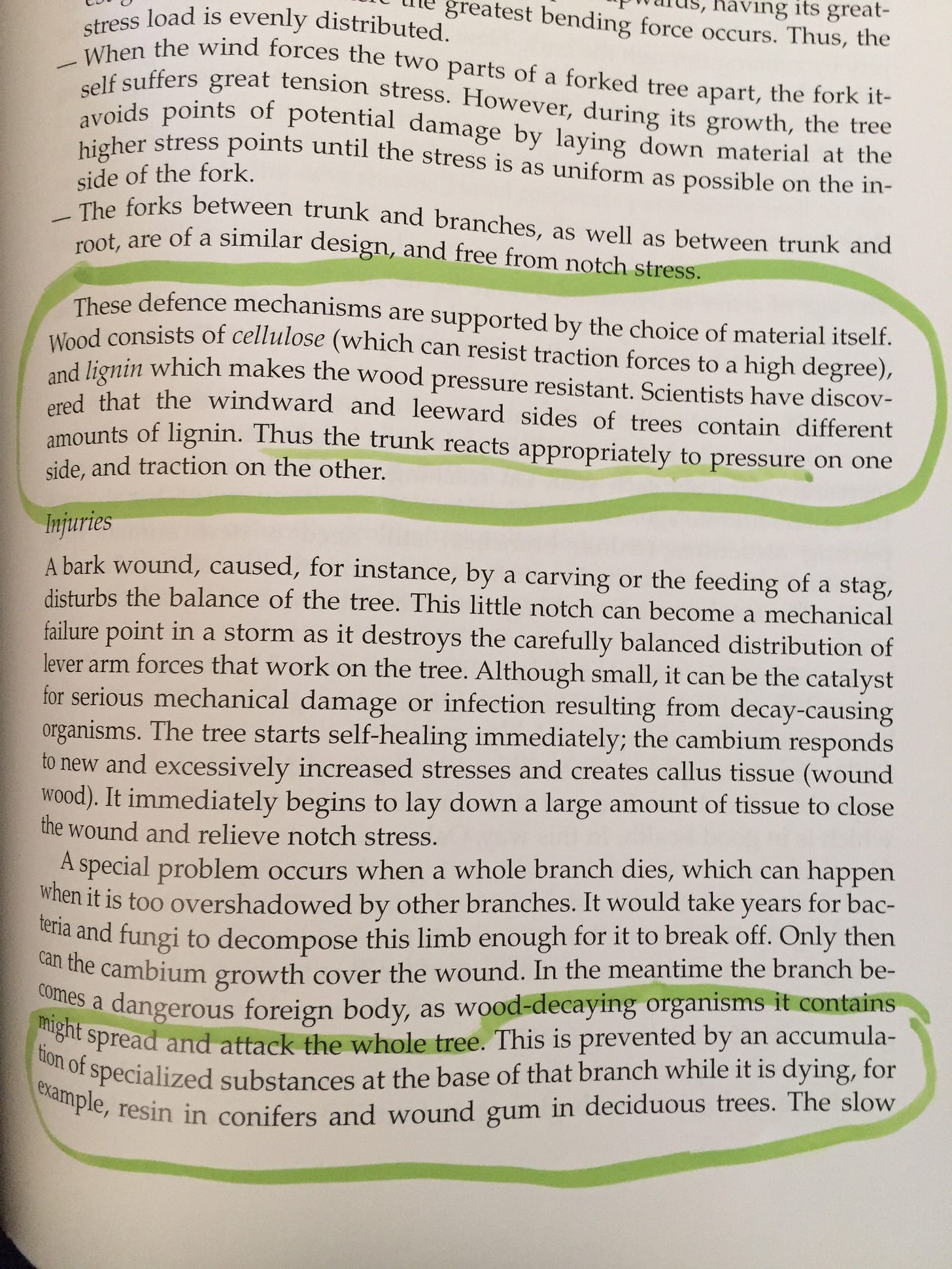

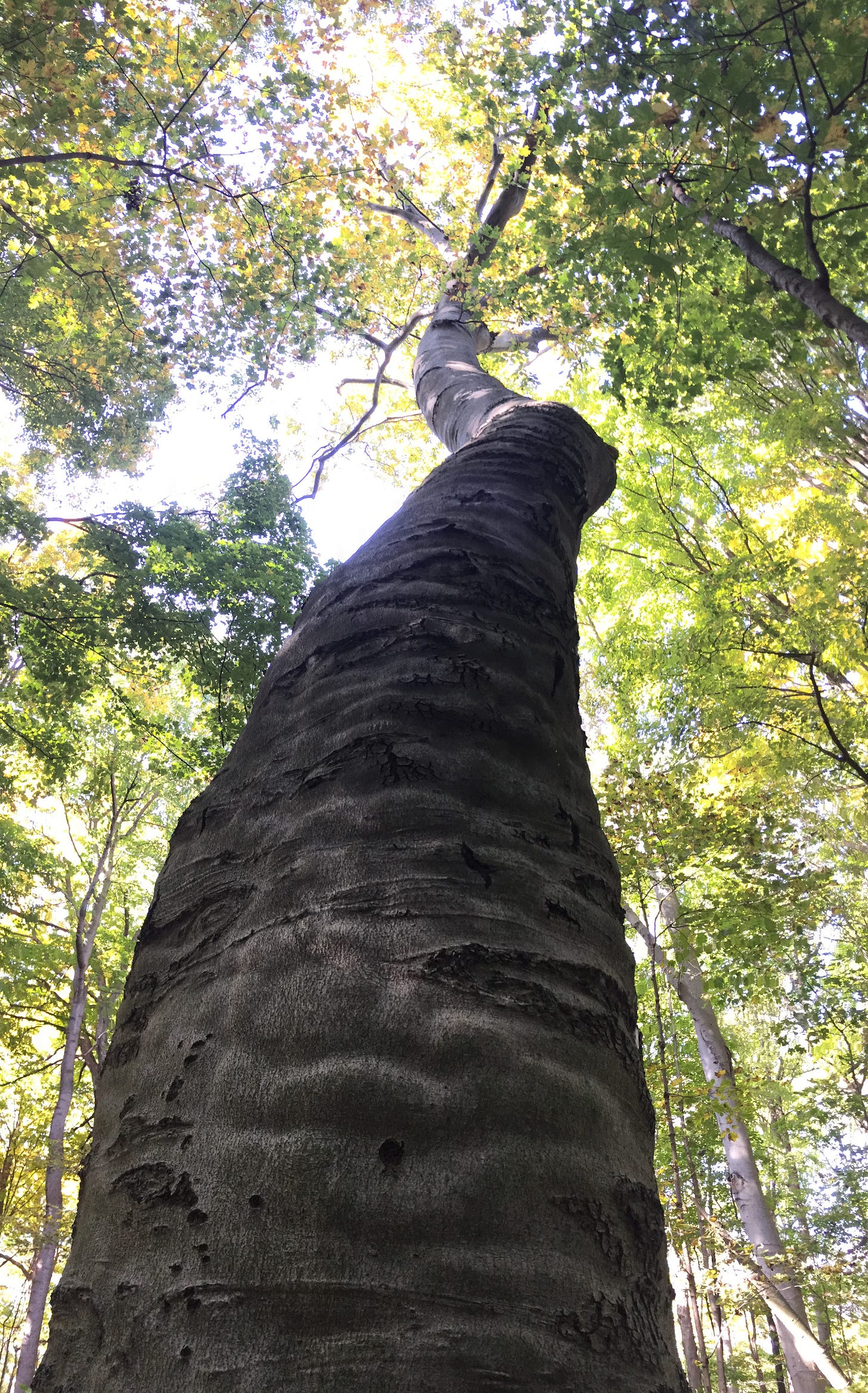
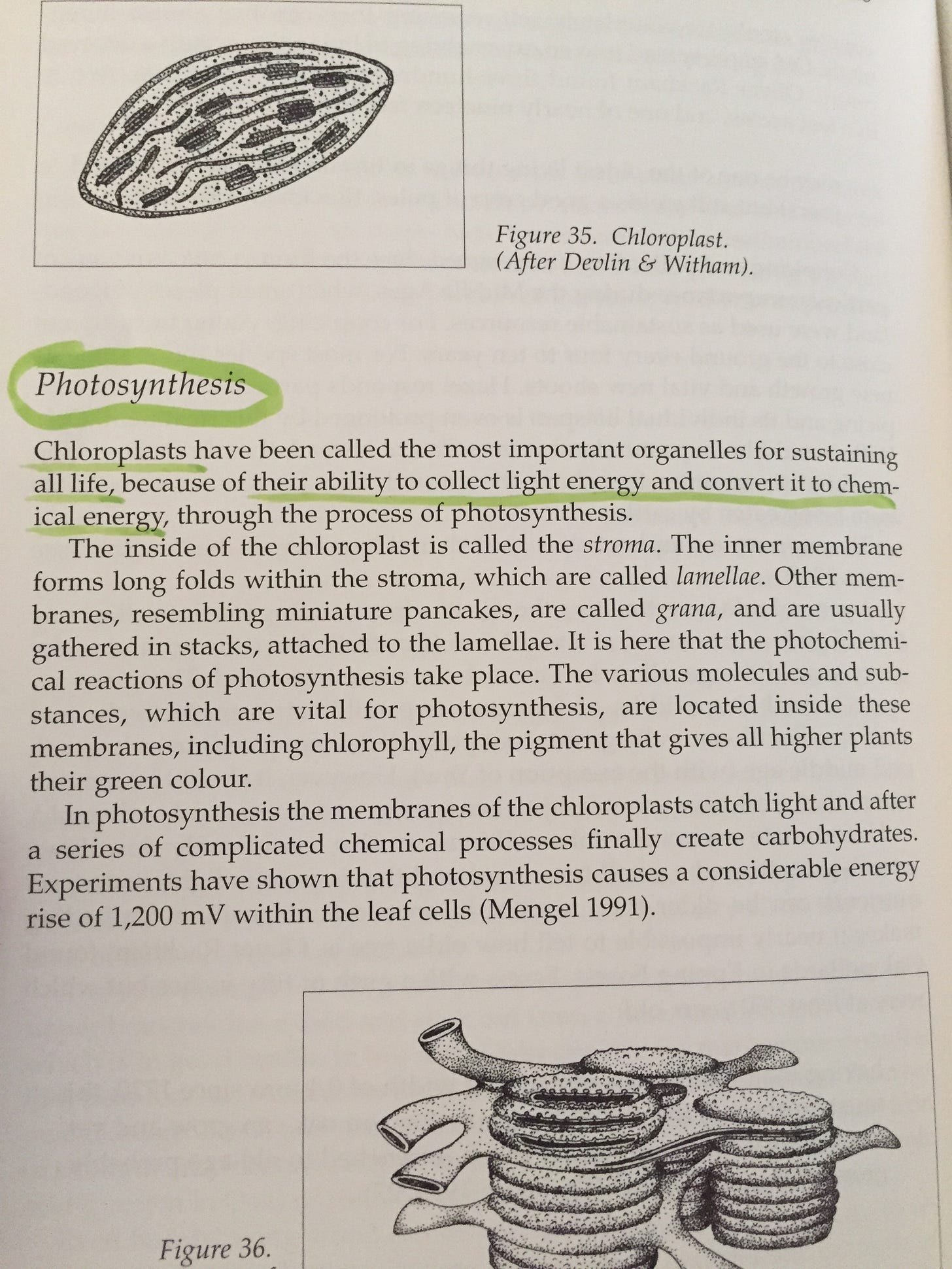

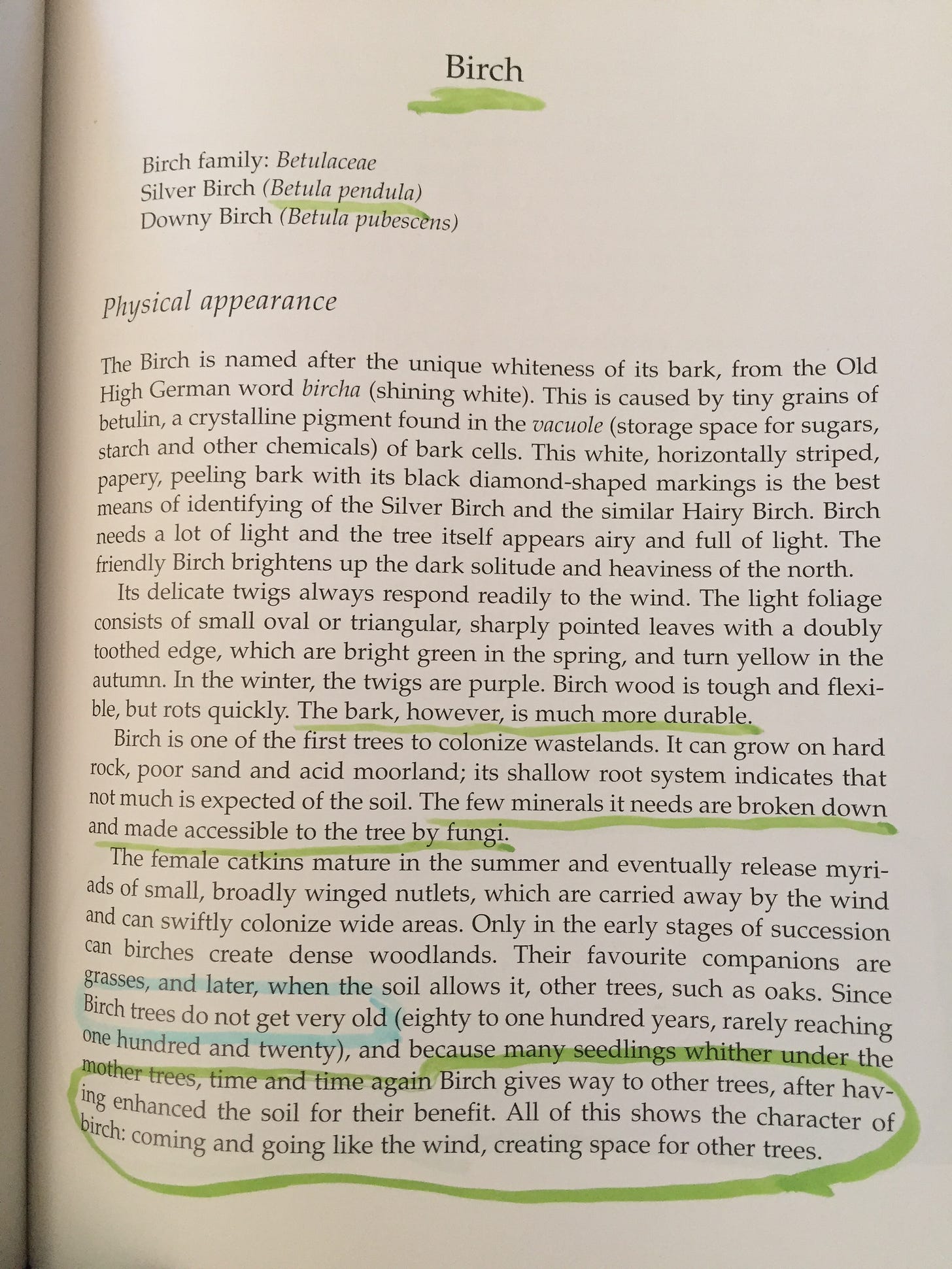
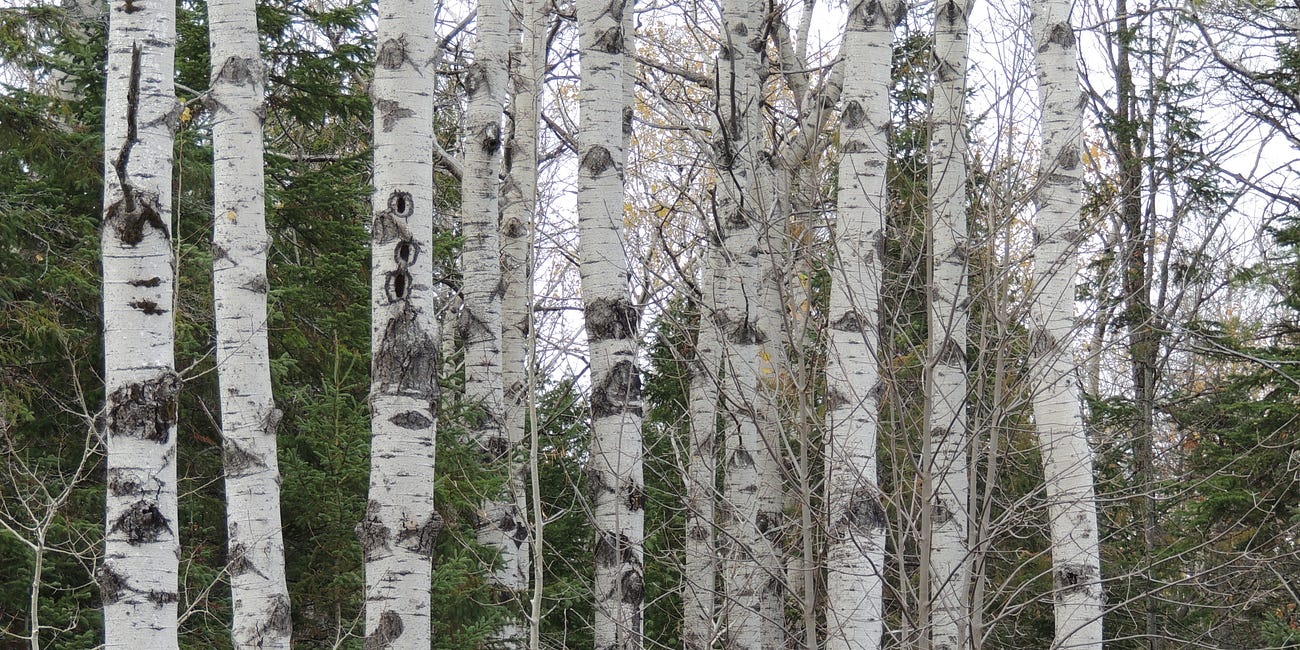

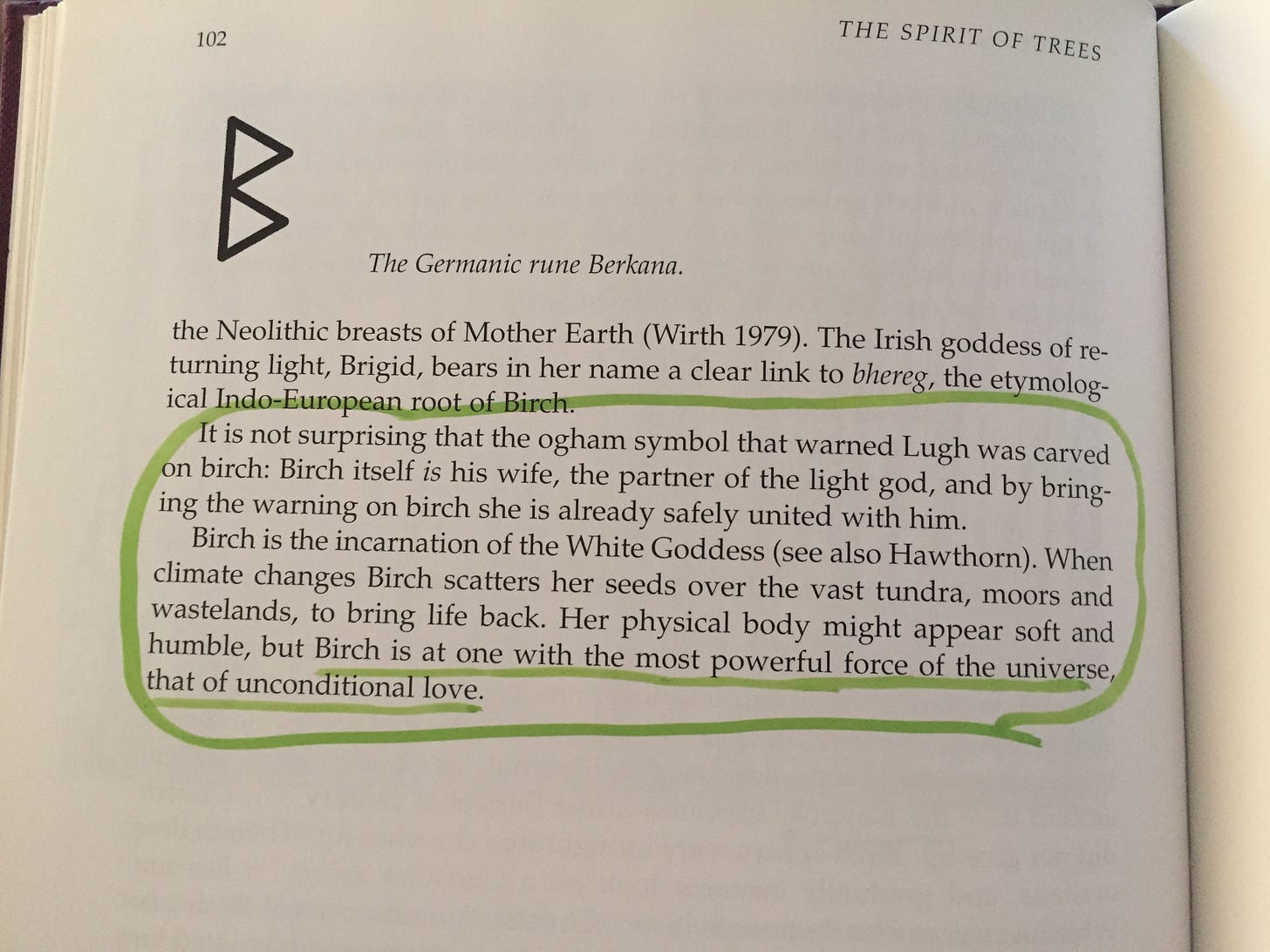
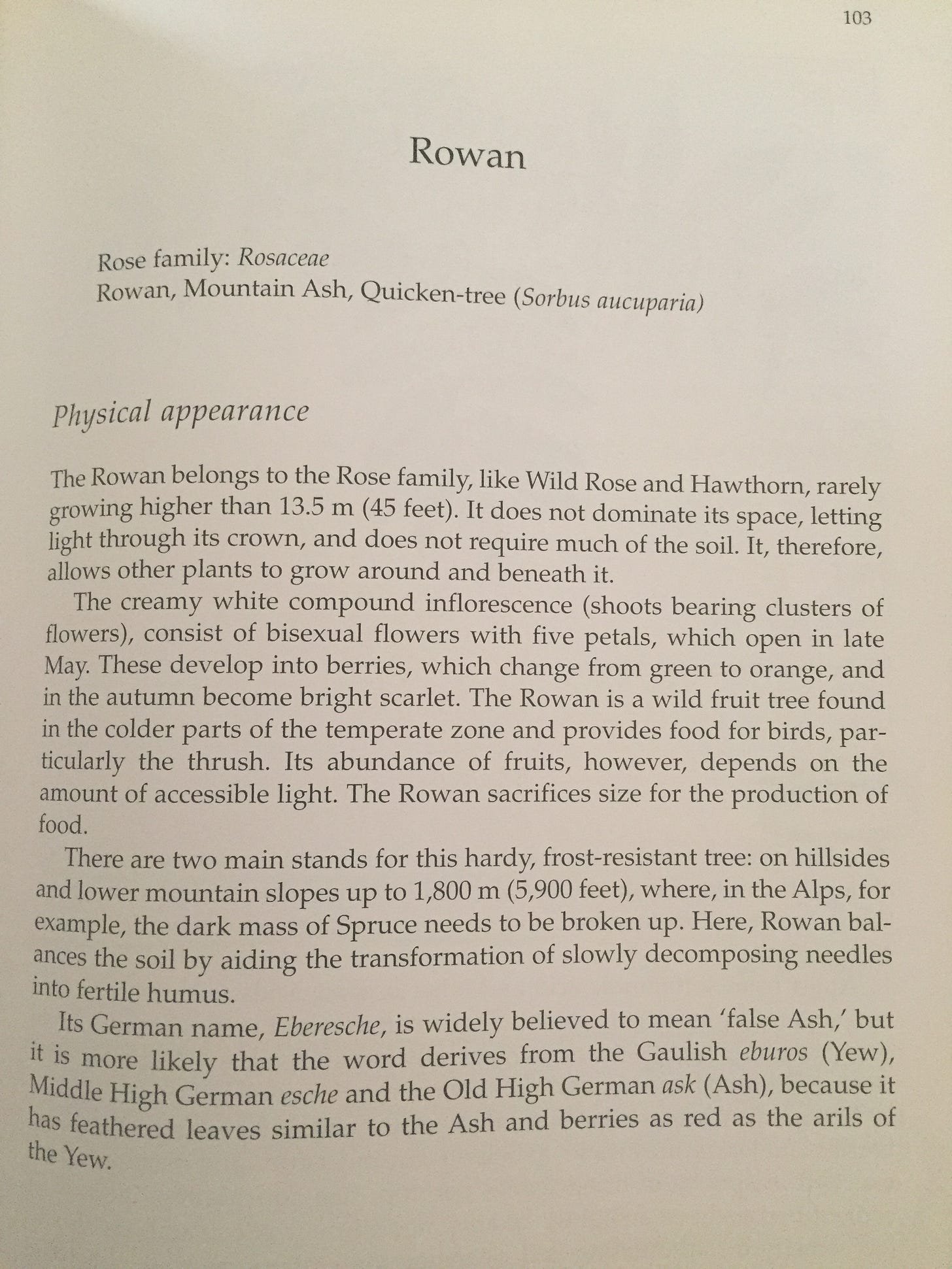
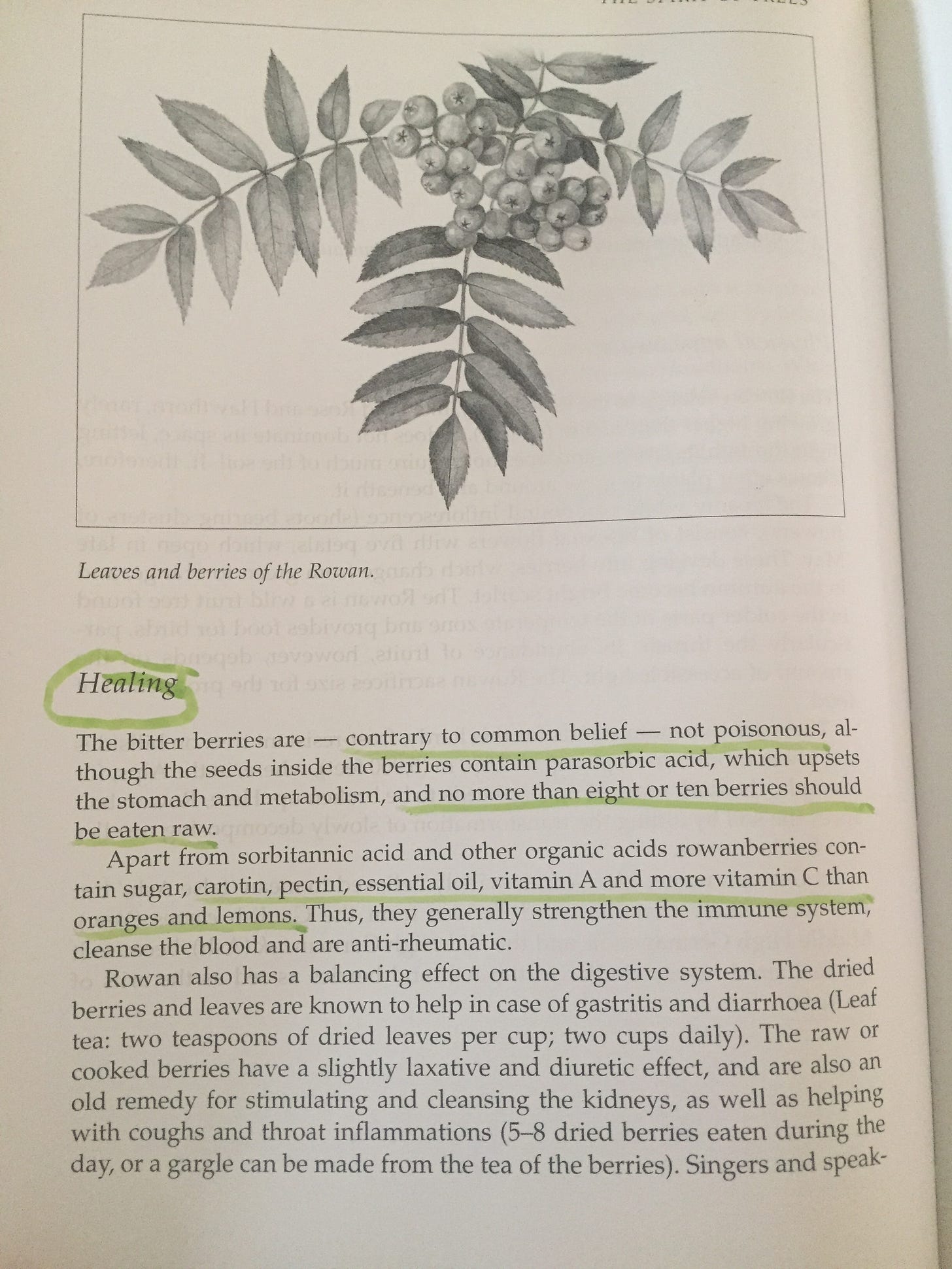
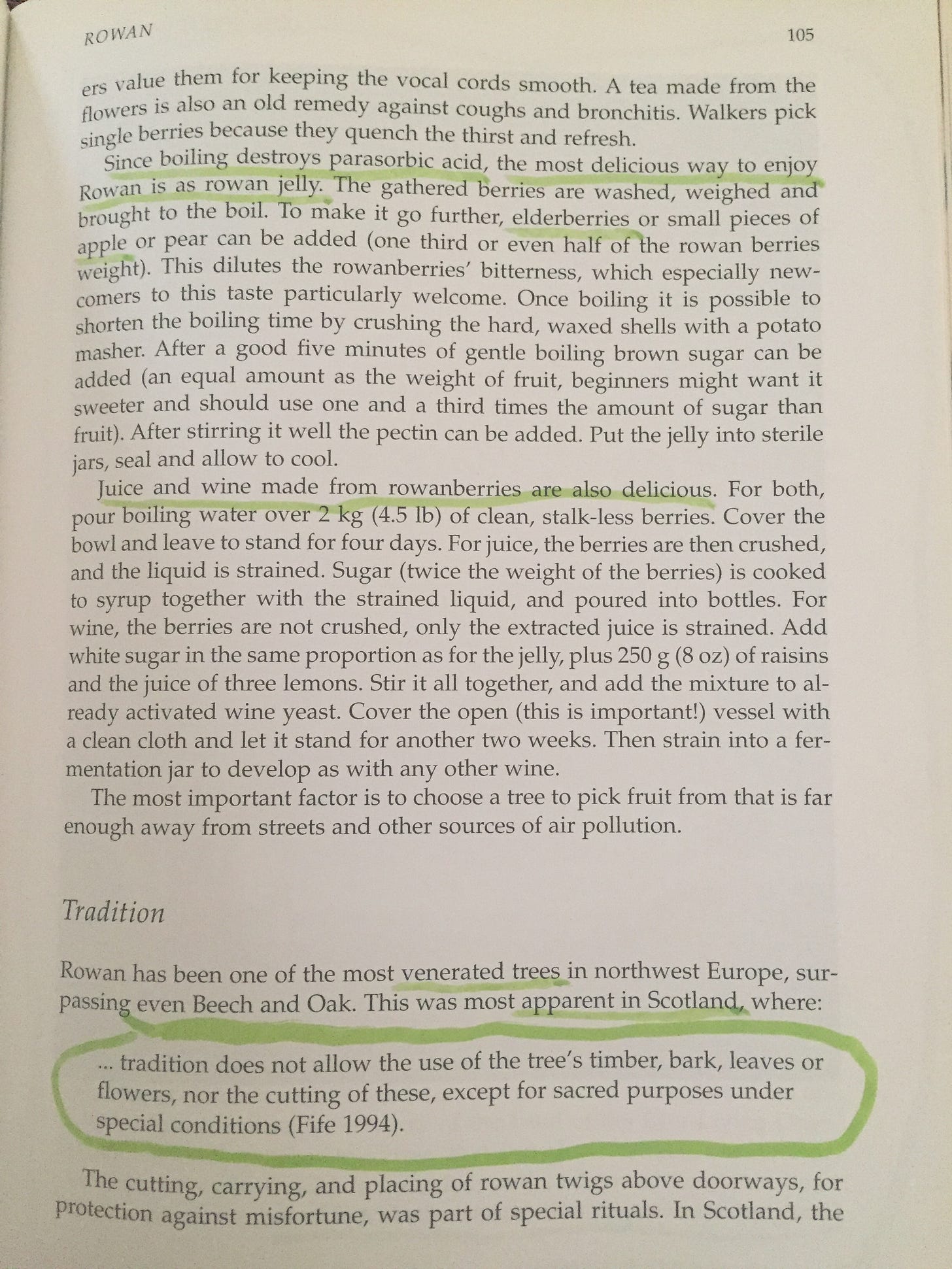
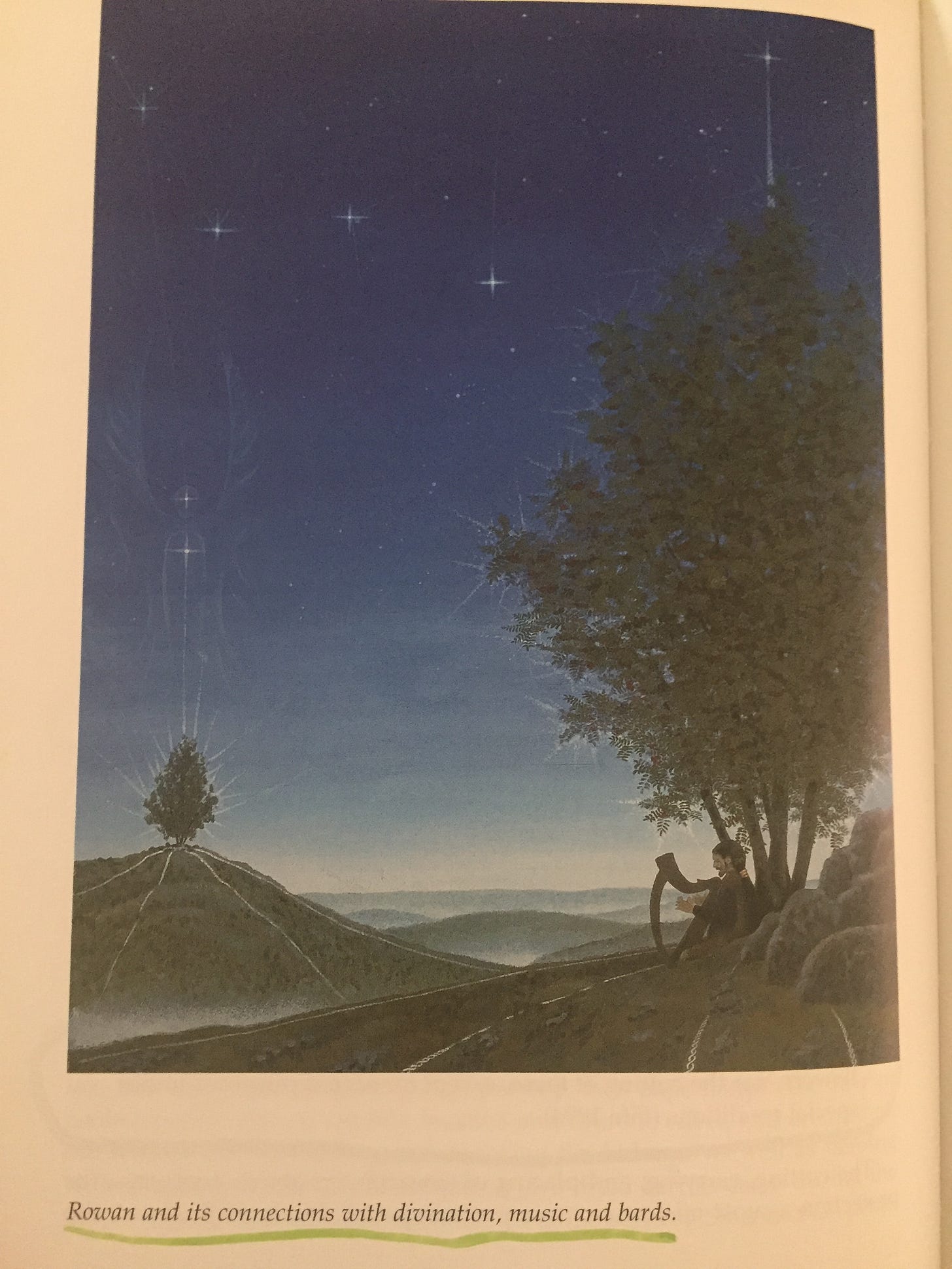
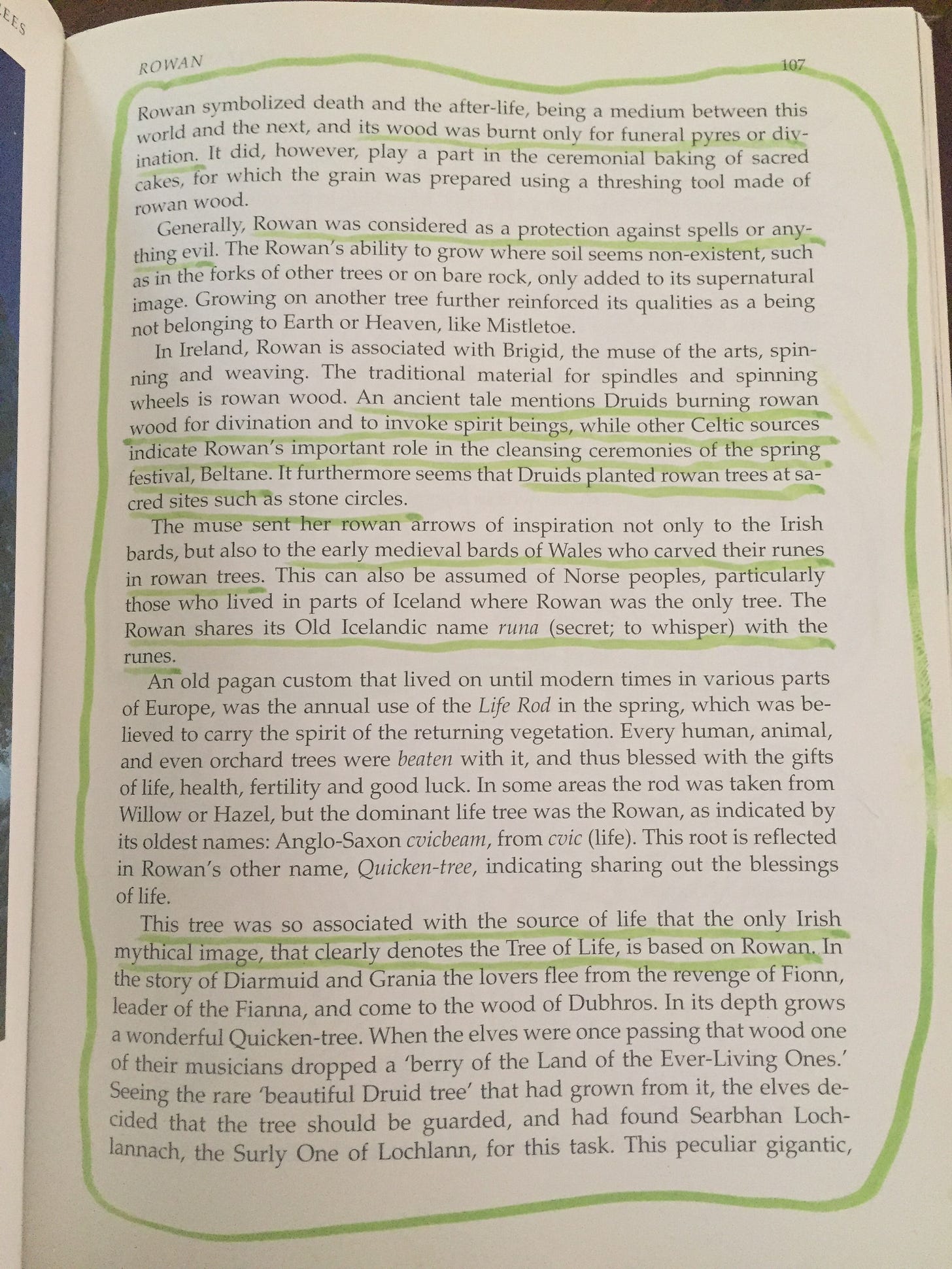
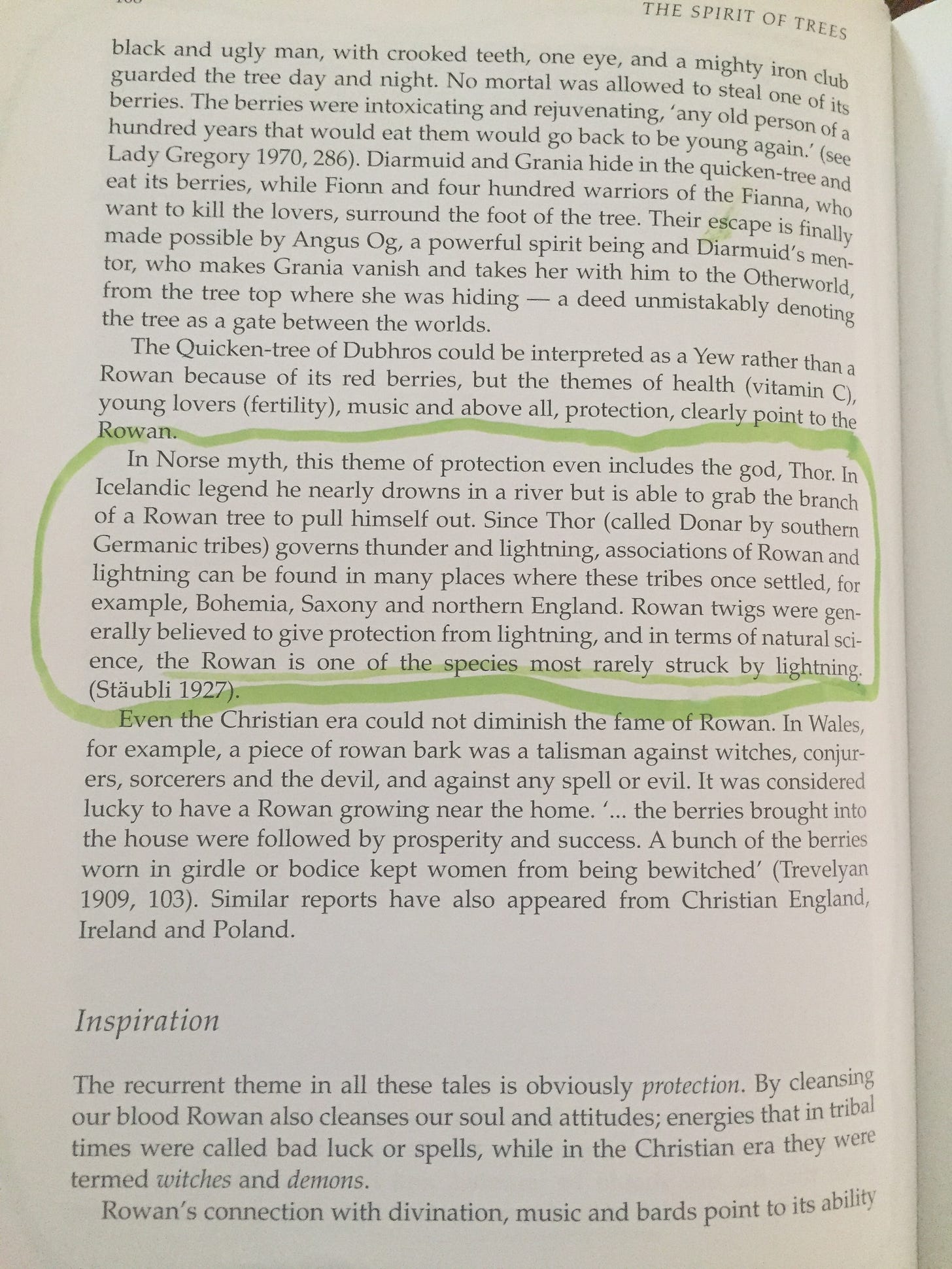
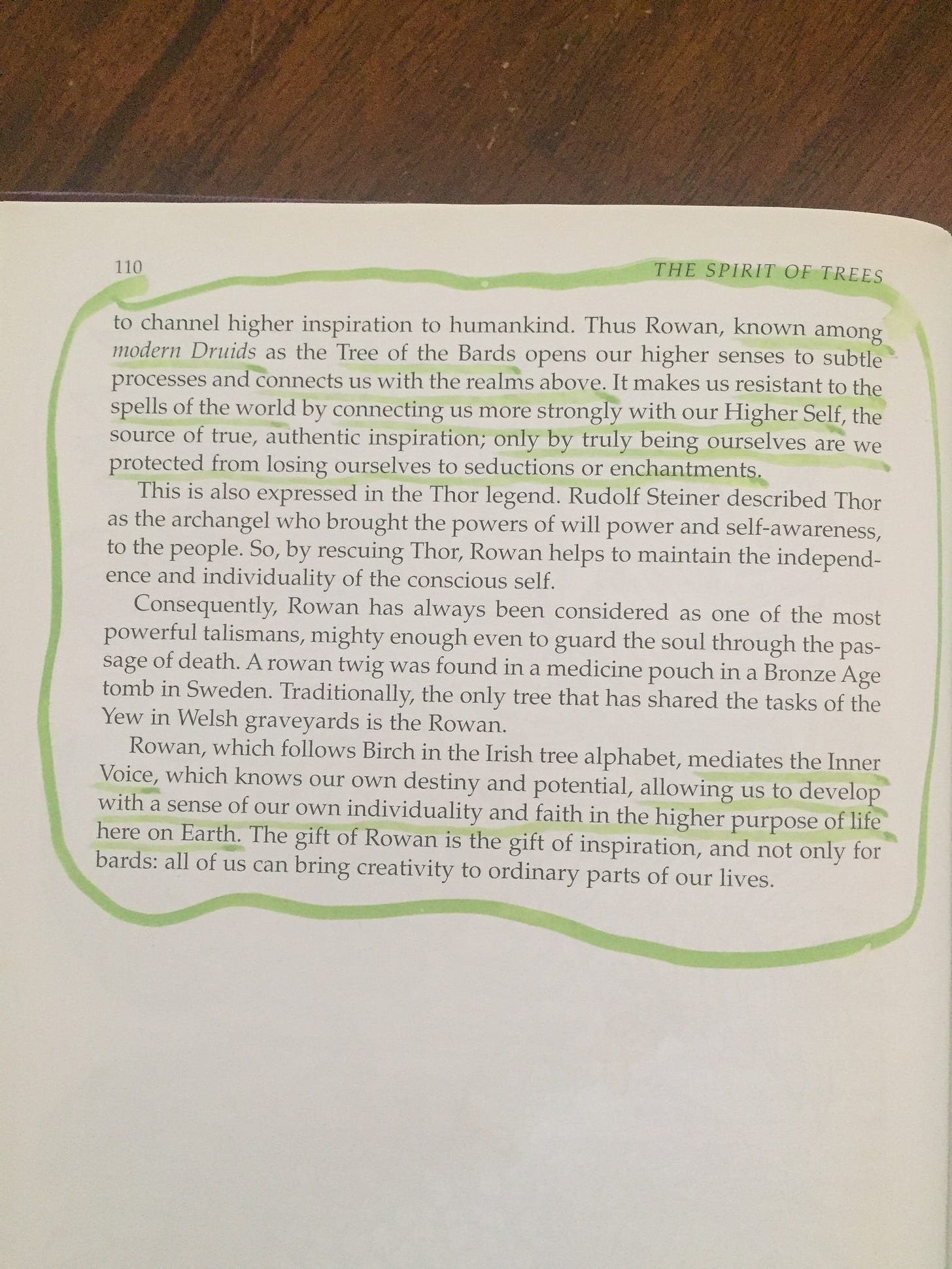
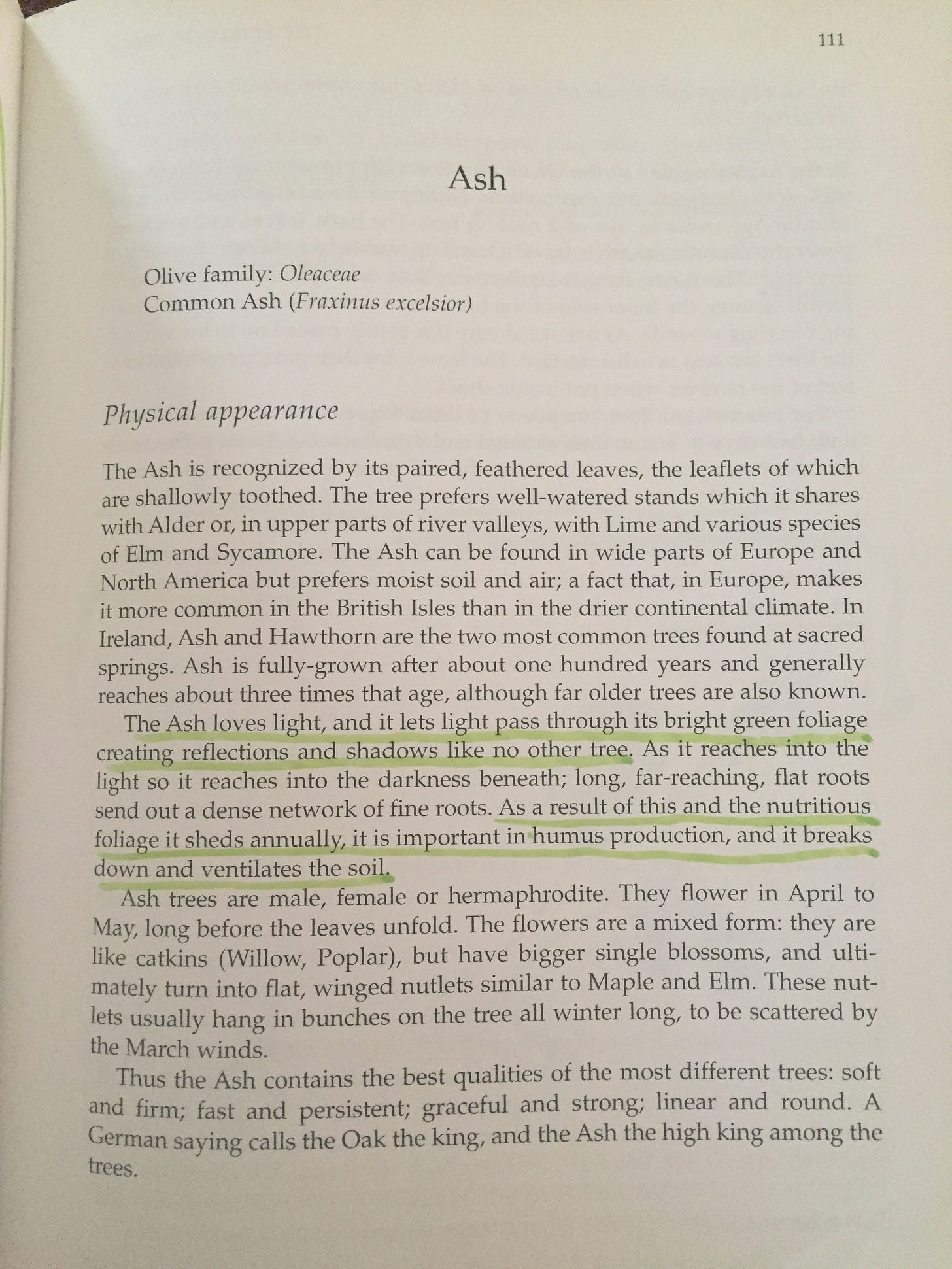
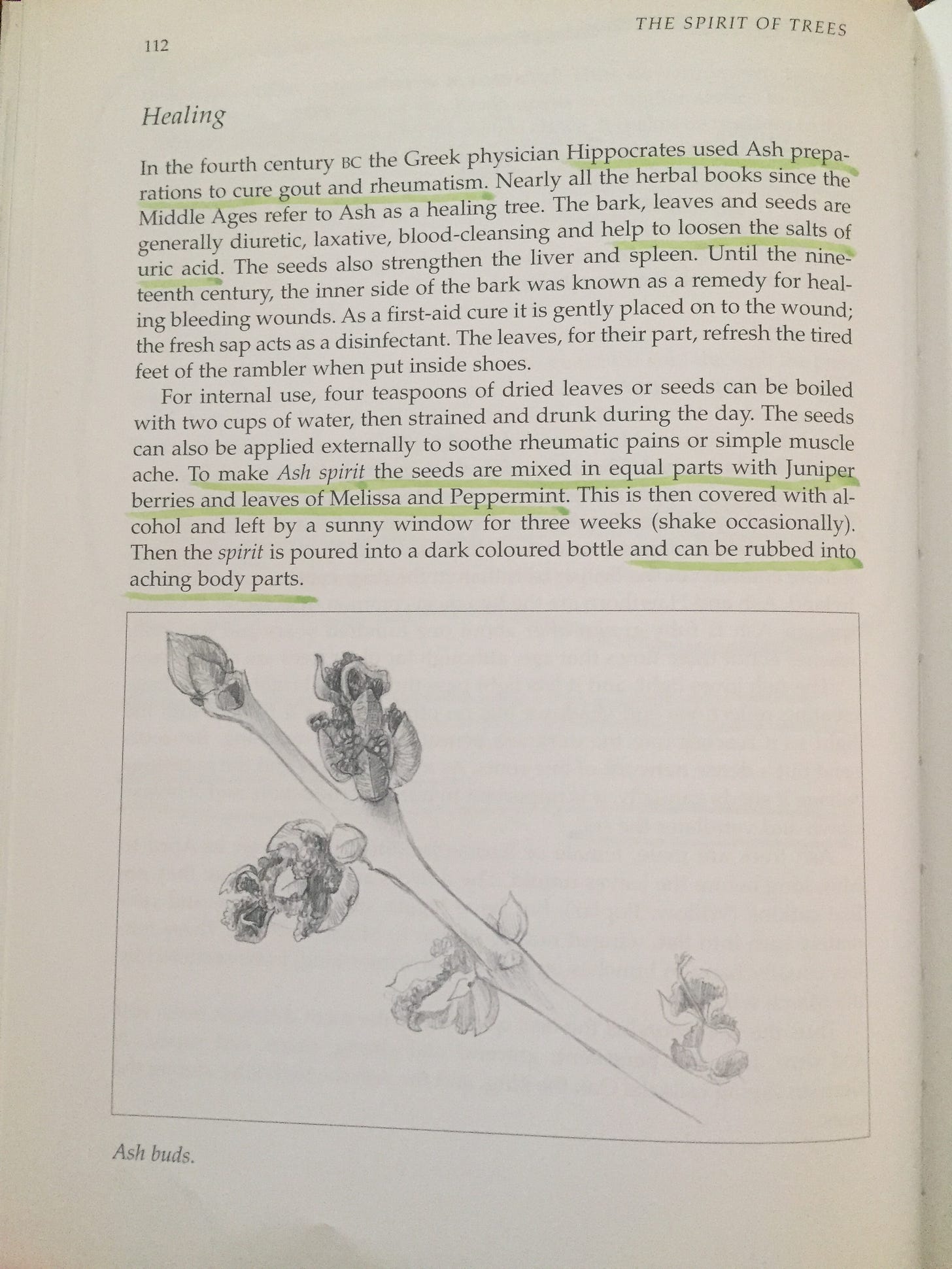
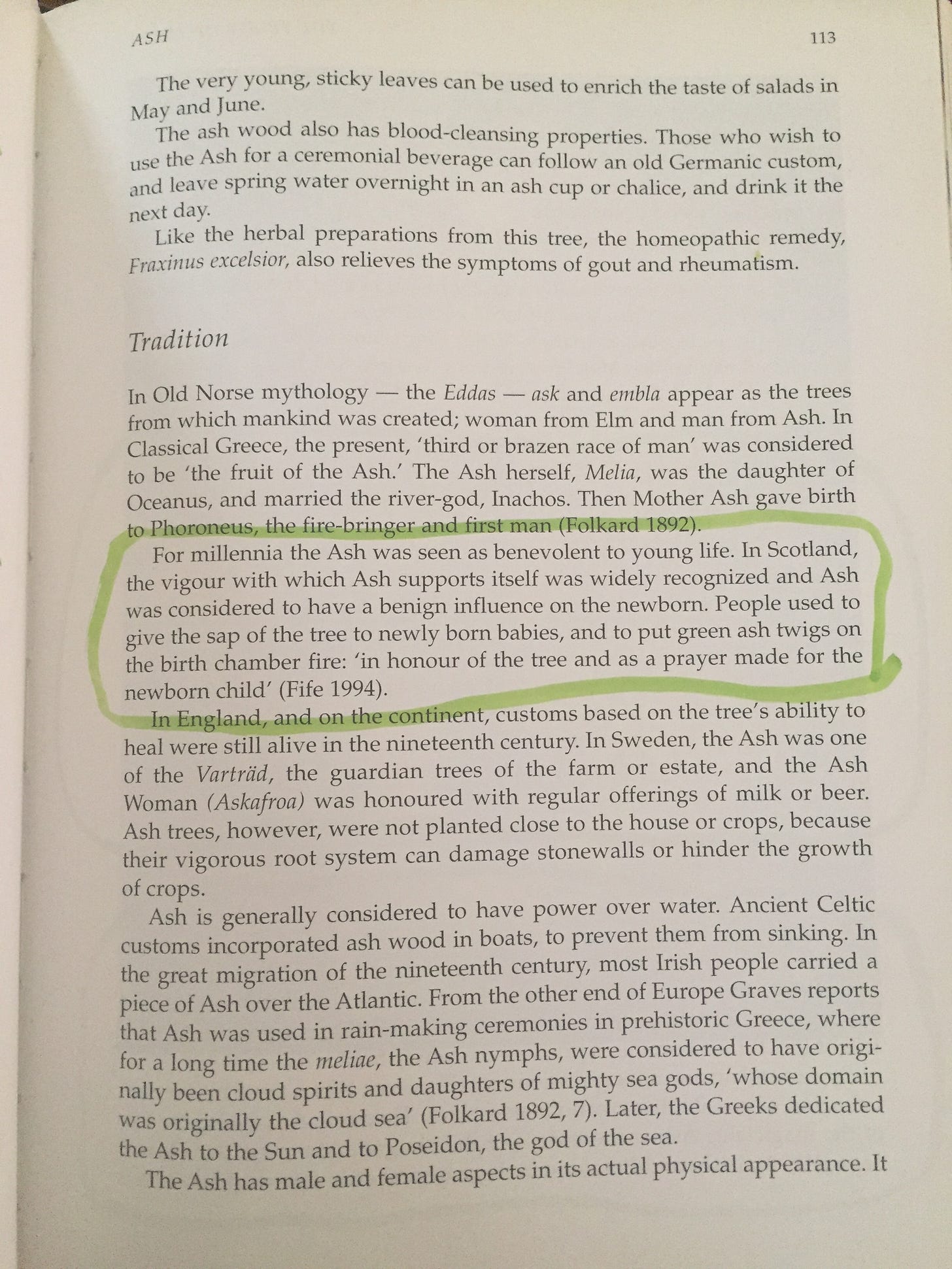

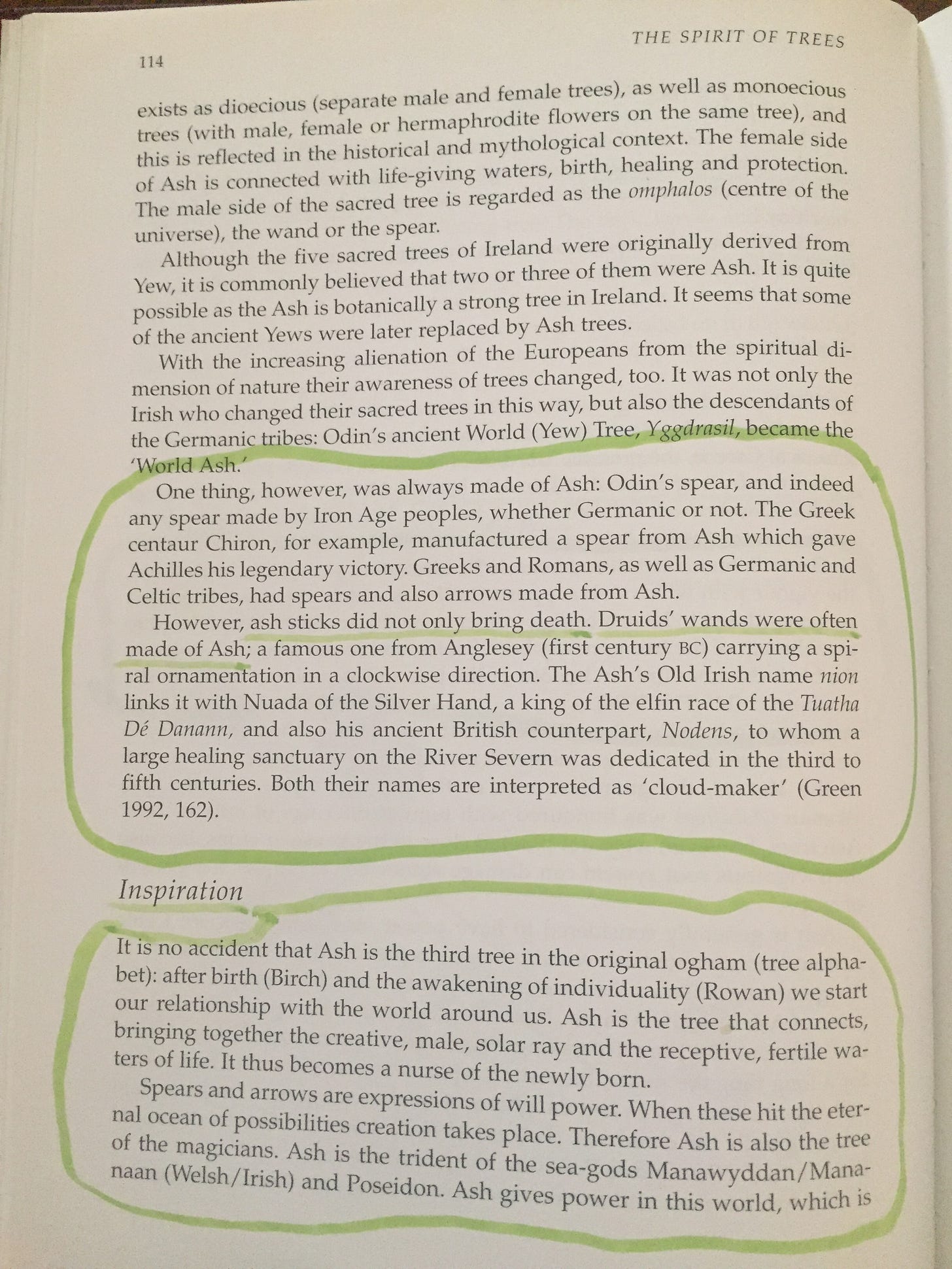
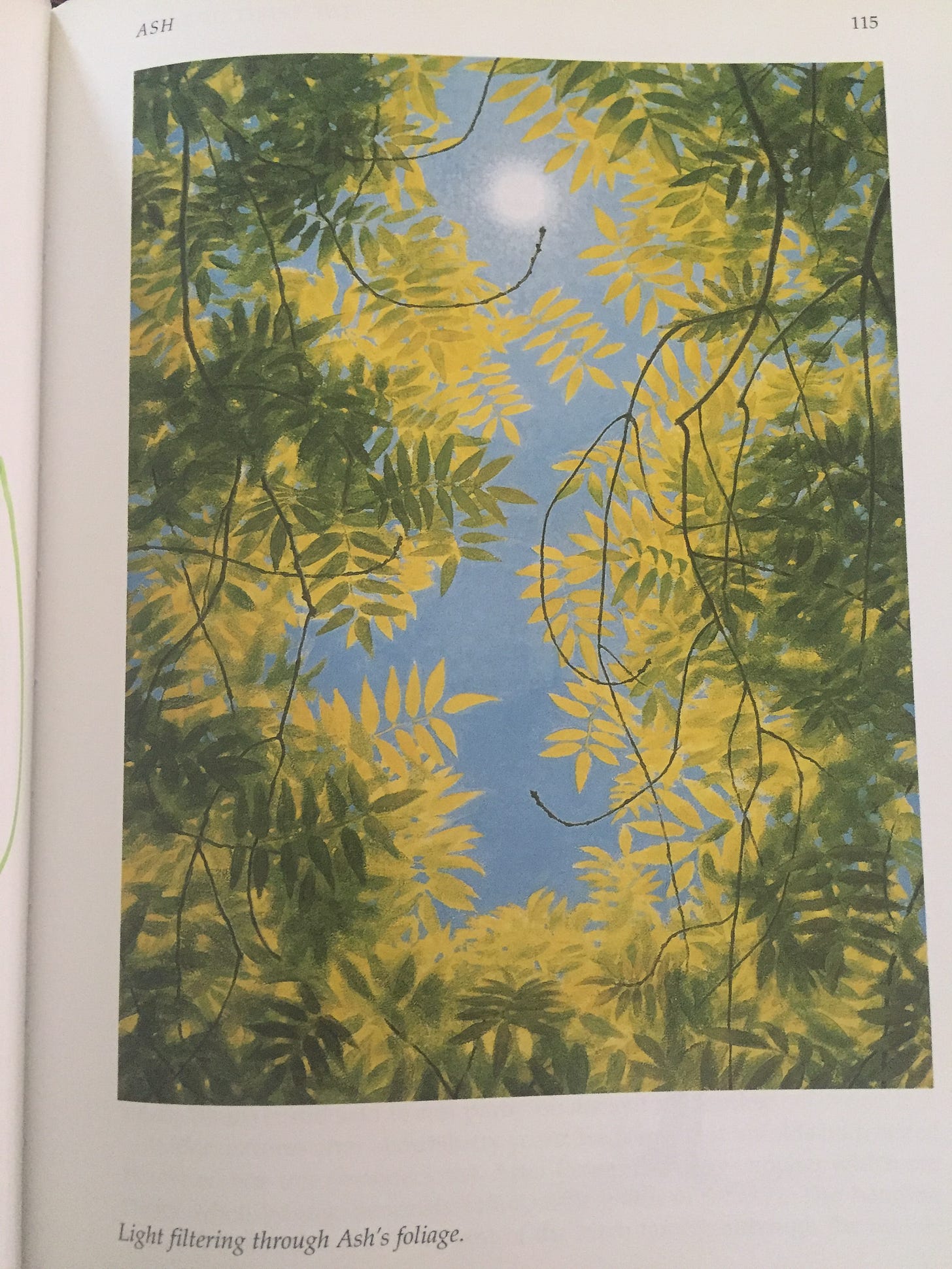

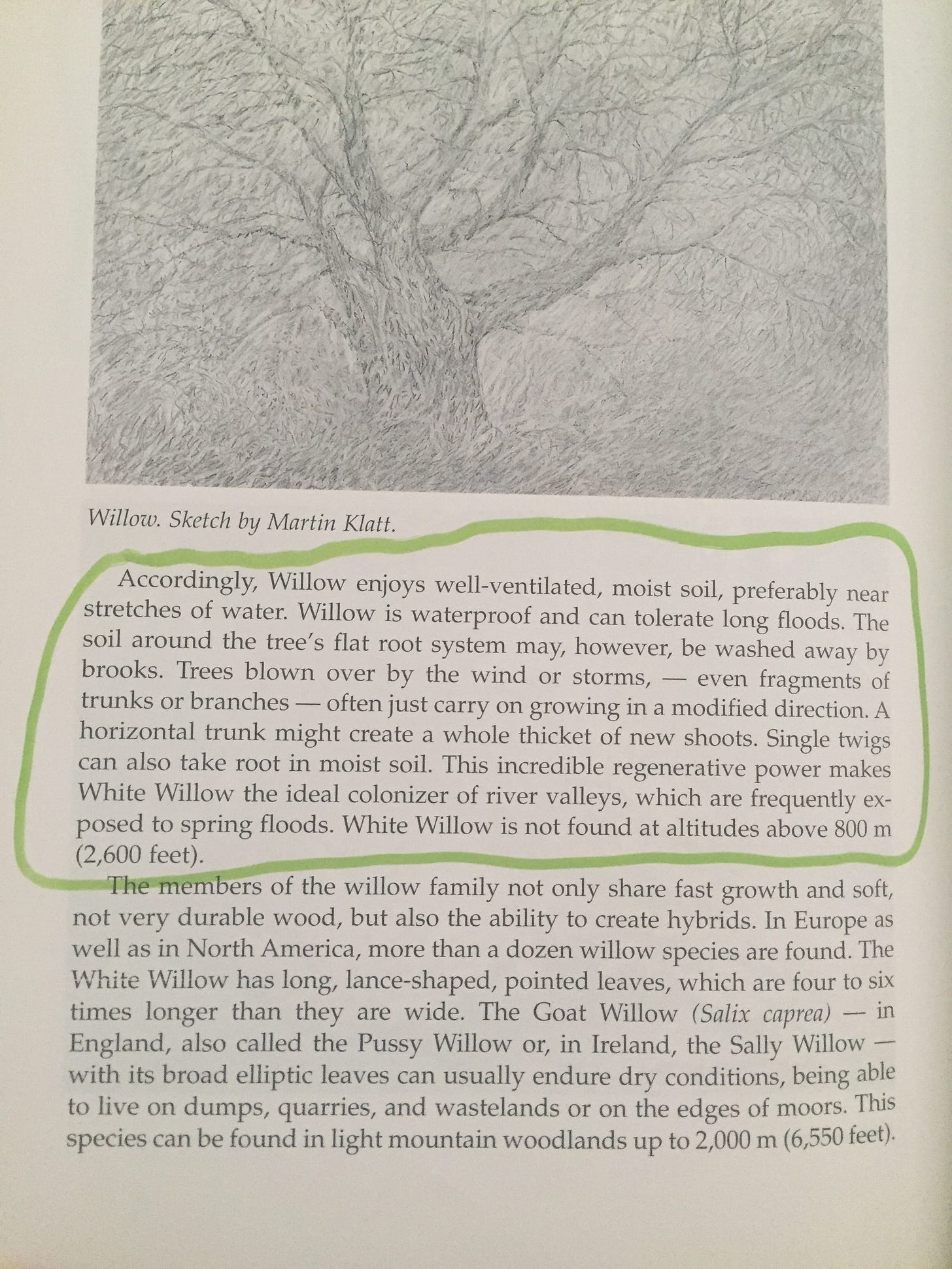
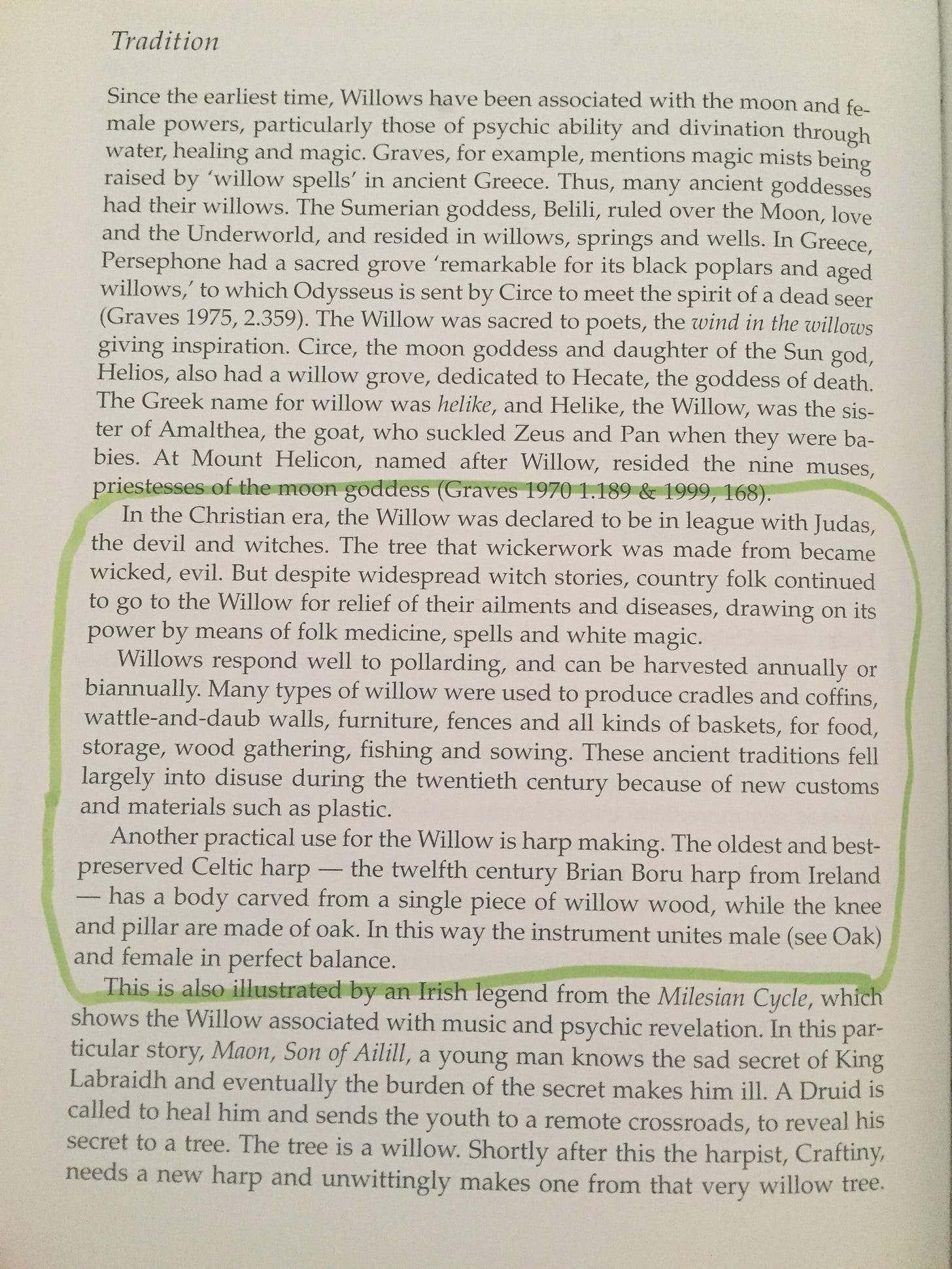
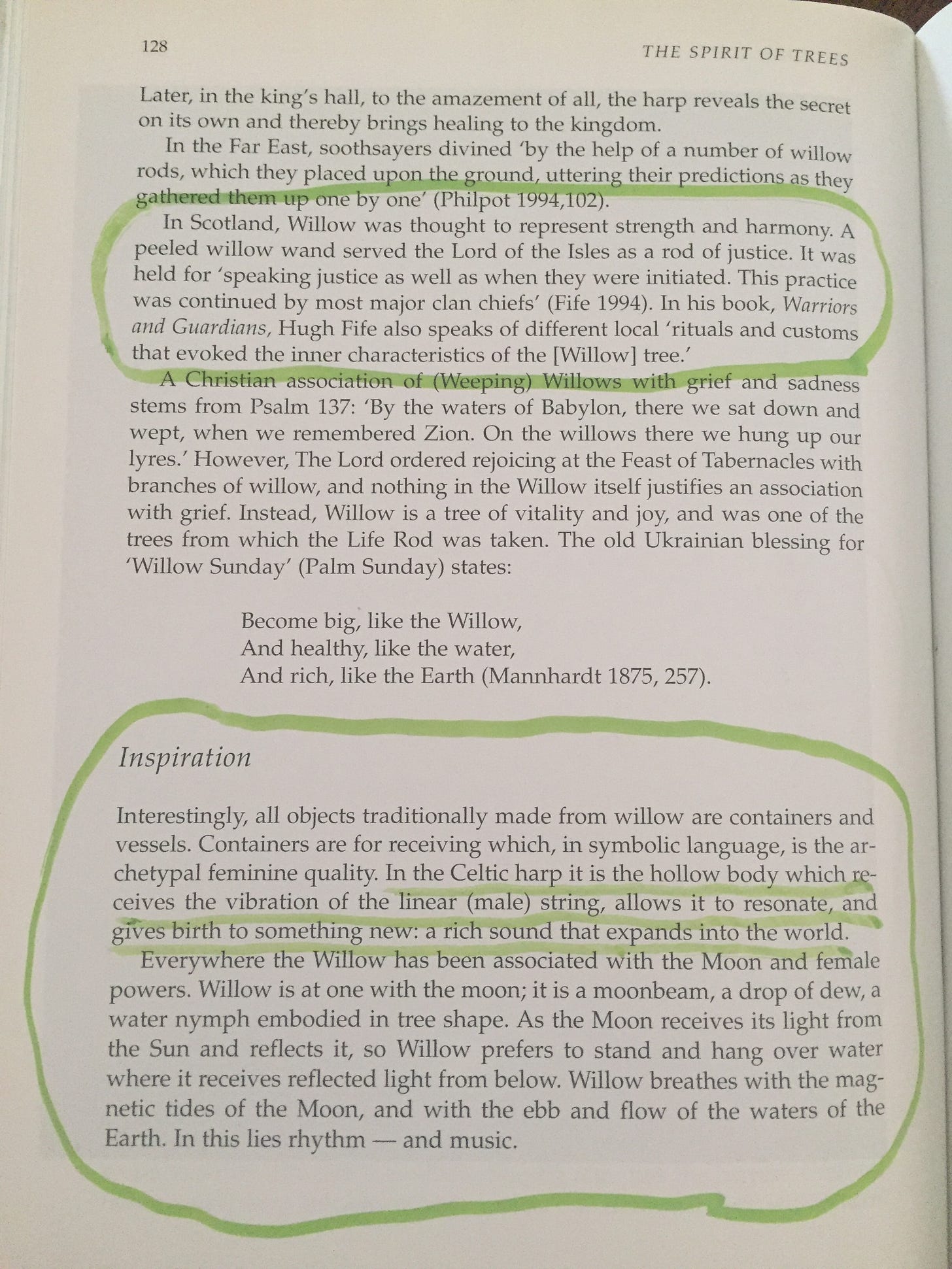
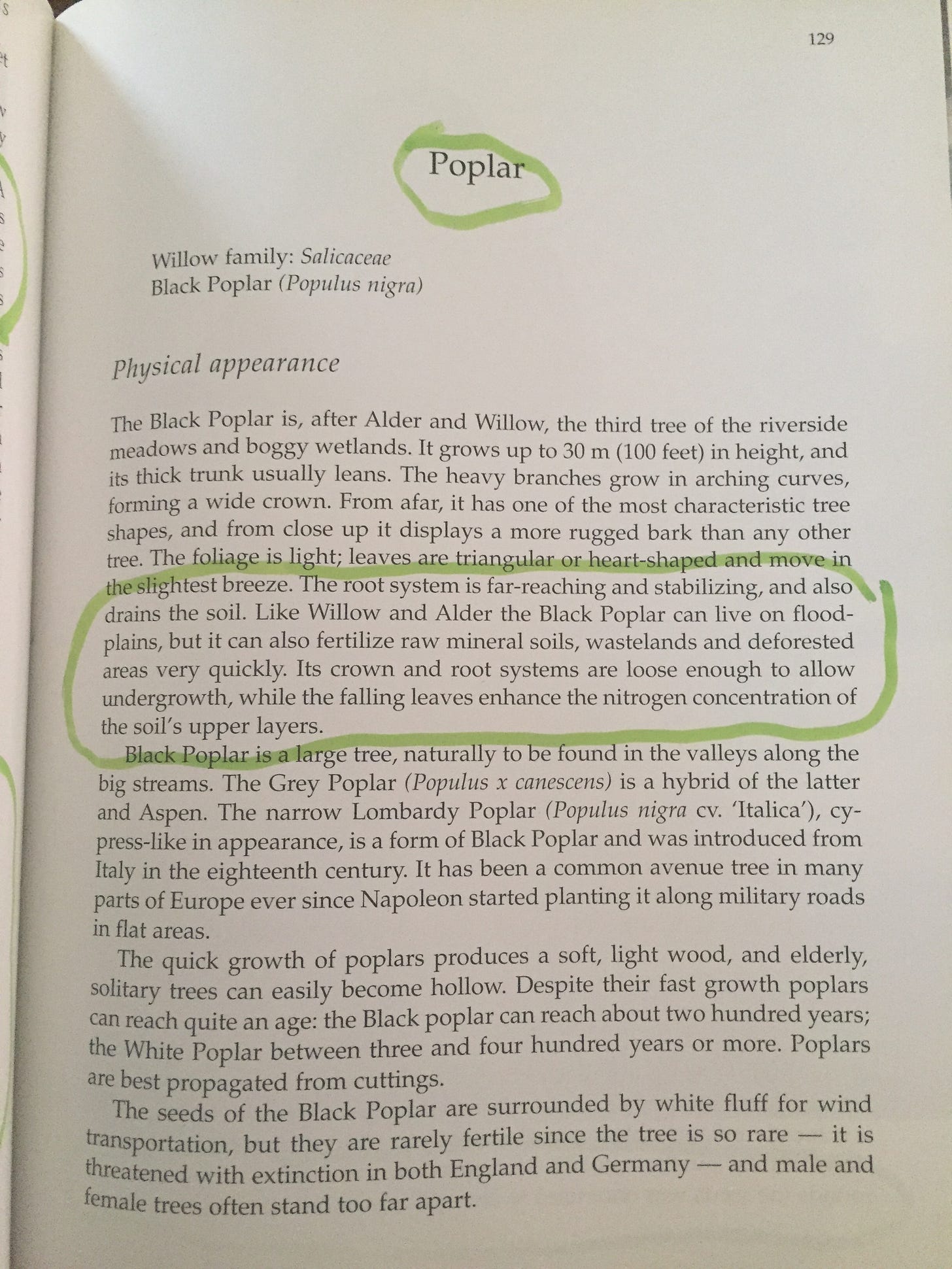
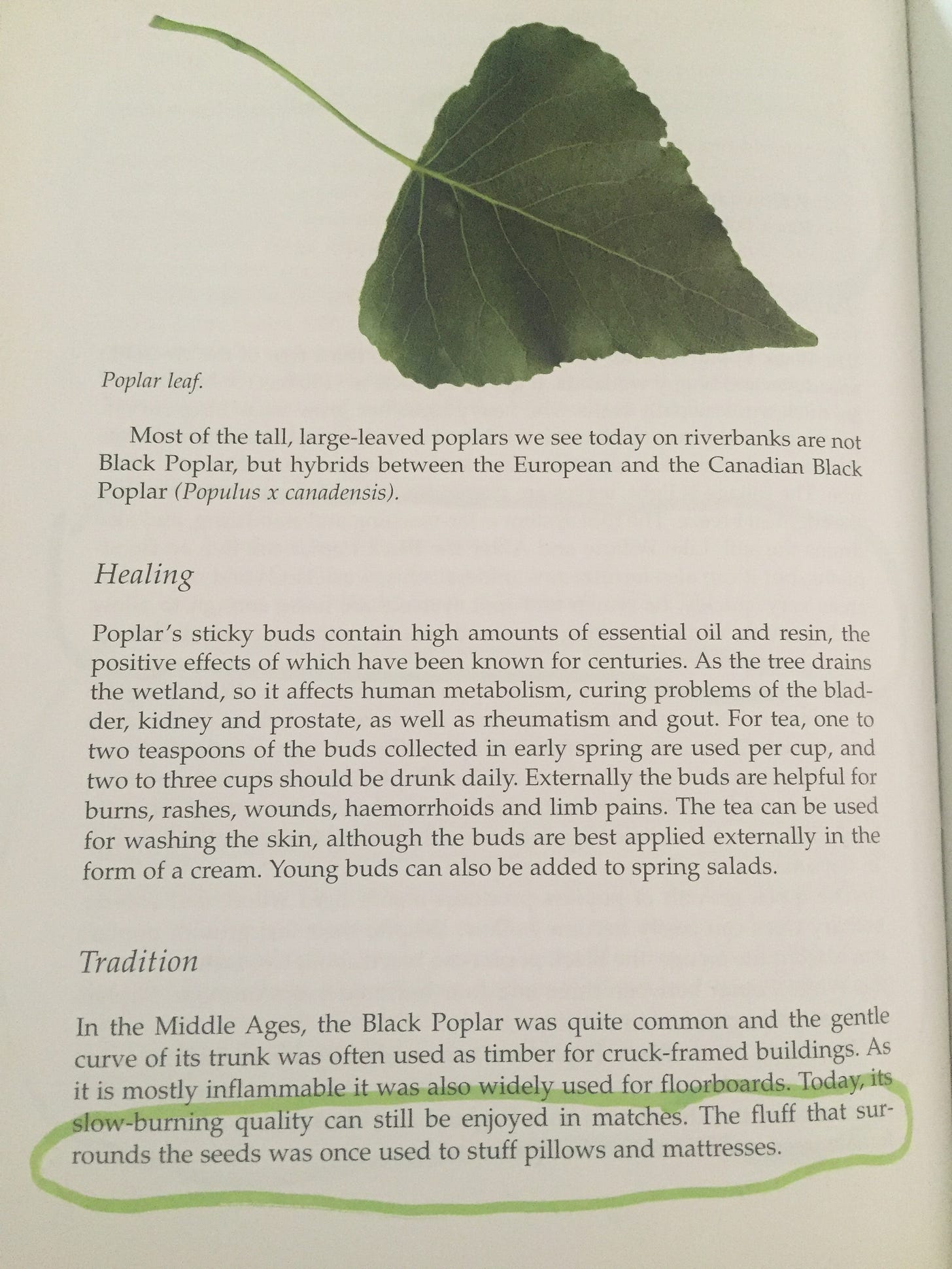
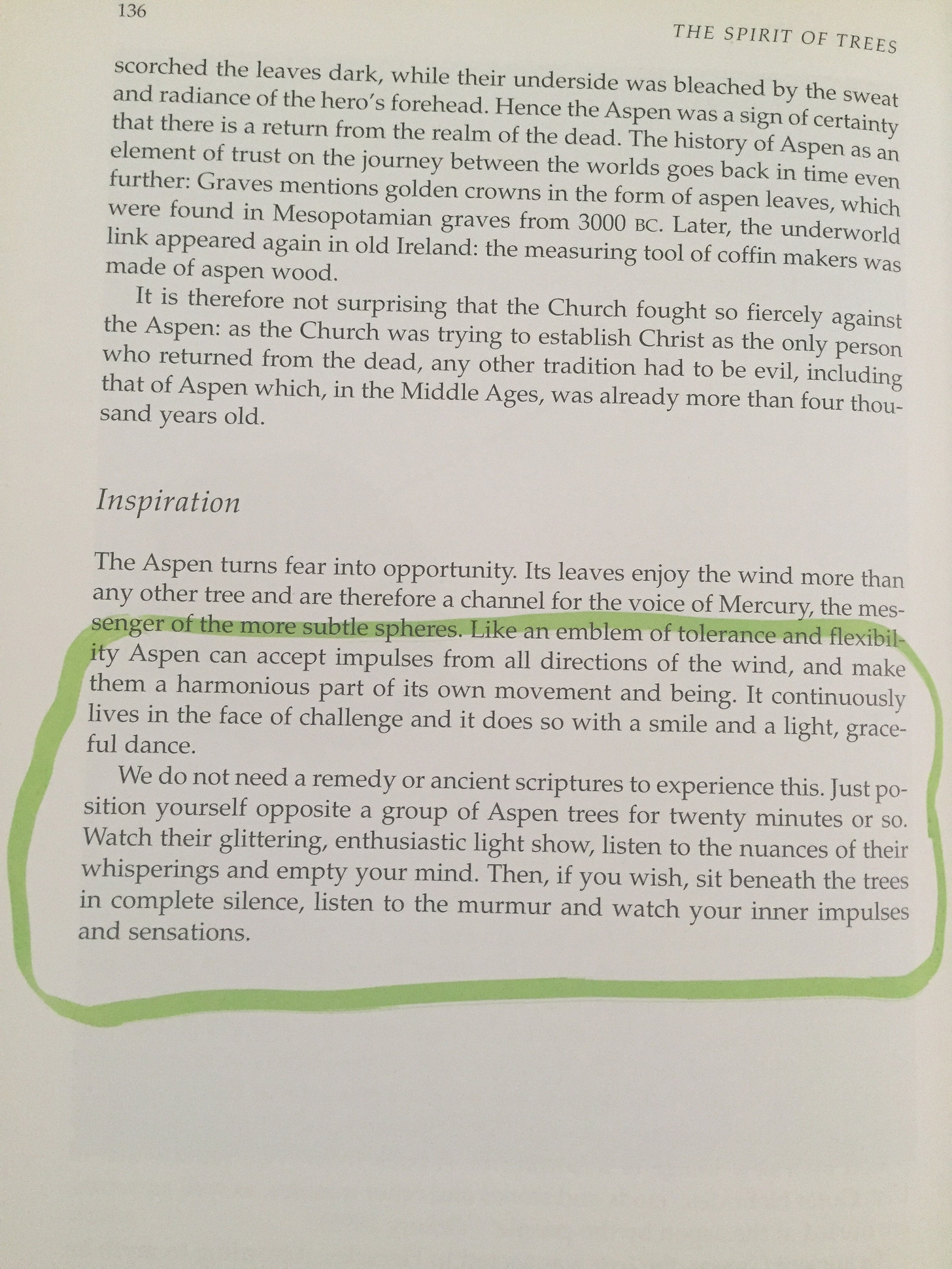
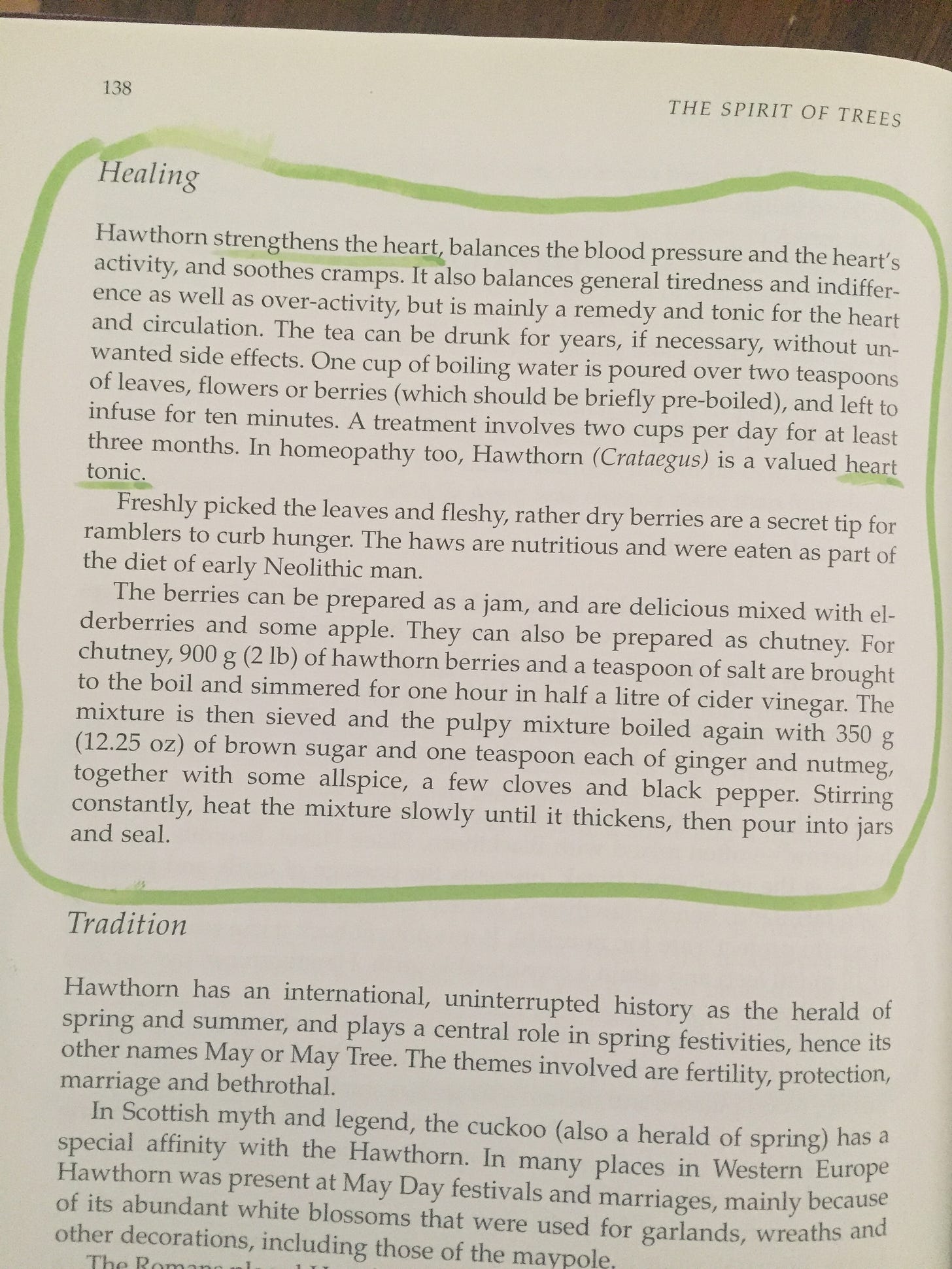
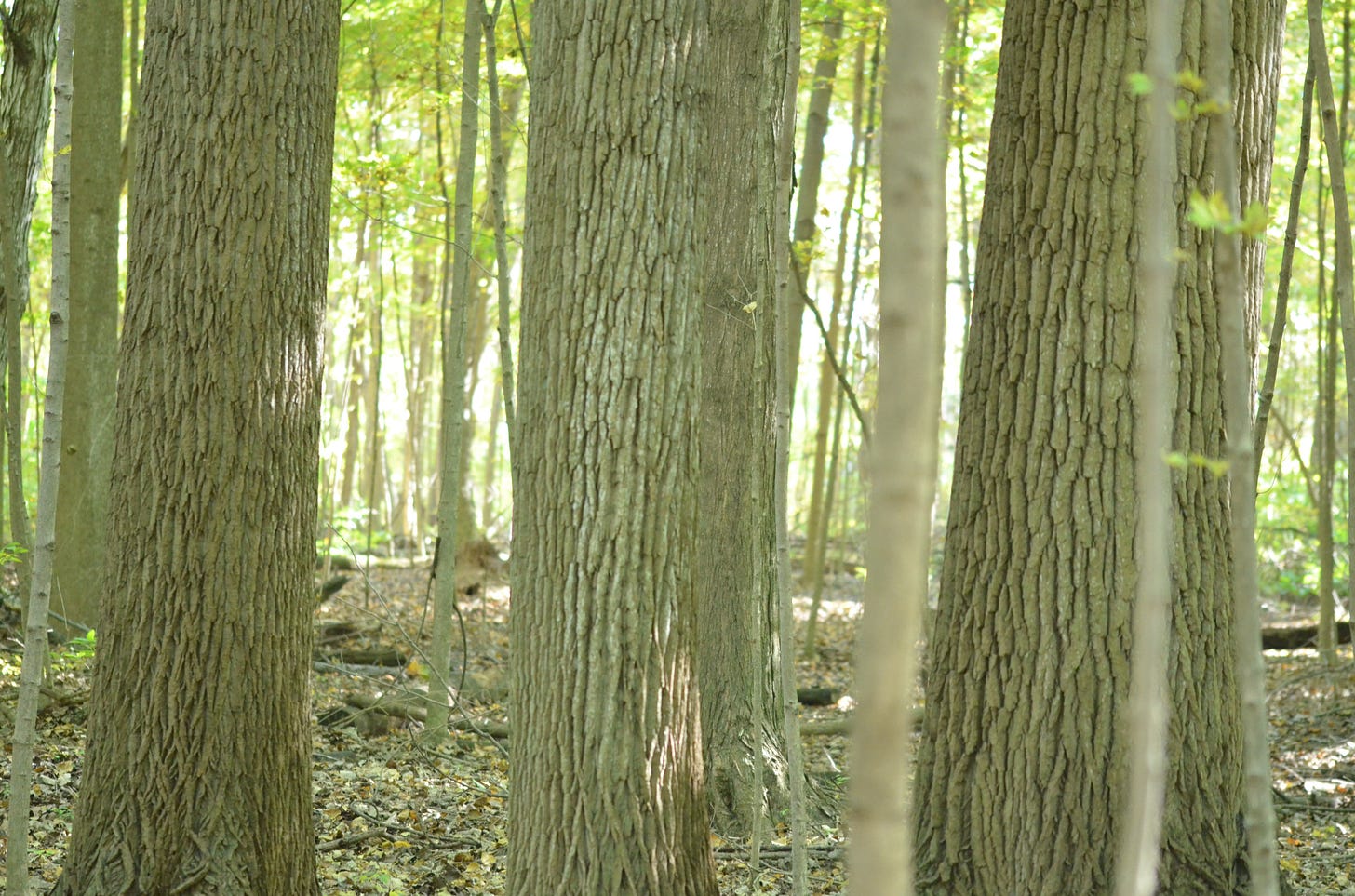
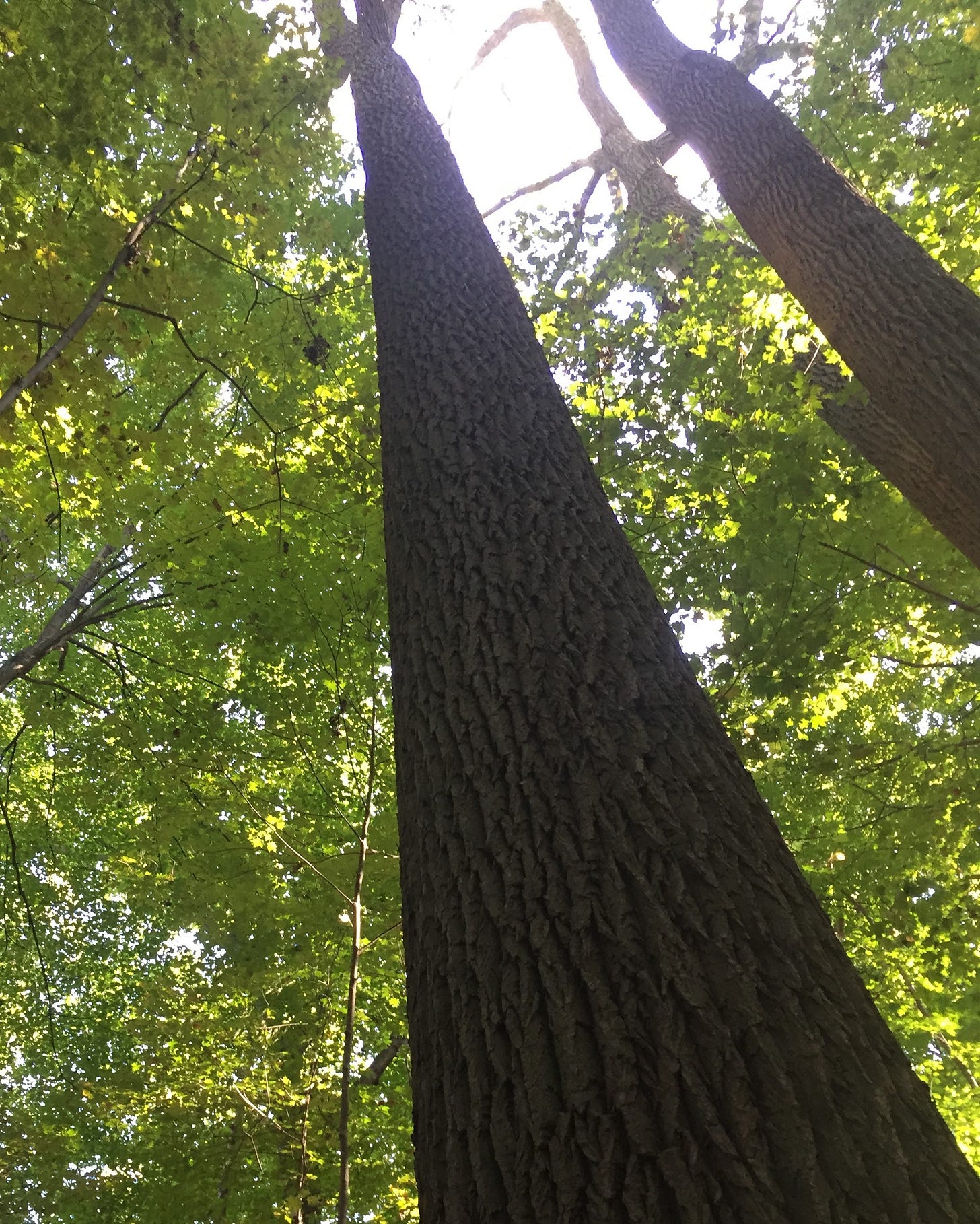

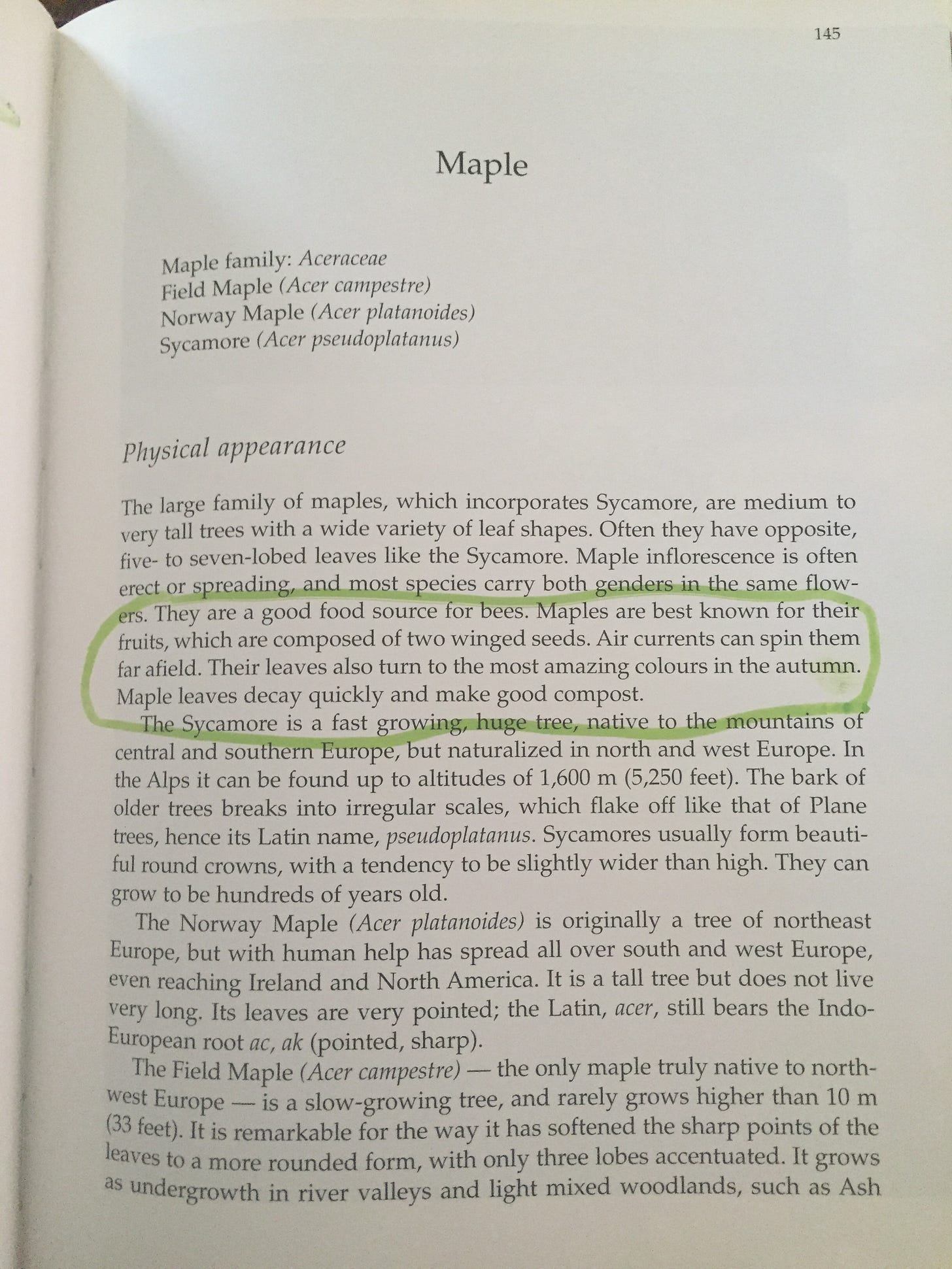
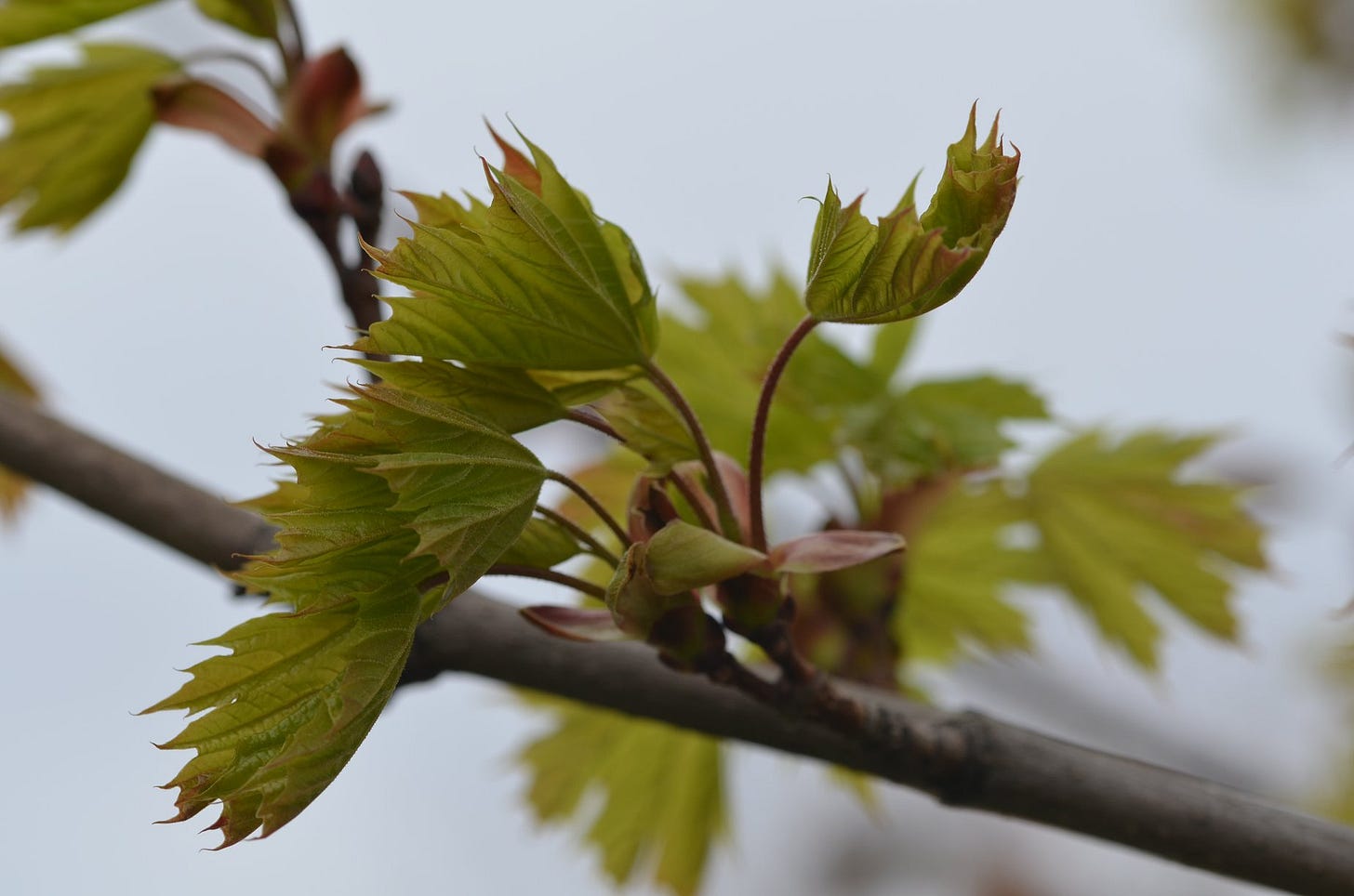
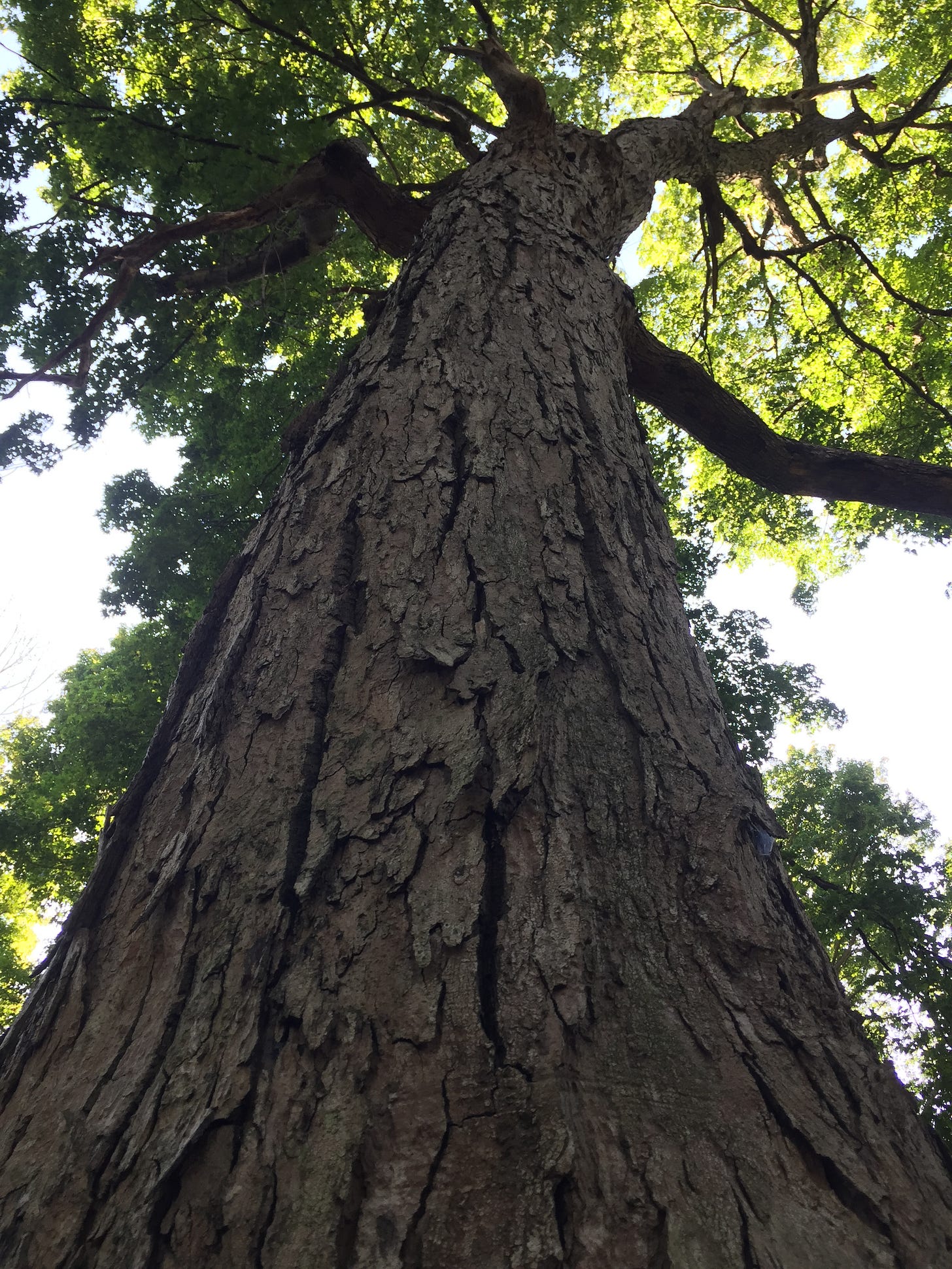
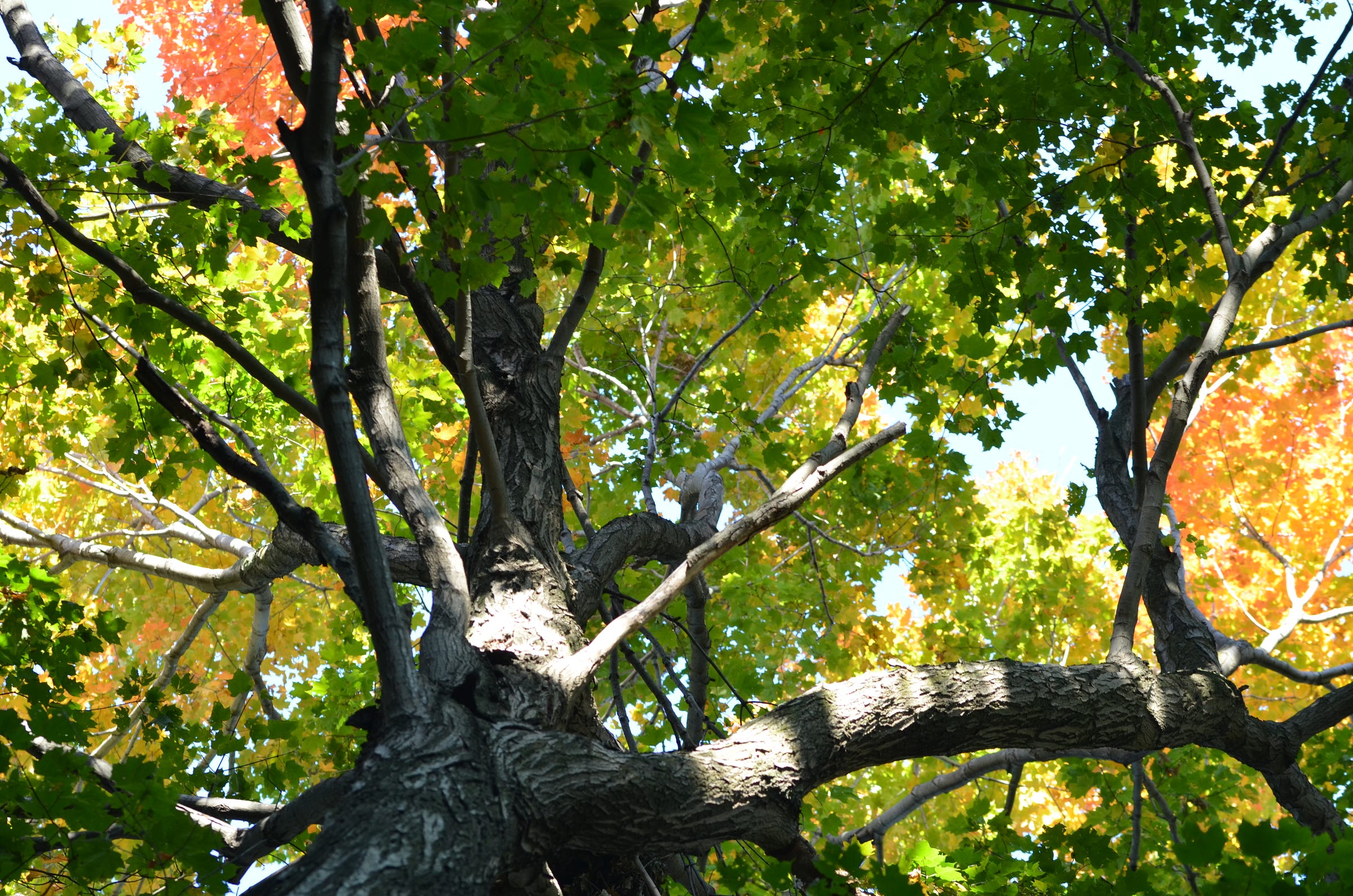


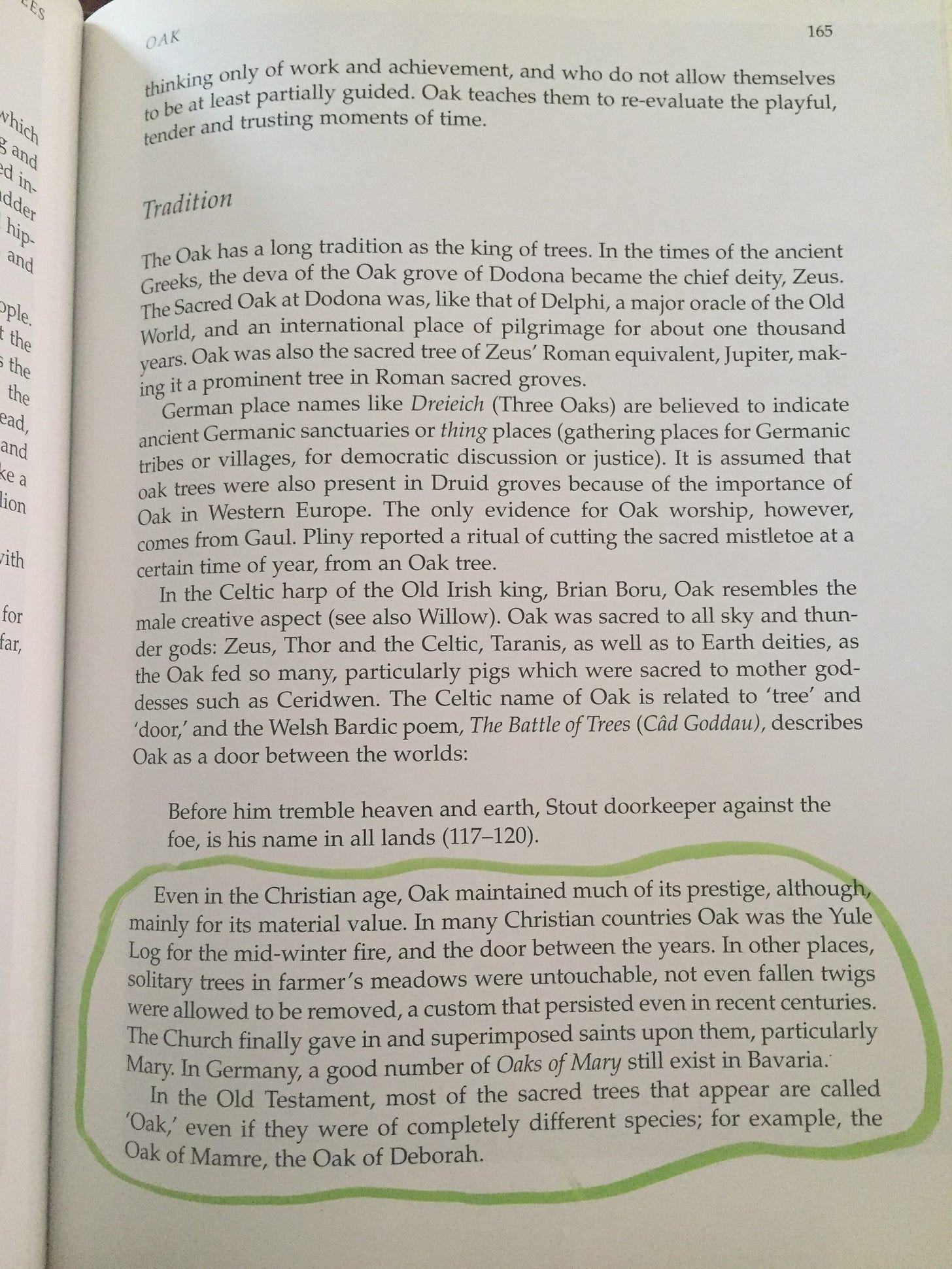
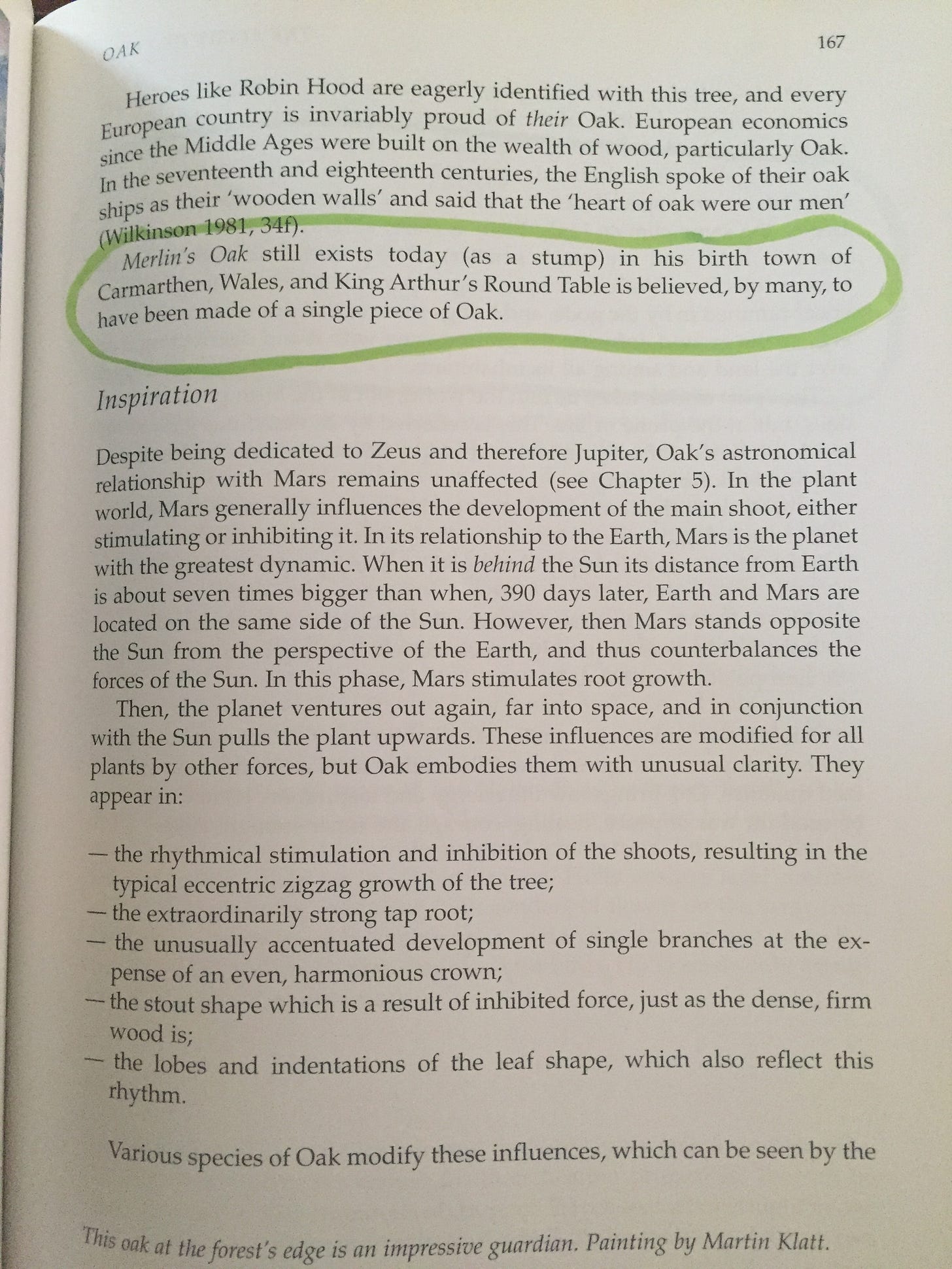
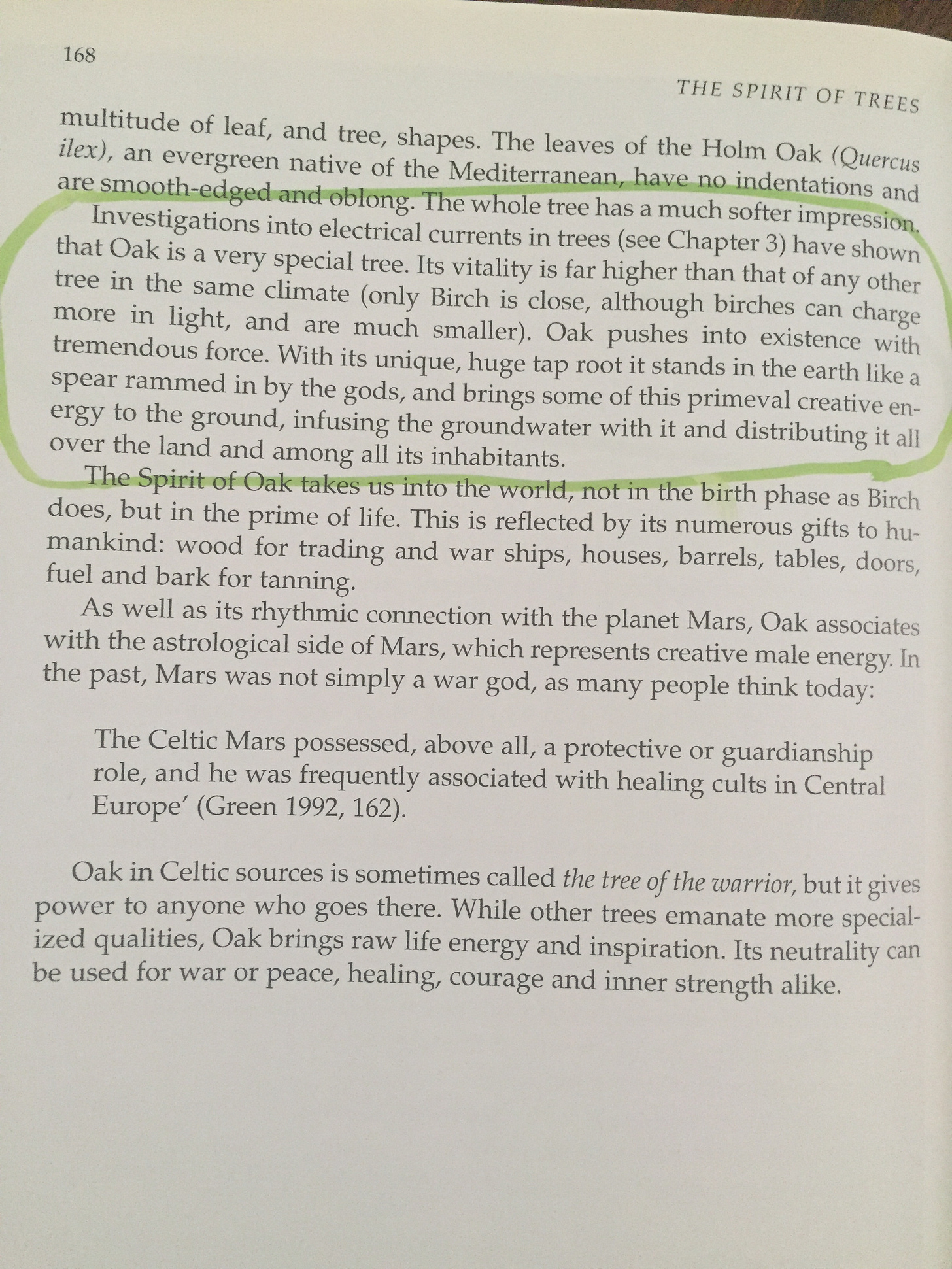
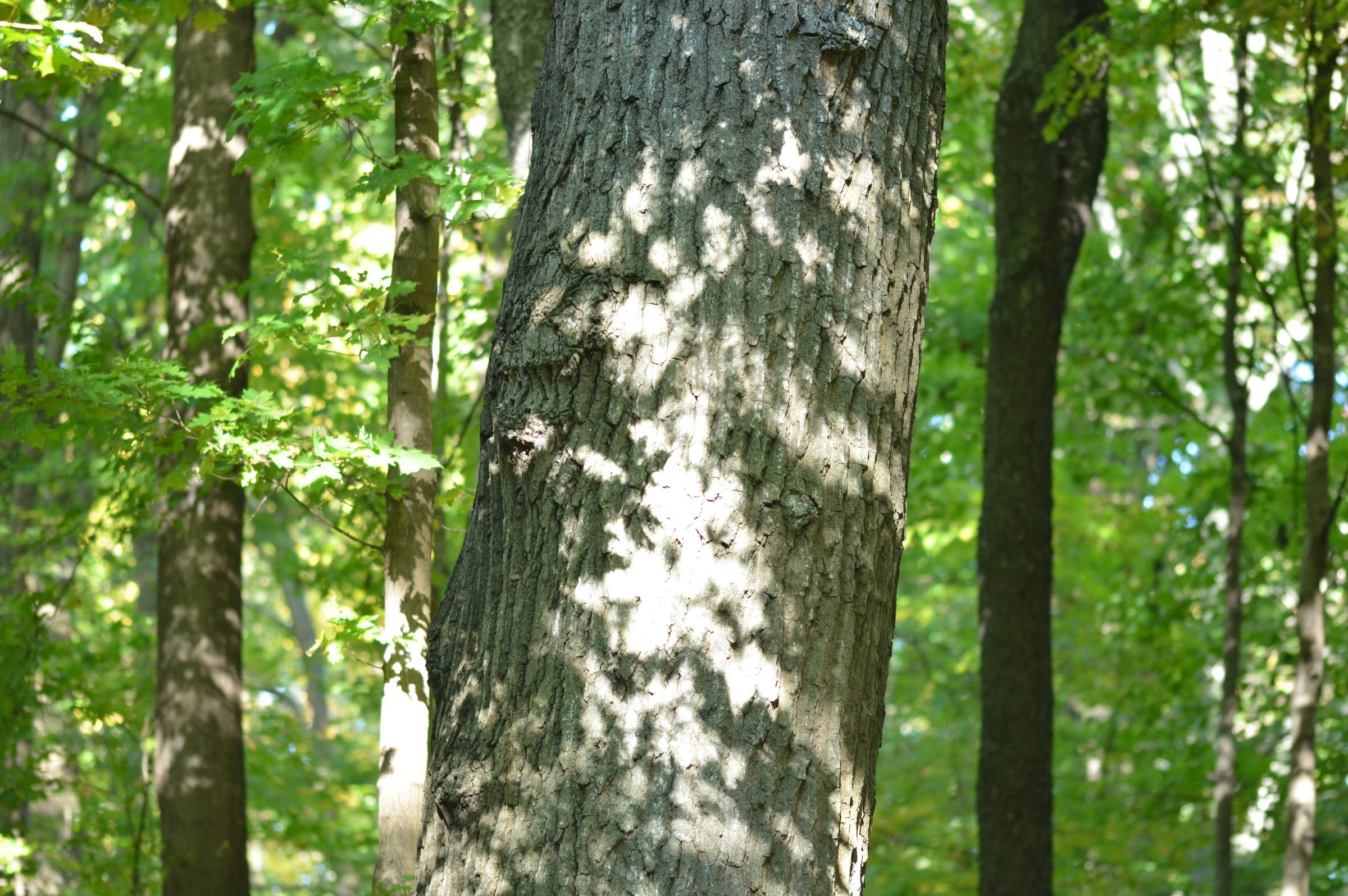
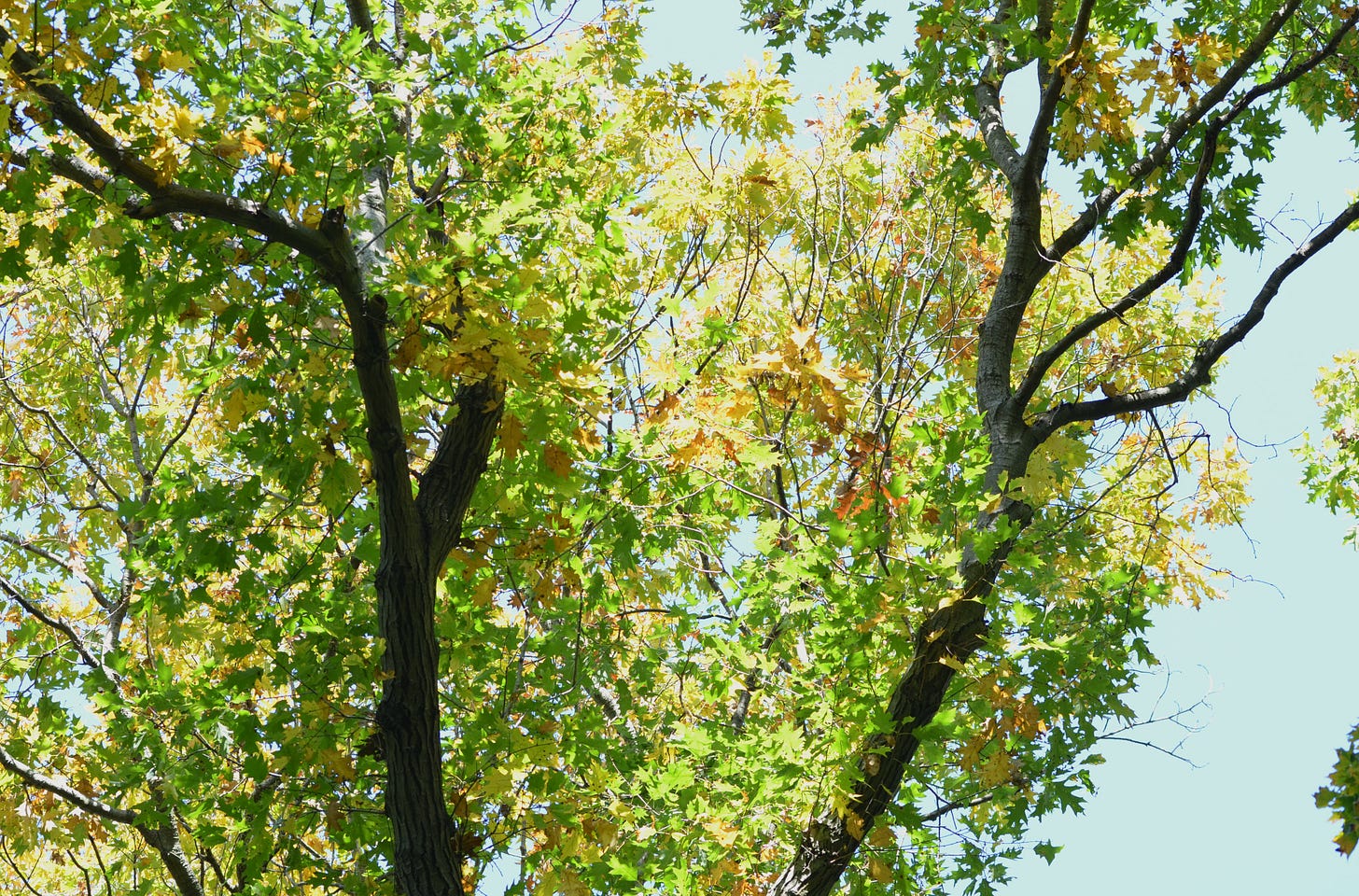
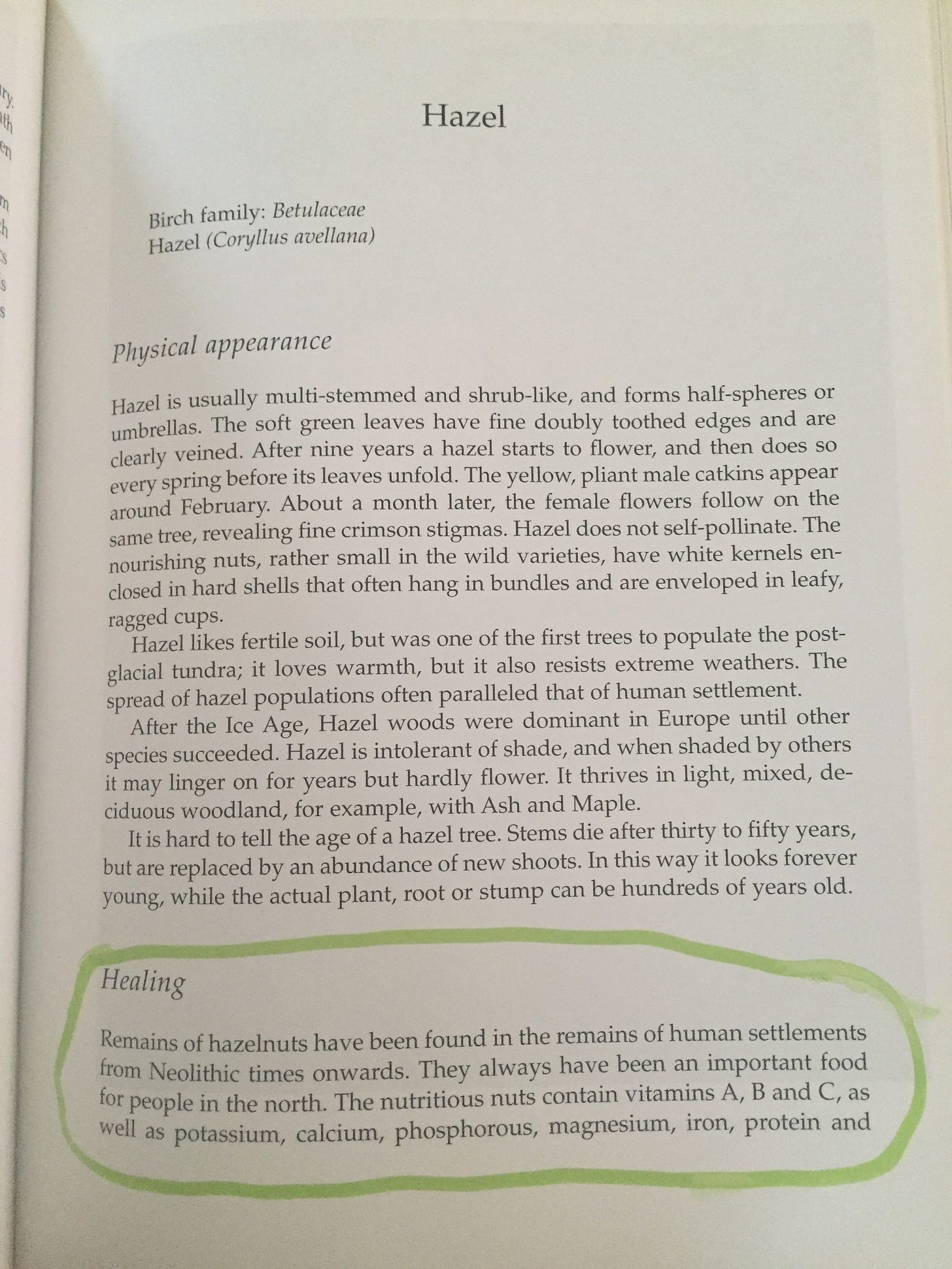
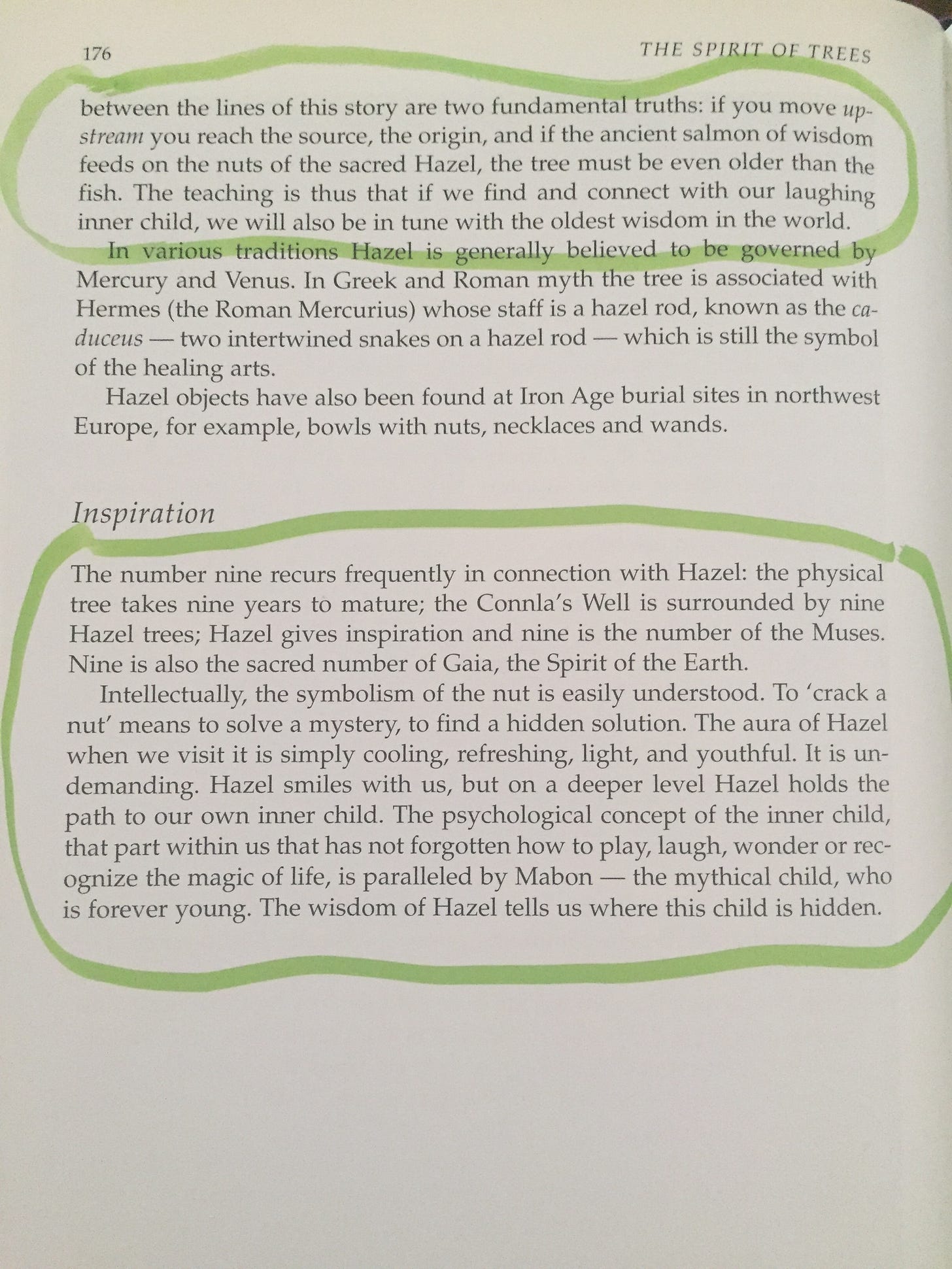
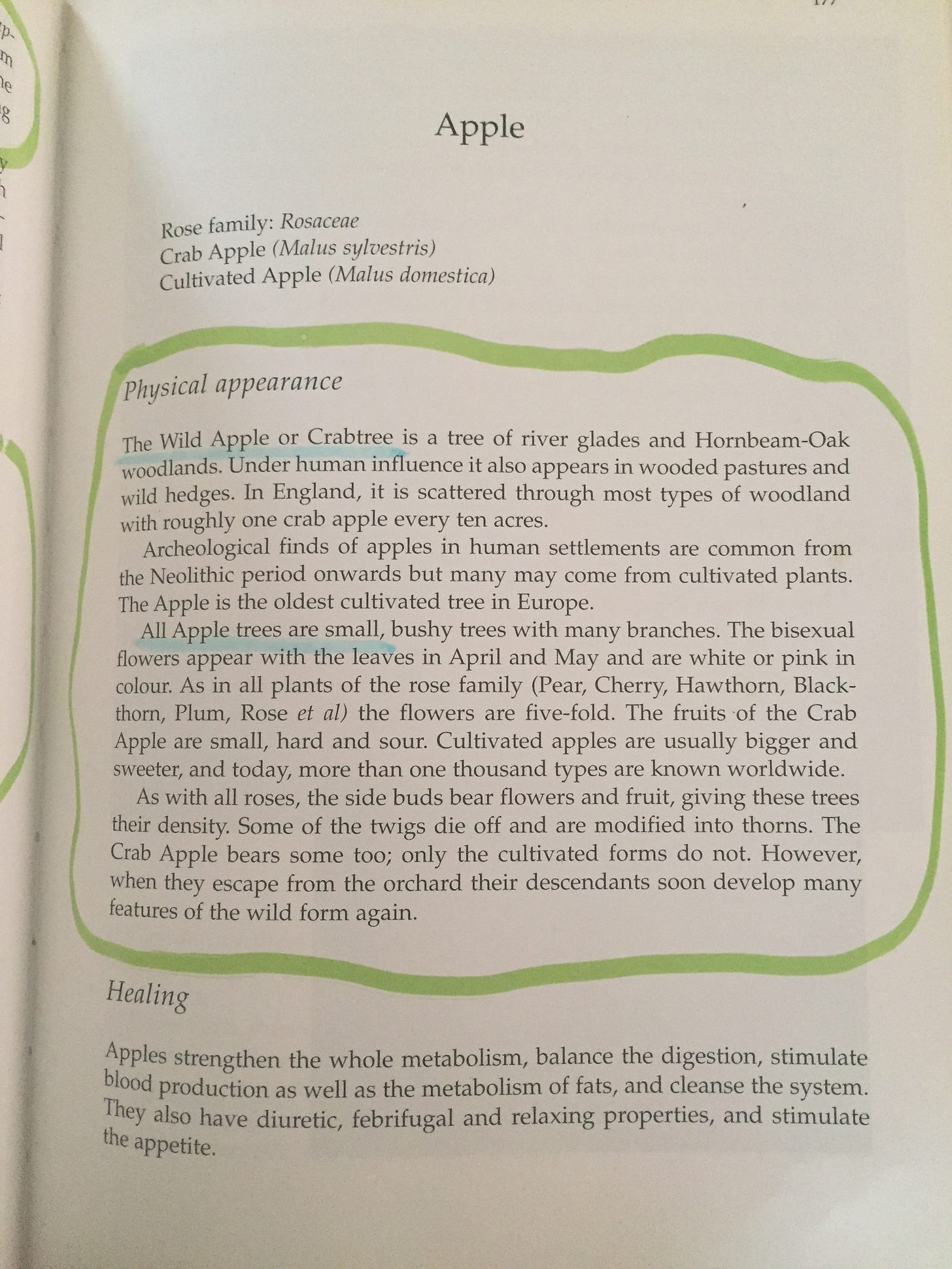



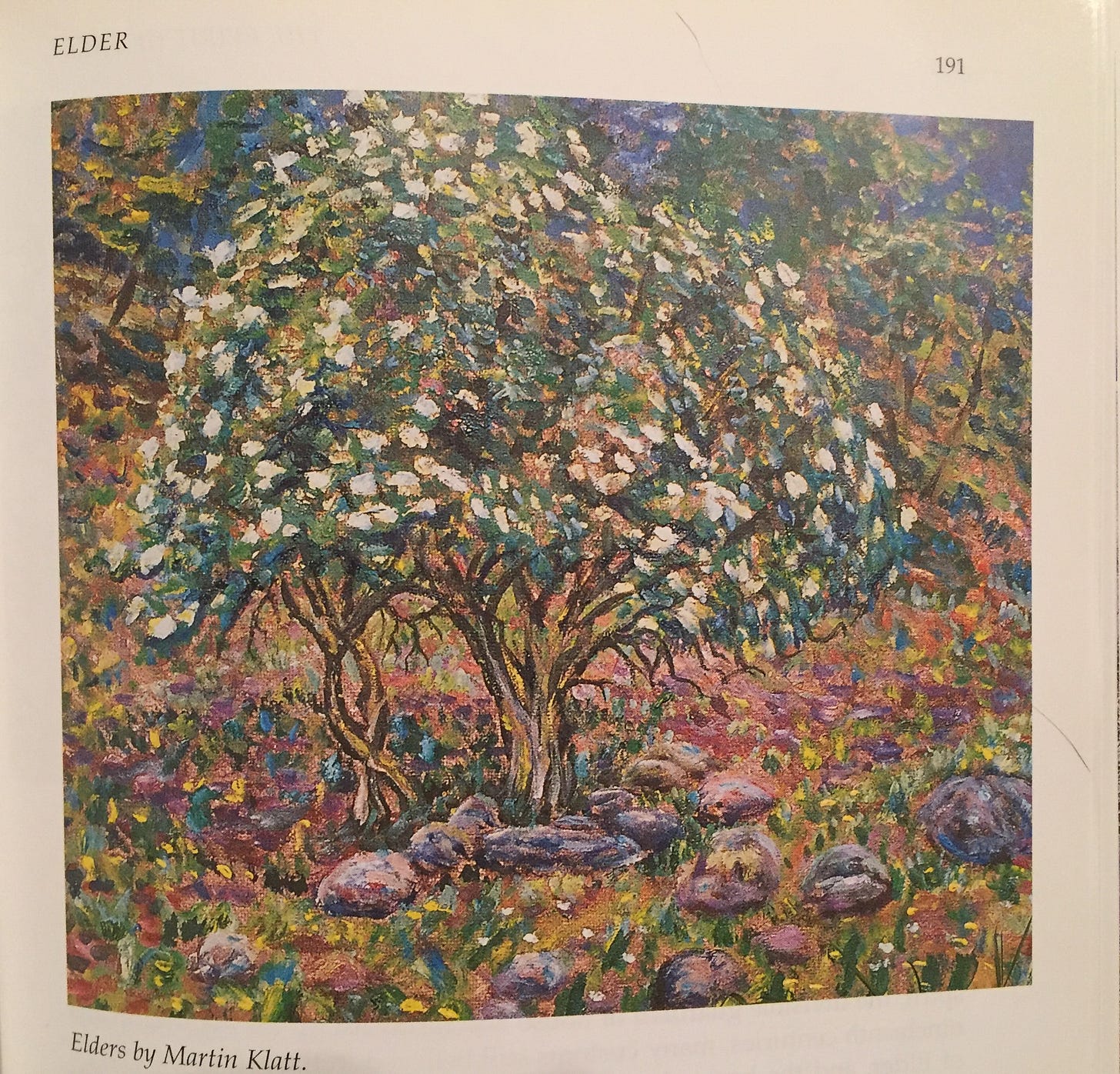
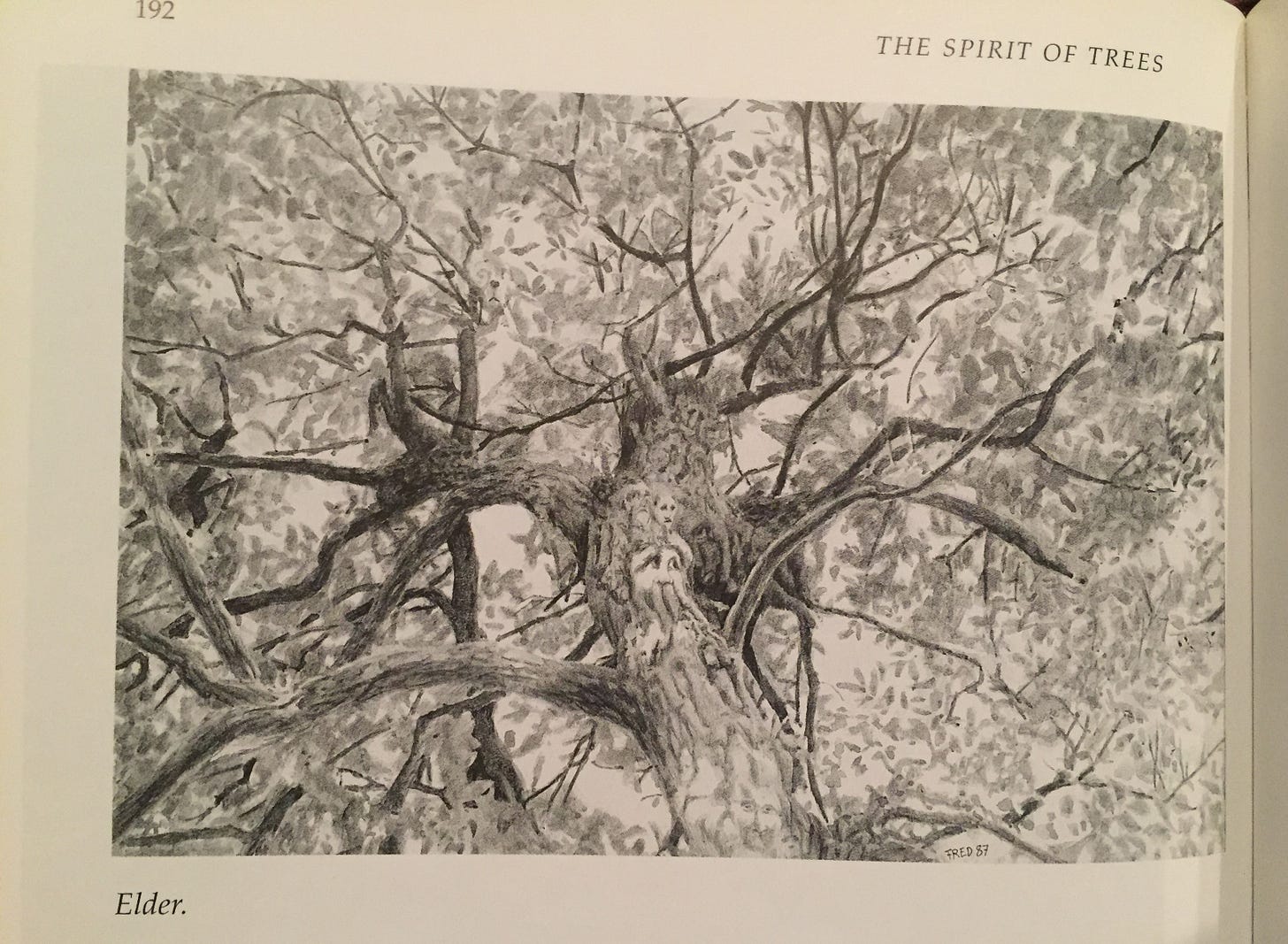

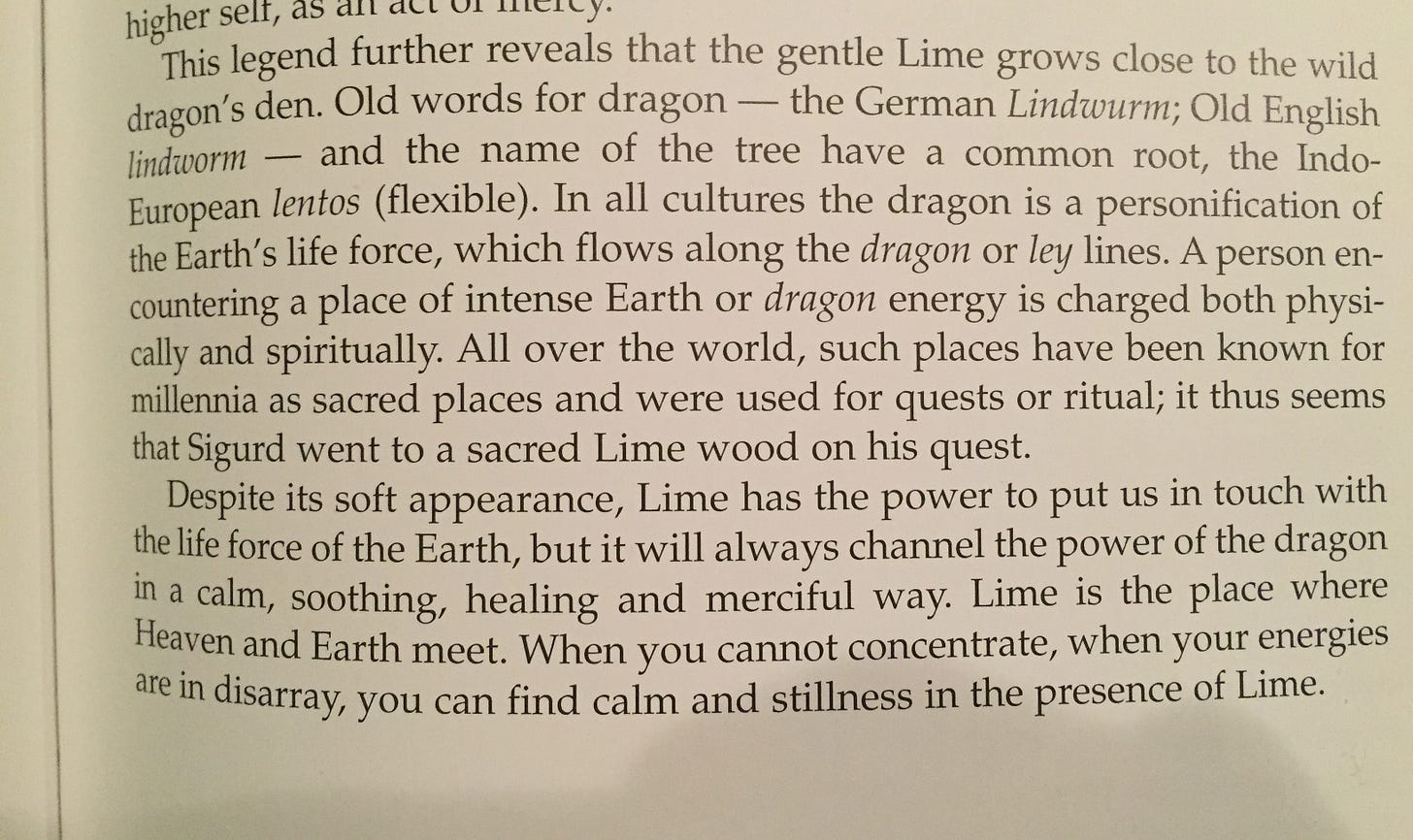
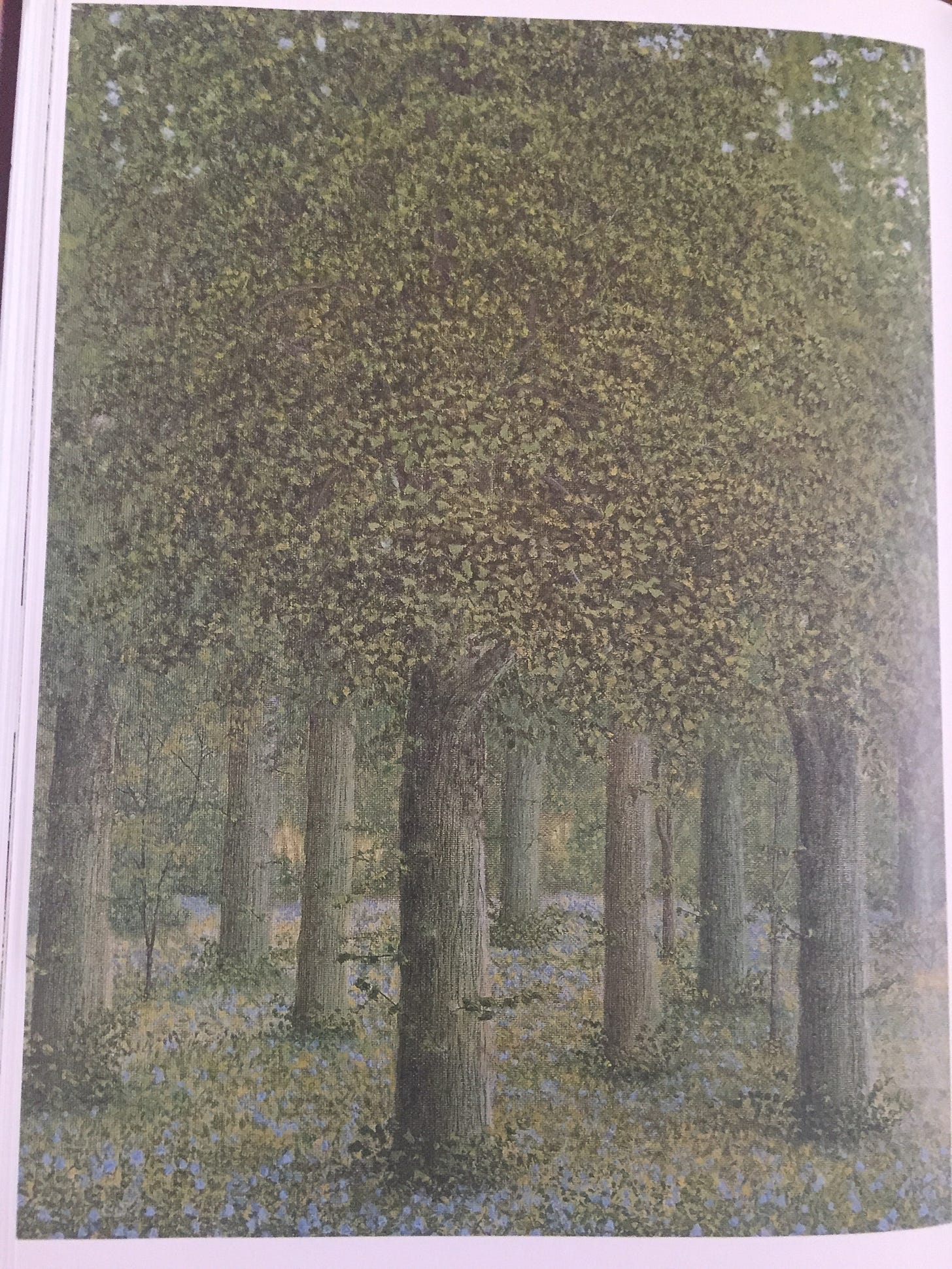
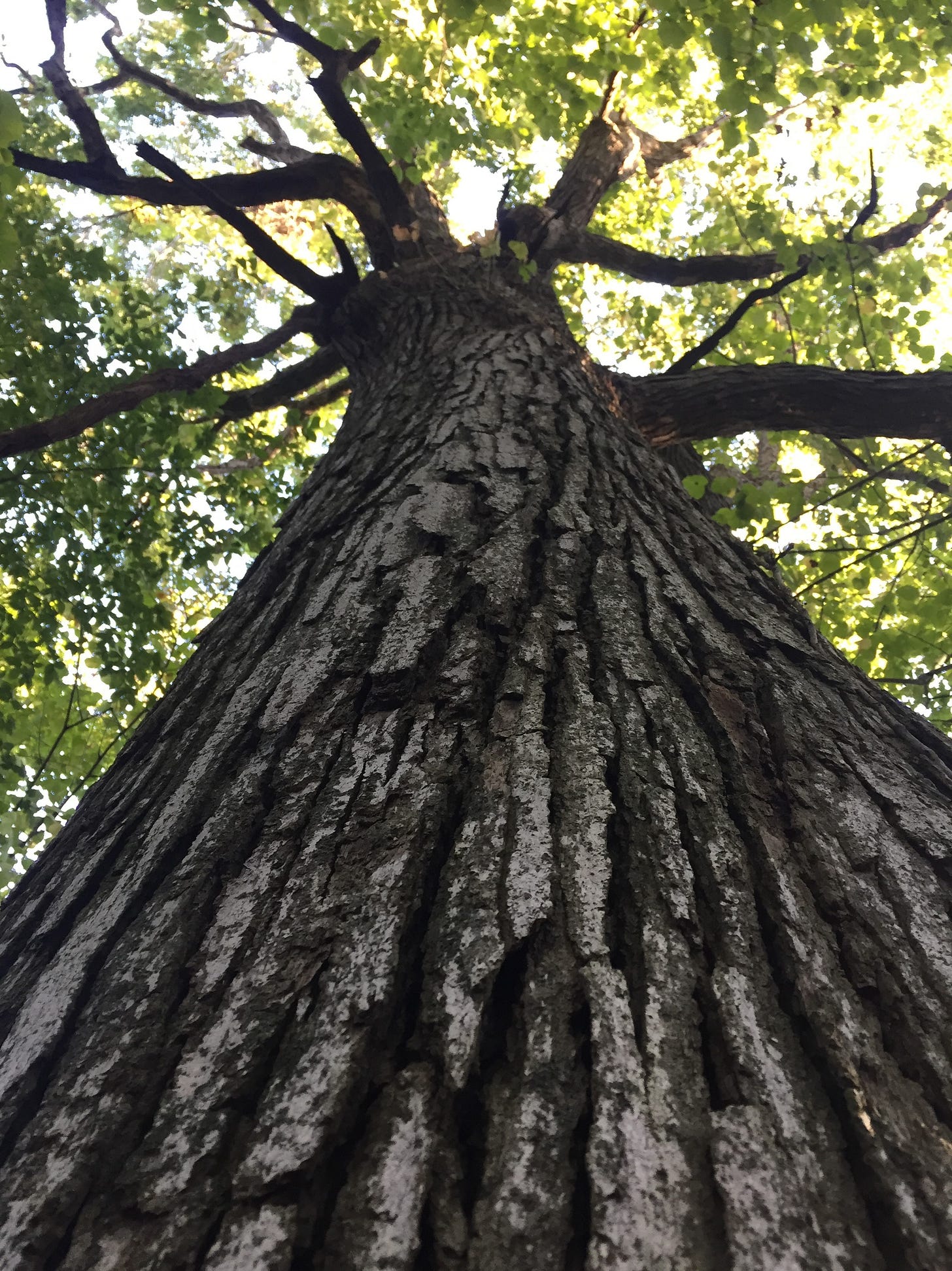

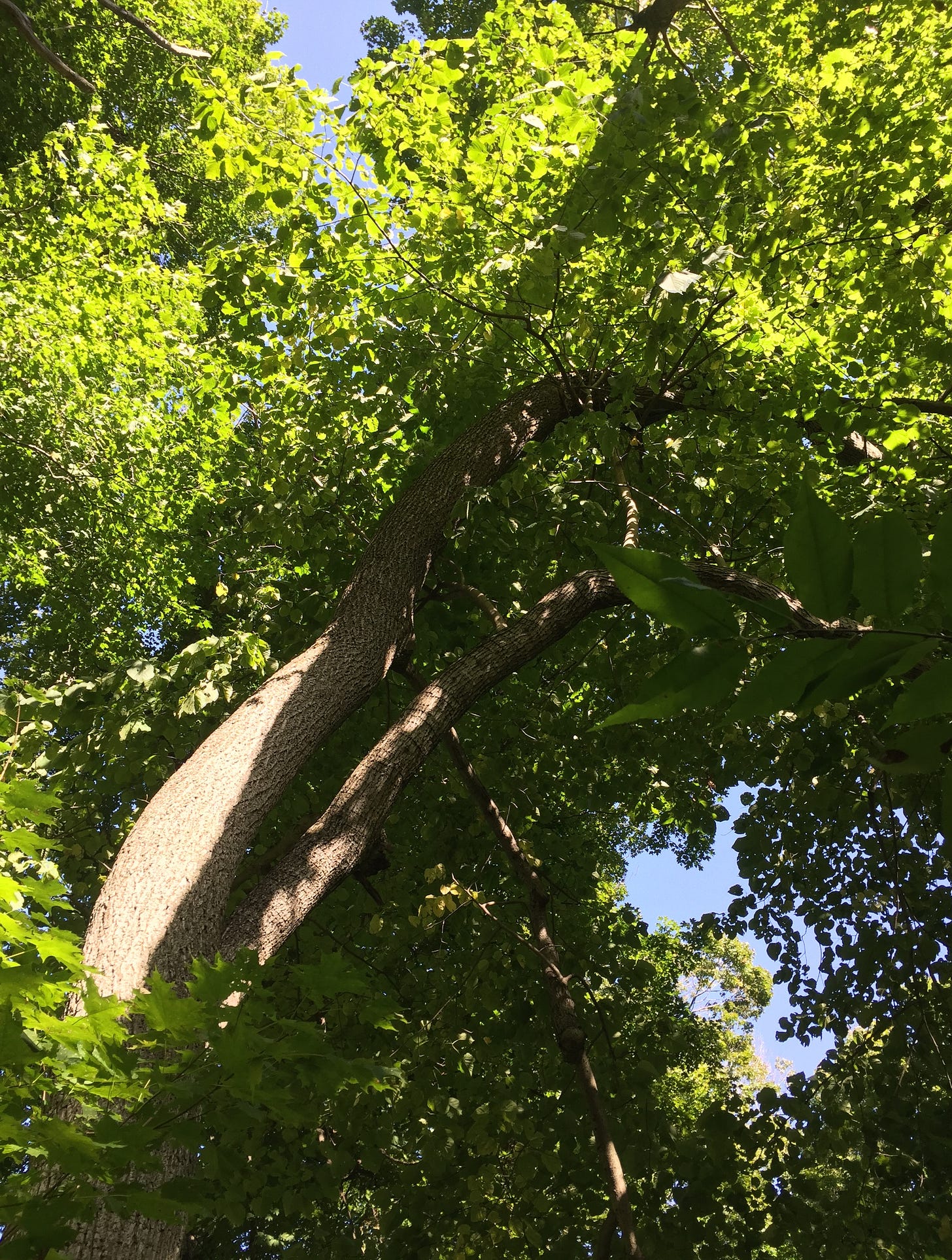

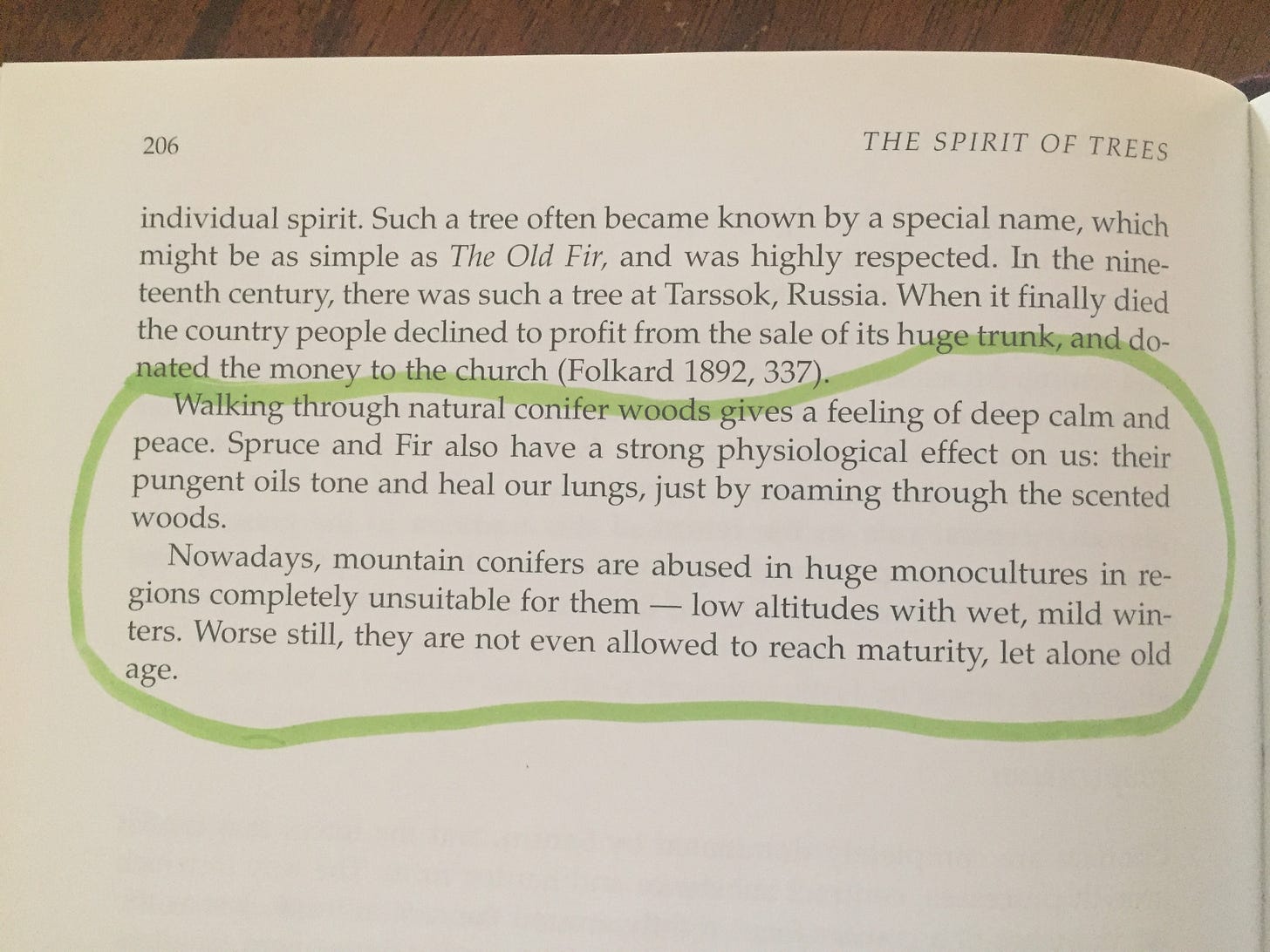

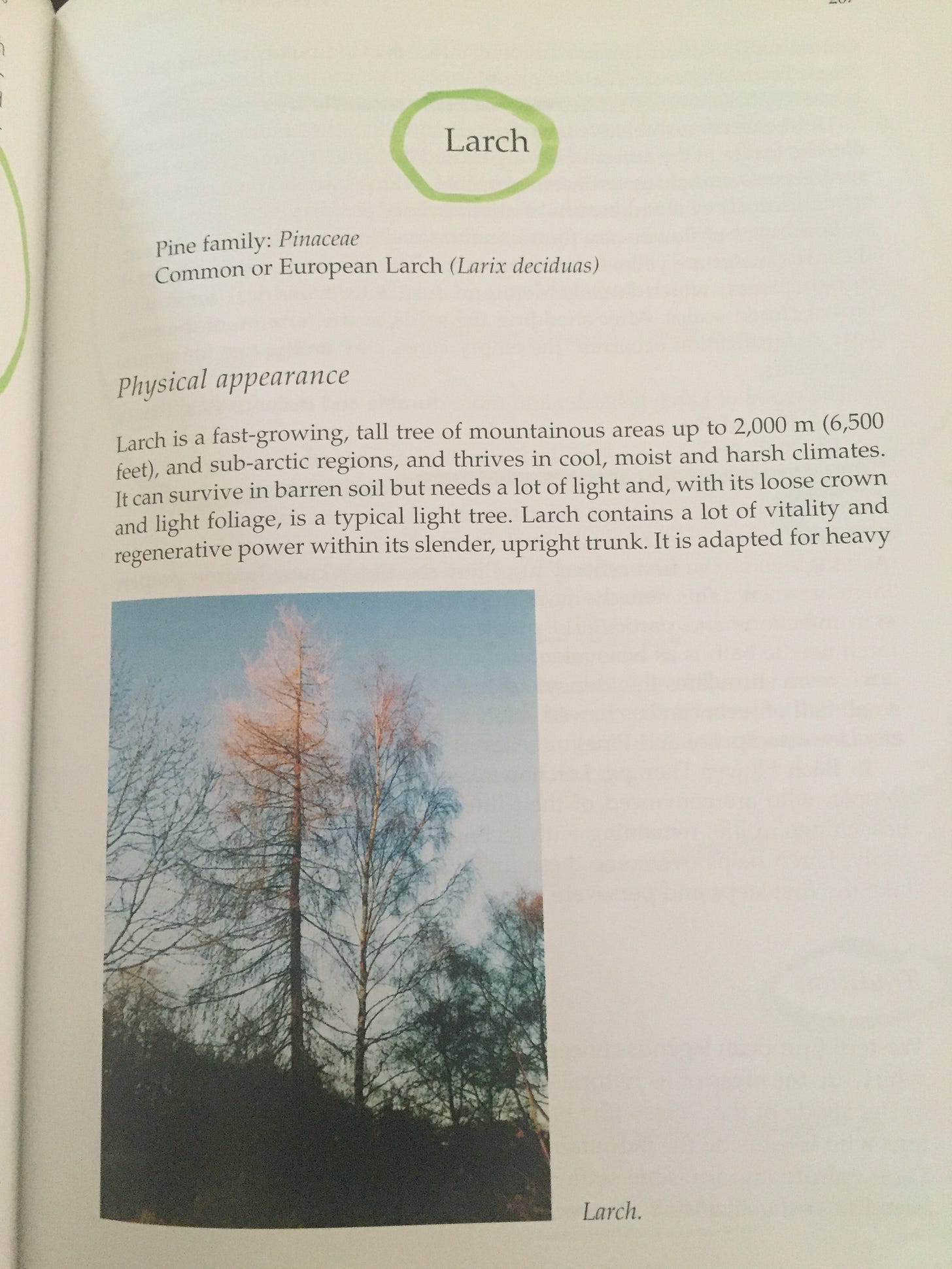
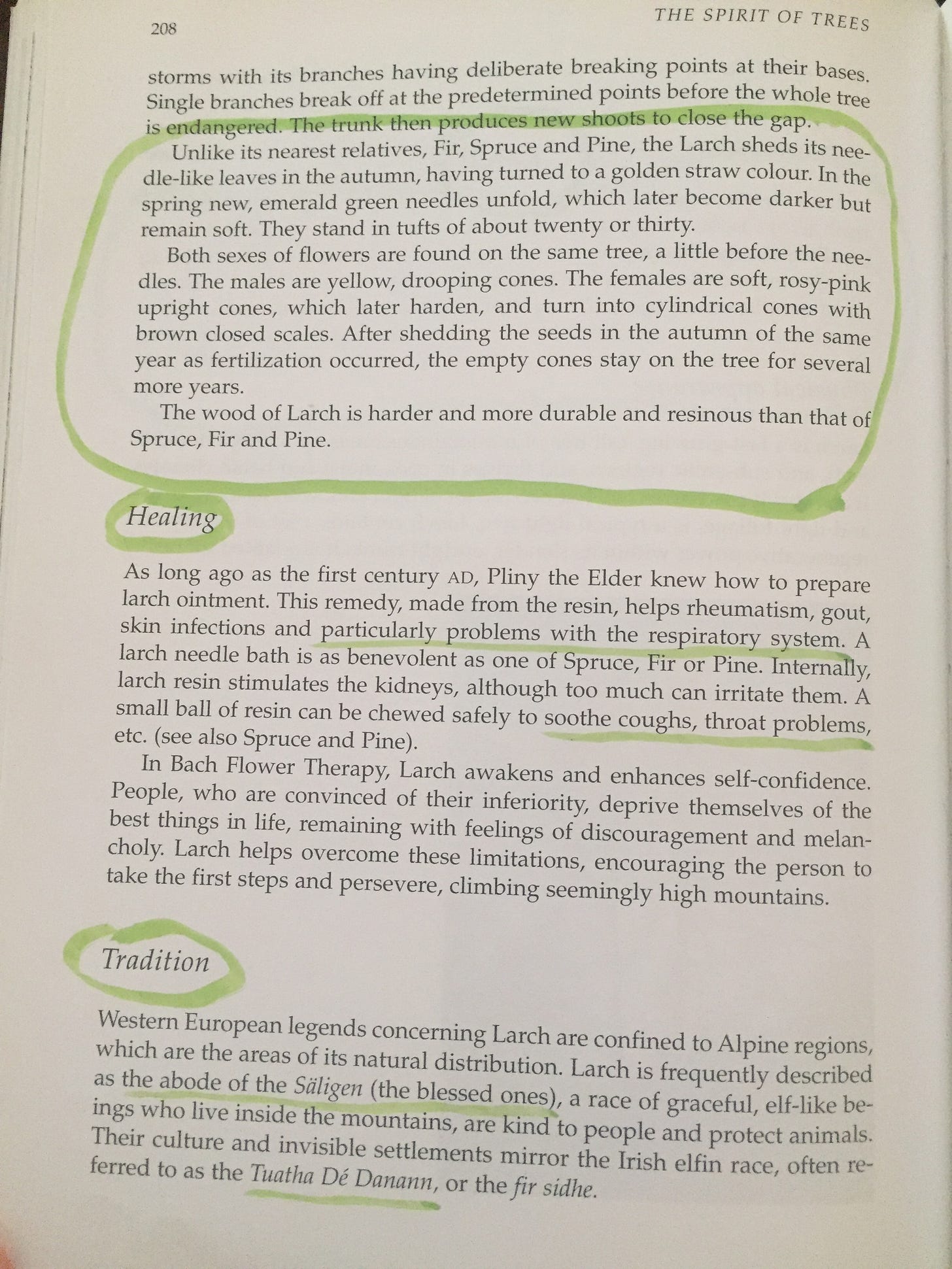

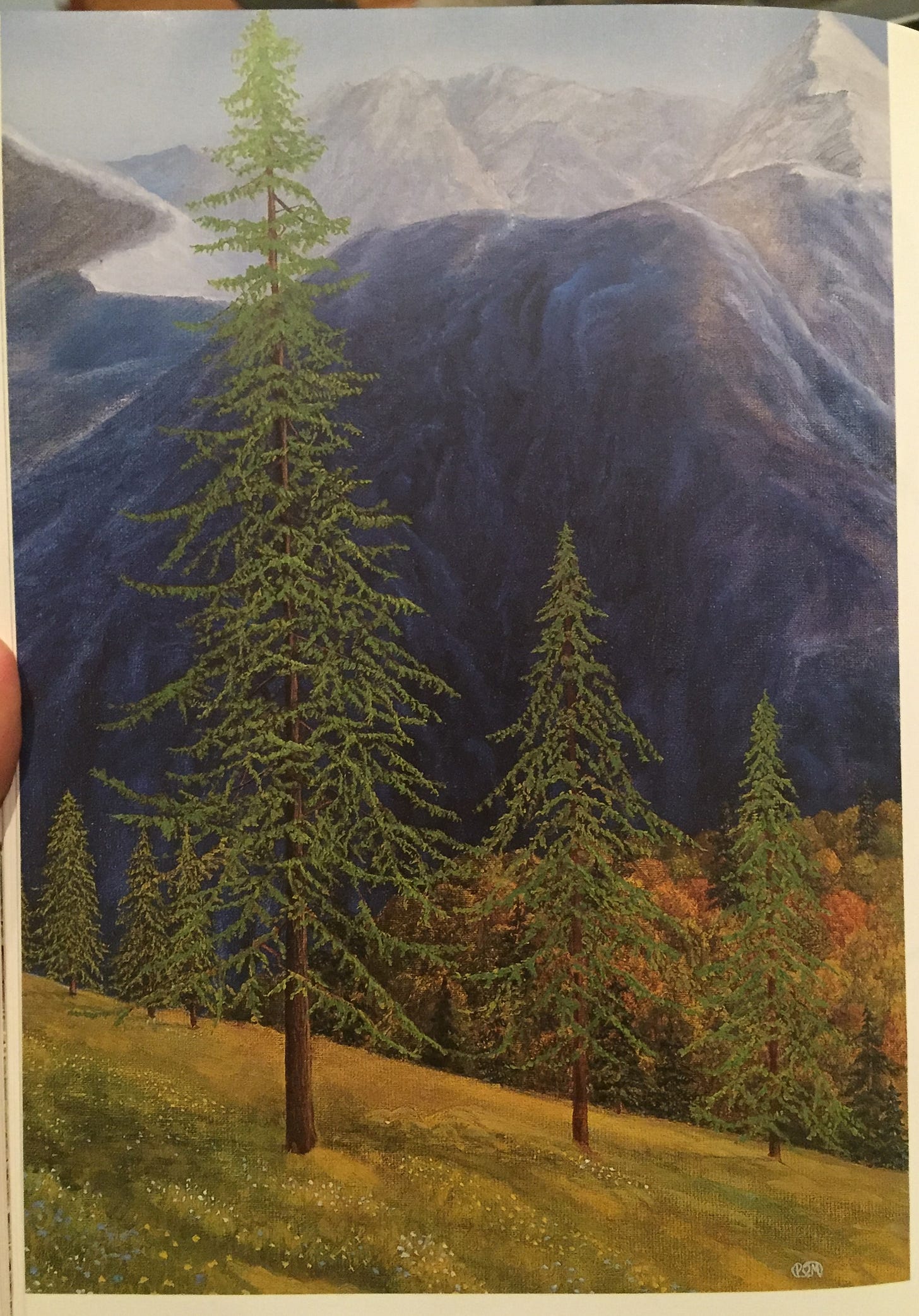

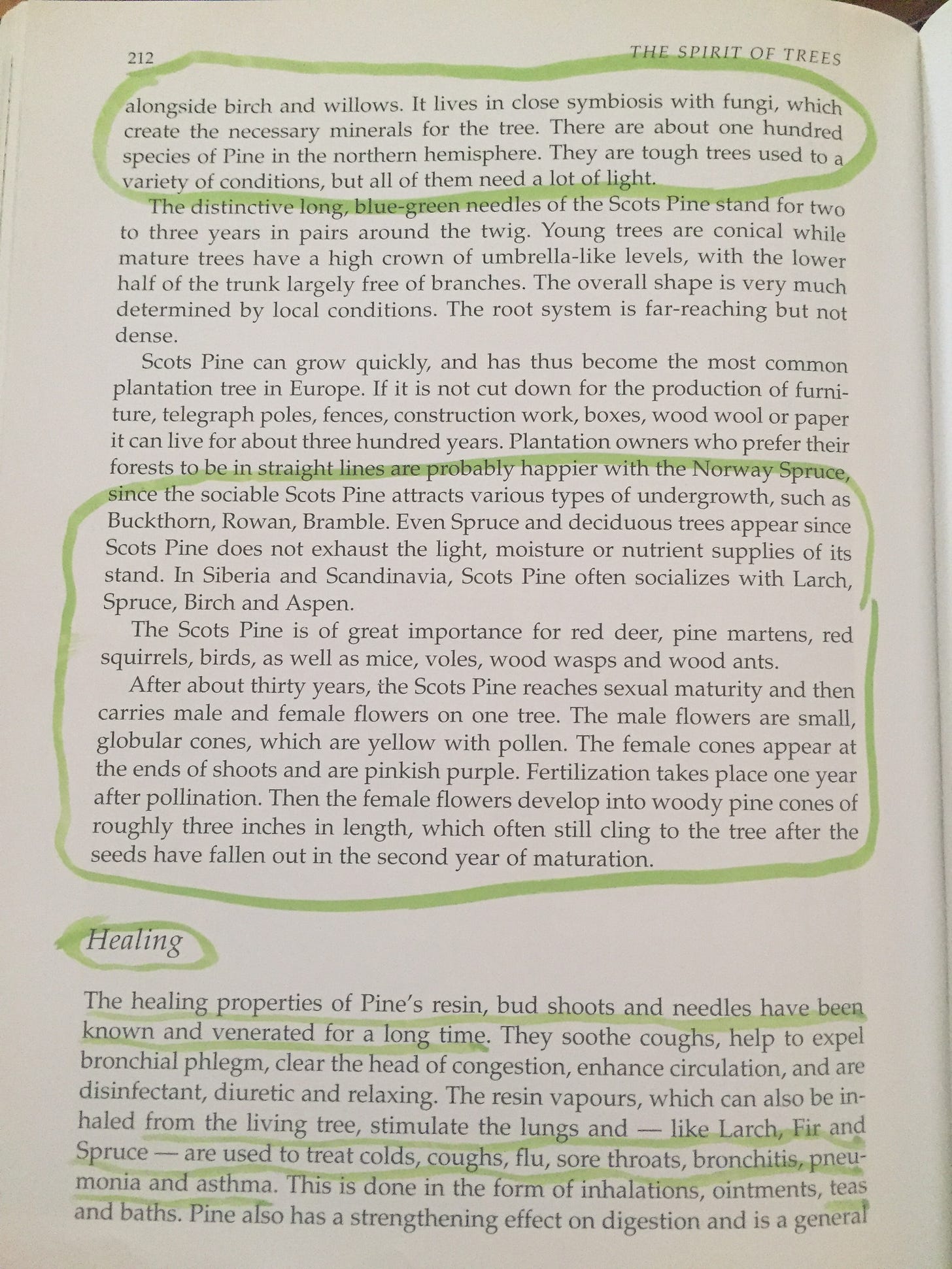
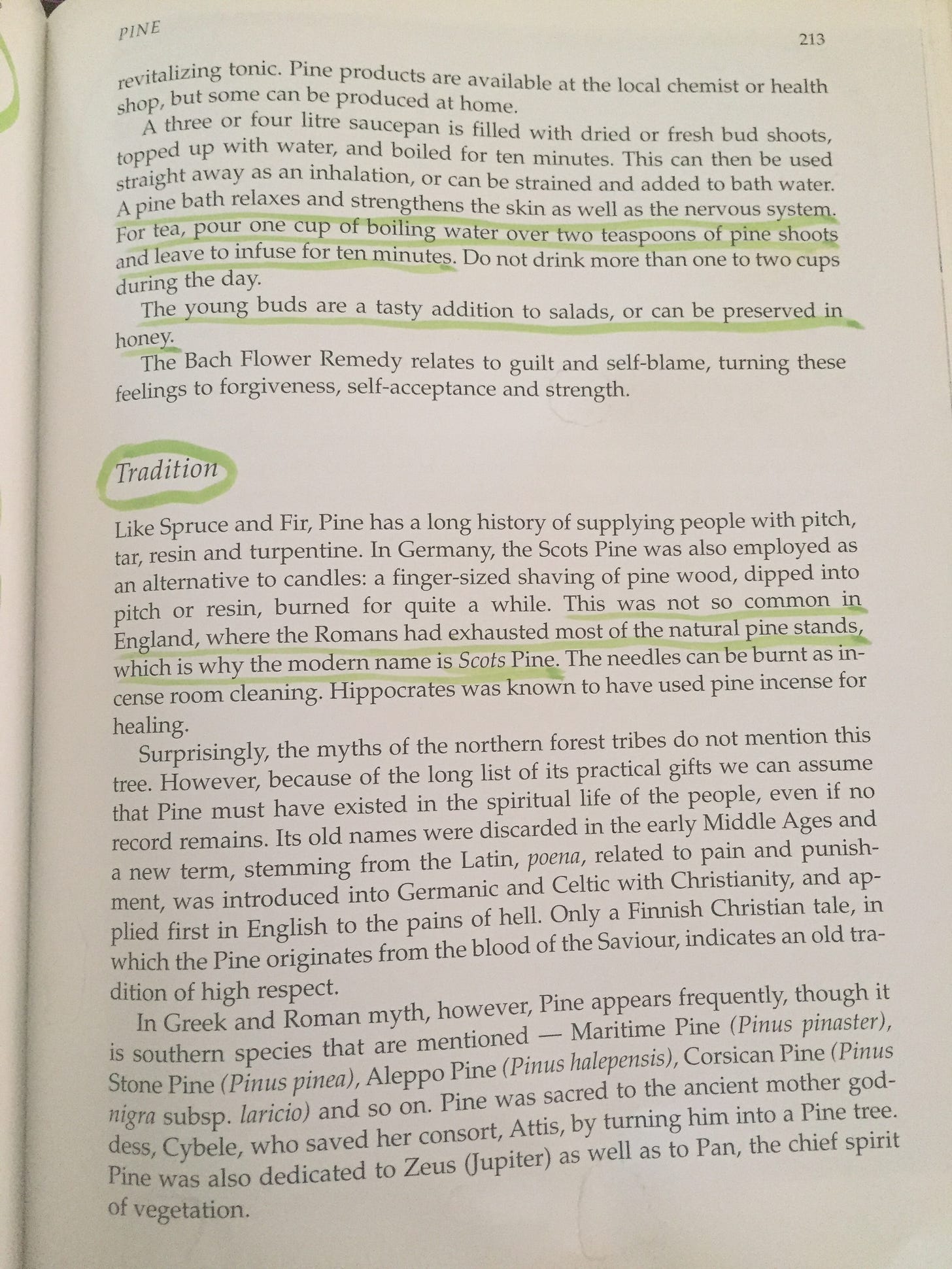
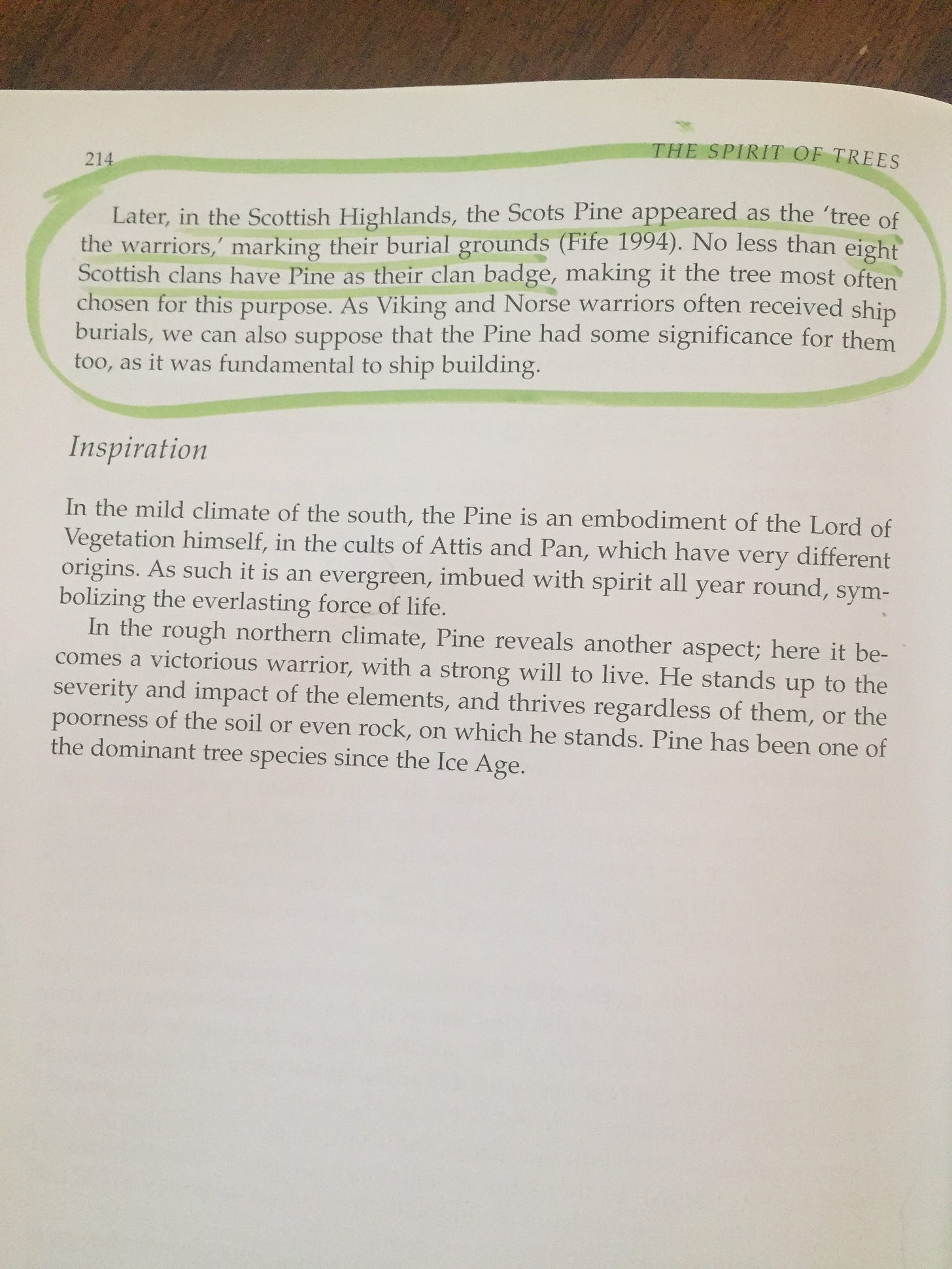
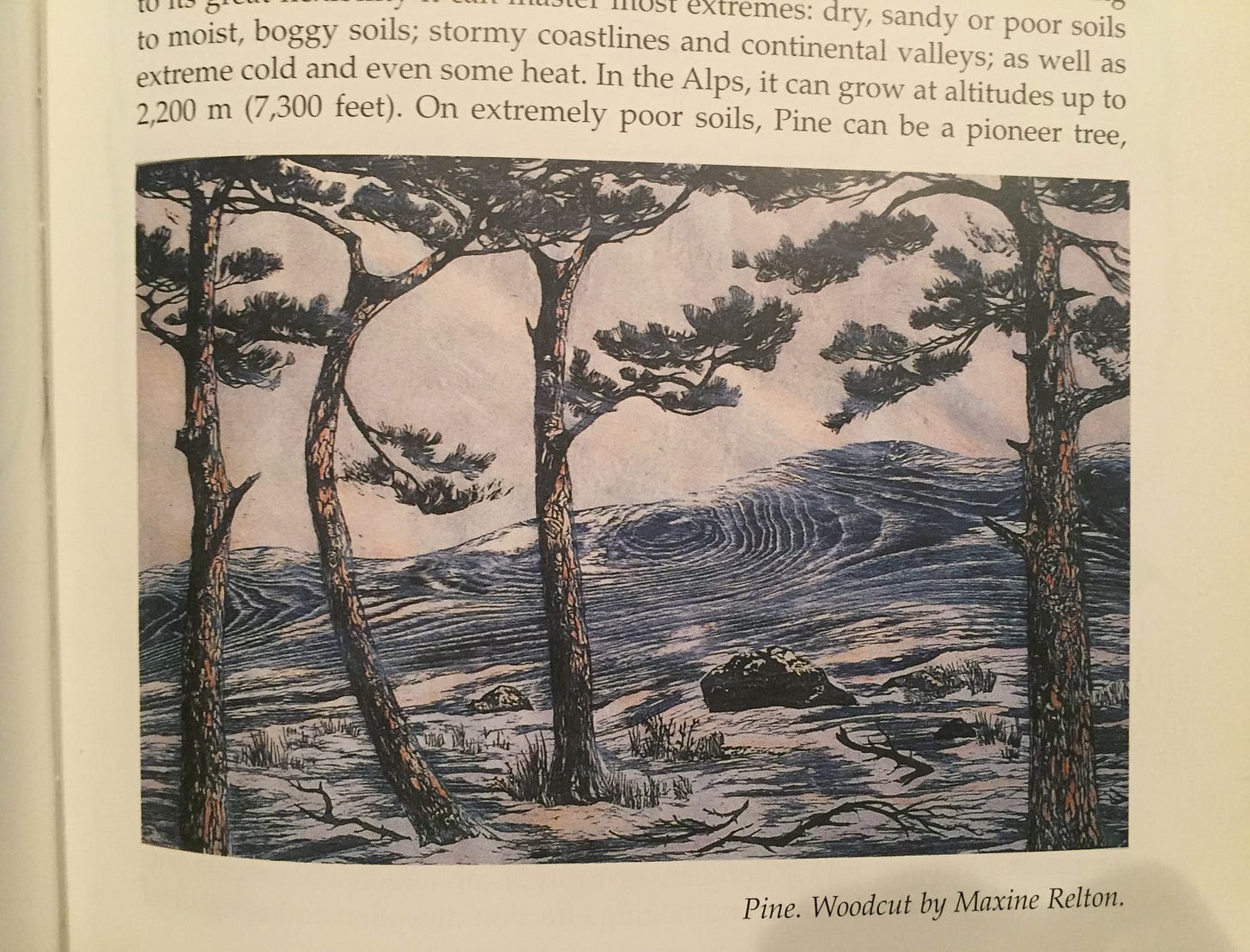
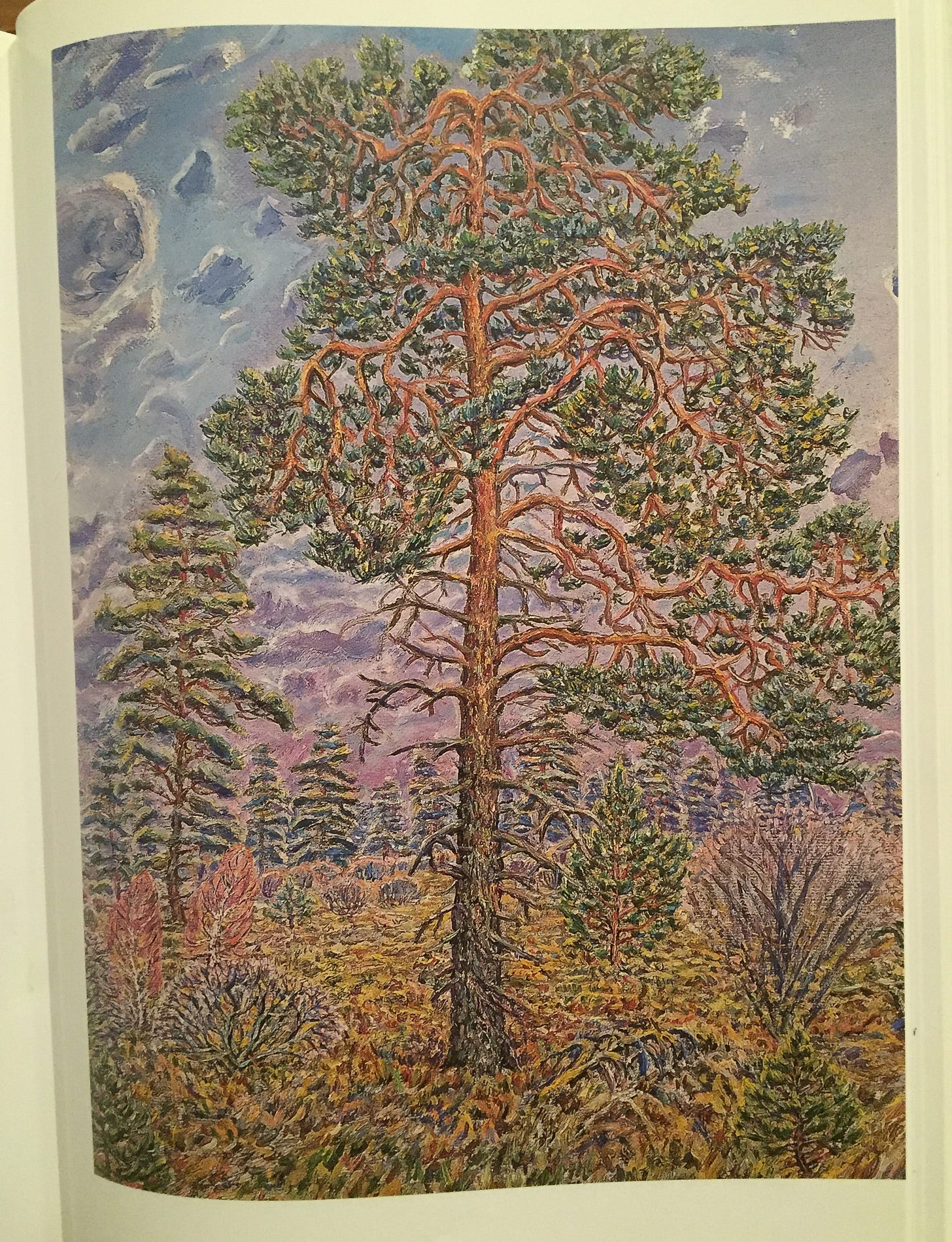

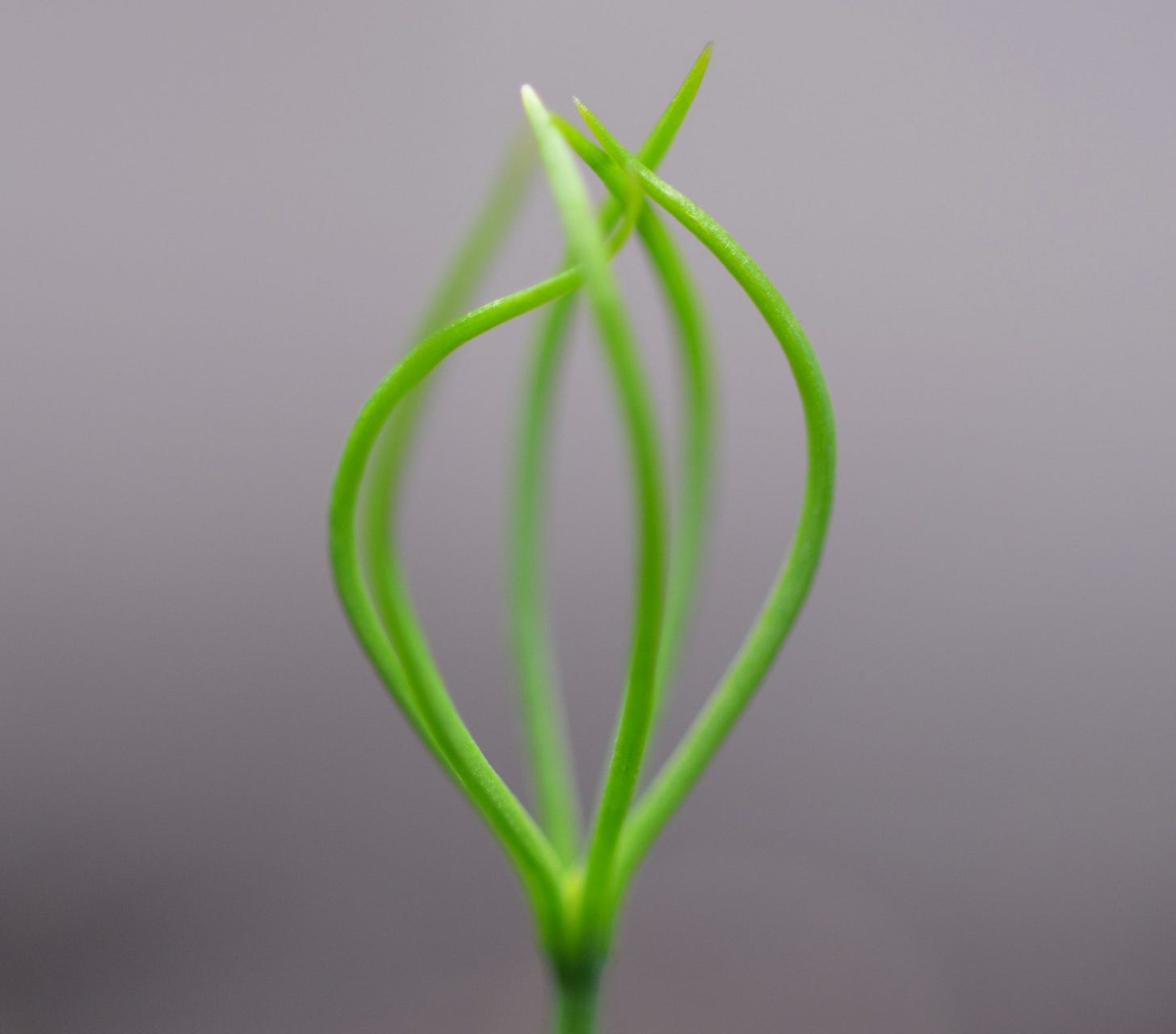

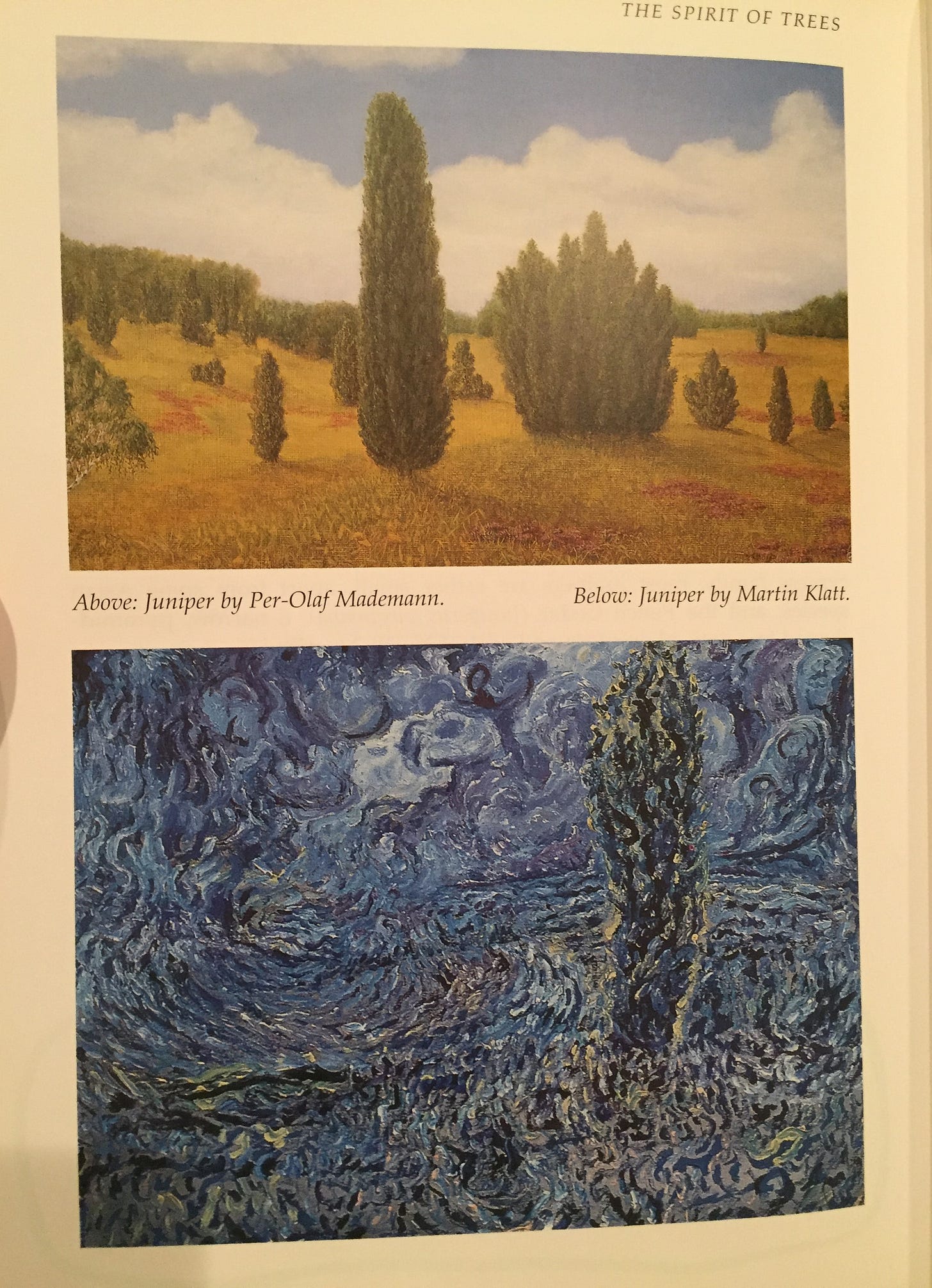
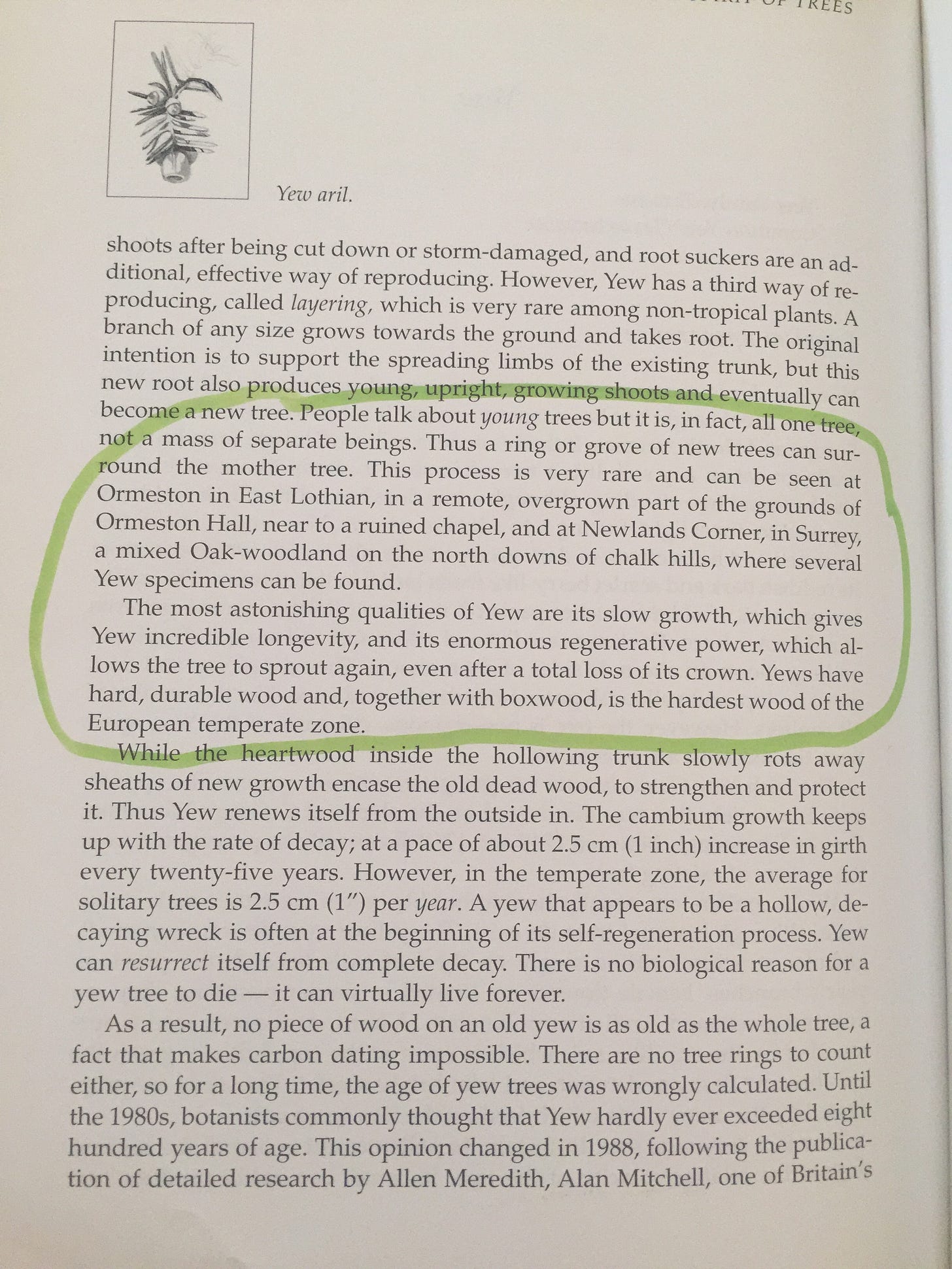
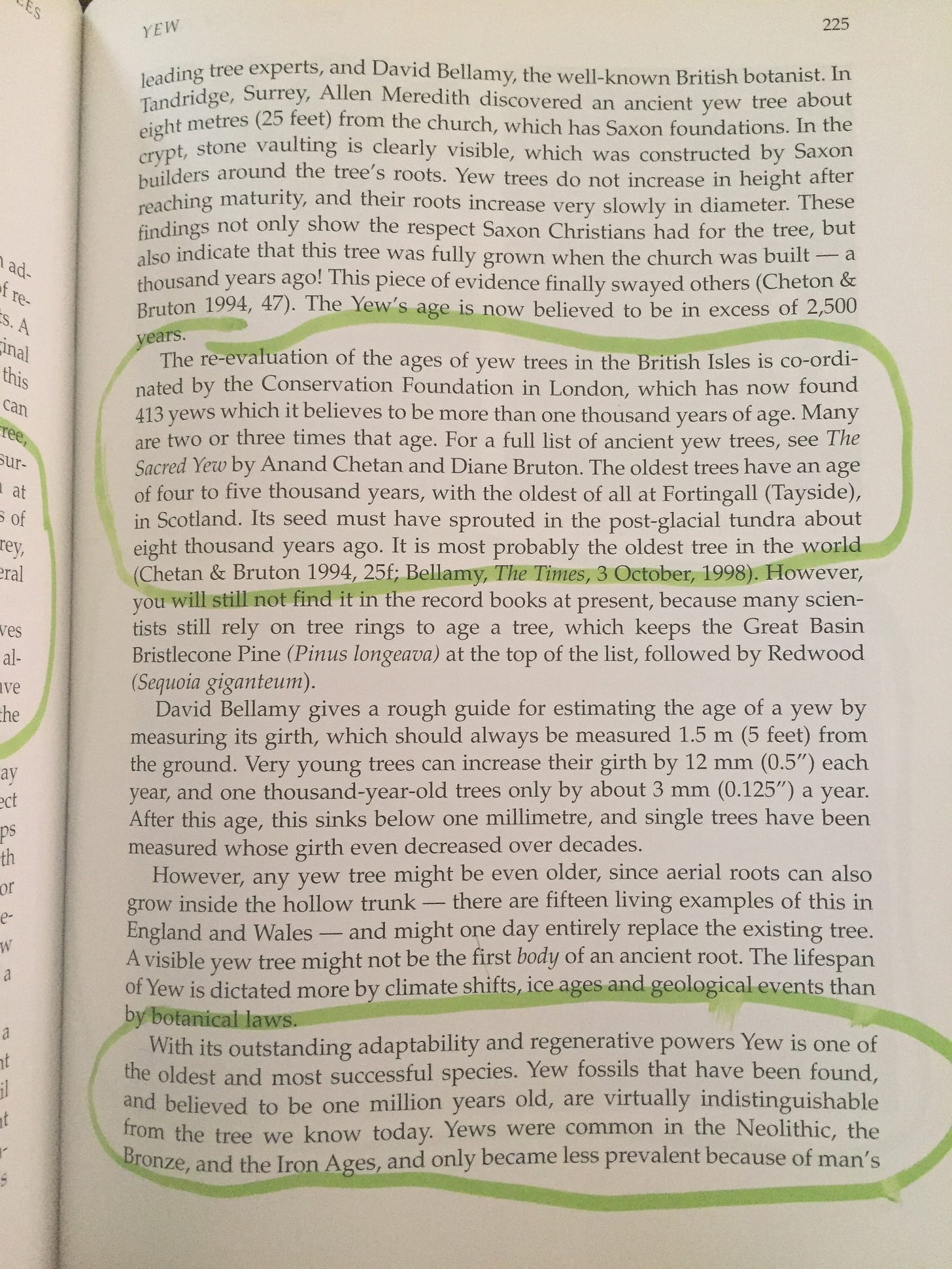
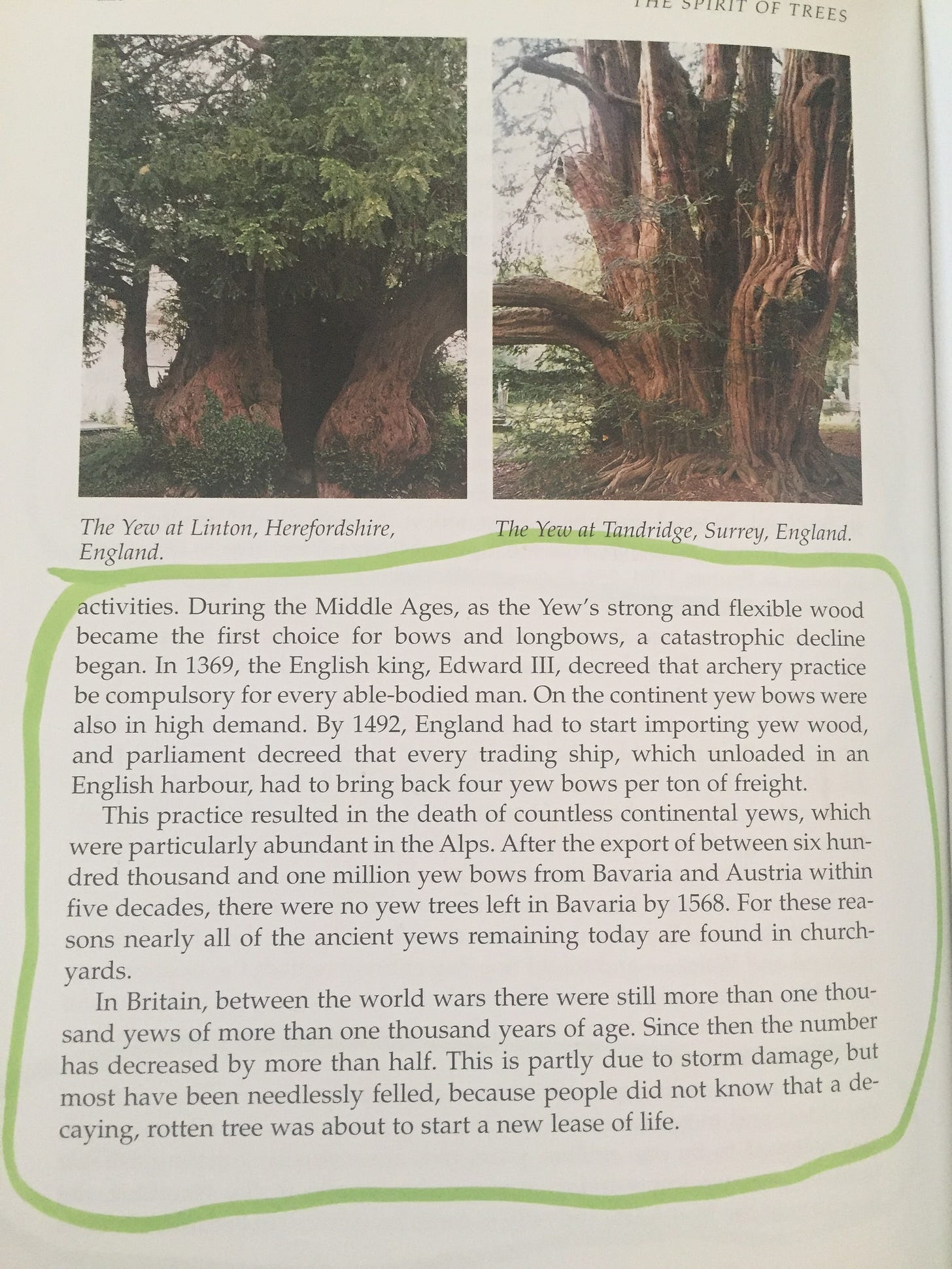
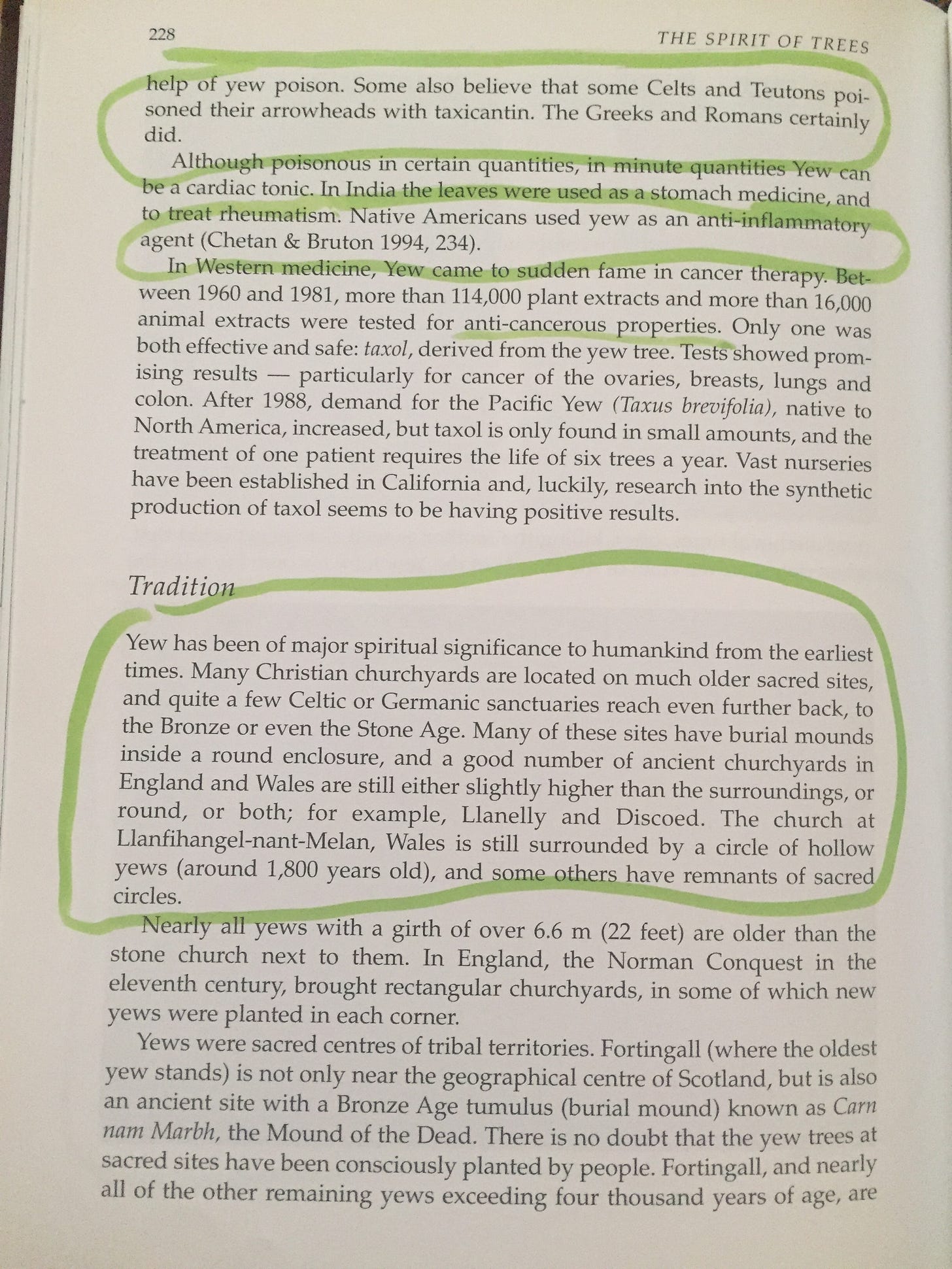
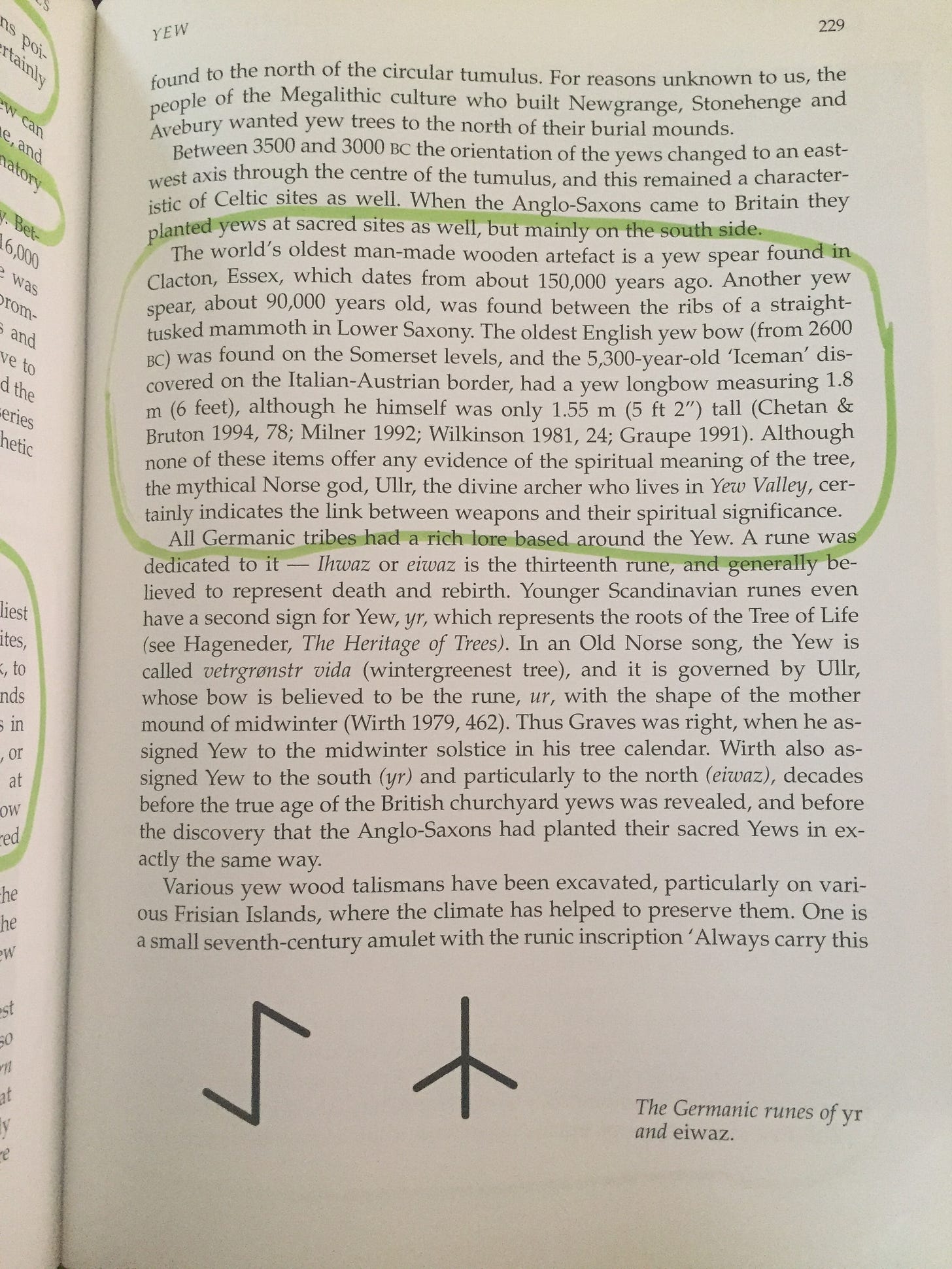
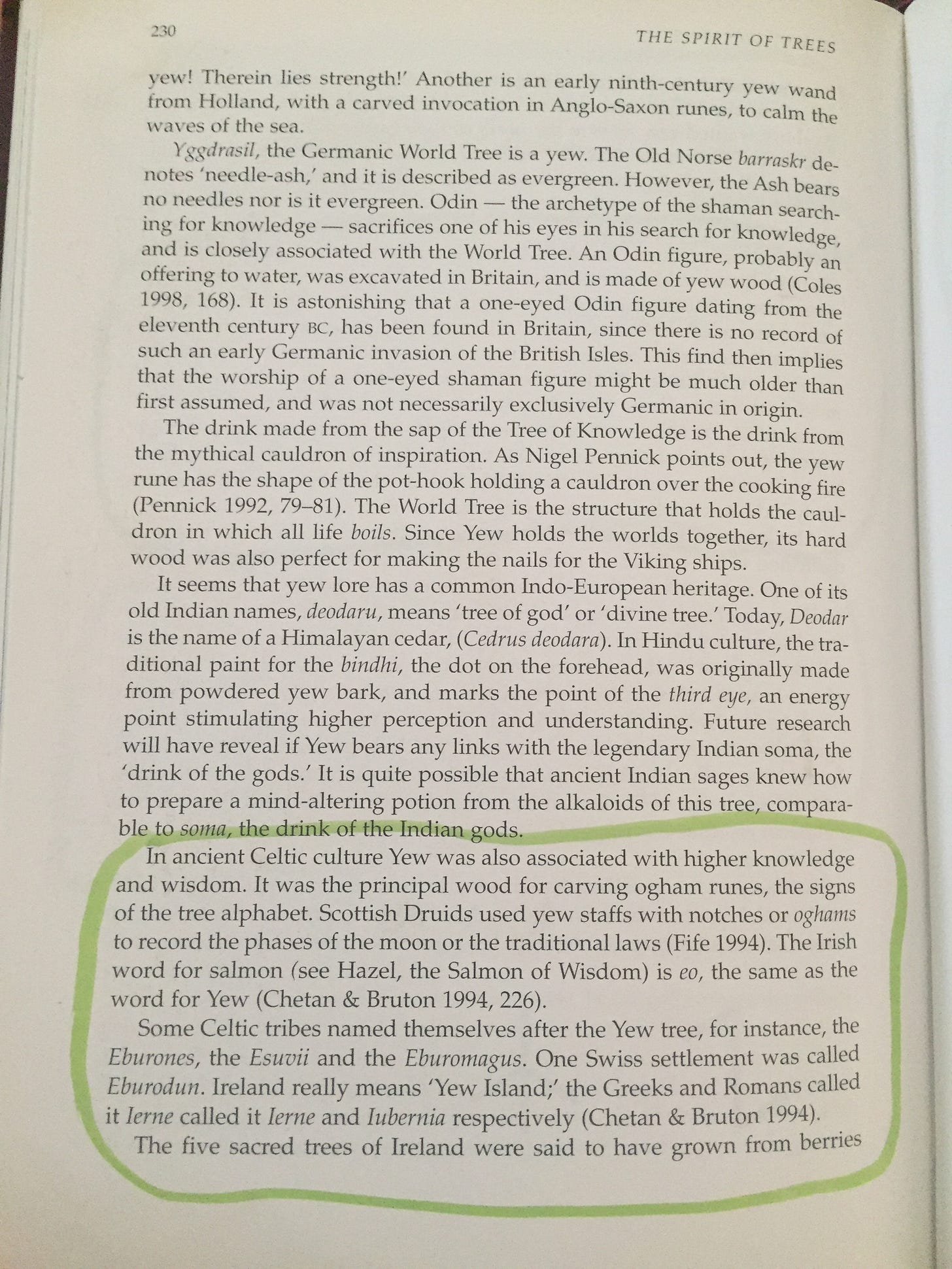
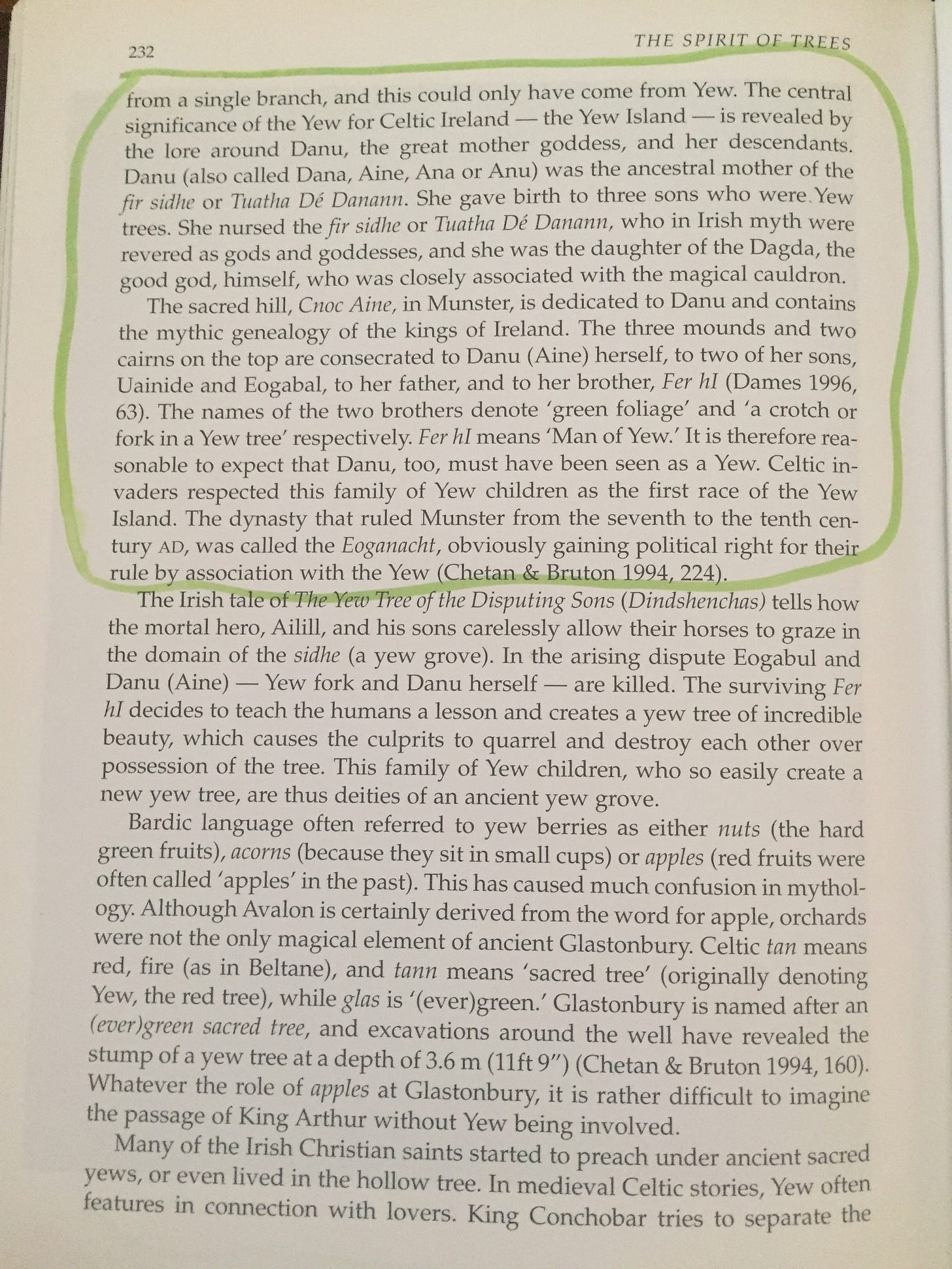
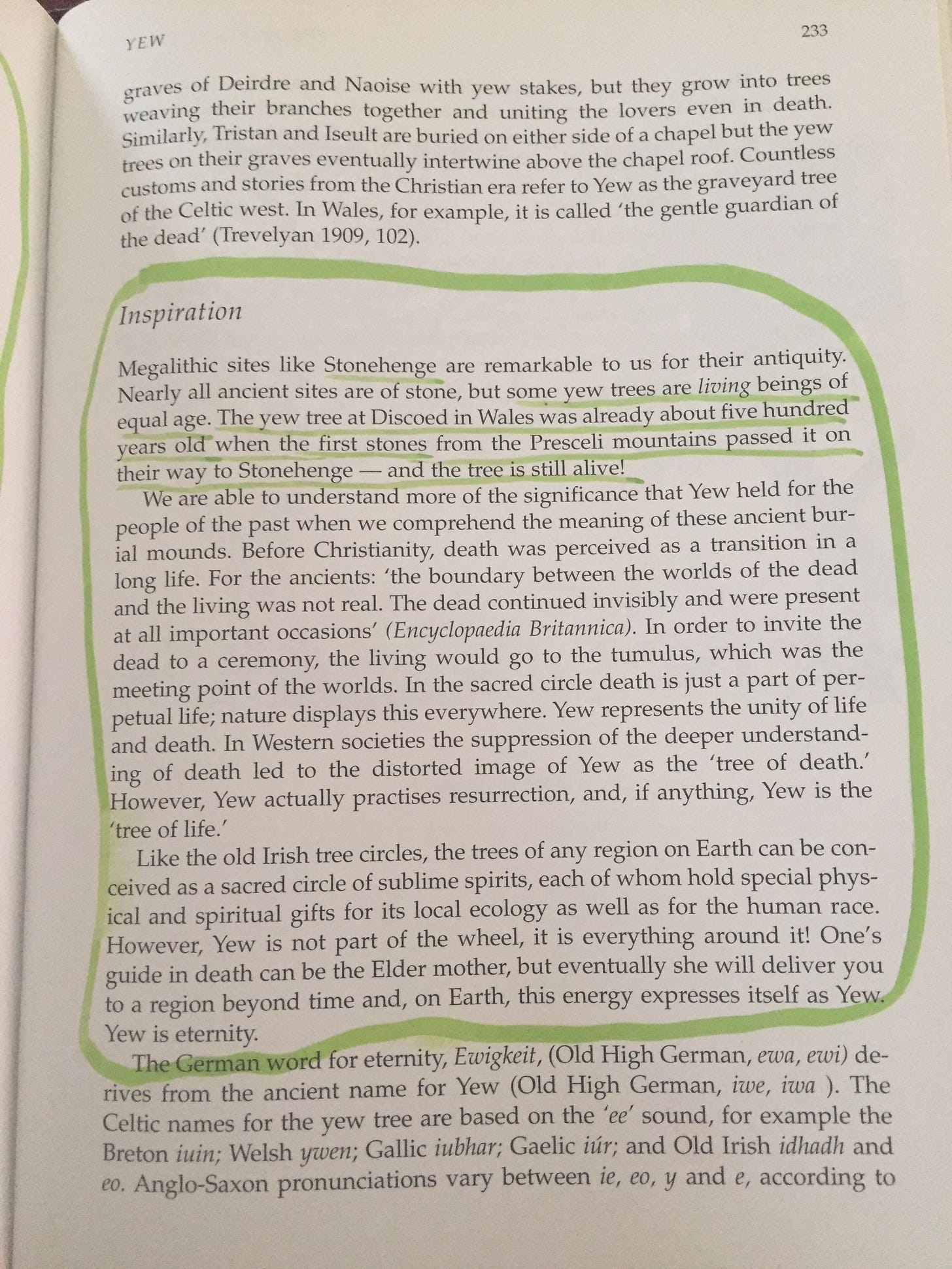
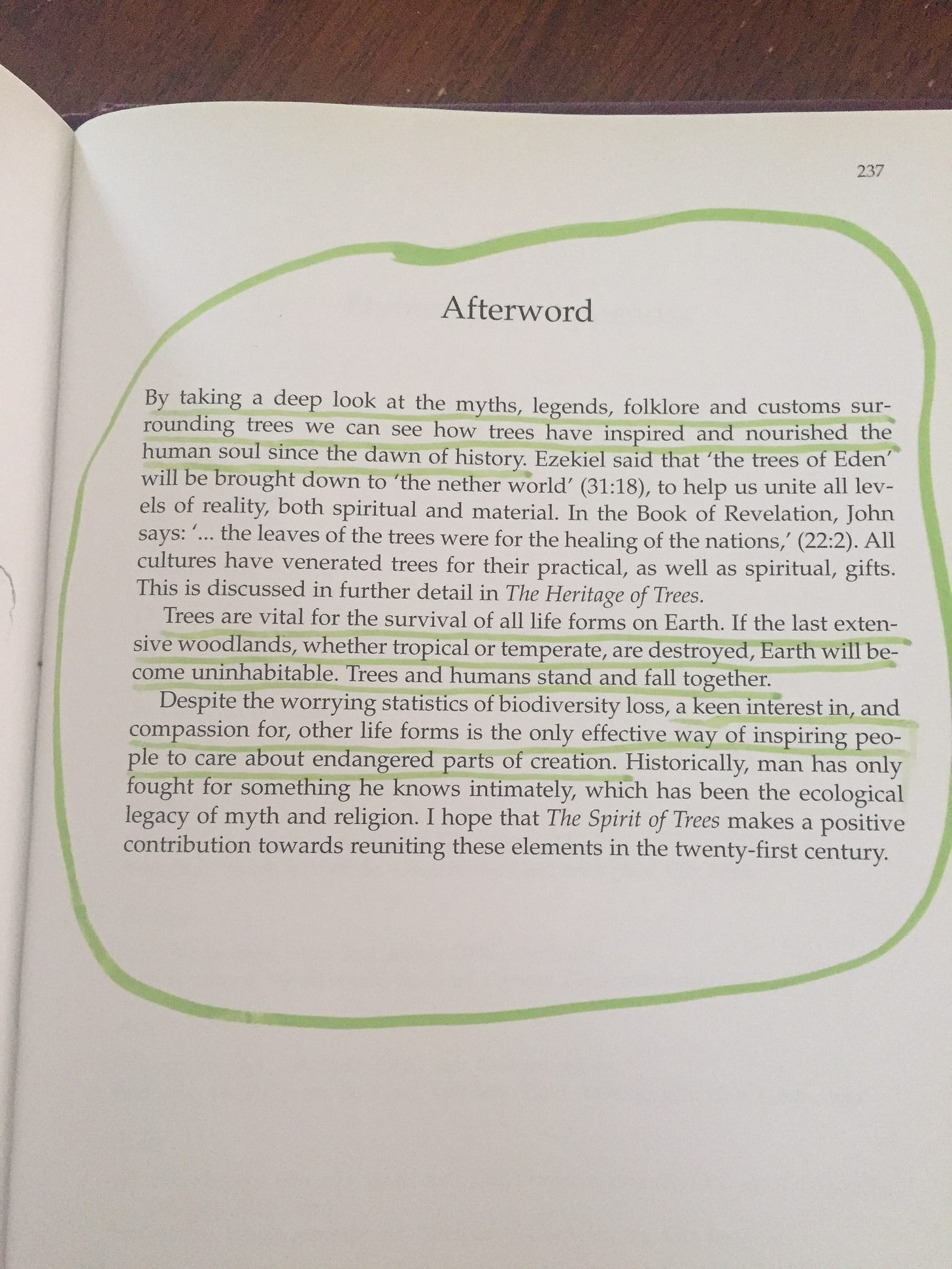
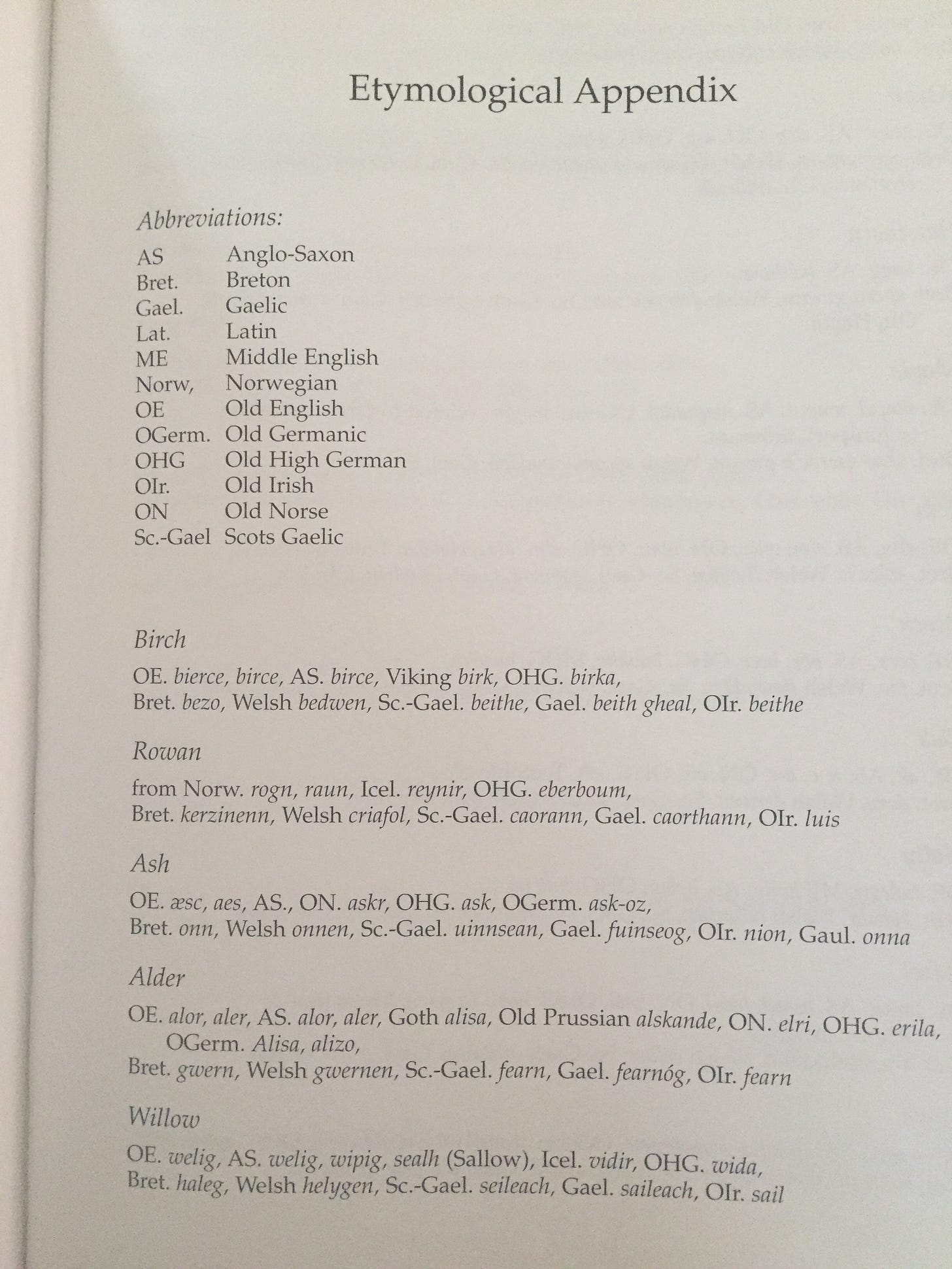
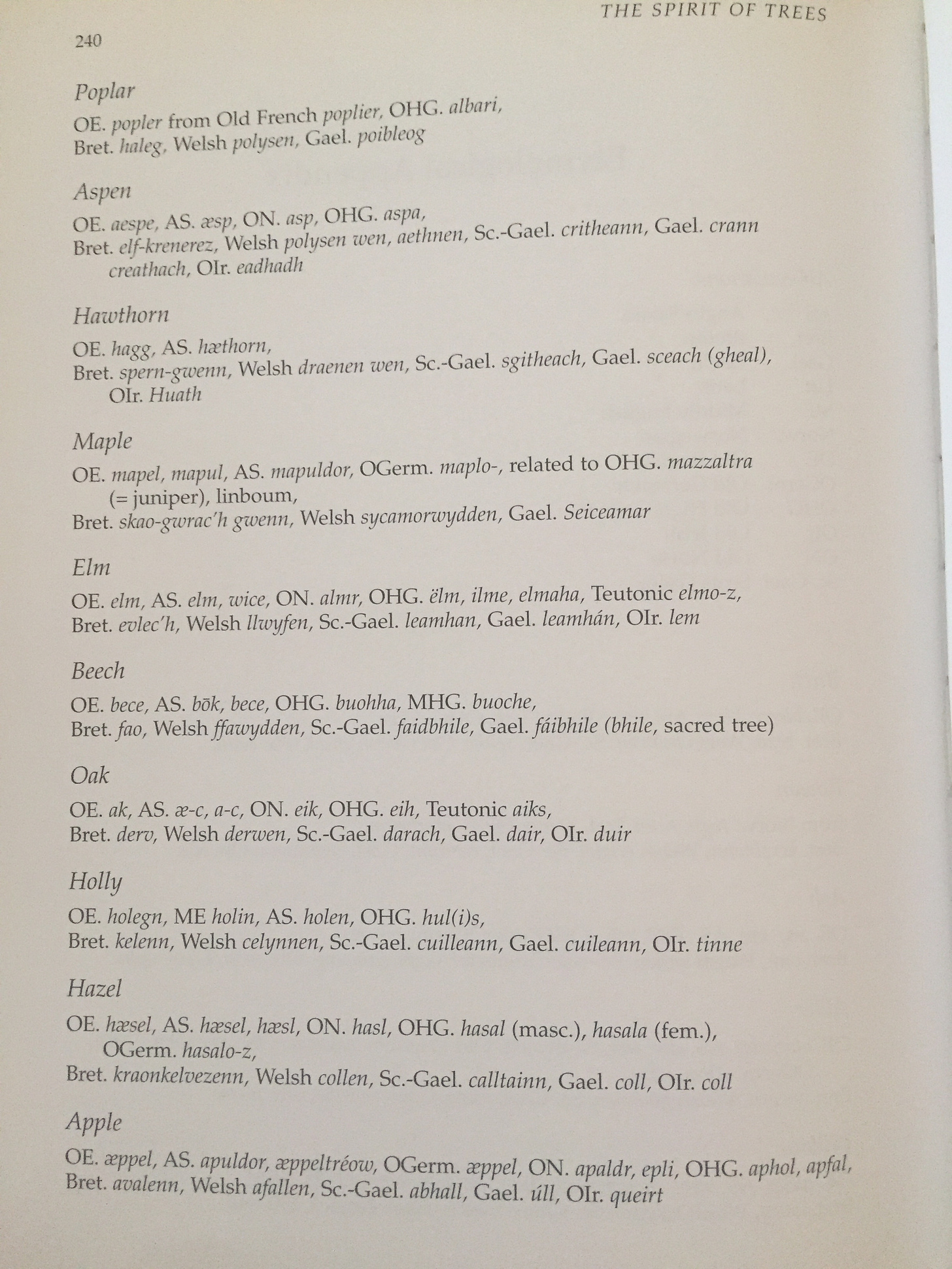
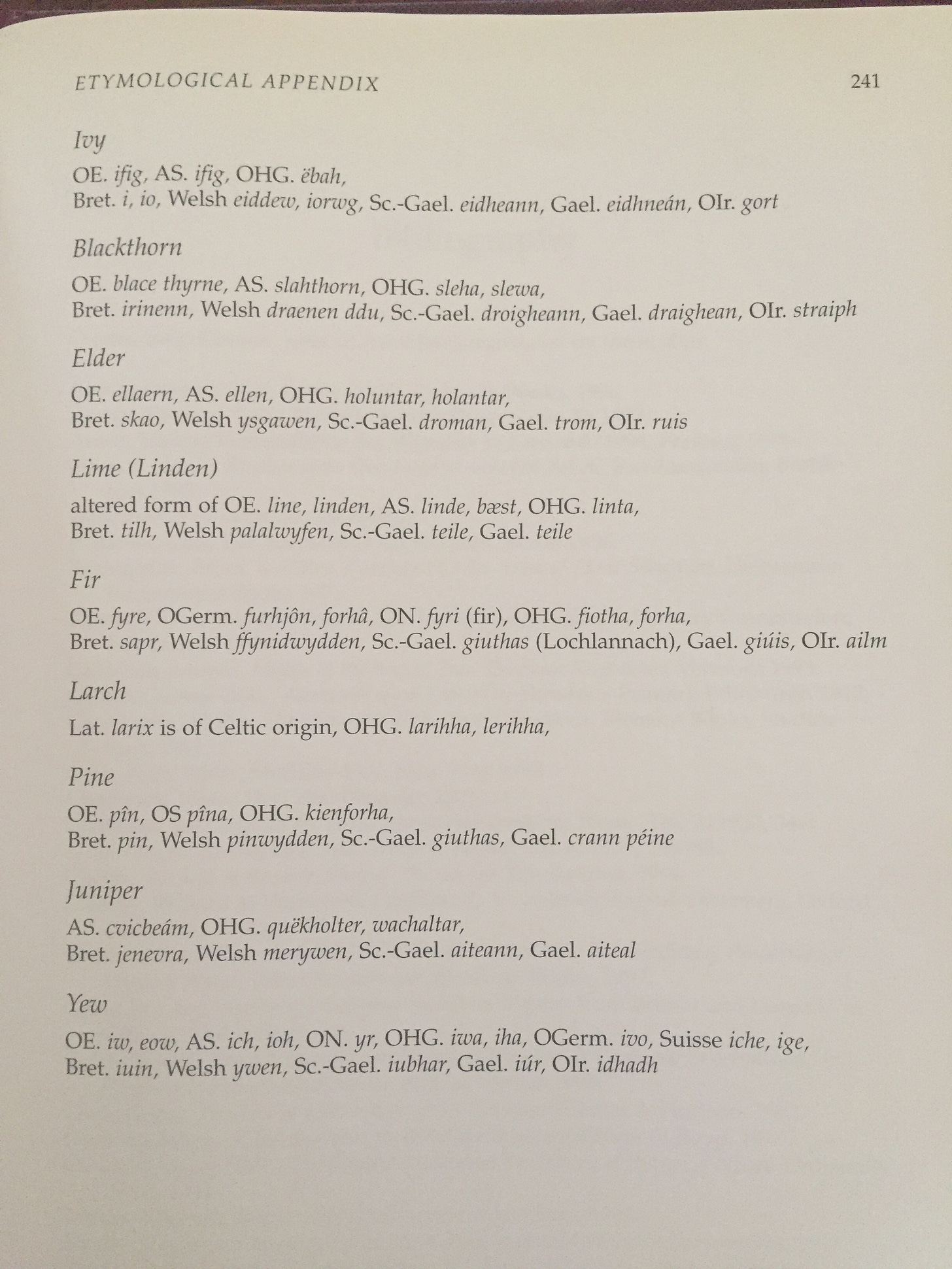


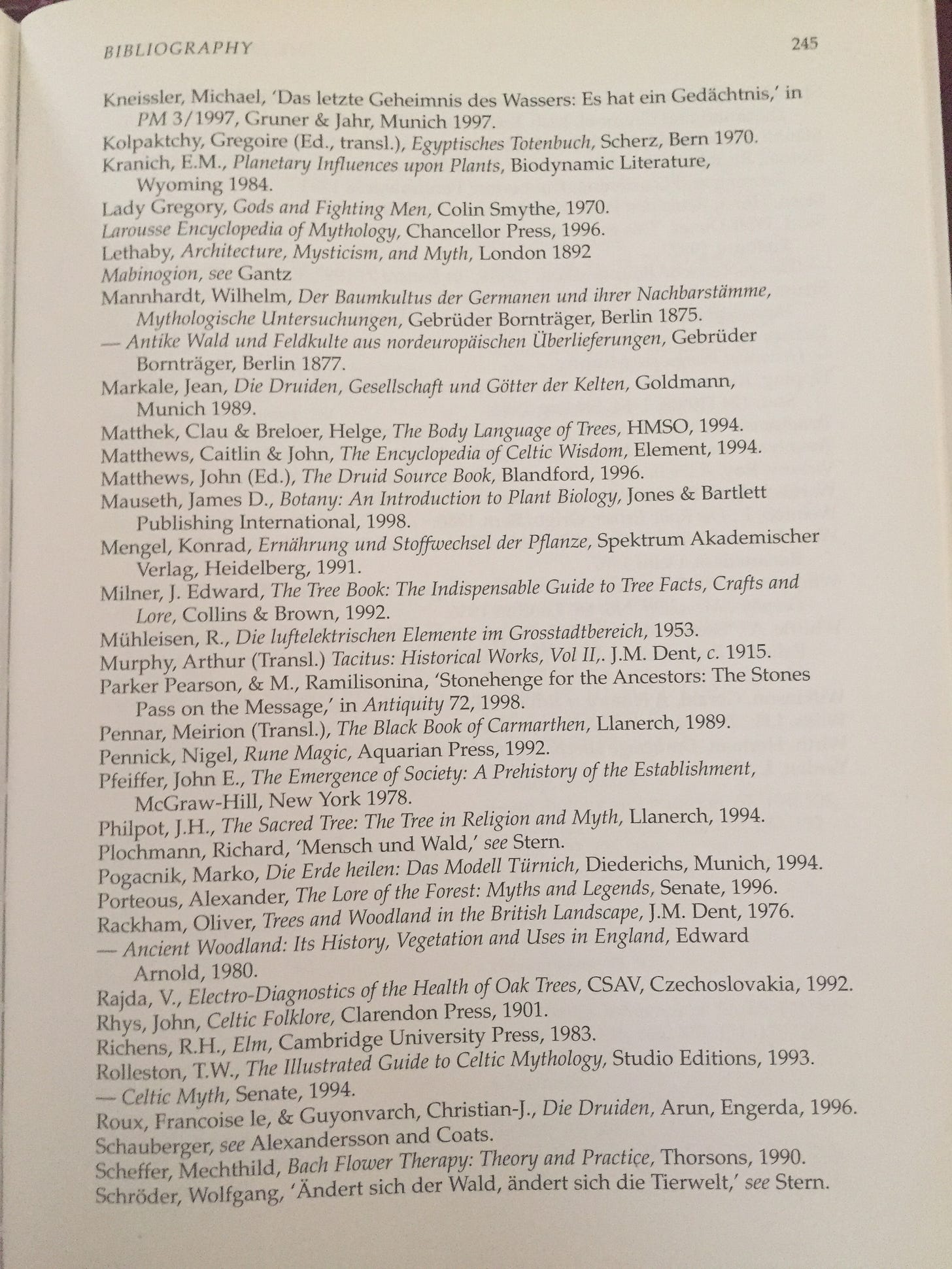
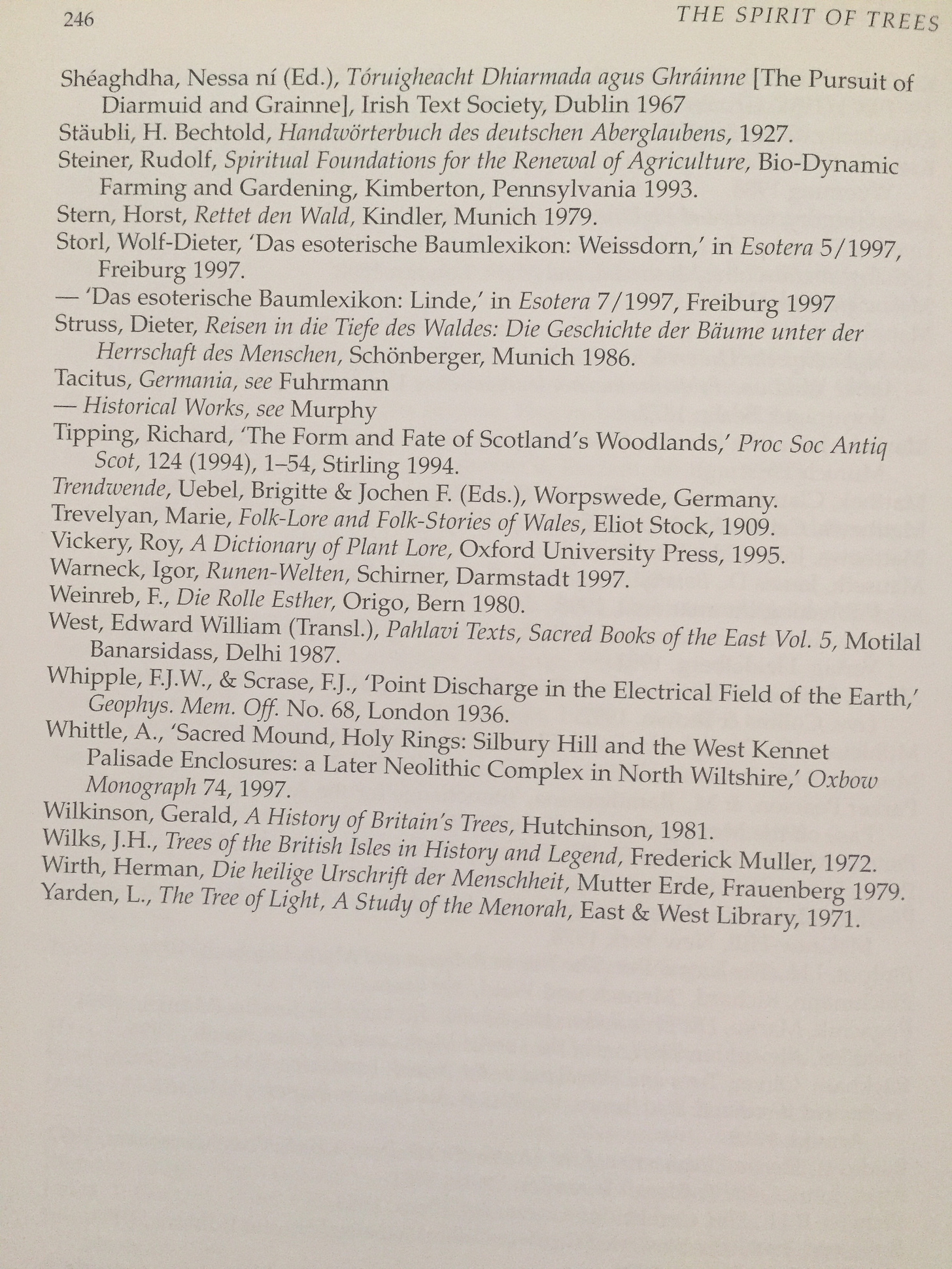
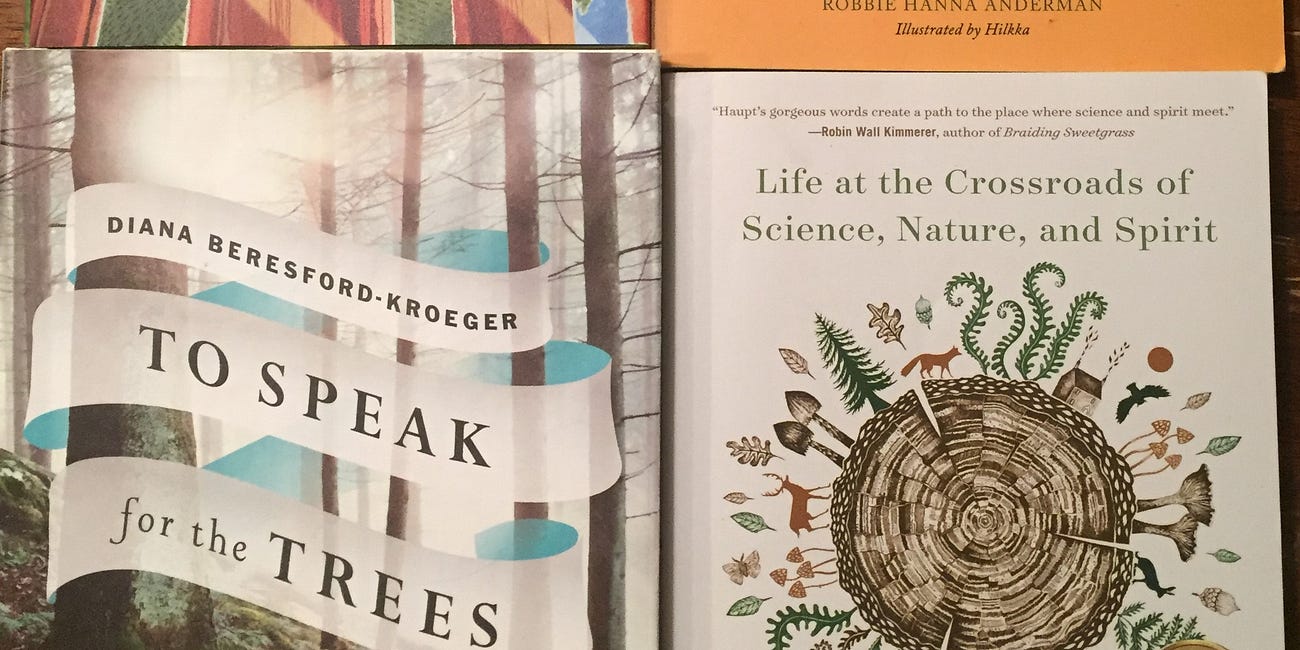
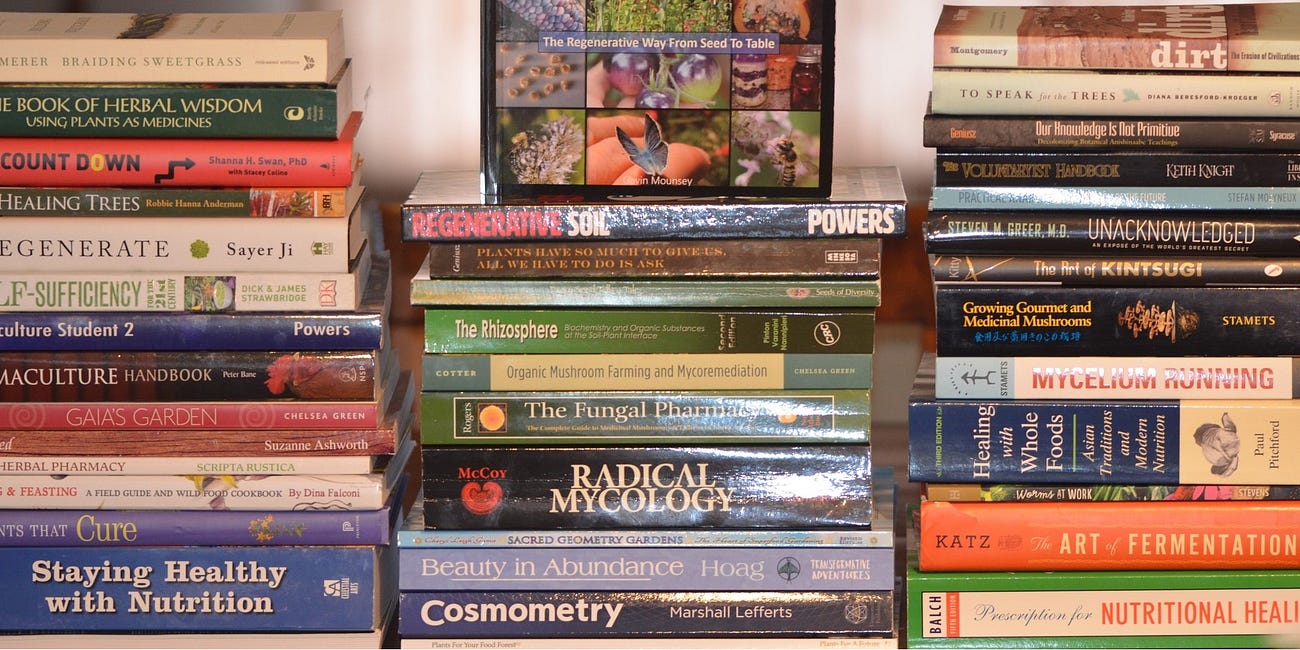
This is such a thought-provoking post, especially as I woke up this morning thinking about why people go to war, and that many people seem to think warlike behaviour is natural and inevitable for humans and animals, and yet my houseplants never fight - they just thrive! You make so many important points in this post. I will look out for this book.
holy shit dude that's the greatest book review I've ever seen. thanks. I love all that stuff, and I've lived it, changed my name to Druid on my drivers license last century, just planted a circle of 9 hazels and dug a little pond in the middle as per the old myth this winter, etc etc. books are SO fucking important, its a miracle that any of us have had the time out of wage slavery and other new fangled brainwash media to actually read one. hopefully through the preservation of wisdom and knowledge a good culture based on everything in your book review can rise once again. how to make it go viral is a tough row to hoe. people are reading all the wrong books when they do amazingly get around to reading one. there's infinite comments I could make but good point mentioning the native stewardship. I remember seeing the old maps of Jamestown Virginia from when Capt John Smith arrived and there were named Powhatan villages EVERYWHERE. it was all old growth food forest and the cavaliers noted that they could ride horseback unobstructed wherever they wanted because the understory was maintained. my family had an ancestress from there whose name translated as "she sweeps the dew off the flowers." out here in California the oak trees were owned and maintained by individual families, and I doubt the acorns were wormy like many are now due to white mans disease etc. all the info is well established and documented for those of us lucky enough to glimpse it. I grew up in NYC and as a kid I'd hang out in that big giant library uptown and I did extensive history on native Manhattan and realized at an early age how badly we fucked up. the details are endless and the way is shown. thanks again for fleshing it out so nicely. my view is that the food forest idea has to transcend backyard permaculture and take over the entire landscape like j Russell smiths Tree Crops Towards a Permanent Agriculture 1930 turn of the century photos of whole mountain ranges covered with 800 year old grafted chestnuts and olive trees etc. I don't know exactly how to accomplish this on a grand scale. I see permaculture as a word stolen from Smith and applied by folks who need to make money, engaging with other folks who might be able to pay something, to nice up the land here and there on a rather small scale, which is great, but I'm wondering how to make it much greater, relatively to the whole planet. there's lots of ideas on this and I could go on forever, but thanks again and have a great day. its melon planting time!